Intro
Hello, Eyeo. We are so honored and so excited to be speaking here. Thanks for letting us here to tell you all about Dynamicland.
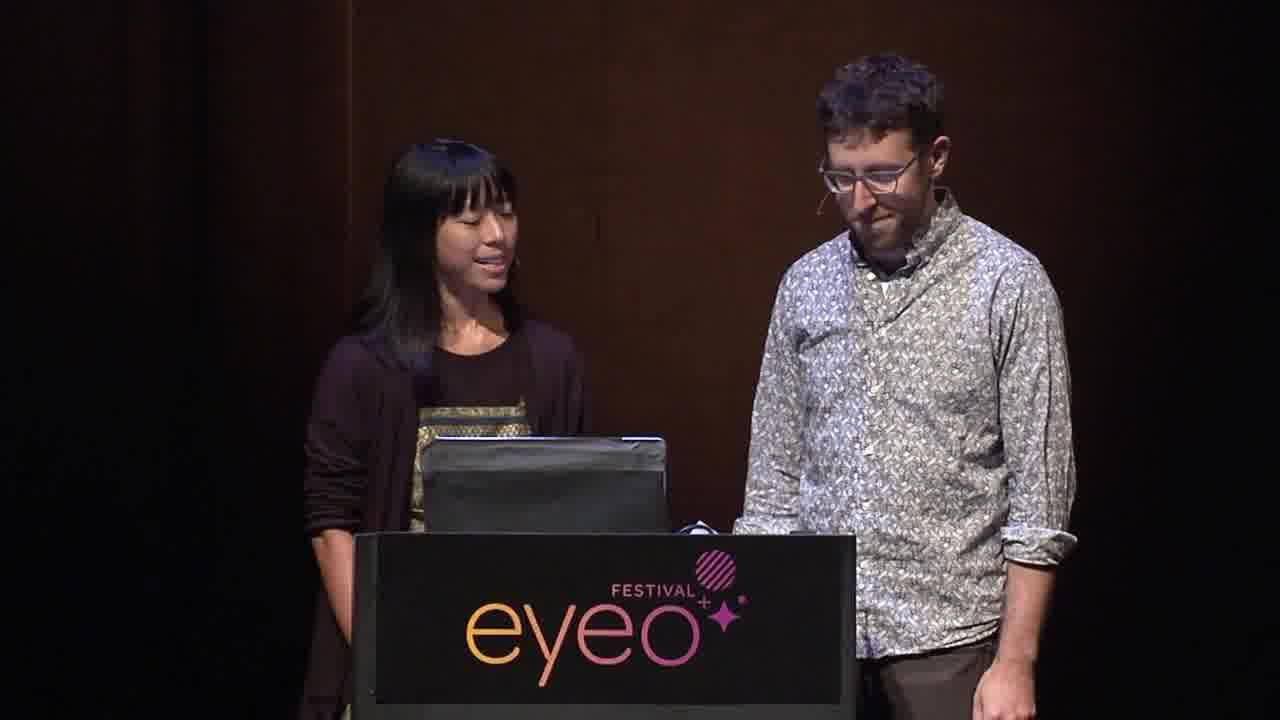
Dynamicland is the convergence of so many different ideas, different people, different possibilities. They all fit together in a really magic way.
And sometimes it can be disorienting to hear about it from a distance, because each person's experience with Dynamicland is so unique.
So I could give my perspective, my angle, Paula could give hers, but tonight we've decided to let Isaac Cohen, Dynamicland's first artist in residence, tell his story.
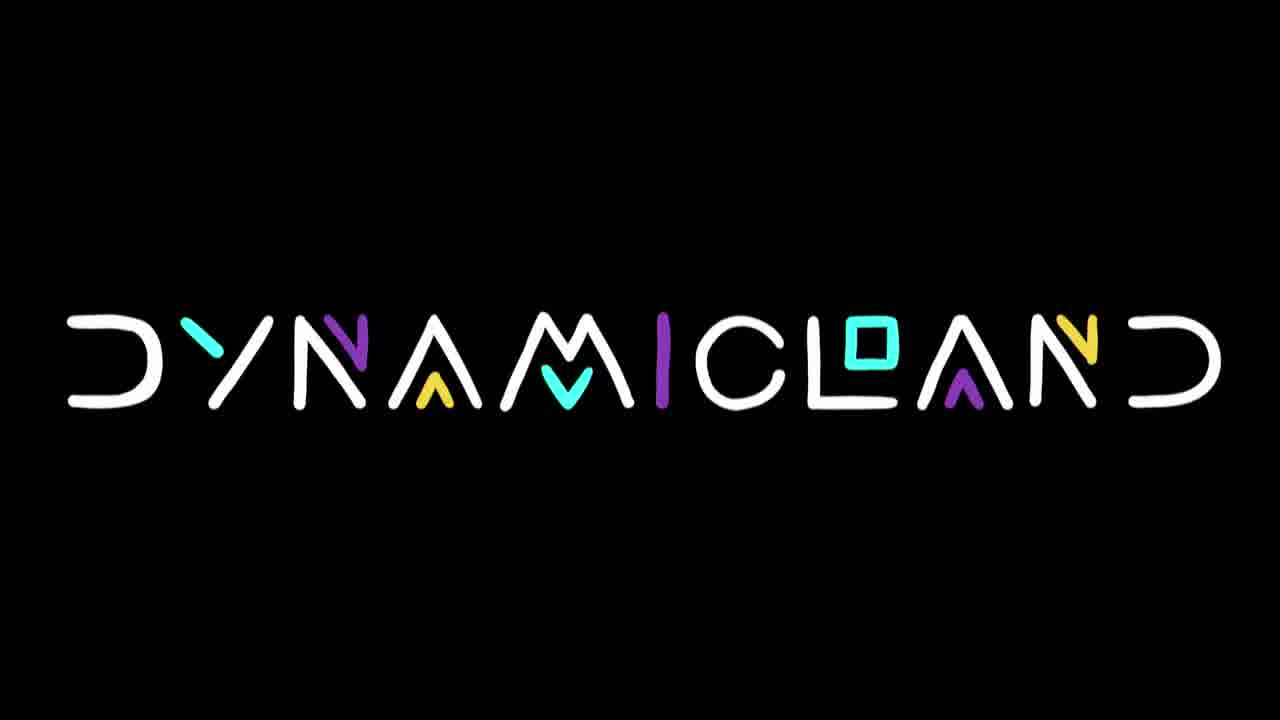
Some of you may have seen small peeks at what Dynamicland is from Twitter posts or bootleg copies of our zine. But our hope is that once you've heard Isaac's story, these puzzle pieces will fit together a little better. [1] [2]
Mission
Before we let Isaac loose, it's important for Paula and I to set the stage, and describe Dynamicland's mission in big abstract terms. Get ready, because the terms are going to be big, and they're going to be abstract, and they're going to come fast.
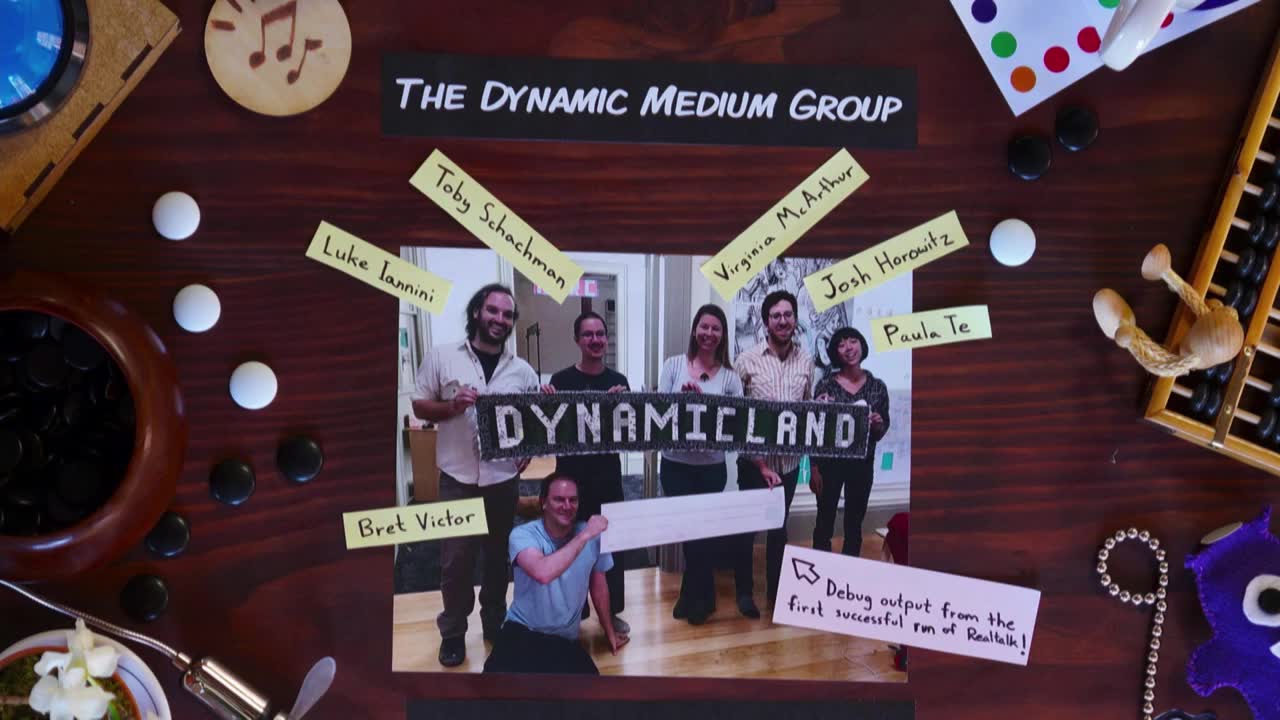
So, Josh and I are researchers at the Dynamic Medium Group, a nonprofit research lab in Oakland, California. That's us.
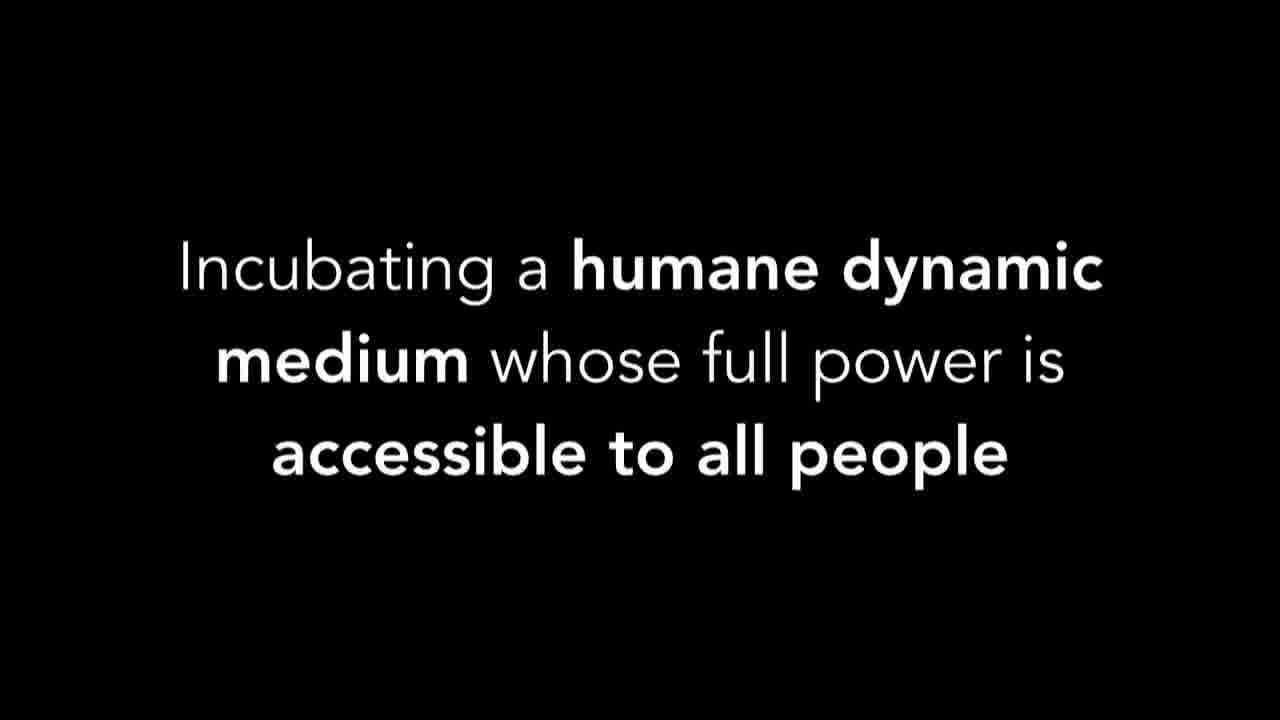
Our group's mission is to incubate a humane, dynamic medium whose full power is accessible to all people.
This is a long-term research project. We're trying to think 15, 20, 50 years down the line. The project we're presenting today is an experimental step towards this larger mission, not an end in itself.
So, first of all, this mission statement, what does this mean exactly? Let's try to break it down.
First, what do we mean when we say incubate a dynamic medium?
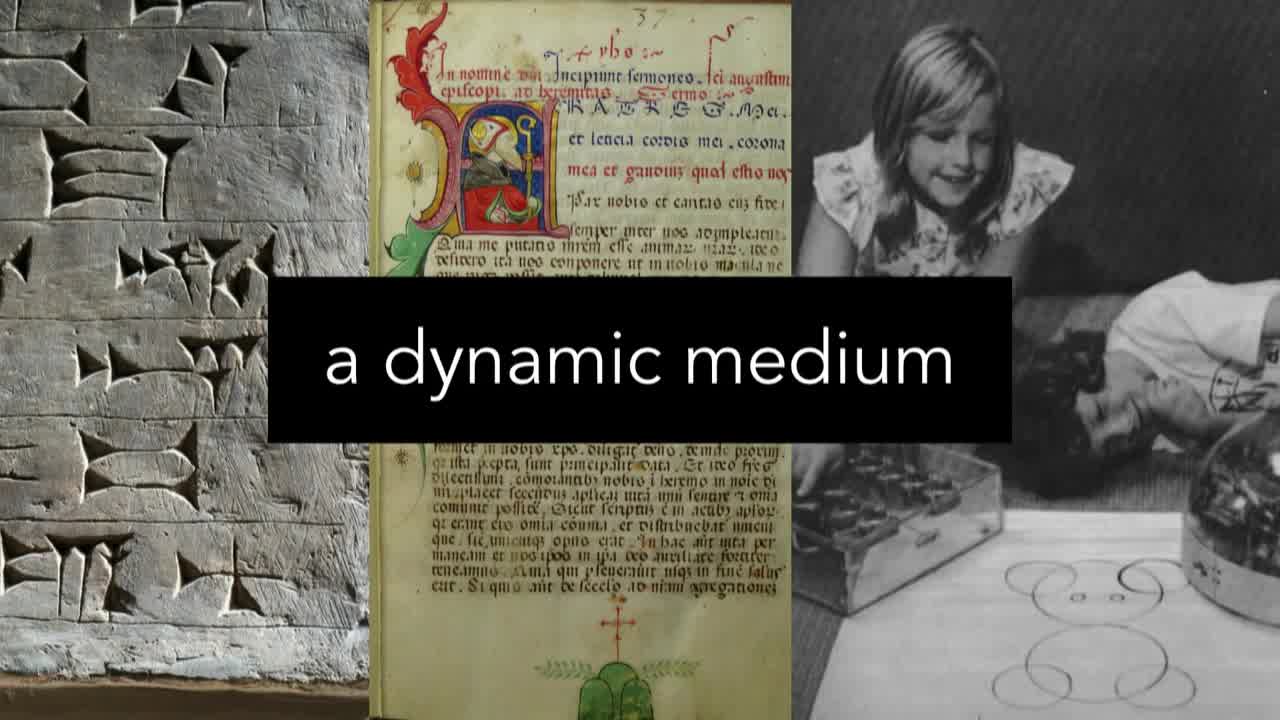
Well, what it means is that we want to find a way to get computing to occupy a role in society similar to the role that writing plays today, as a medium for expression, for communication, and for understanding the world around us.
This is an idea we've inherited from thinkers like Seymour Papert and Alan Kay. There's so much more that we could say about that, but there's another part of the mission equation that's just as important. [1] [2]
And that other part is, what does it mean for this medium to be humane and universally accessible?
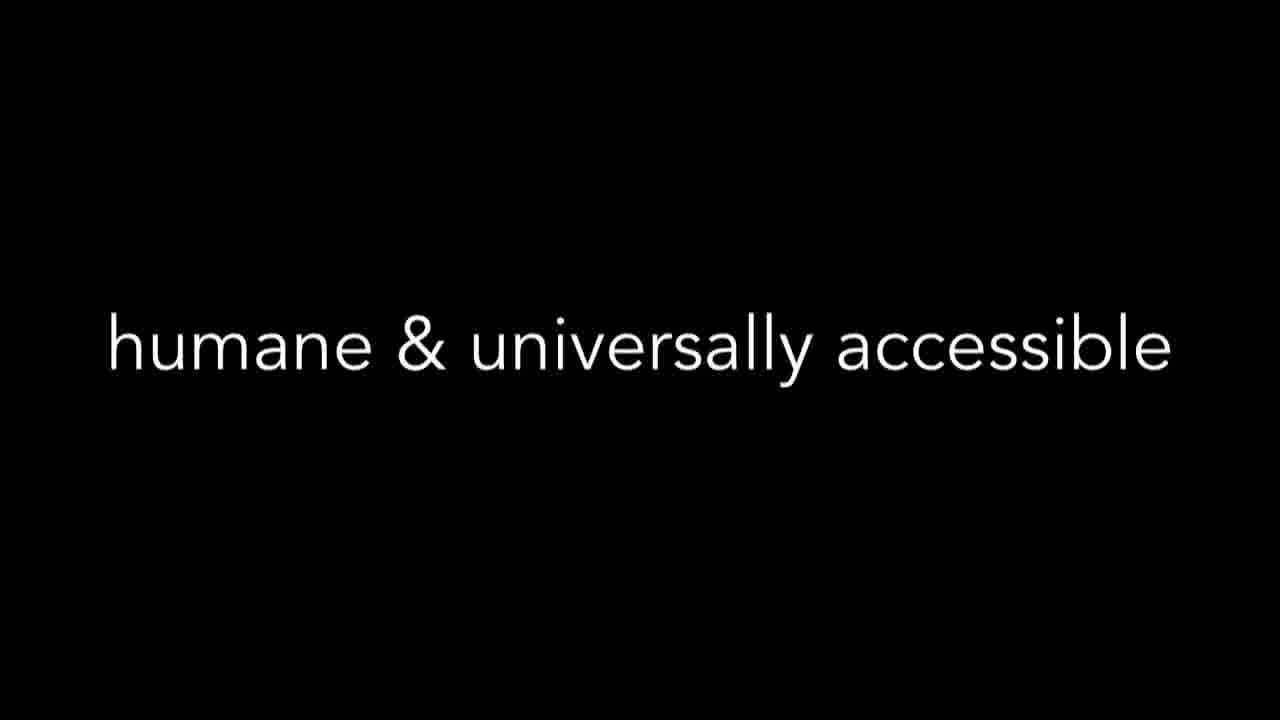
Again, there's a lot here, and we're happy to unpack this all with you over drinks later tonight. But we can summarize it into three things.
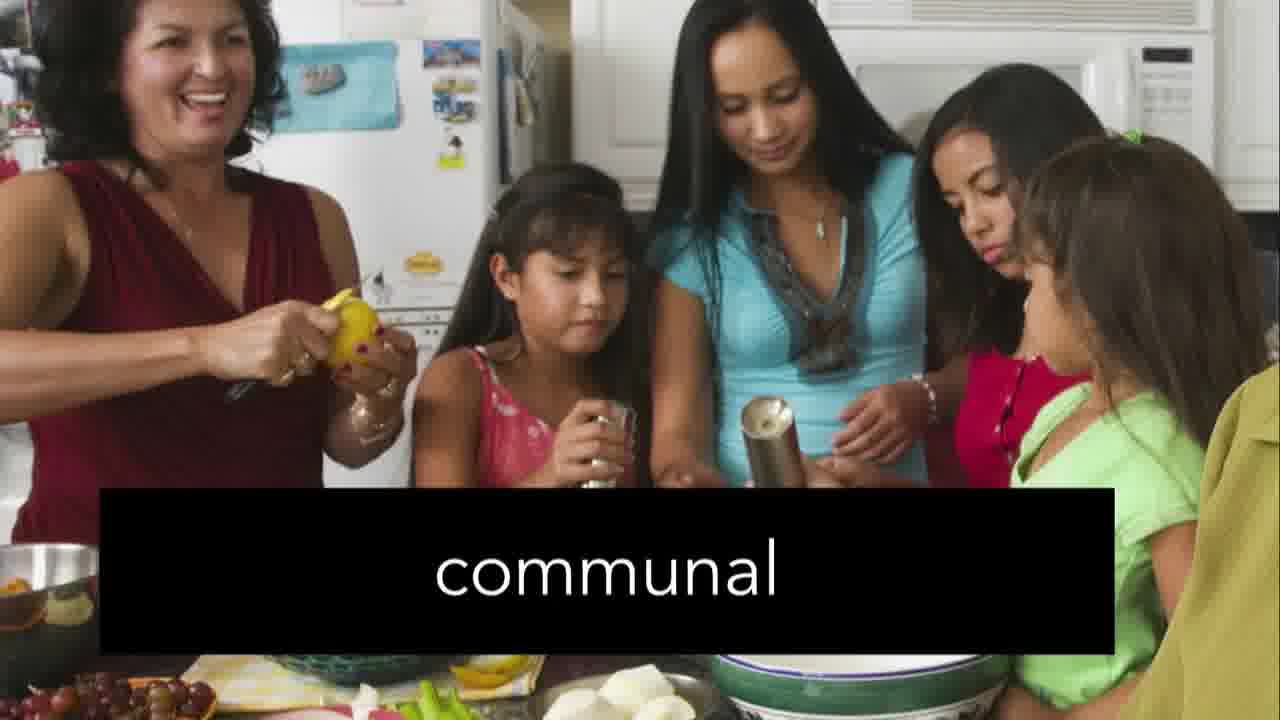
It means communal, that it connects people instead of isolating them.
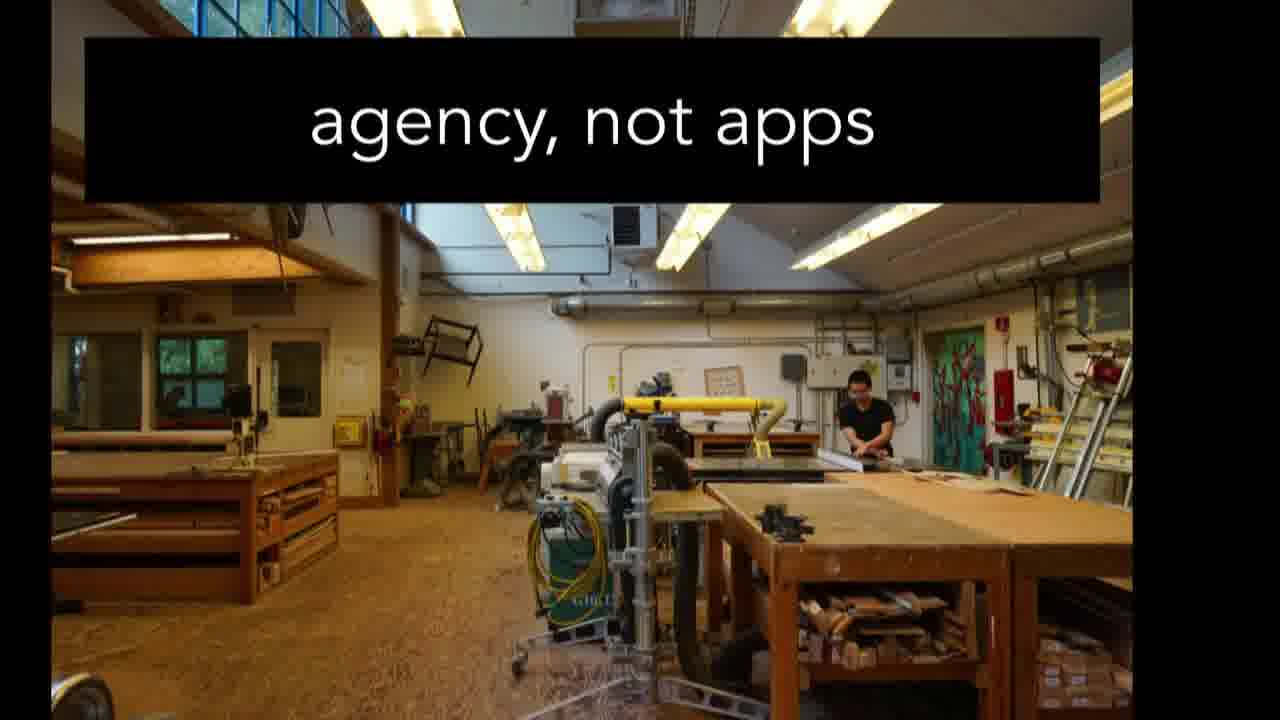
It means agency, it empowers people instead of controlling them.
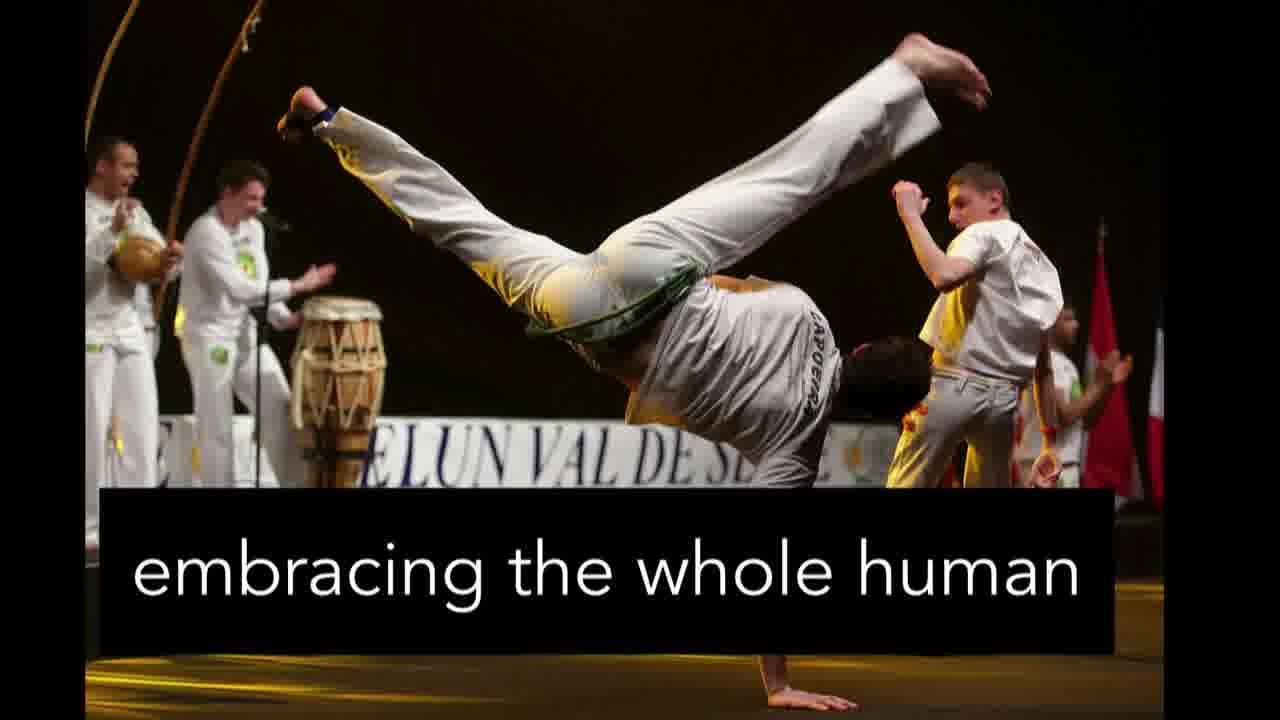
And it means embracing the amazing variety of human abilities, instead of the narrow channels that conventional computation privileges.
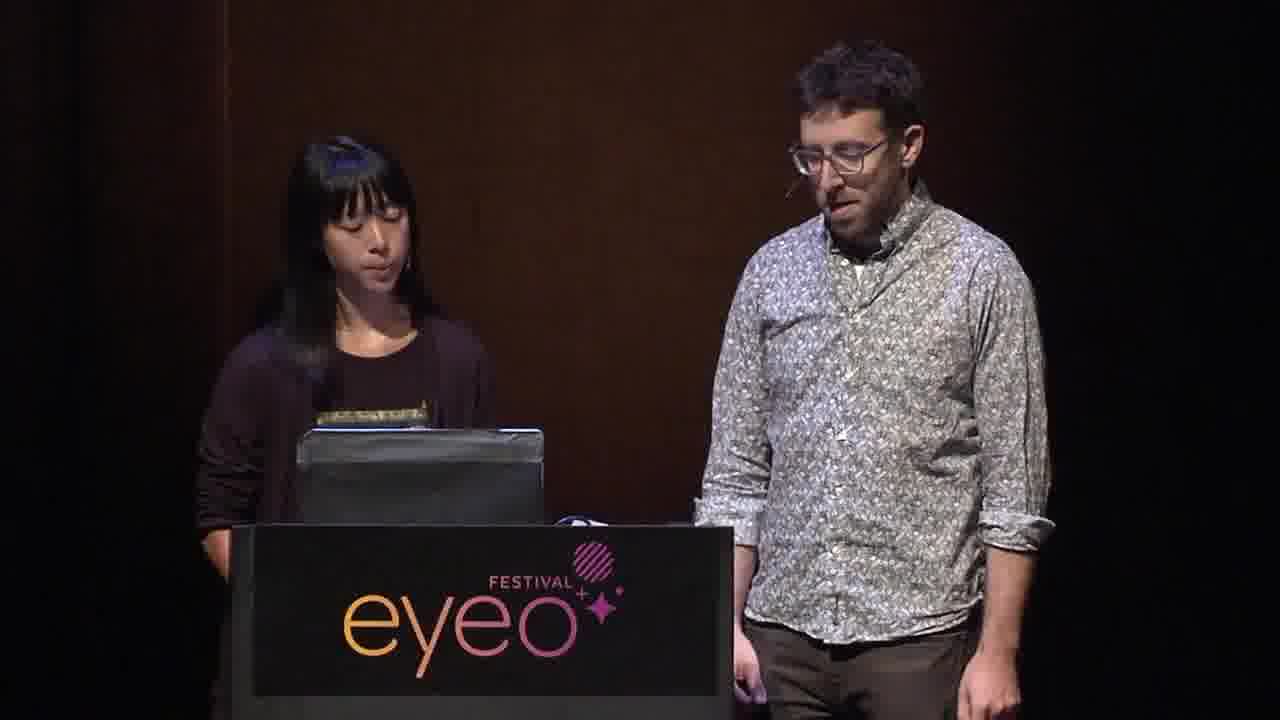
We've seen hints of this humane dynamic medium in the last 50 years of interactive computing. But when we look at what computers have become in the world today, we don't see these values reflected. We see something very different.
So we ask, instead of a technology that is single player by default, what if computation were collaborative and communal, about humans actually interacting with one another?
What if the building blocks of computation, instead of being hidden away, were visible by default and allowed for creation, not just consumption?
What if instead of making us poke at devices with our fingertips all day long, computers embraced all modes of human interaction and being?
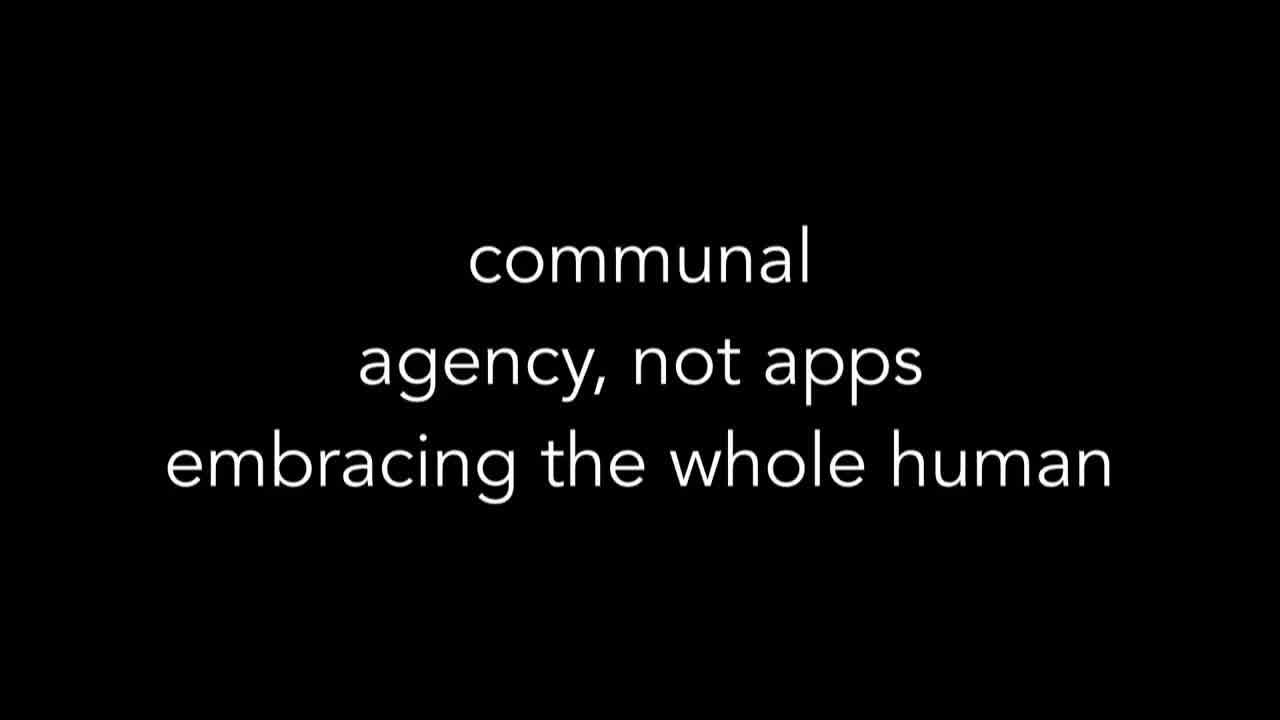
Place
We realized early in our process that to achieve these things, the technology that we were building couldn't be a product. It had to be a place, a place where people could come together and create together.
Someday this place might be a school, a workplace, a science lab, a library, or even a public square.
For now, it's Dynamicland.
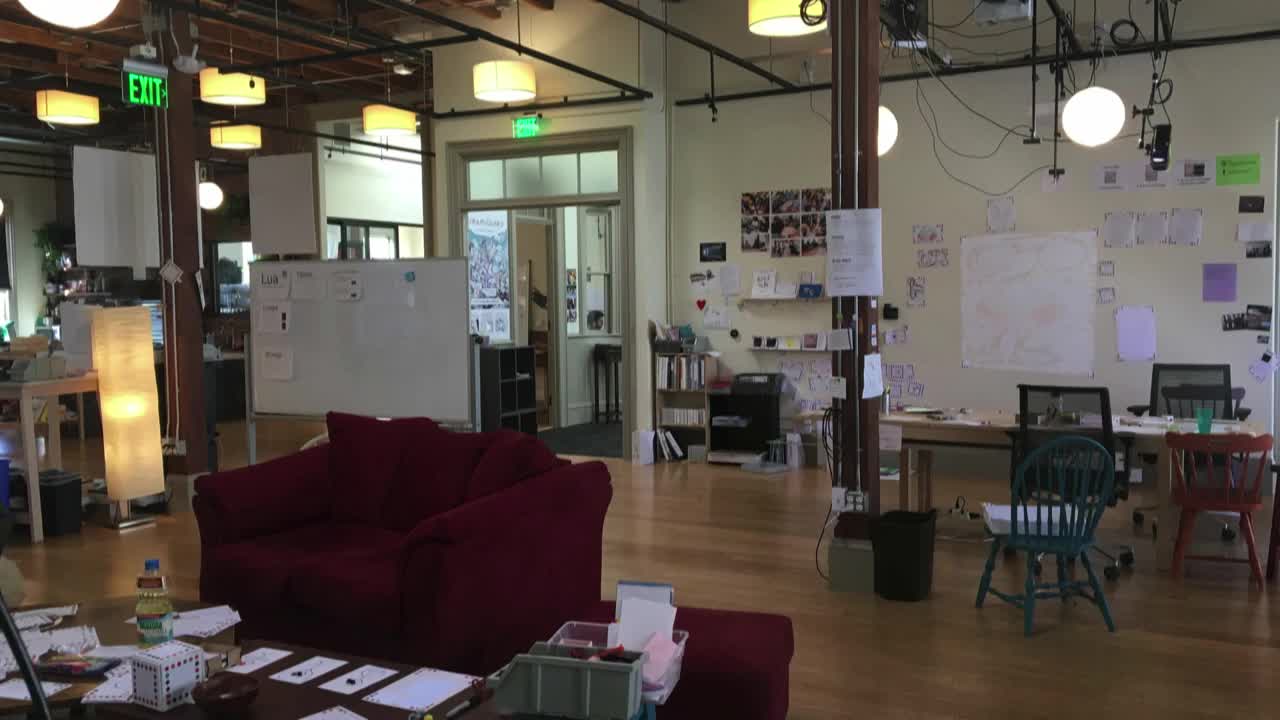
A lovely sunlit space on the second floor of an old Victorian in Oakland, California.
And Dynamicland is not just a place for our research team. Dynamicland is a prototype community space, created so we could explore these ideas together with a community.
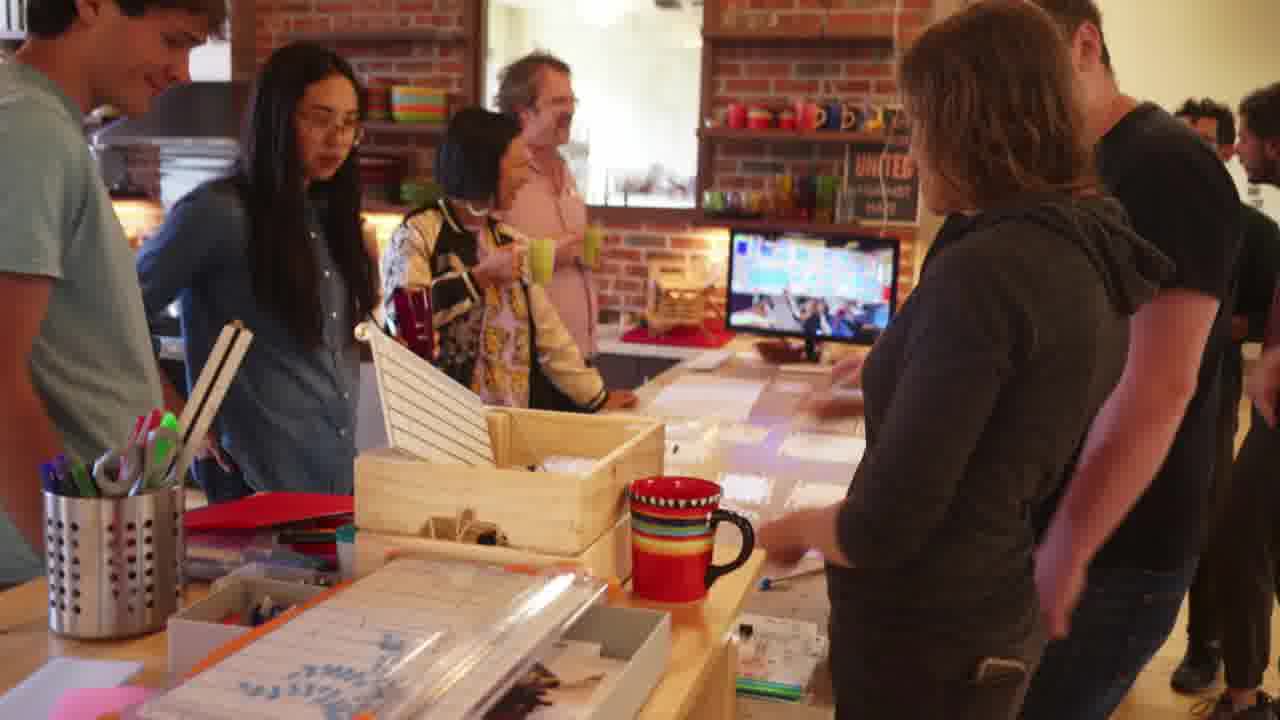
Why community? Well, you see, Josh and I and the six staff at Dynamicland, we recognize that we carry only a limited set of perspectives and experiences of the world.
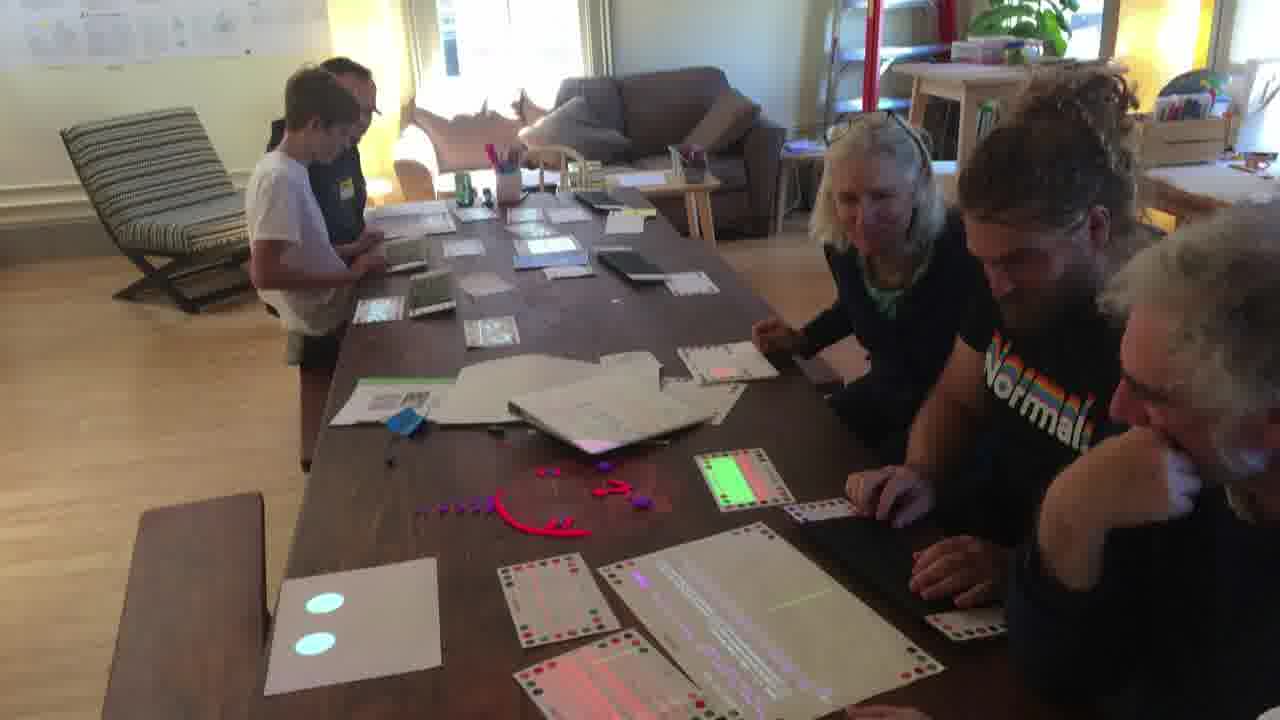
If we are actually to incubate a medium accessible to all people, we need to involve others to design and grow the future of computation together.
In the last nine months, we've watched this idea of a community become a real thing.
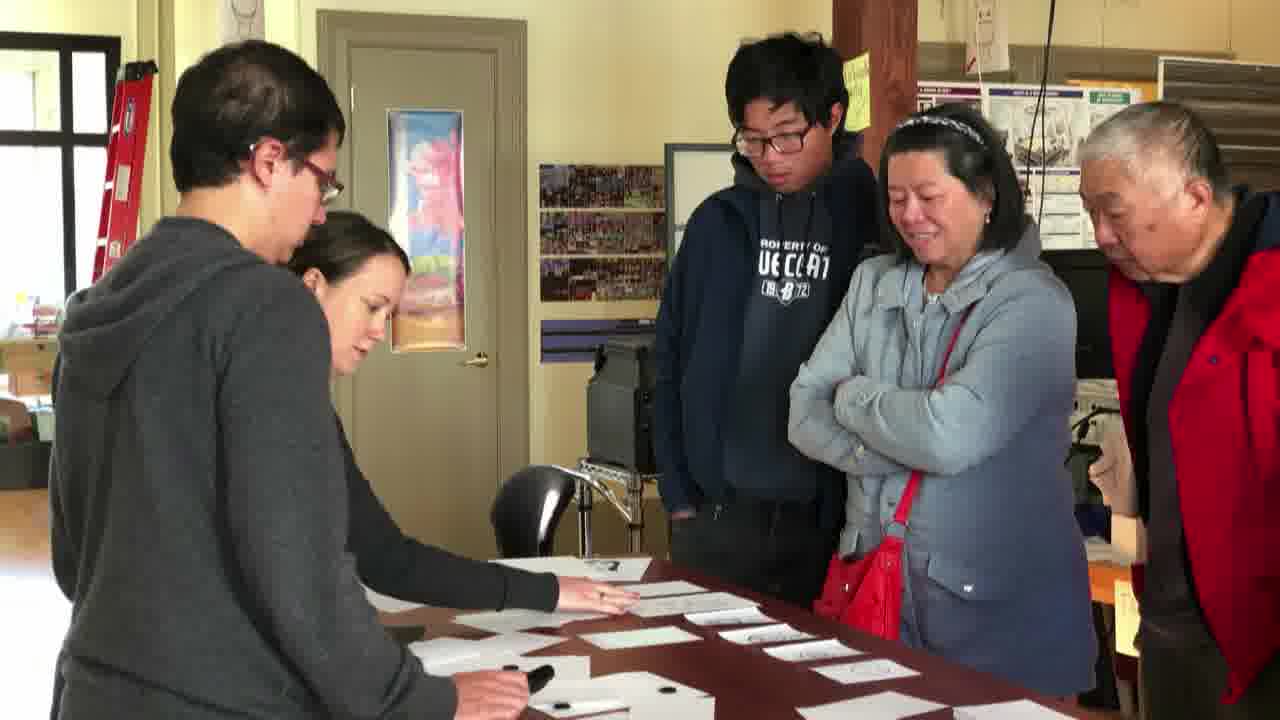
Dynamicland is a living, growing community with volunteers and friends visiting weekly. Through the support and care and playful joy of the community, Dynamicland has become a uniquely amazing place where wonderful things happen every day.
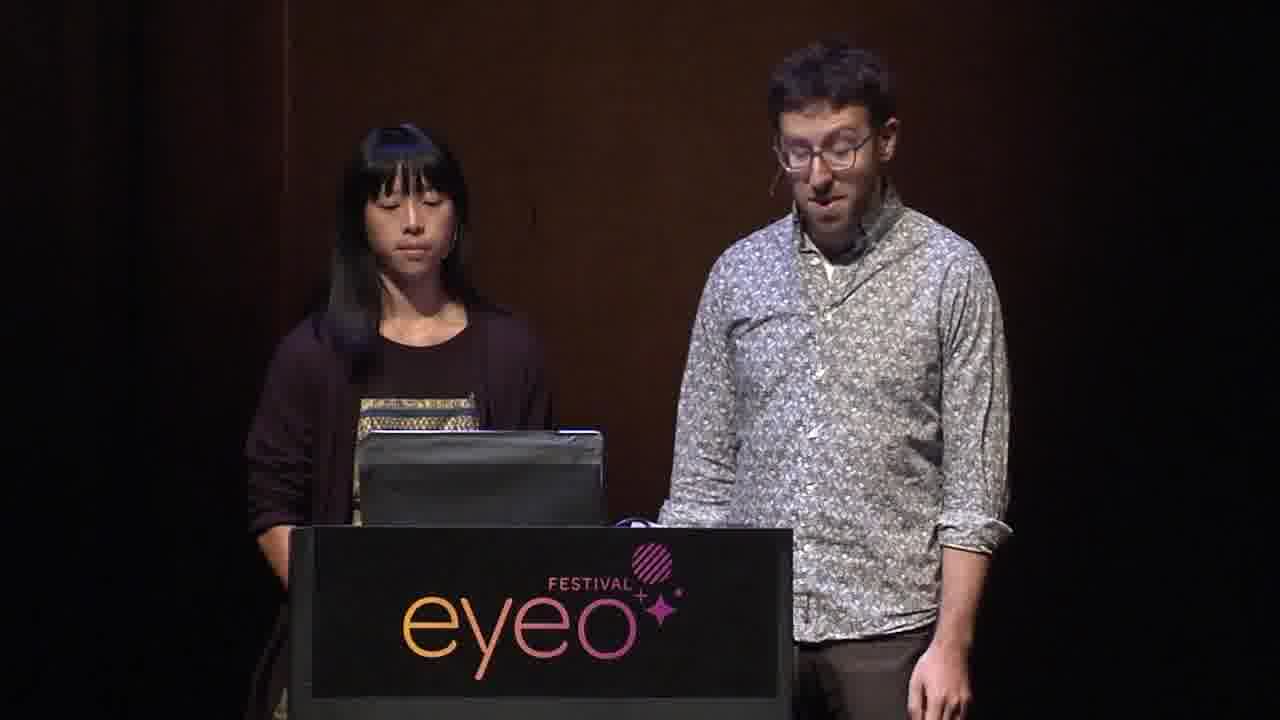
Isaac Cohen was one of the first people to join that community and to build it with us. He's an artist in residence, a volunteer, and a true bonafide bud.
He's been a tremendous co-creator of what Dynamicland has become, and at this point in the Dynamicland story, we can't think of any better person to give you a first glimpse of Dynamicland and to tell you what it means to him.
But, and you're going to hear this a lot, there's far more to say about Dynamicland than could fit in any 45-minute talk, so please connect with us afterwards.
We're here at Eyeo because we want to share our work and we want to get to know this amazing community, so please share with us your questions, ideas, ingenious contemplations, all.
So with that, we give you Isaac Cohen.
My third place
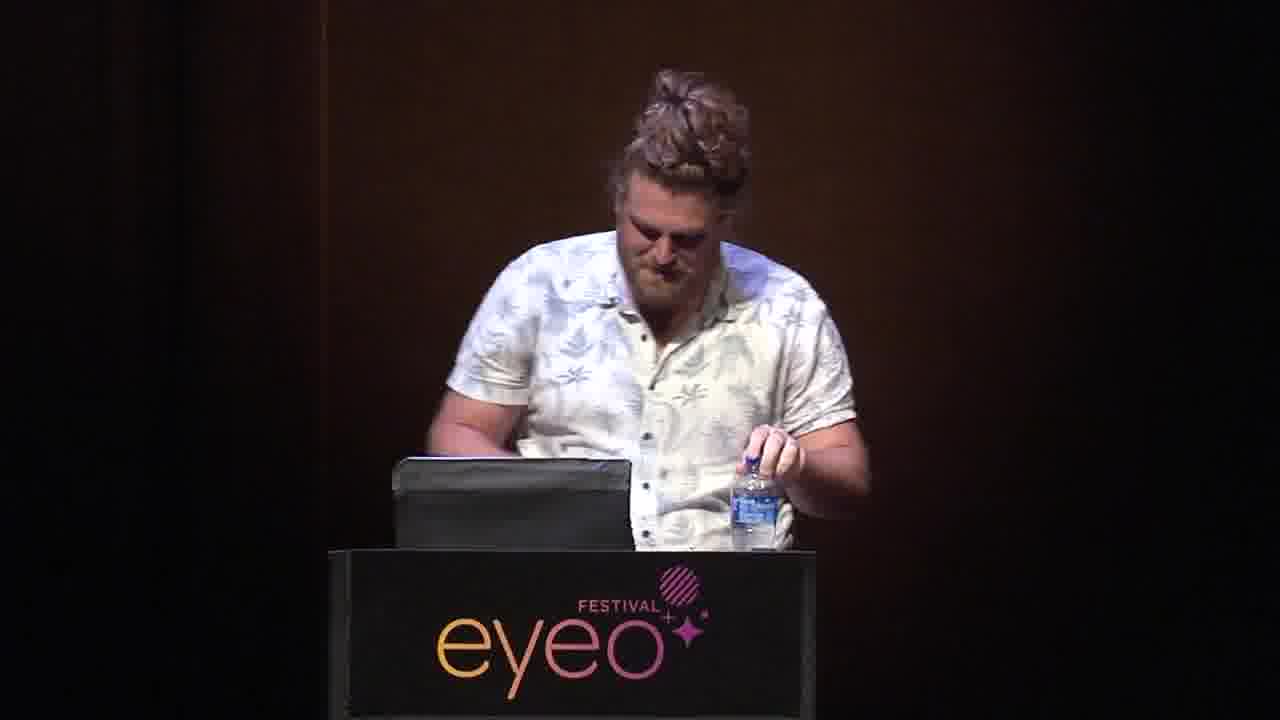
As they mentioned, I'm Isaac. I'm a community member at Dynamicland and I've been hanging out in the space, making weird art, teaching, giving tours, and just having a great time.
As they also mentioned, Dynamicland is a space that is dedicating to incubating a humane dynamic medium whose full power is accessible to all people.
However, they forgot to mention how excited/terrified I was when they asked me to give this talk.
See, it's easy enough to describe the facts of the space, that it's in Oakland, to talk about the projectors in the ceilings, the cameras that track the dots, giving the page each unique ID, running the code that's on that page, making it so everything is illuminated.
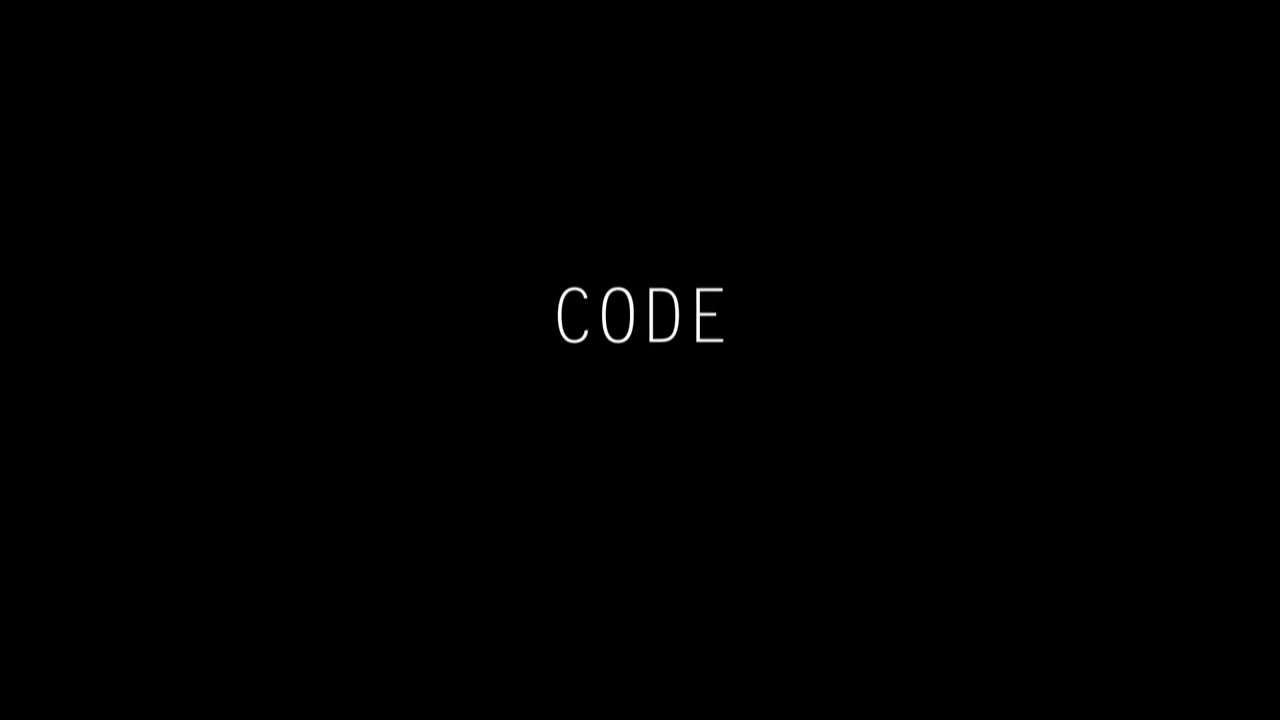
But trying to describe the essence of the space, the strange combinatorial emergence, the way that it bends and breaks your mind, is a different beast entirely.
Basically, they got the easy job.
And I'm just a volunteer at Dynamicland. They don't pay me, but even if they could, I wouldn't accept it.
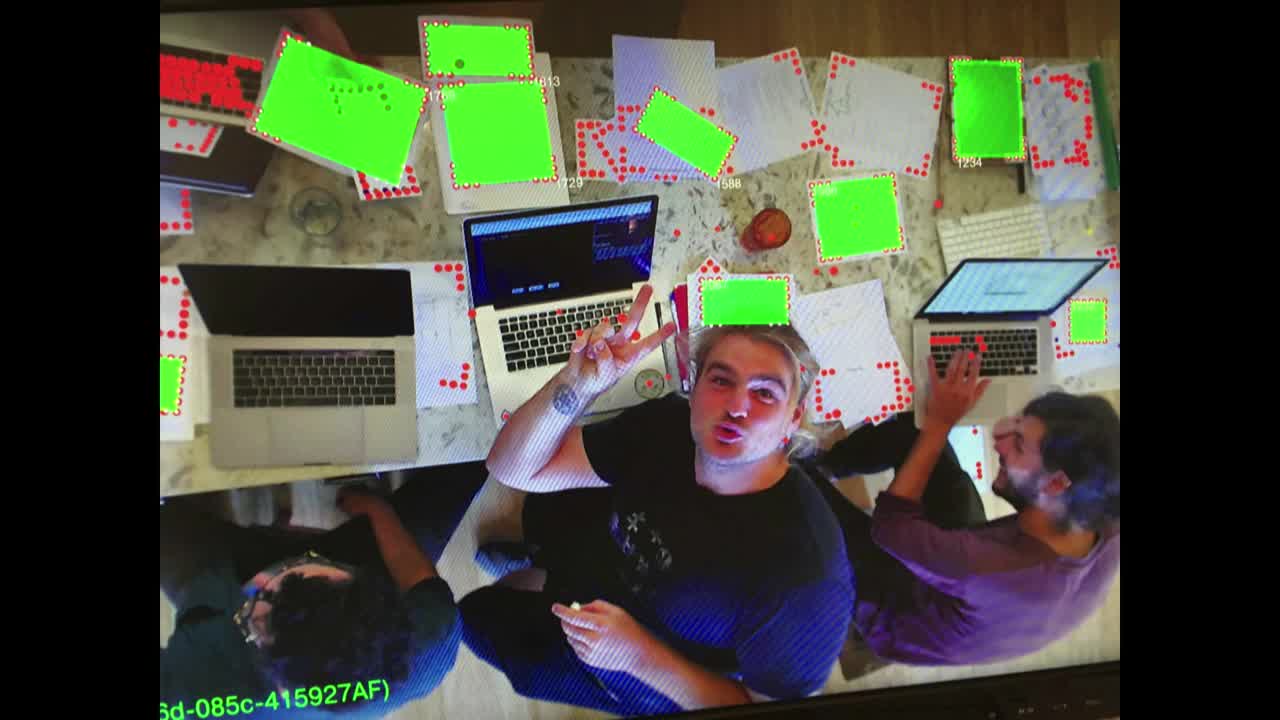
I go there every day, not because it's my 9-to-5, but because it's my community. It's where I play. It's how I engage in hobbies and socialization. It's my third place.
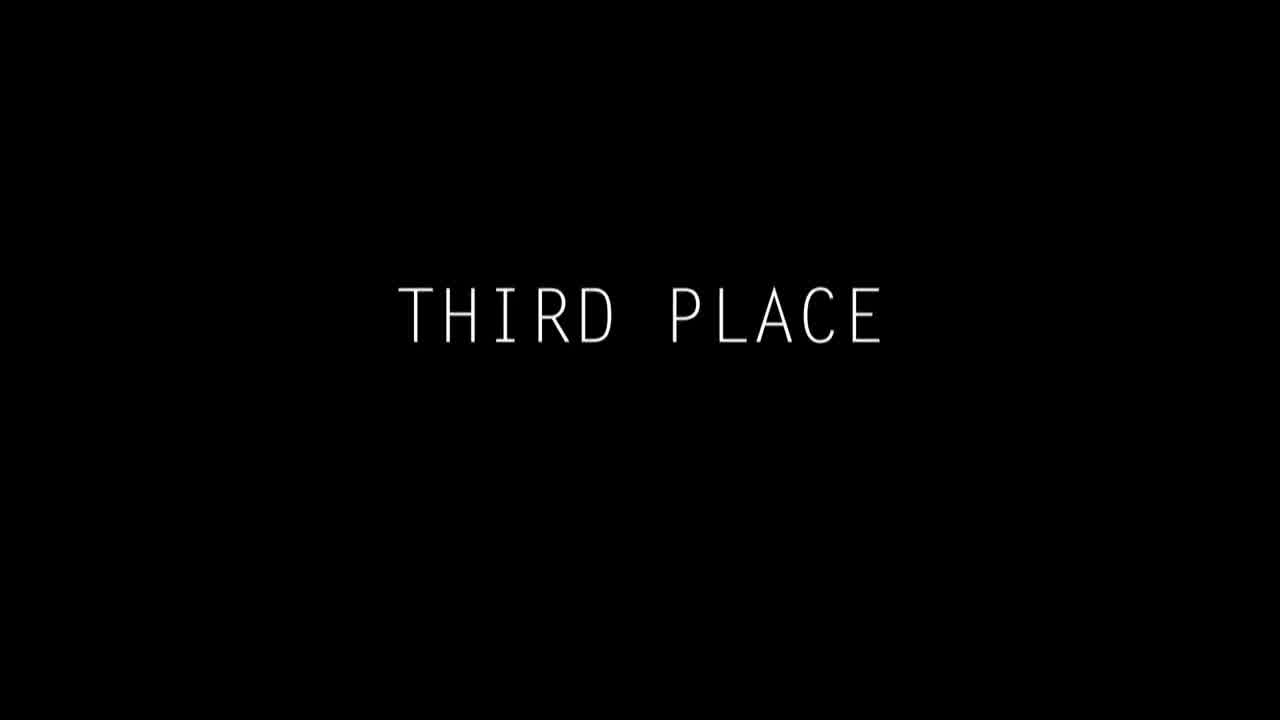
My physical third place. It's moving, breathing, and alive. It's changing every day.
Already, since I've left for this trip, I've been seeing video after video of new creations at Dynamicland, like this one, "Rain This Color". [more]
It rains on any page you point it at, and you can pick a color by pointing an object in that little circle.
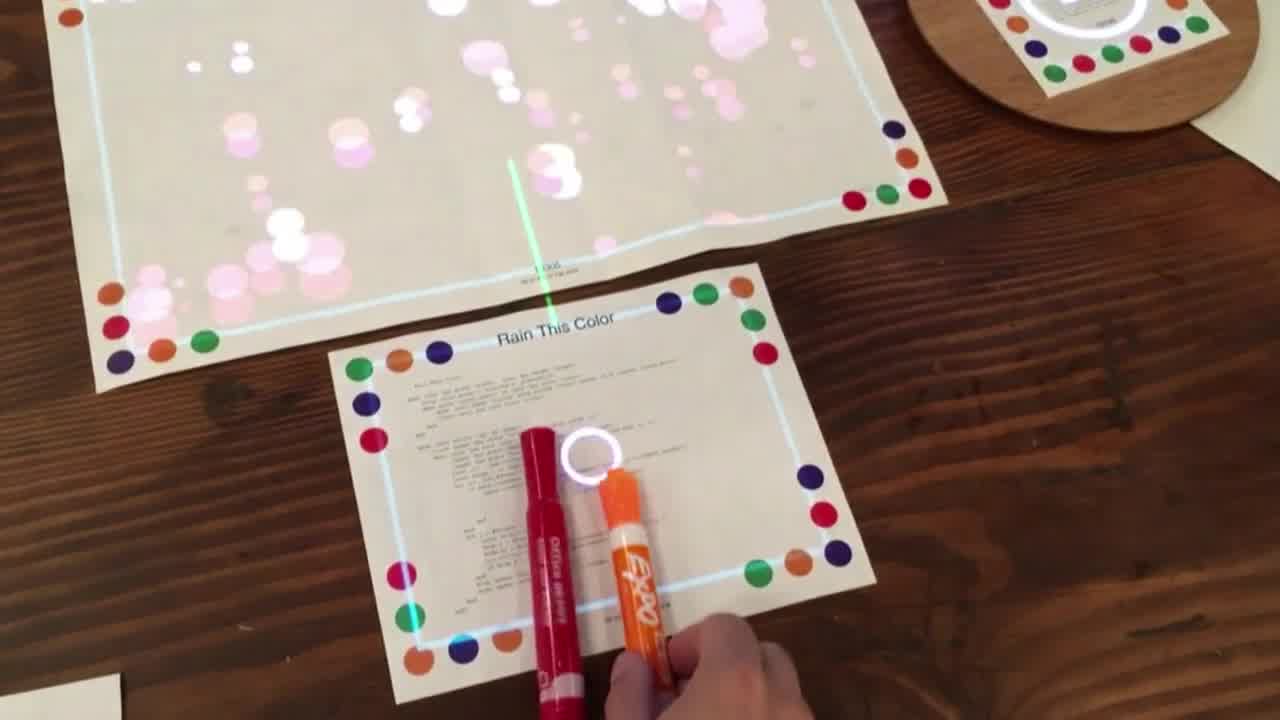
I've only been gone a week, but already there are more new creations than I can keep track of.
The problem with describing such a morphing, living space is that it's totally impossible. It feels like something that's more suited to being explained by a conversation, a dialogue, rather than the one monologue that you're hearing right now.
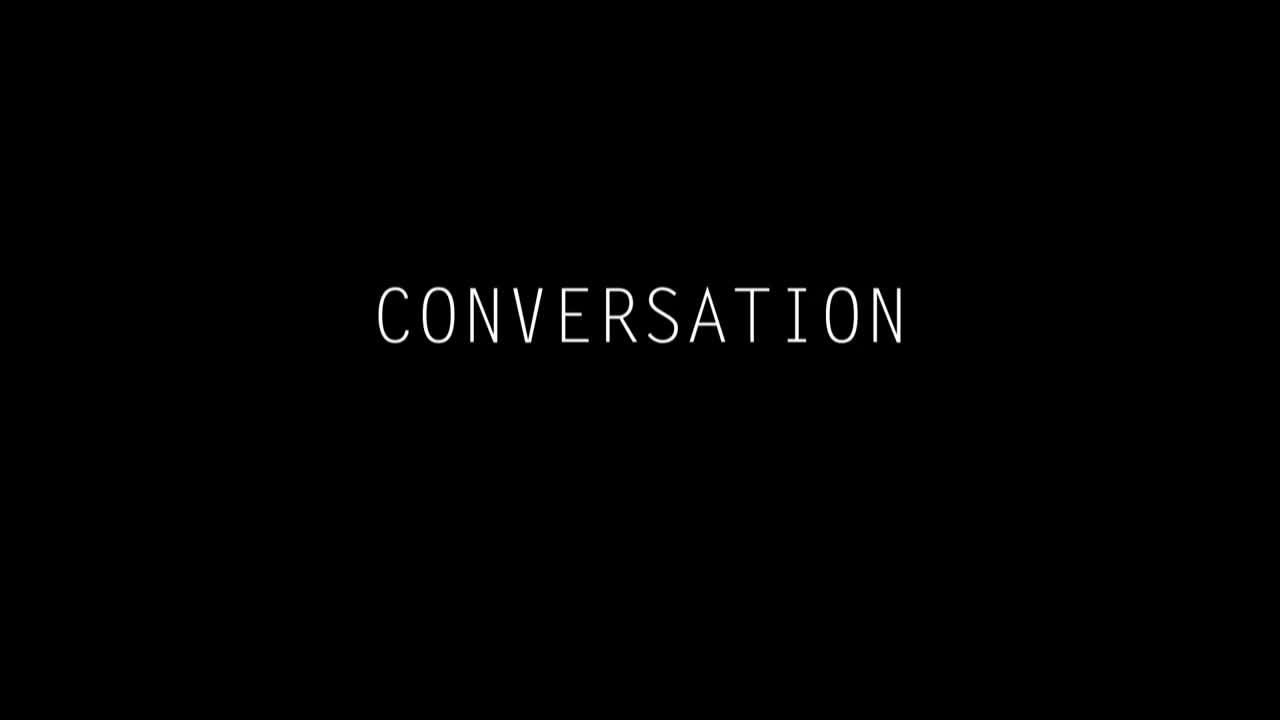
That being said, I hope that this talk piques your interest enough to come and converse with us later. As Paula and Josh said, we are all super-excited to have conversations about what Dynamicland is, what it isn't, and just hang out and chat, especially after this talk, because we can finally relax.
Journey
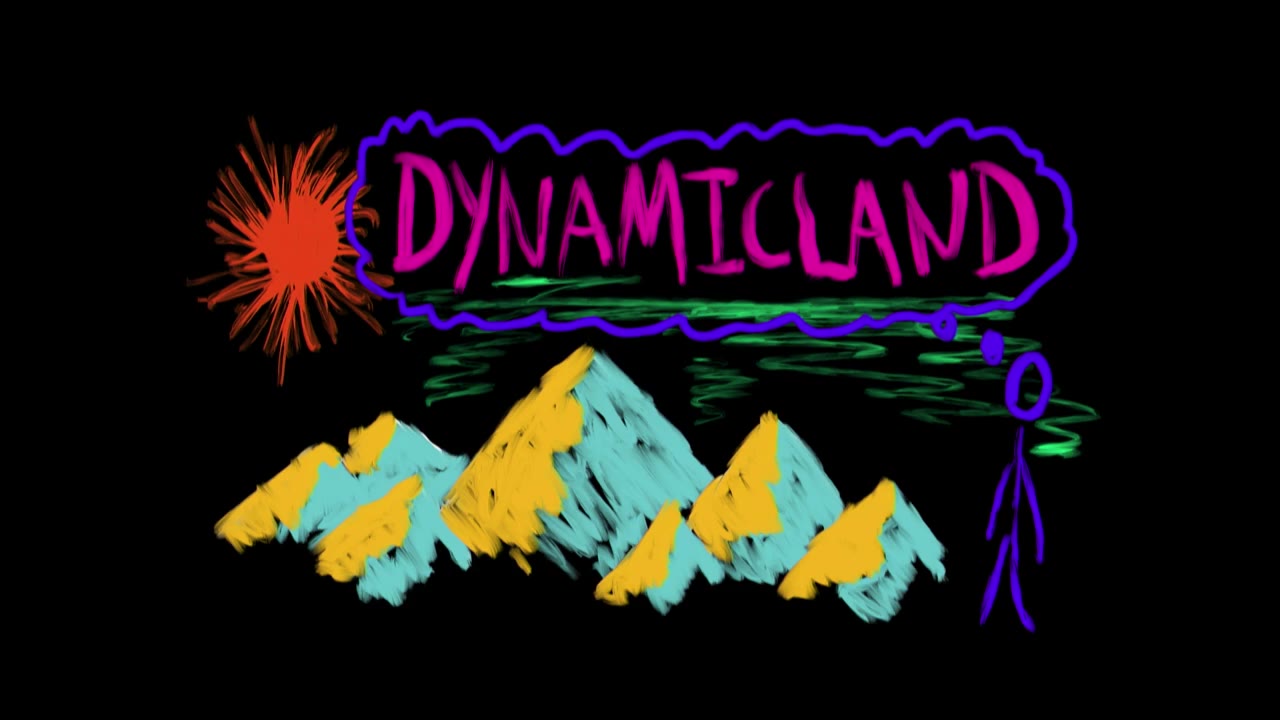
Because Dynamicland feels too big for me to describe in its entirety, I feel like the only thing I can do is tell you about my perspective of the space. And it's such a small part of the journey of Dynamicland.
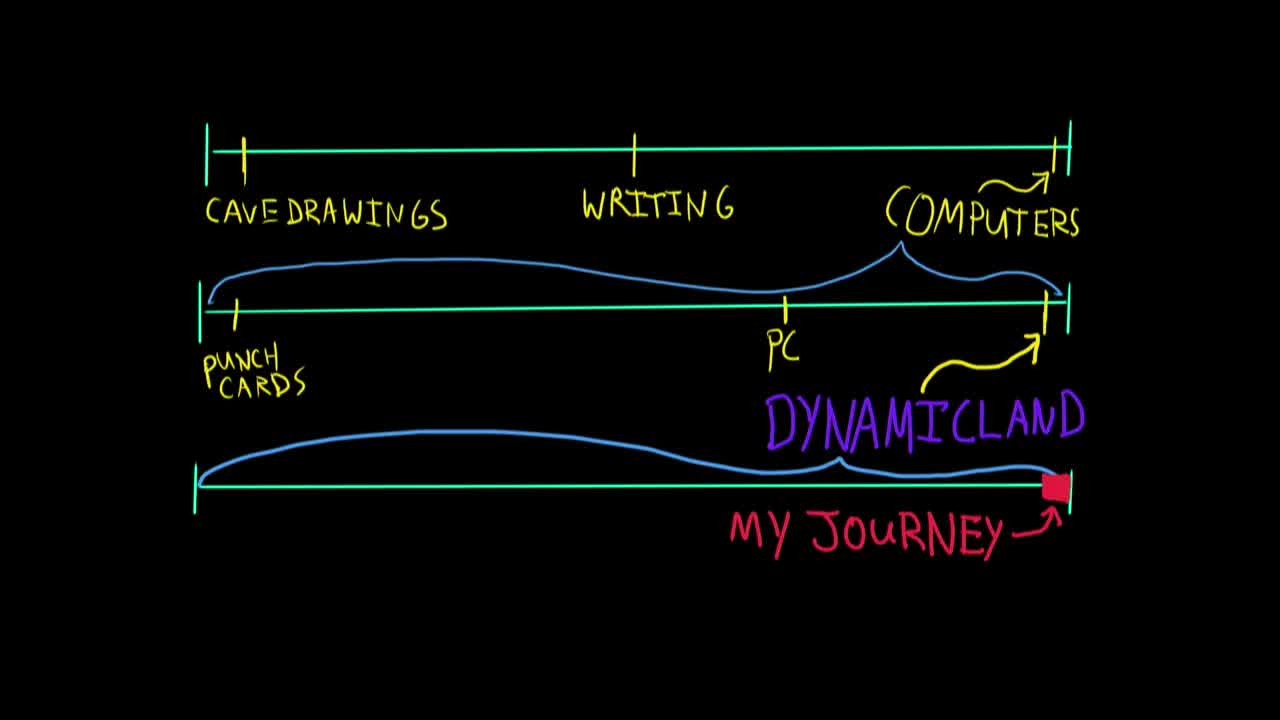
And keep in mind, also, that last one is two years, and they're talking about twenty years in the future, so it's even smaller.
And I wanted to try to make it linear, easy to follow, digestible, but a dynamic medium is anything but linear.
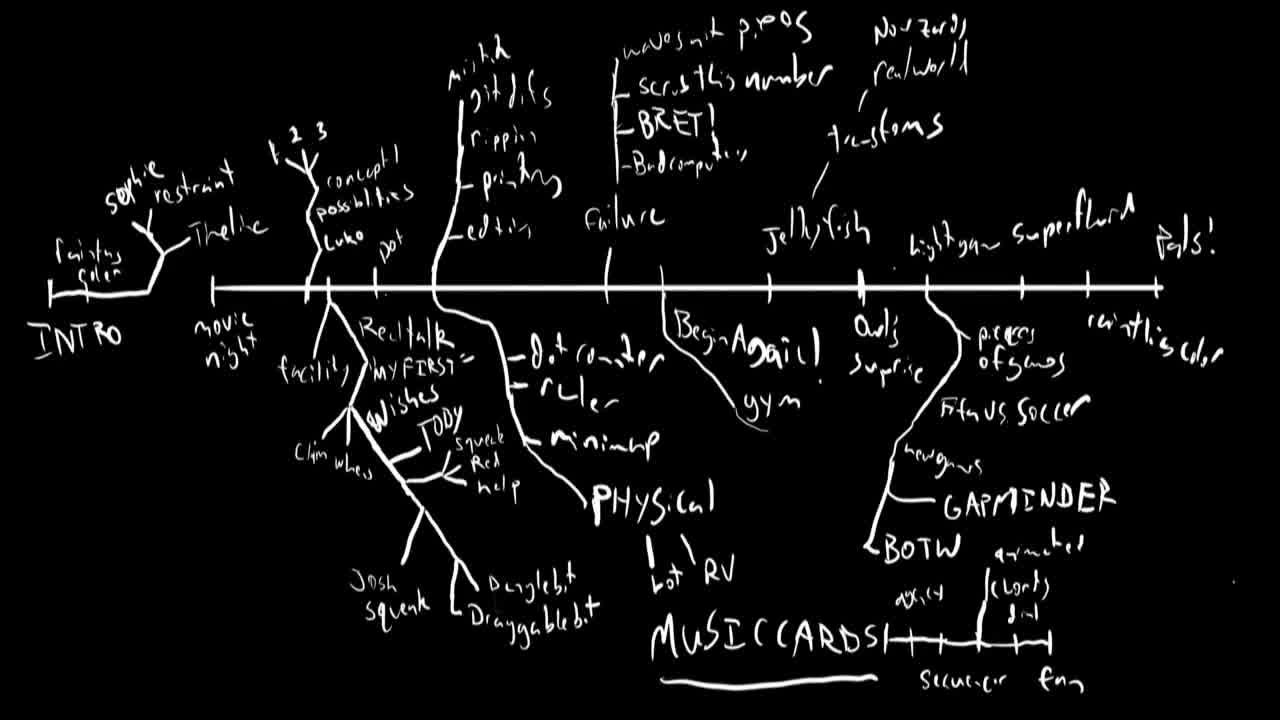
It moves, winds, takes detours, morphs, evolves.
I've tried to exhibit constraint, but the outline I've drawn of the talk above is actually the simplest I can make it. And anyone who knows me knows that this is actually pretty good for me. I mean, this was the last piece that I did.
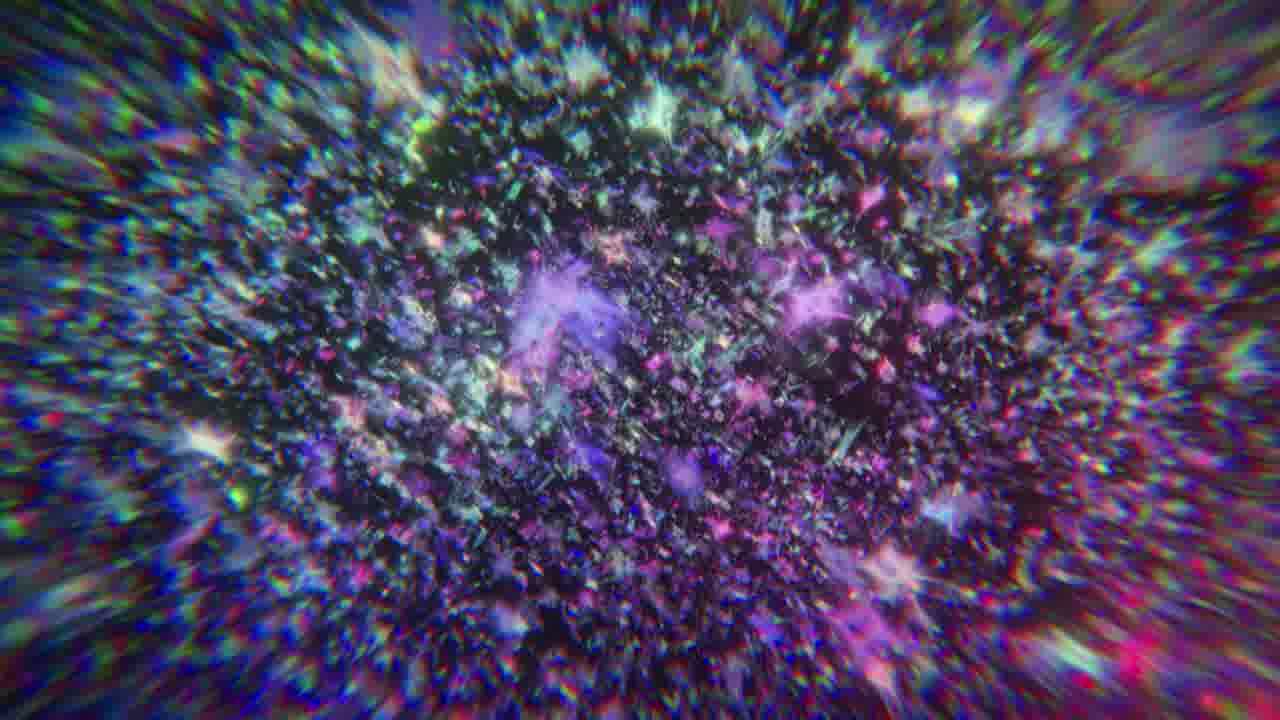
I'm not exactly a poster boy for constraint.
And although I doubt this cacophonous cruise will answer any of the questions that you have about what exactly Dynamicland is, I am hoping that it will give you some new things to think about, not just about Dynamicland, but about our relationship to technology in general.
I first got to visit Dynamicland for a movie night.
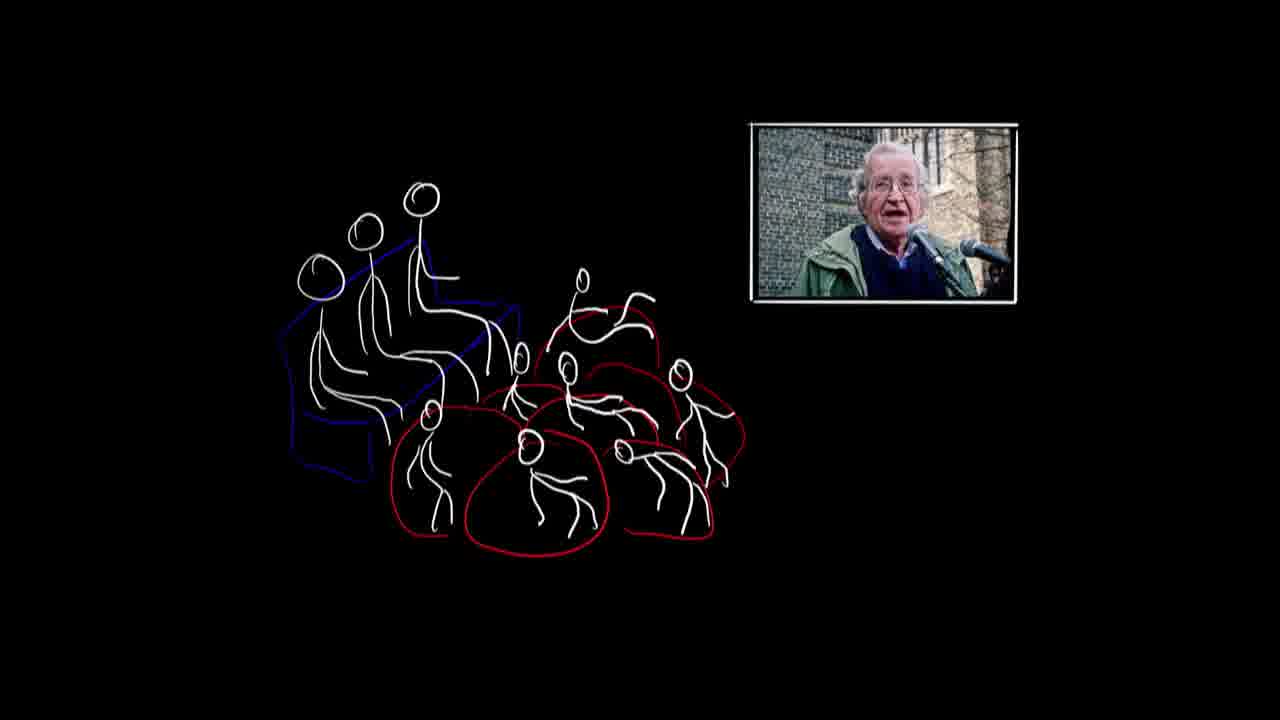
We watched some documentary about Noam Chomsky, I think that Josh chose the film, packed into a room with not enough seats and an ample amount of beanbags, which is really problematic because I have no idea how to draw humans sitting on beanbags. I tried my best.
I got sleepy, left halfway through, but we didn't actually do anything with computation. It was just a space to hang out with some pals and try to learn about the world a little bit more.
I feel like this is a description that I keep coming back to. It almost feels like a mission statement.
Sure, the real mission statement of Dynamicland is that it's a space for incubating a humane dynamic medium whose full power is accessible to all humans.
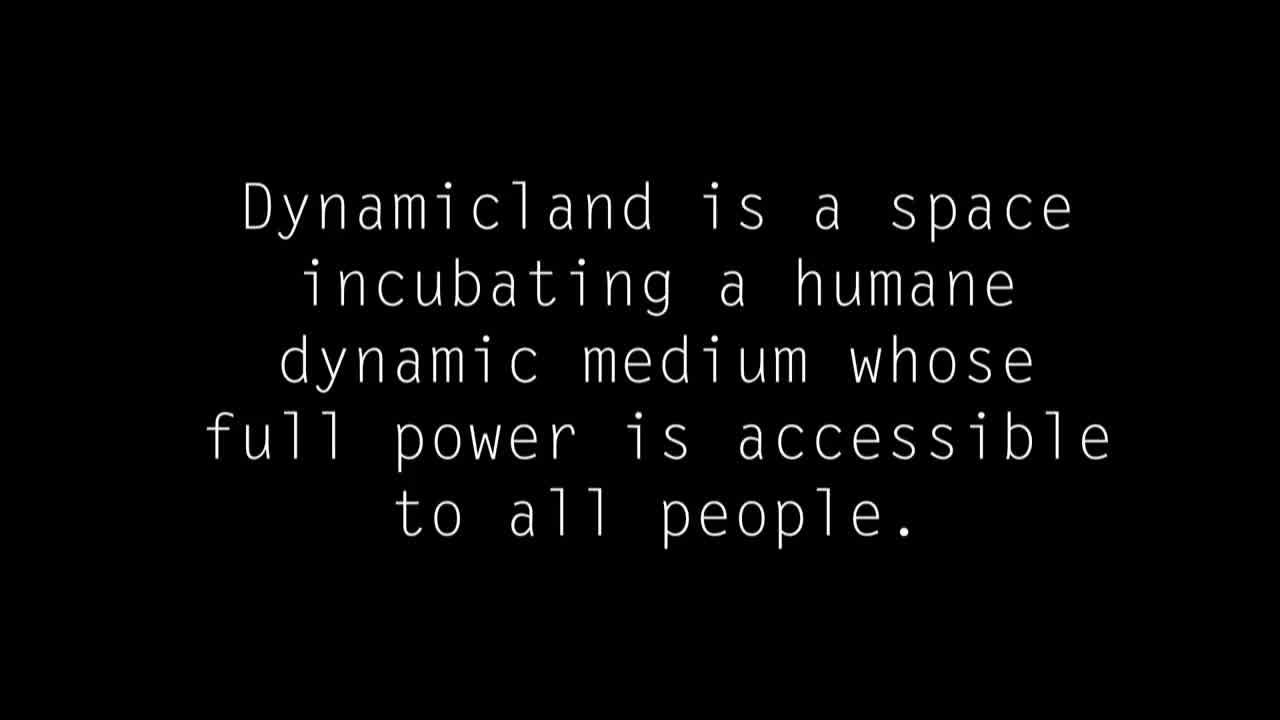
But for me, Dynamicland is just a space to hang out with some pals and try to learn about the world a little bit more. It sounds pretty banal, but most of me feels like that's entirely the point.
The second time I went to Dynamicland was for their inaugural game jam. About two weeks before, my pal Luke Iannini said that they were finally putting everything together and started to describe to me what Dynamicland was over a pint.
I don't remember his exact description, but I do remember that I went home and drew all night. The place that he said that I was going to get to visit seemed like such a dramatic leap forward in computation.
I remember sending him text after text the next two weeks, asking what was possible and what wasn't possible in the space. I was determined by the game jam to have the perfect idea so they could come through and just slay it.
Okay, okay, I wrote. Can it do shaders?
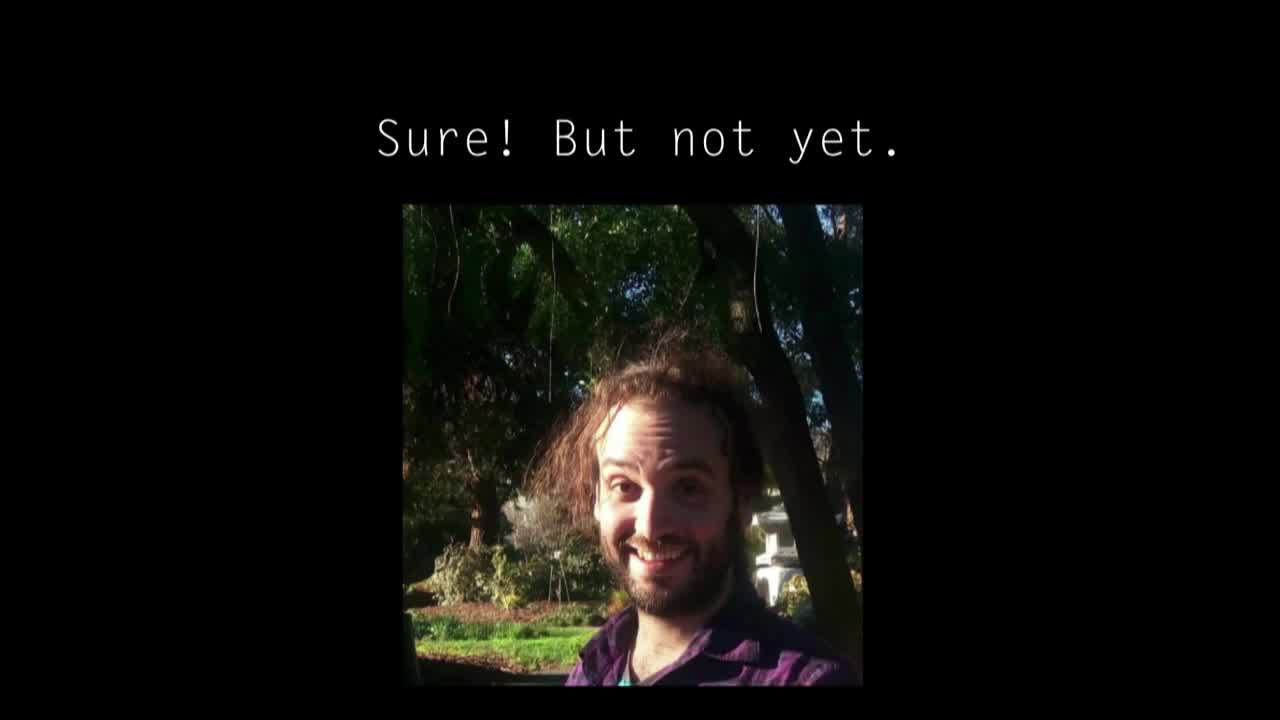
Sure, but not yet, said Luke.
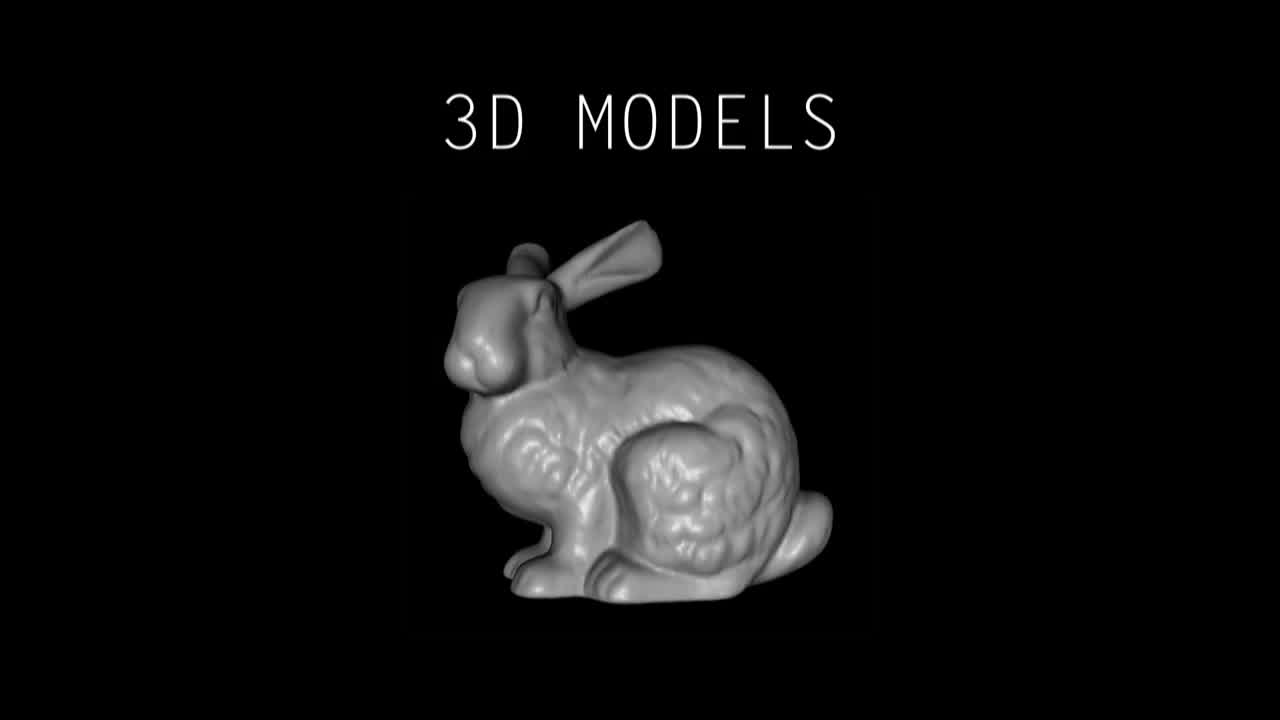
What about 3D models?
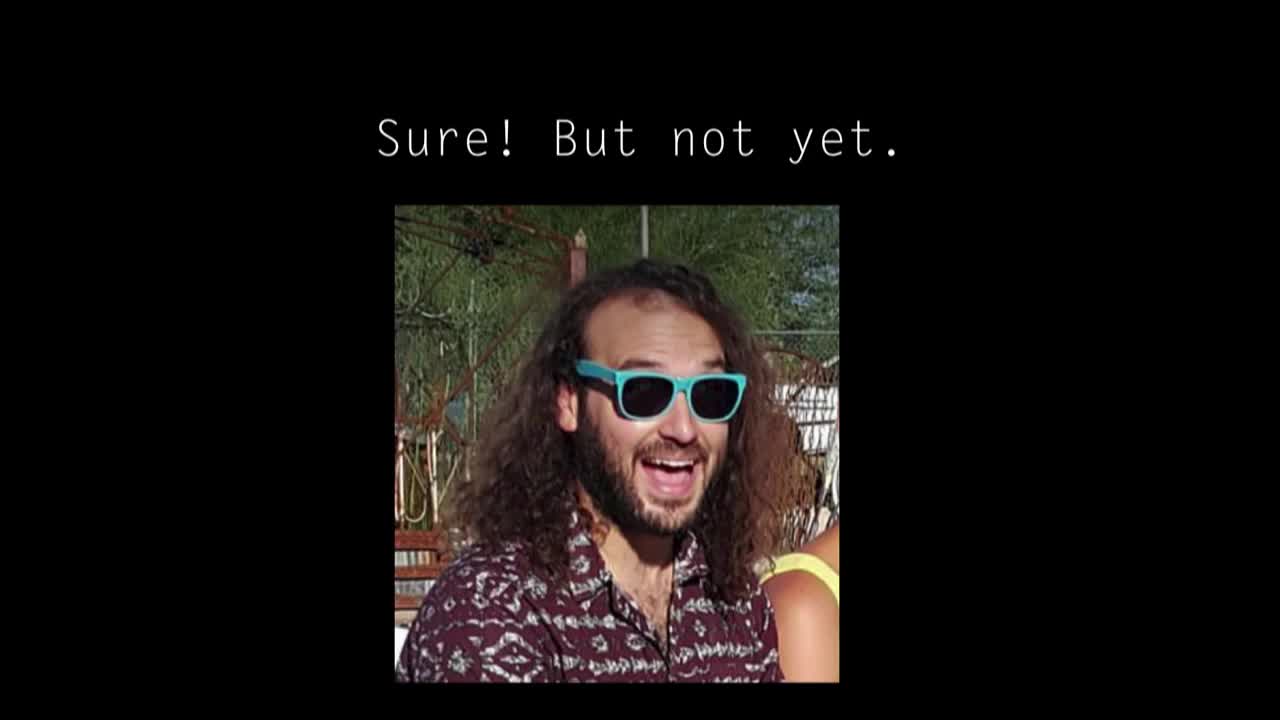
Yeah, sure, but not yet, said Luke.
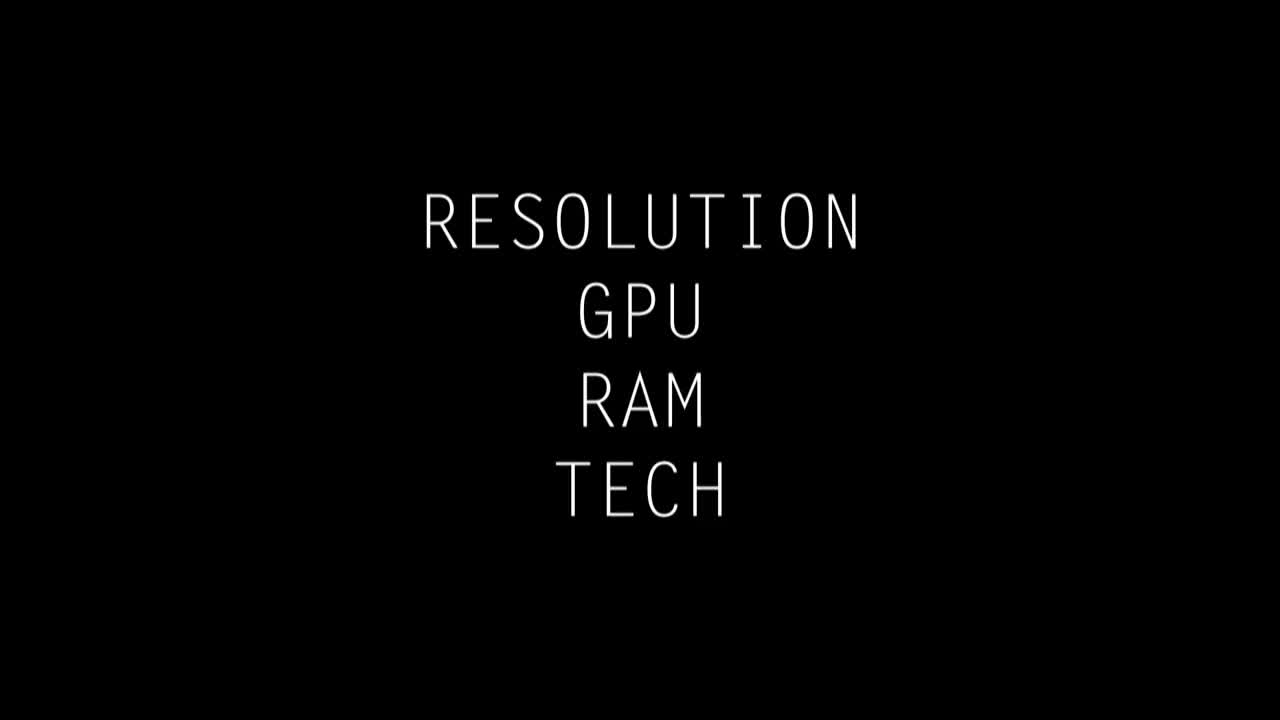
What's the resolution of the projectors? How much RAM is there? What's the GPU?
Isaac, Luke said, I think you're asking the wrong kind of questions.
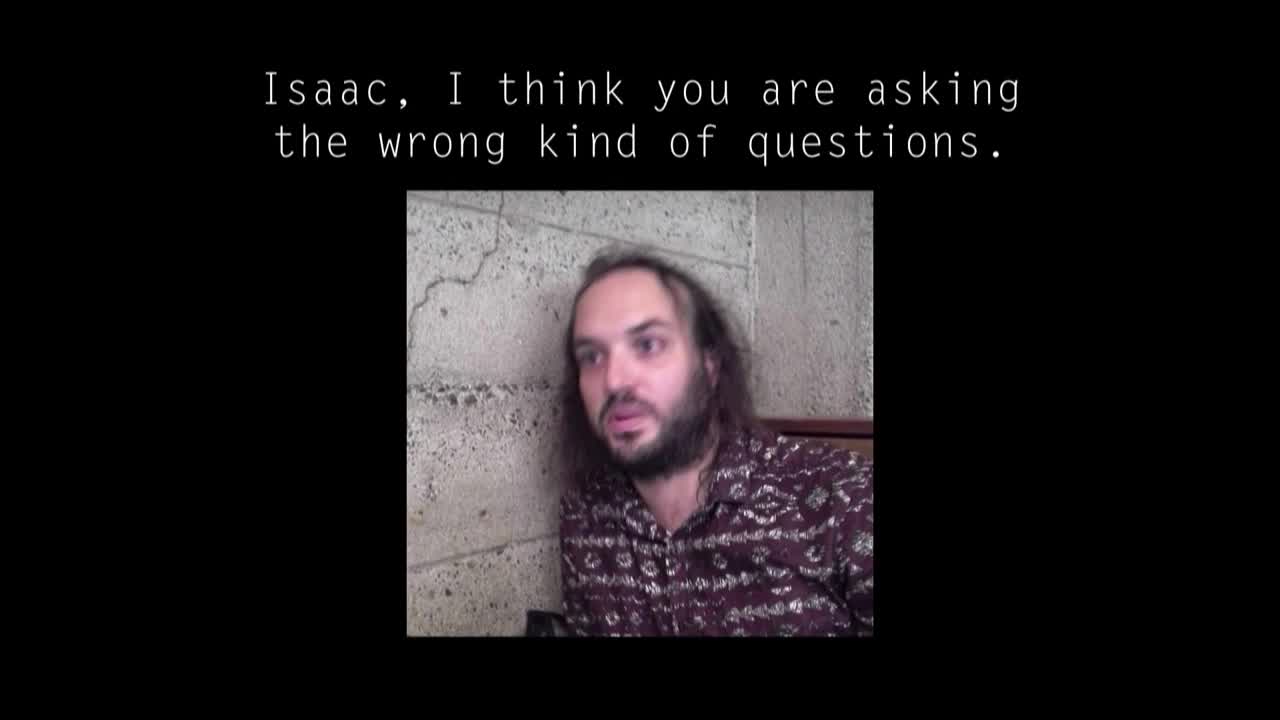
You'll have a much better idea when you come in and inhabit the space. It's pretty hard to explain with words. Just wait.
Obviously, I wasn't patient enough for that, so I went home, I thought all night, and I drew this concept up.
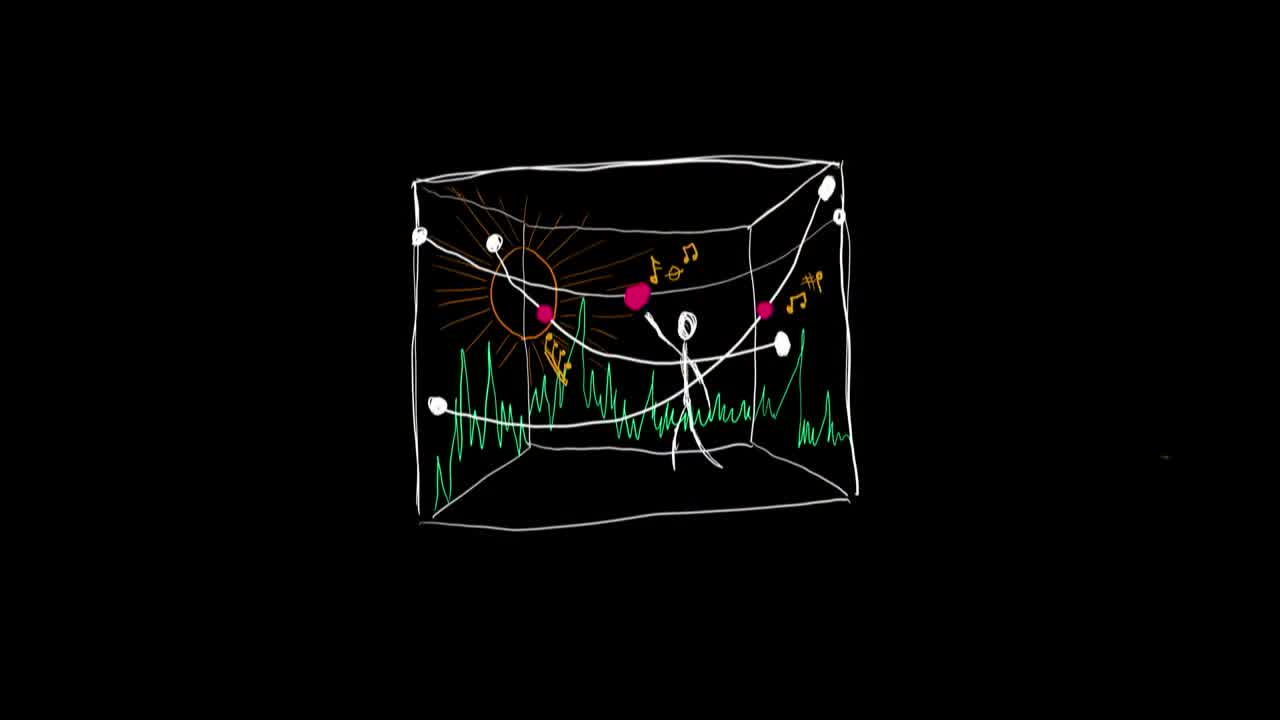
Basically, it's like this room, and you have these things that are attached to the walls, and then there's these balls, and they slide them, and as you slide them, it changes pitch, but it also changes the sun, and it also changes the grass, and it was going to be so sweet.
I showed Luke, and he giggled a bit and said, Isaac, literally, it's just two more days. Literally just wait.
I went home, and I drew this, and I drew this, and I drew this.
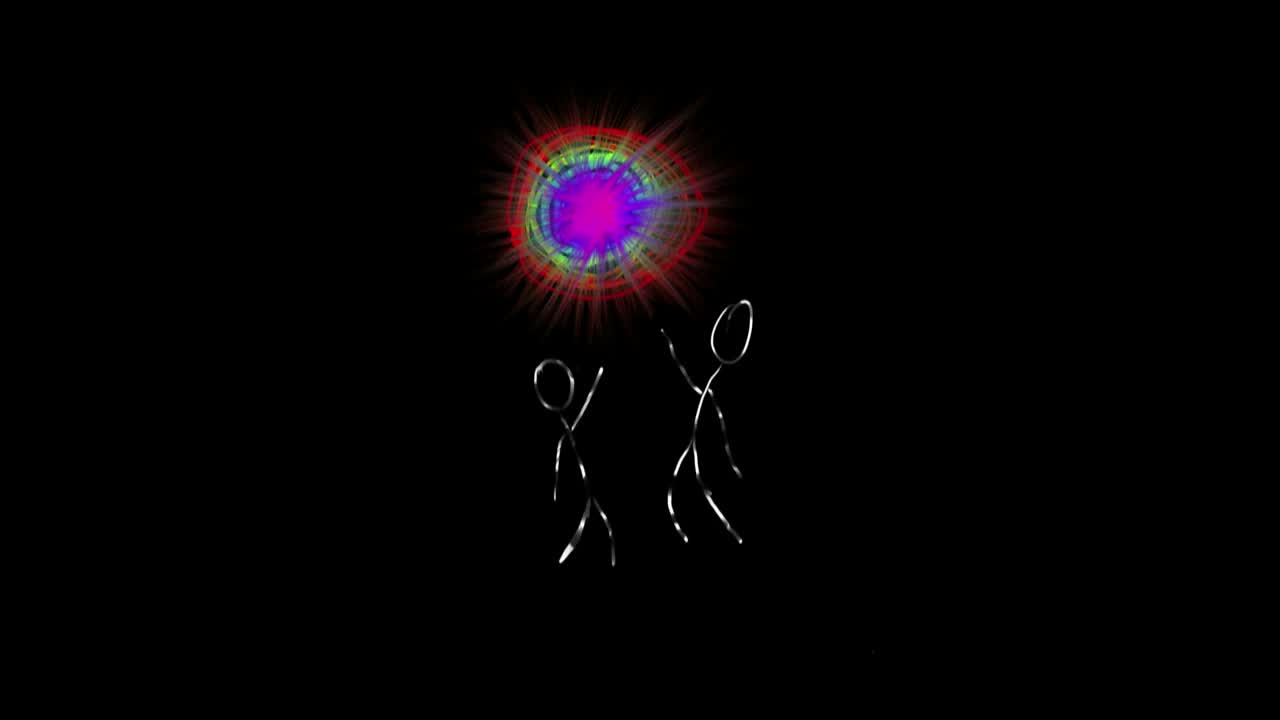
I don't really know what that last one was, but it's colorful, so it was good enough for me.
Finally, the day came, though, when I actually got to go to Dynamicland. I walked in the door, up the stairs, gave Luke a big old hug, and I saw this.

I was confused.
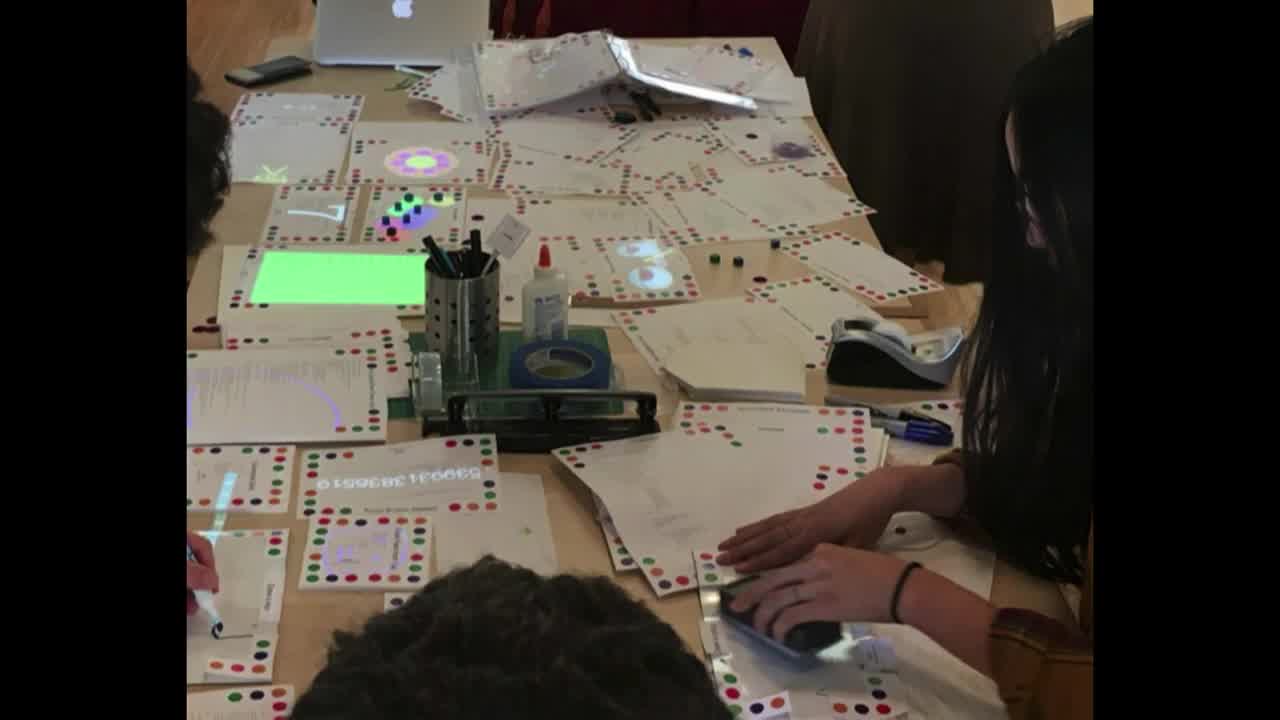
Where were my 3D graphics? Where was my realistic cloth sim and Titan X GPUs? Why was there a bunch of pieces of paper, and what the heck were all those ugly little dots?
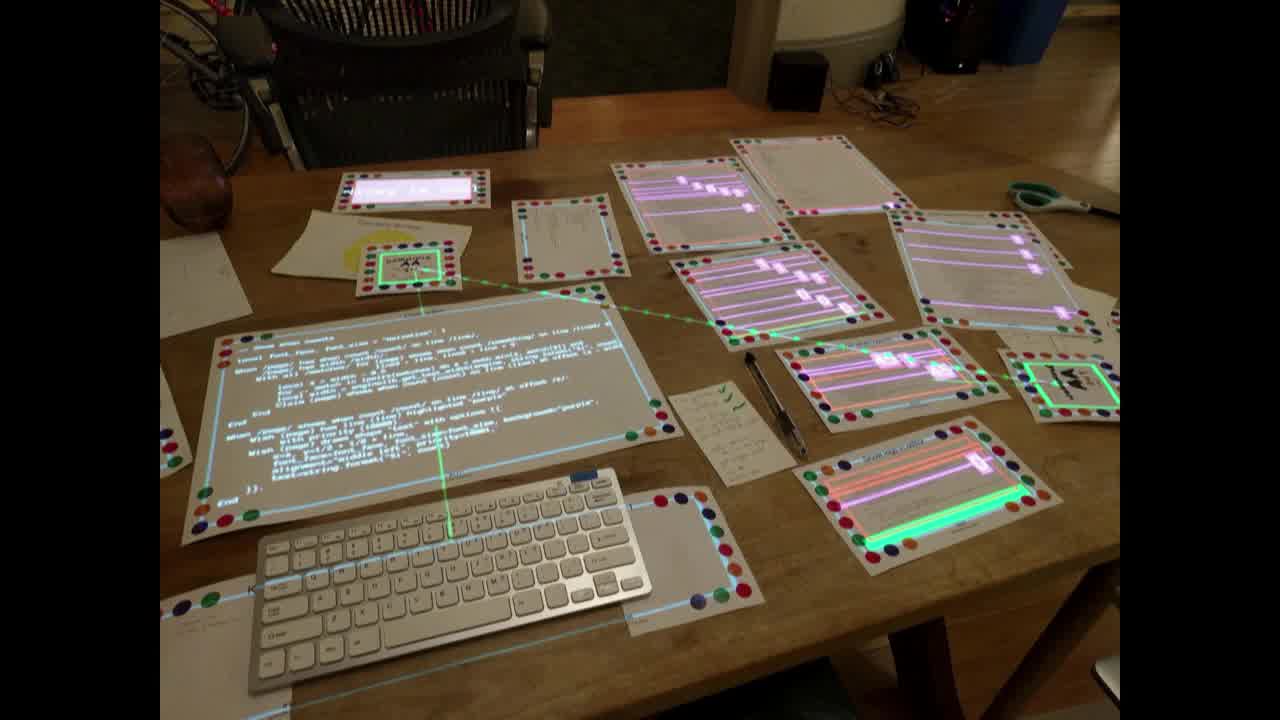
To be honest, I actually felt a bit disappointed. I was expecting this super crazy future space, but instead it was just a building with some people in it, and some papers lying around, illuminated by faint projectors and programmer colors.
Yet by the end of the day, I found myself literally crying, because of how amazing the space was, how hopeful its vision was, and how far it had already stretched into the future.
I got a tour of the beautiful facility, including the library, the machine shop, the kitchen, the super-luscious carpet. [more]
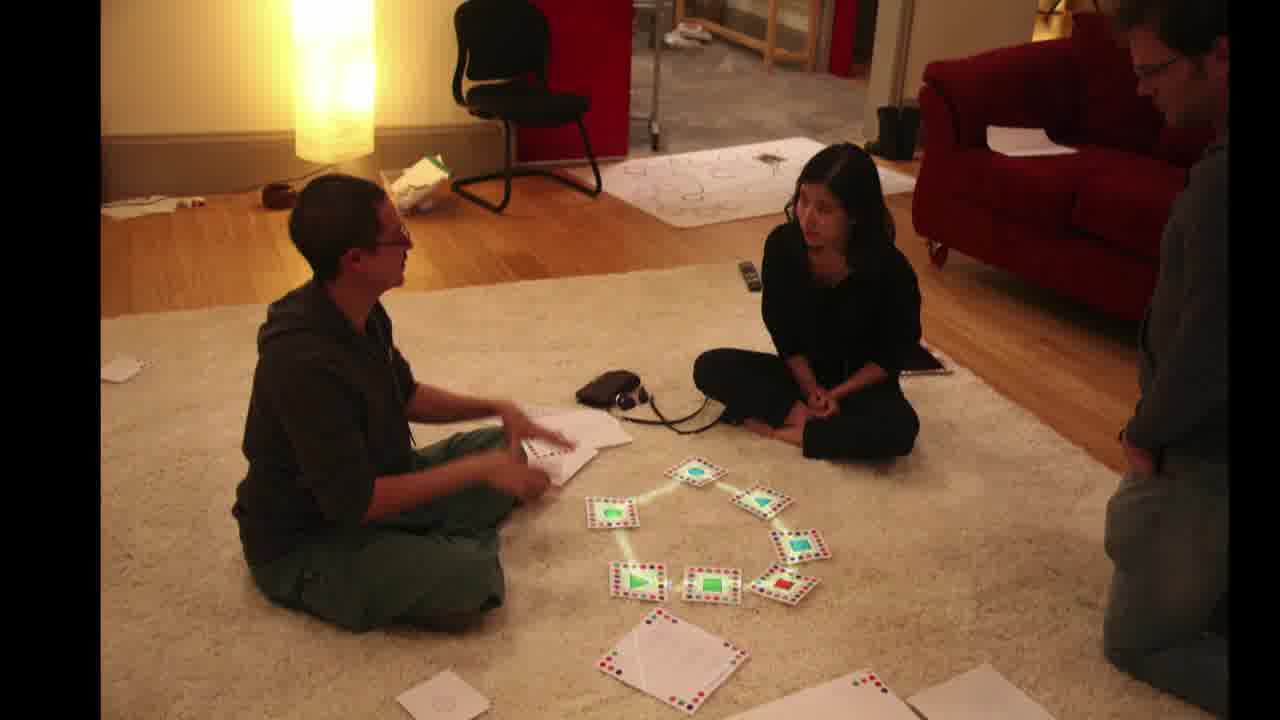
And finally, Realtalk OS, the language and operating system of Dynamicland that lives on a whiteboard. [more]
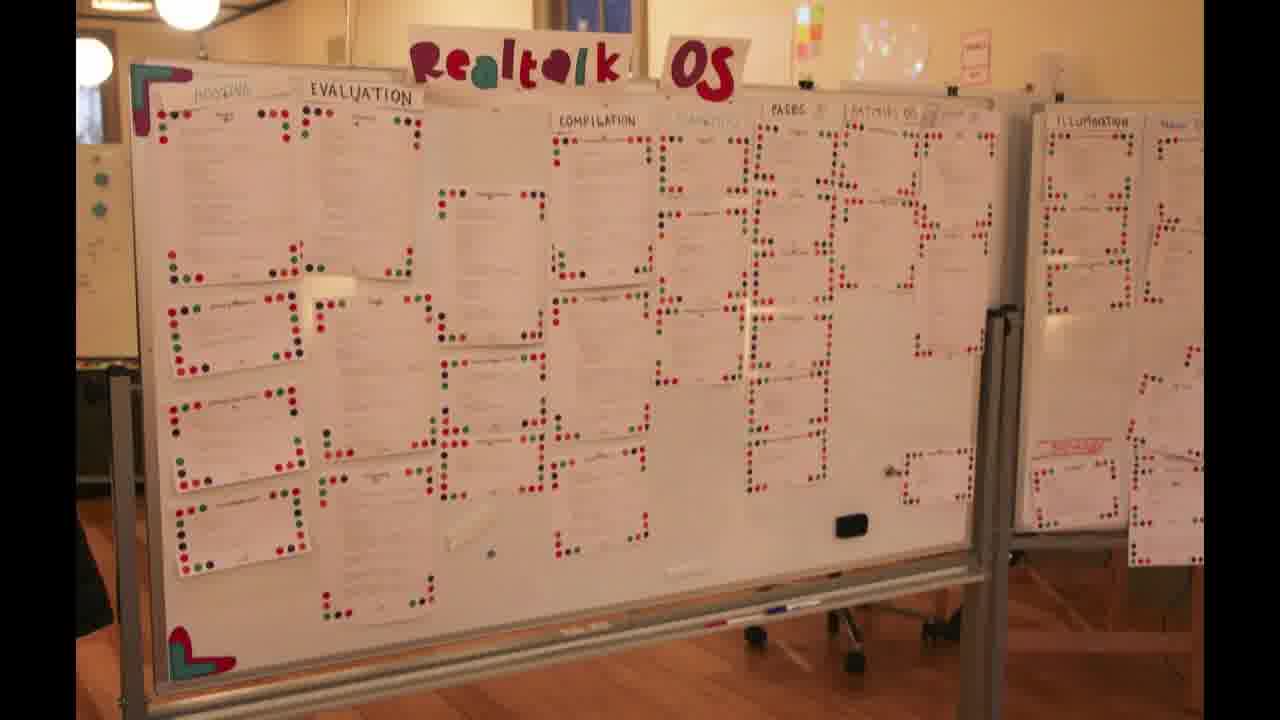
I originally wrote that I was going to apologize here for taking so long to even mention Realtalk, the code in the system that helps make Dynamicland dynamic, but I actually think I could go this entire talk without even mentioning the OS, and describe the space more honestly than any tech talk about the code.
That being said, the feeling of humanity is even part of the code of the system, and I think that this is not by accident, but is rather a vital part of the design of the space.
Because of this, we're going to take our first real detour, and I'm going to give you all a tiny peek into what Realtalk is.
Realtalk
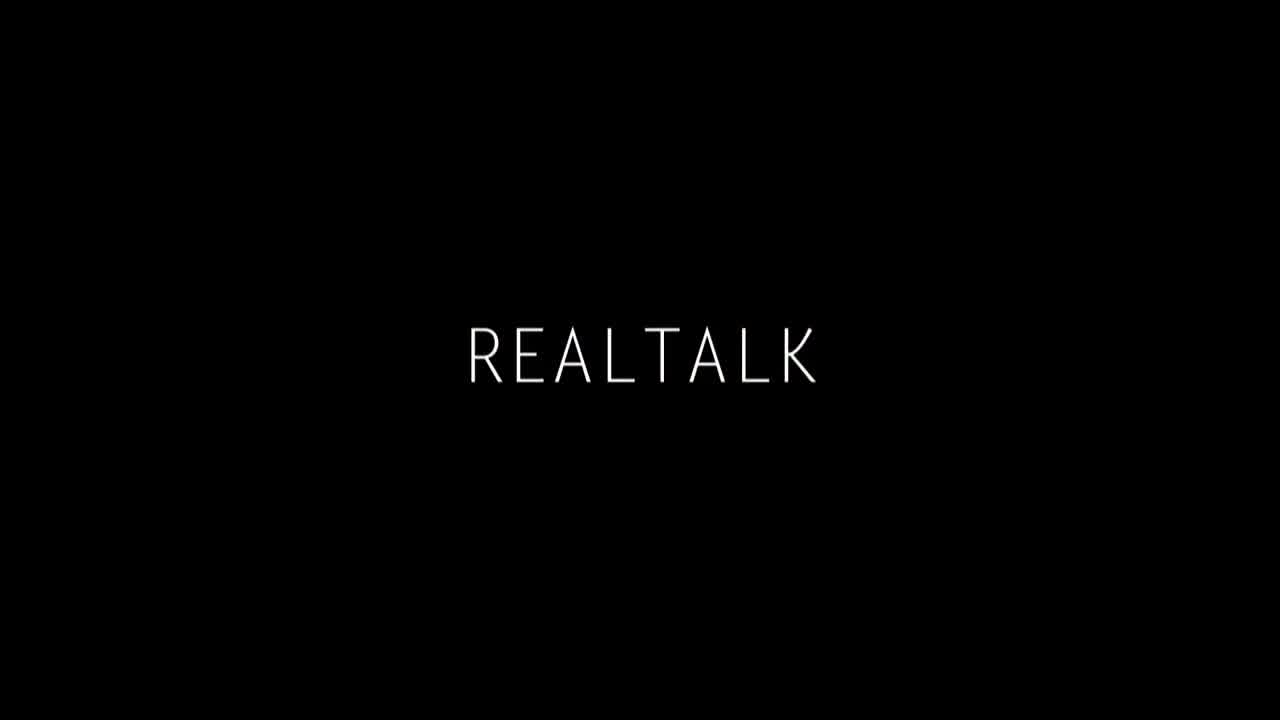
The first thing that people usually see when they start learning about Realtalk is this.
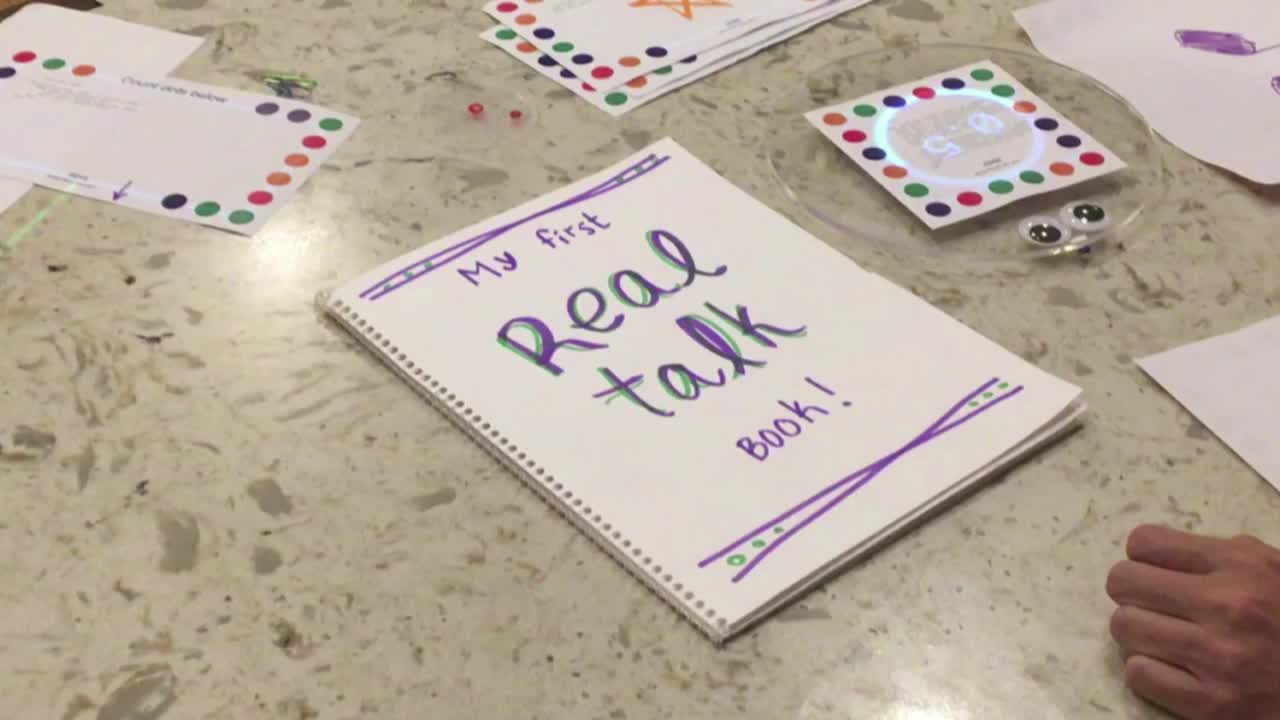
"My First Realtalk Book". It's a beautiful how-to book made by Paula and Toby, and we're going to watch a short video of it, and then we'll dig in a little bit deeper. [more]
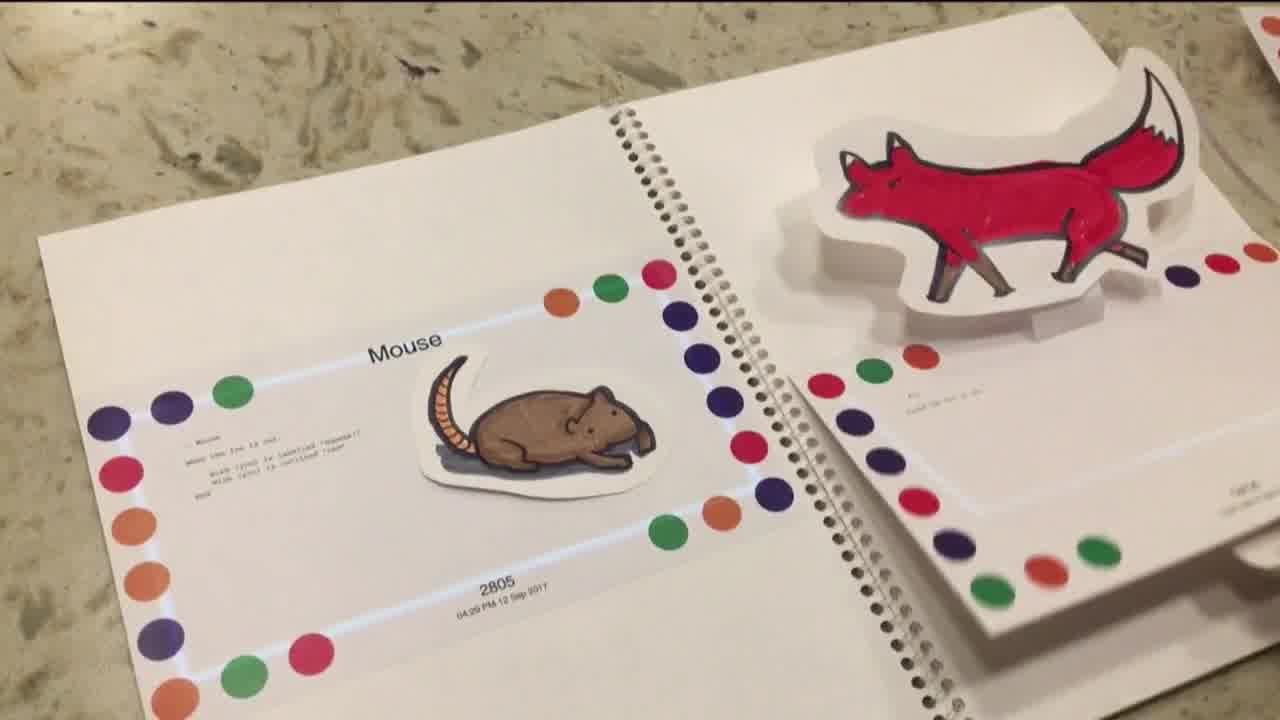
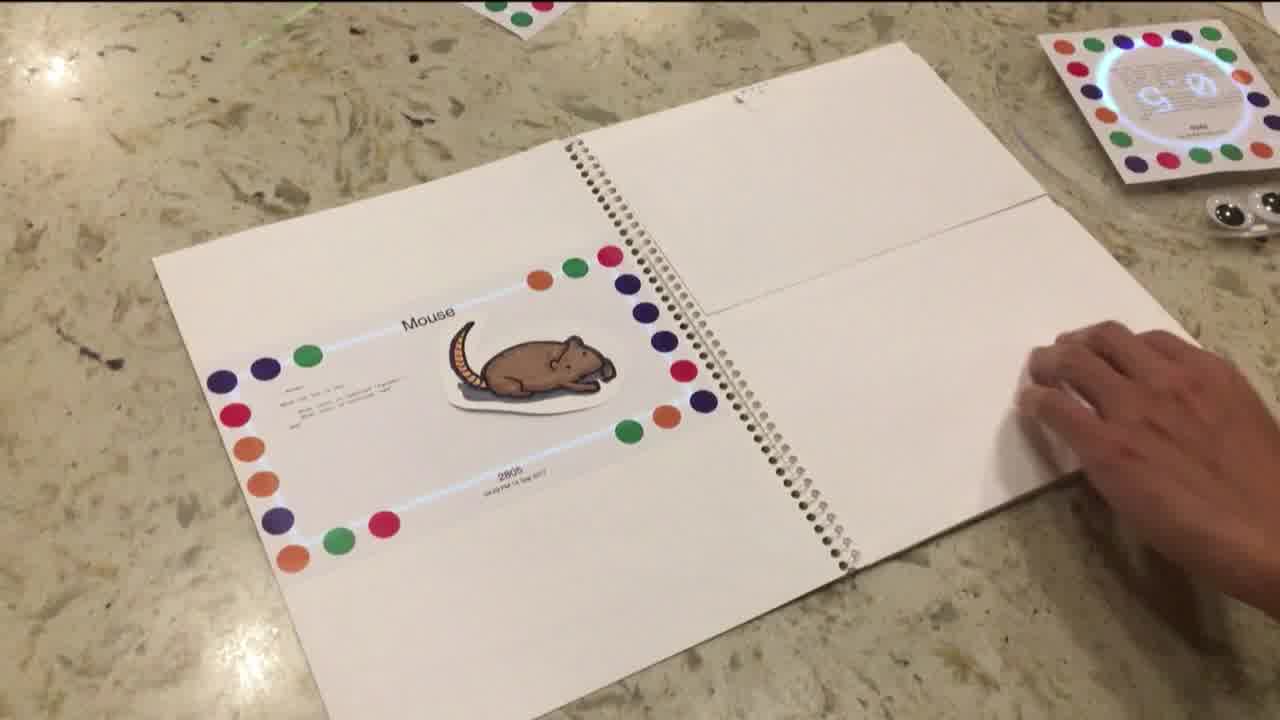
Okay, so it teaches people about the three basic principles used in Realtalk. And this is just the first page. There's more pages in that book. All of our books are really long at Dynamicland.
So the three things are claims, whens, and wishes.
On the left of the page, we see a mouse. The mouse is pretty scared of predators, namely foxes. So whenever it sees one, it lets out a little squeak.
The code that makes that mouse react, that makes it dynamic, says... it's too hard to read there, so I'm going to rewrite it up.
When the fox is out: Wish (you) is labeled "Squeak!". Wish (you) is outlined "red". End
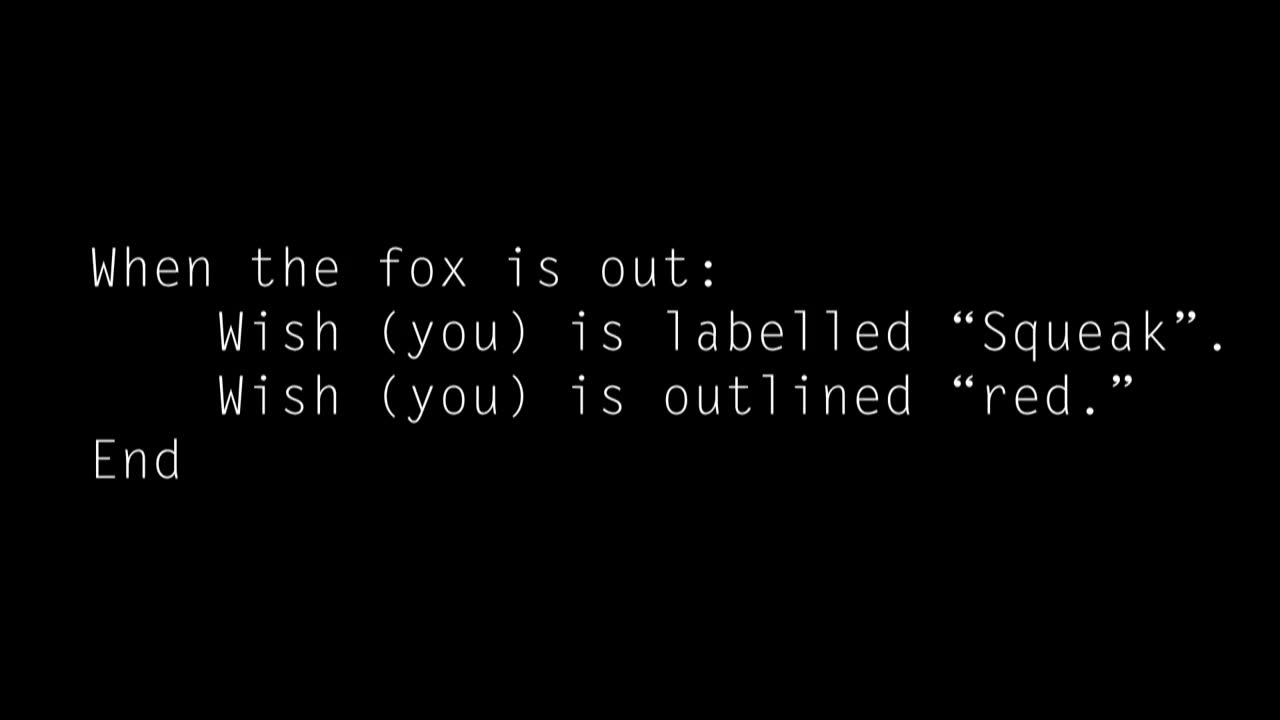
So in this case, the mouse says, oh boy, oh boy, if the fox is out, I wish I was labeled "squeak", and I wish I was outlined red.
And sure enough, oh, that poor little mouse.
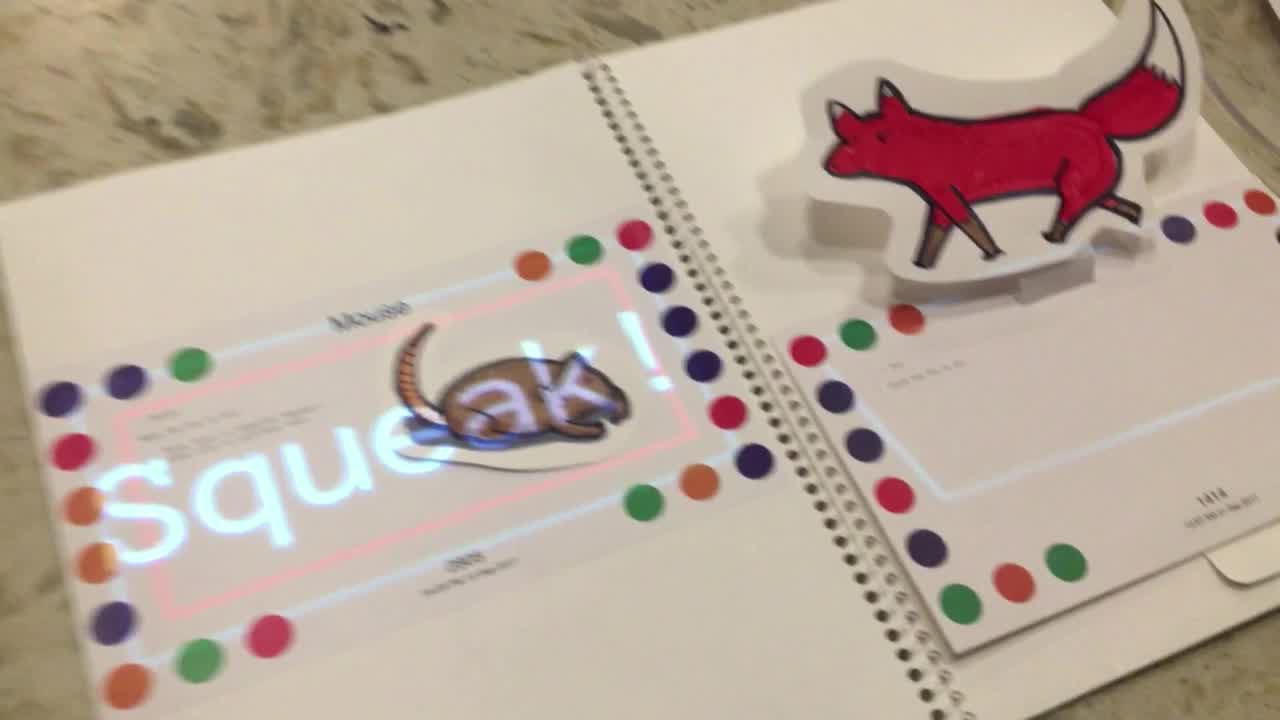
The fox, however, must be seen by the mouse. So what exactly does the fox say?
The fox says, claim the fox is out. And if the fox disappears, the mouse is finally at peace again.
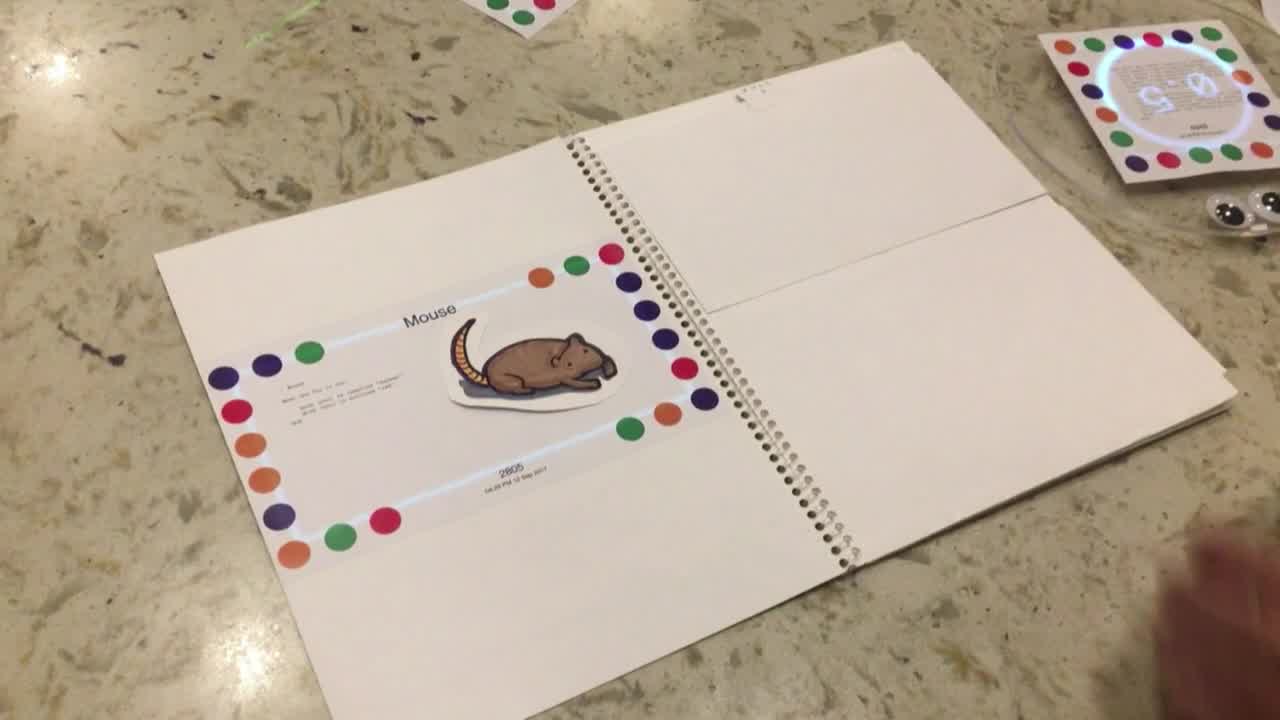
And that's pretty much it.
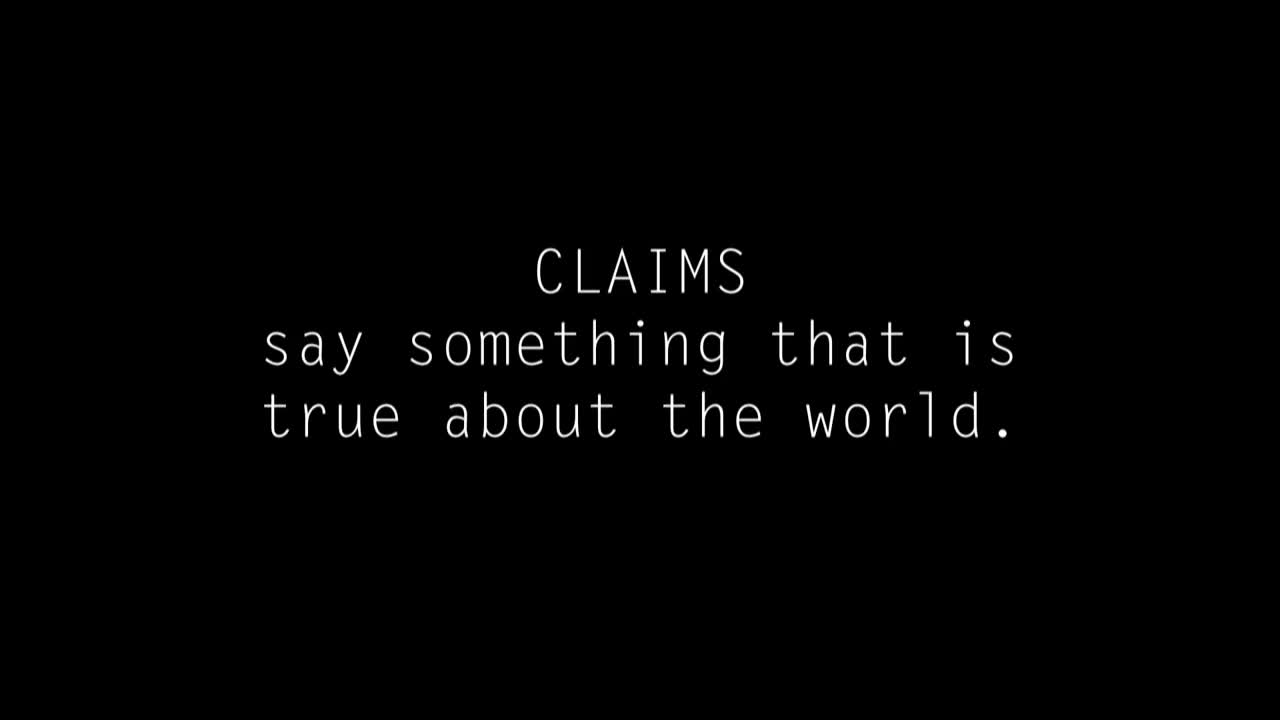
Claims say when something is true about the world, or say that something is true about the world.
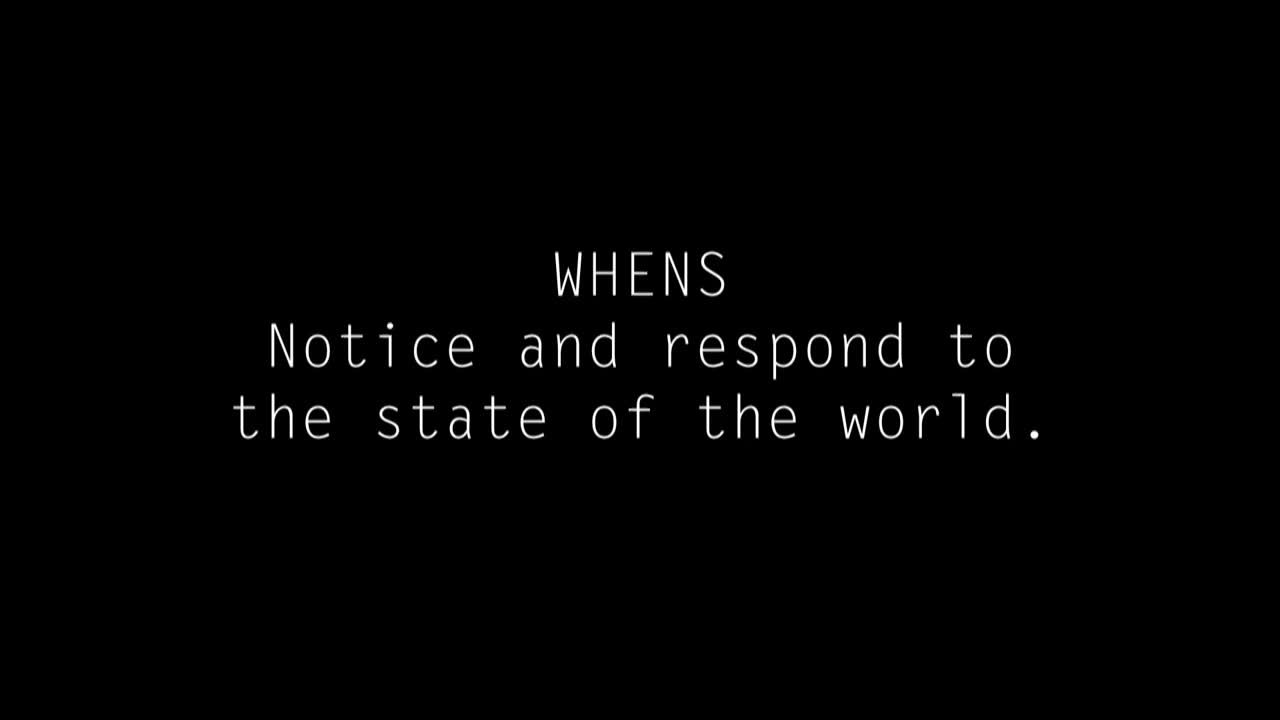
Whens notice and respond to the state of the world.
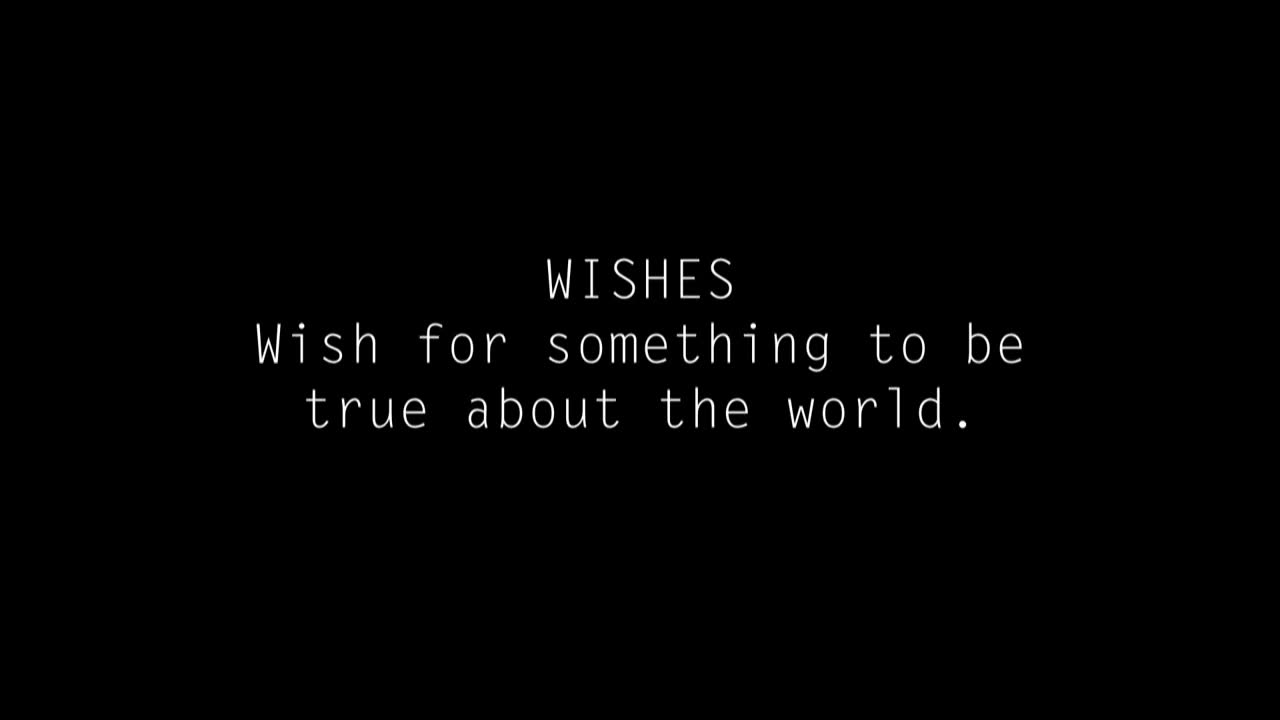
And wishes wish for something to be true about the world.
Now, I honestly didn't actually understand the difference between a claim and a wish for quite some time.
I'd be trying to teach these lessons and give tutorials, and the question of the difference between the two would always come up, and I'd say, let me find somebody who actually knows what they're talking about.
One of those times, it was Toby.
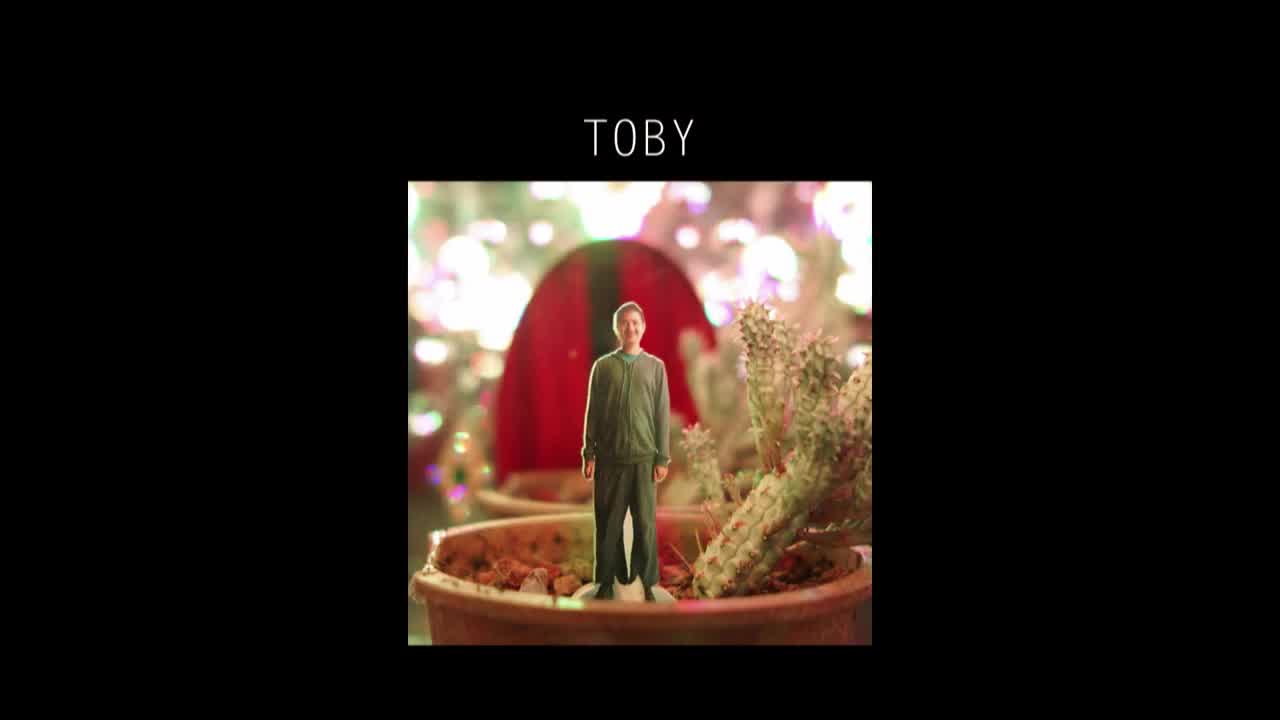
Toby's another member of the Dynamicland team, another human being that I'm so happy to call my friend because of this space. He definitely knows what he's doing, and he has this way of explaining things that gets into my brain and tickles it.
He said, a wish is just a page asking for help.
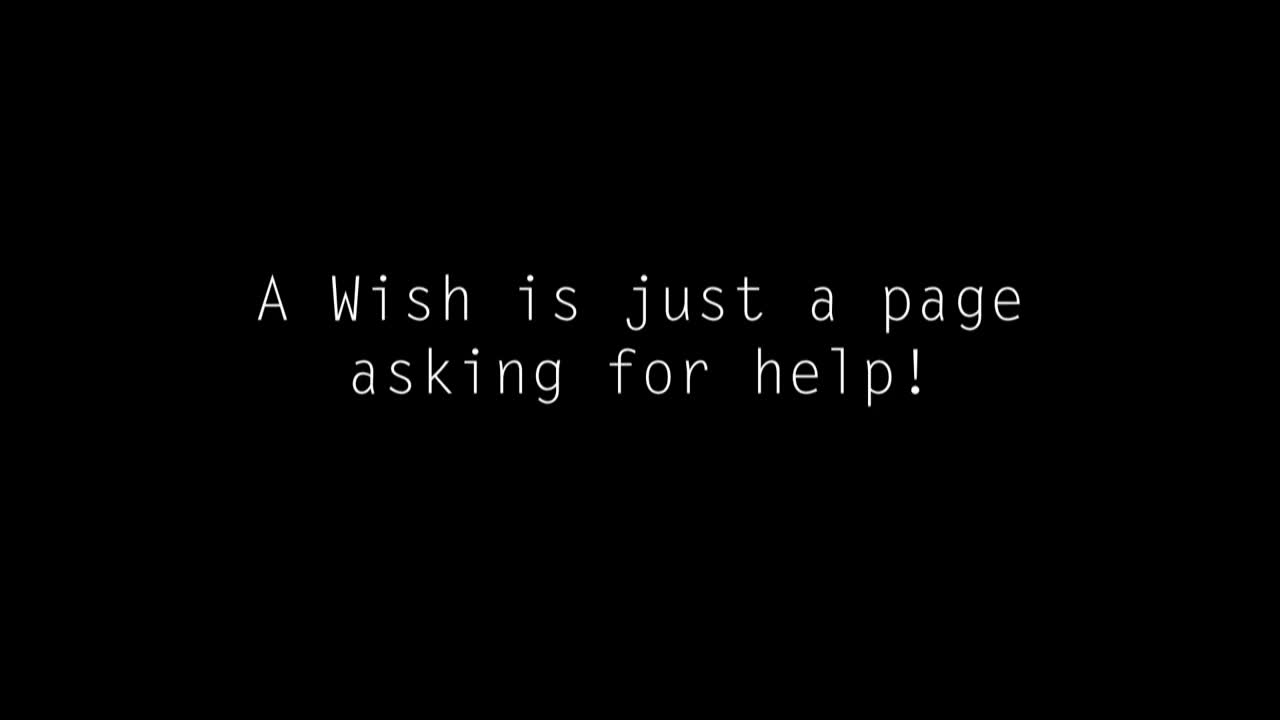
It wants the world to be a specific way, but it can't make the world be that way itself.
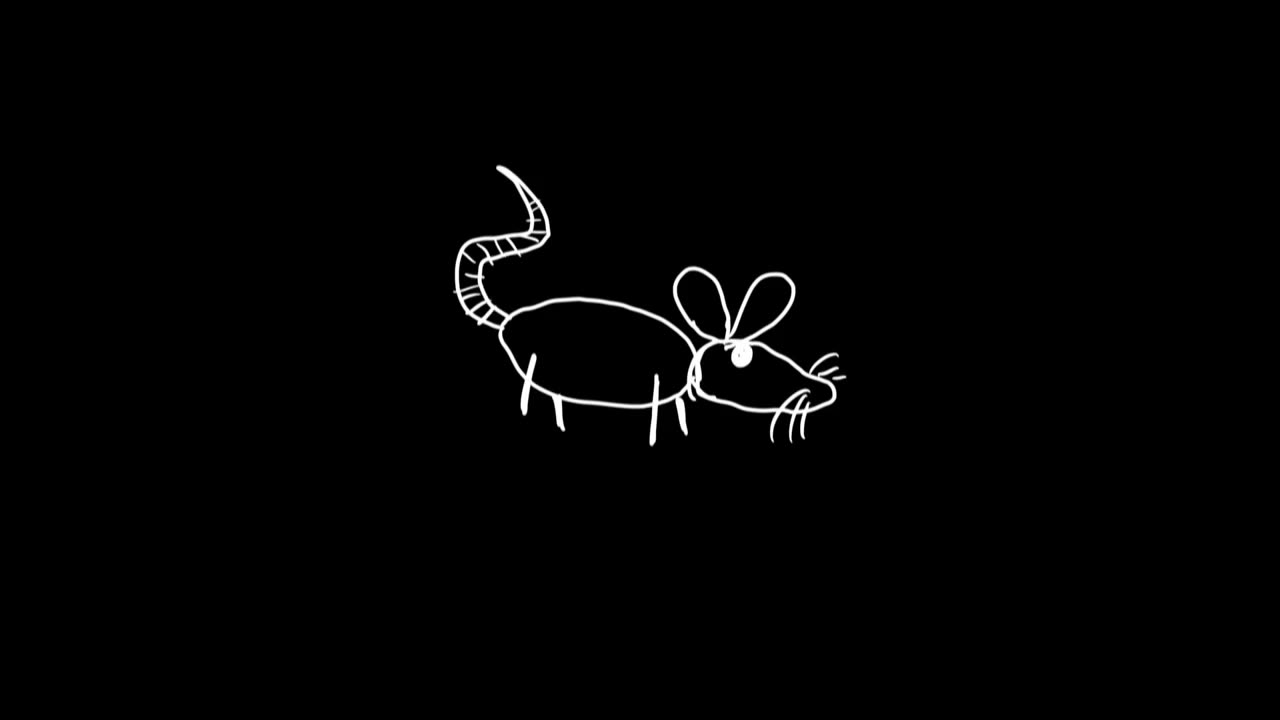
Take our mouse, for example. It can't label itself "squeak". It can't outline itself red. It has to ask for help.
And we aren't too practiced at asking for help. It makes us a bit vulnerable.
But asking for help builds community, builds connection, helps us remember that we can't do everything alone, that we matter, and that we have responsibility to other people.
Helping and asking for help is really important, and we don't do it enough.
Dynamicland, luckily, is full of helpers that can fulfill these wishes. In this case, the computer sees the phrase, claim the fox is out, and says, I'll just add that info to the state of the world for you.
"Hey, everyone, the fox is out."
And the mouse goes, oh, god, oh, god, I wish I was out. I was labeled "squeak". I wish I was outlined red.
And the projector goes, oh, I see your wishes, and I can help you fulfill your wish.
But if there is no computer, if there is no projector, we could still help the mouse out. And this is a serious enough point that Josh and Thais have made a video just for this to demonstrate.
"The fox is out!"
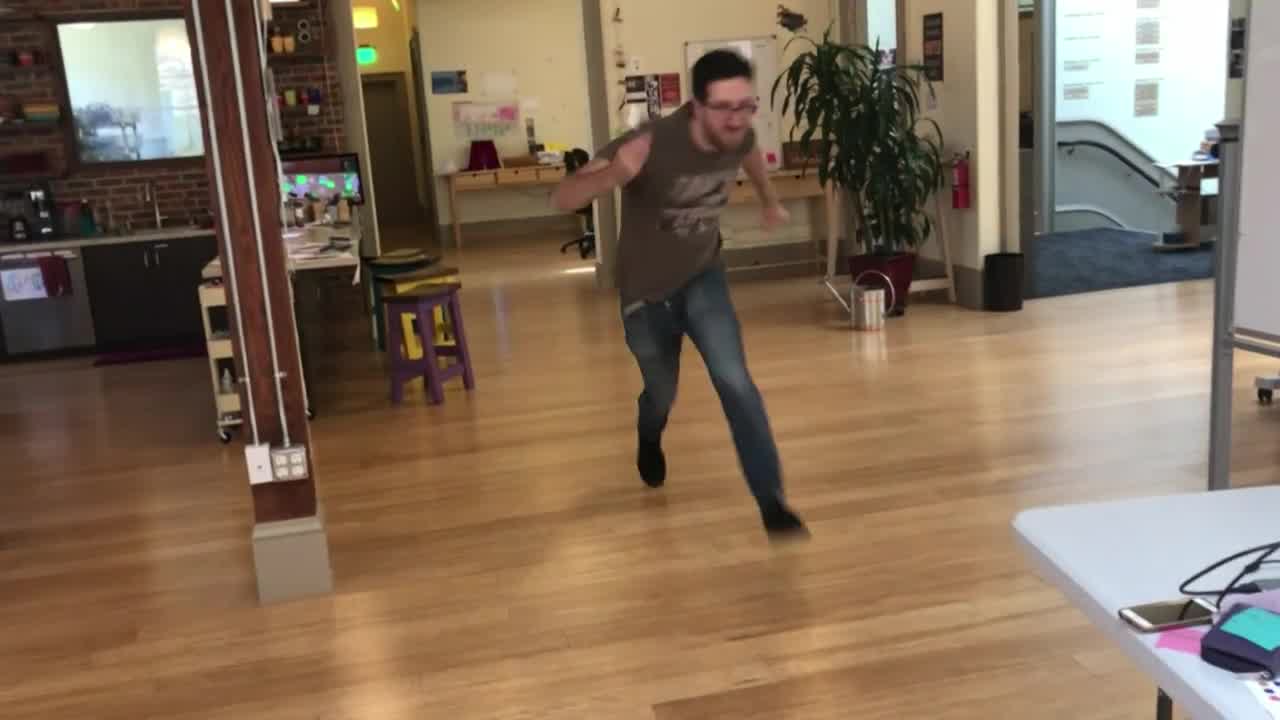
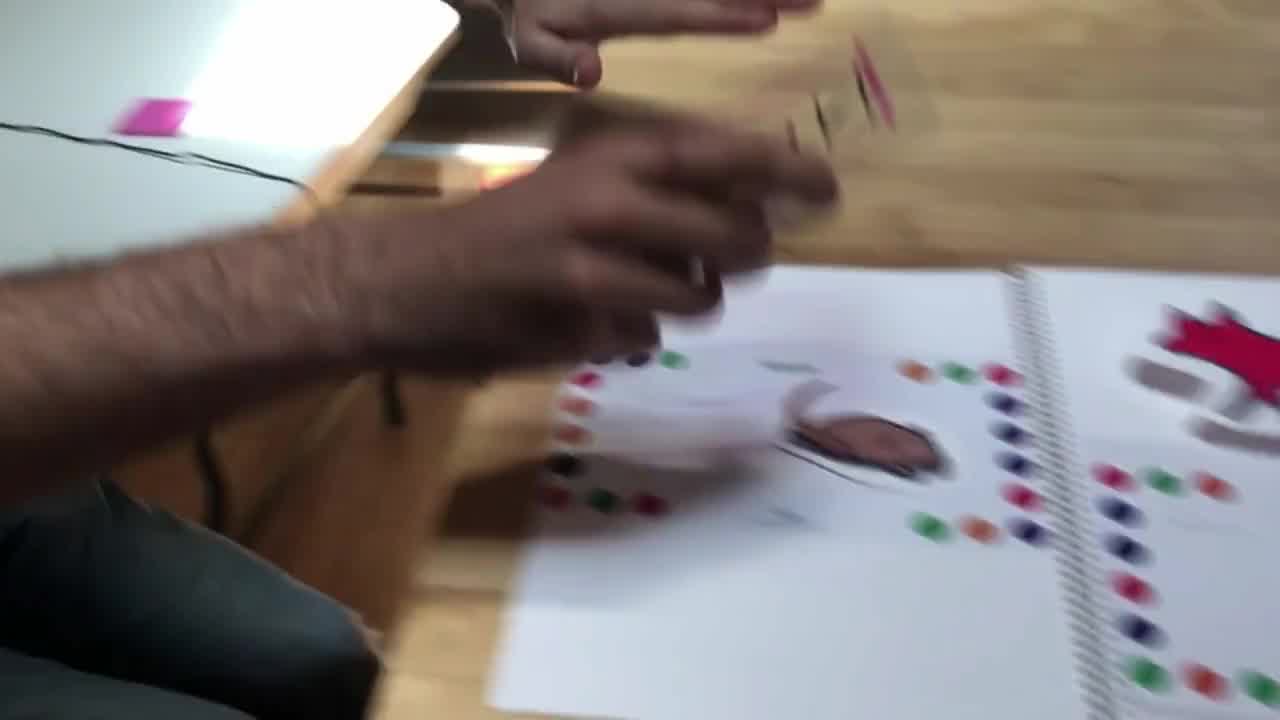
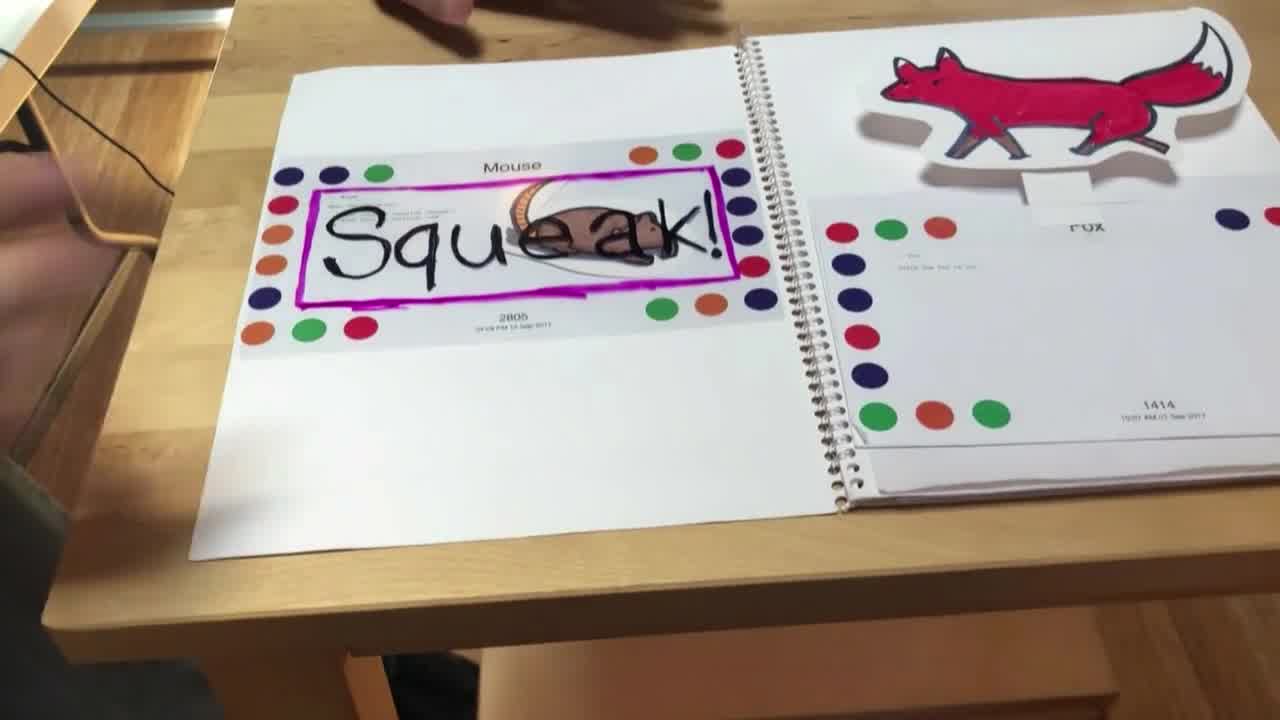
You see, what does the helping doesn't matter. Who does the helping doesn't matter. This space is not about projectors or computers. It's about asking for help.
And this also means that as research continues, computation could be helpful in different ways than simple projection.
Take this Dragglebot, which Paula made. [more]
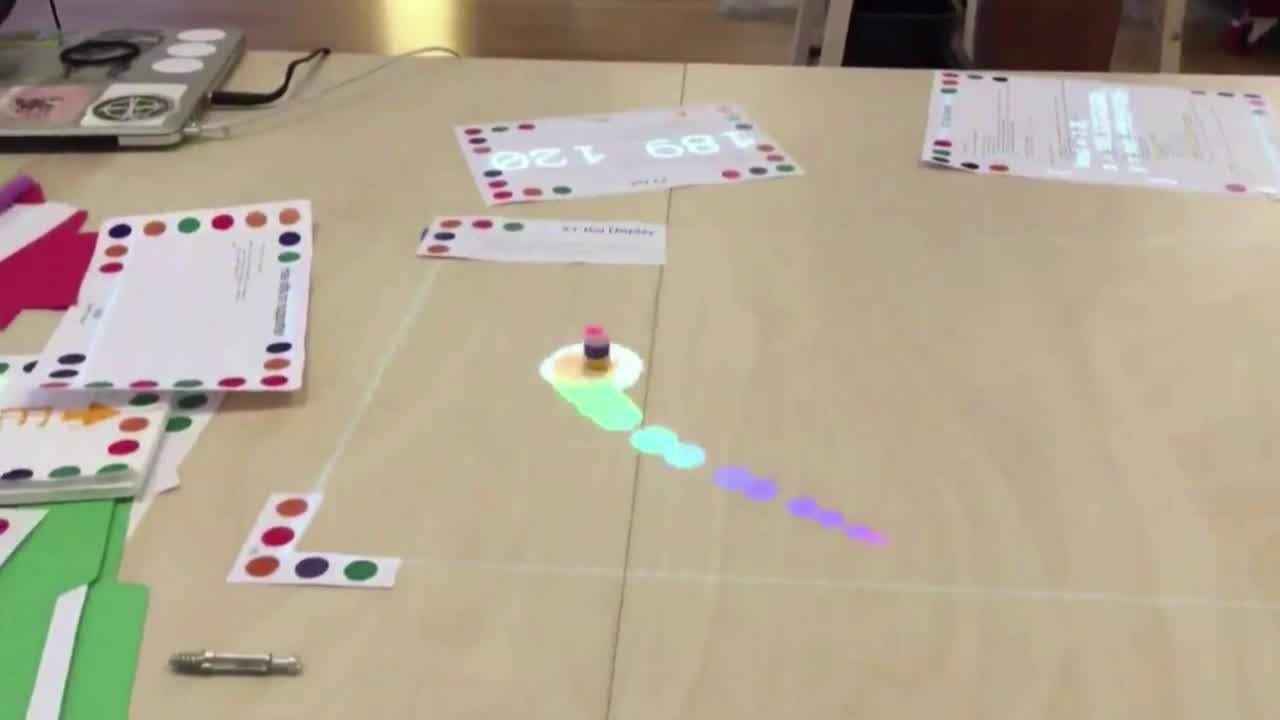
Oh, my god, it's so cool. But the code for that, all I'm saying is wish you moves towards magnet.
But if there's no magnet, if there is no Dragglebot, I certainly hope that another human could be my helper and pick up the magnets.
And there's so many different possibilities of what computational helpers of the future could look like, such as these Danglebots, which are small robots that drive around on the magnetic ceiling, allowing for objects to be moved in 3D space.
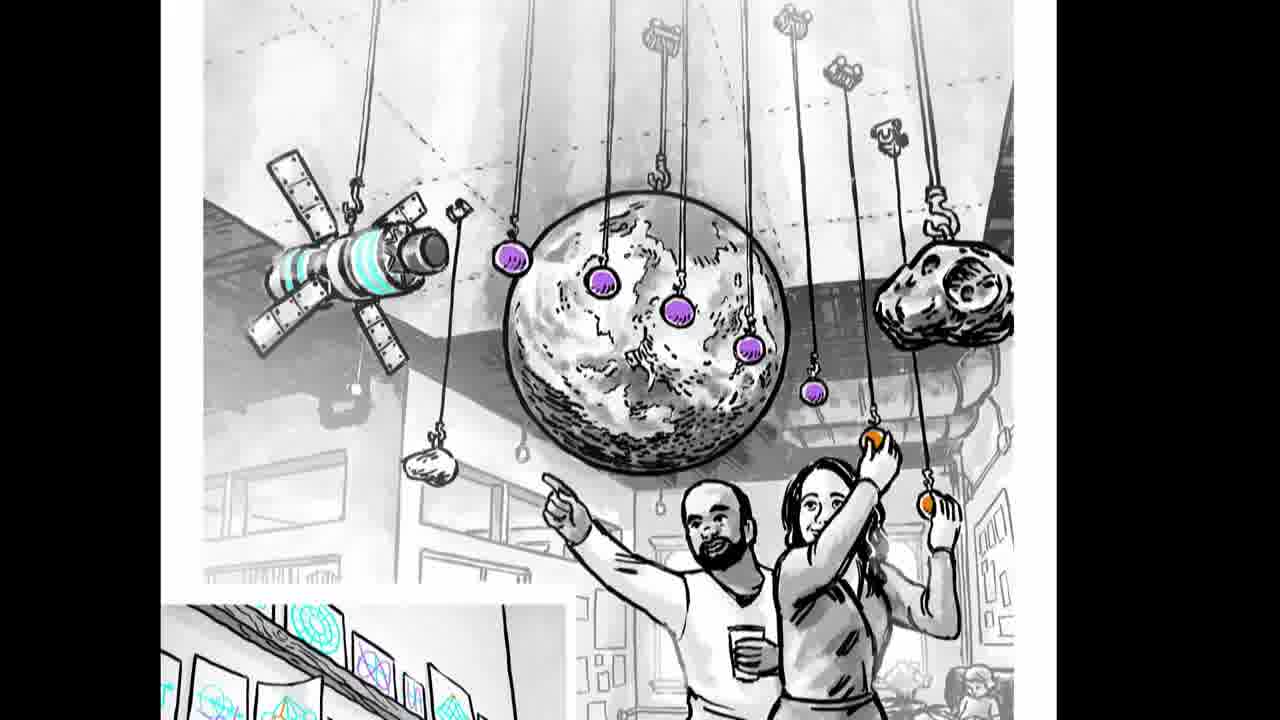
Here it's depicted by David Hellman.
Again, what does the helping doesn't matter. Who does the helping doesn't matter. The space isn't about computers or projectors. It's about asking for help.
Okay, back to the story. So the first game jam happened over three days. [more]
Agency
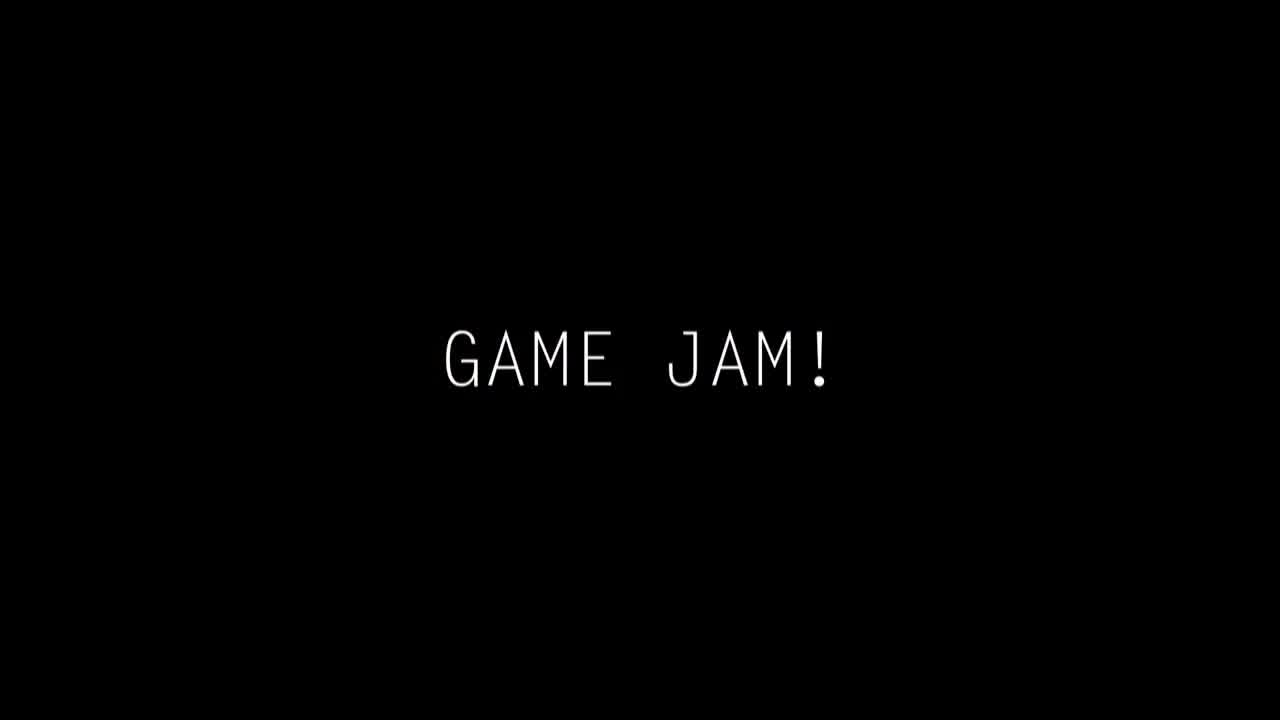
When we came into the space, the Dynamicland team had strewn code everywhere to get us inspired. These were pages that taught us how to talk to other pages. Pages that showed us how to label and outline things. Pages that taught us how to detect dots, which you'll see later.
They showed us videos of how to edit pages. Way back then, you were actually still shackled to your laptop, but by now, to edit something, all you have to do is point a keyboard at it and begin to type. [more]
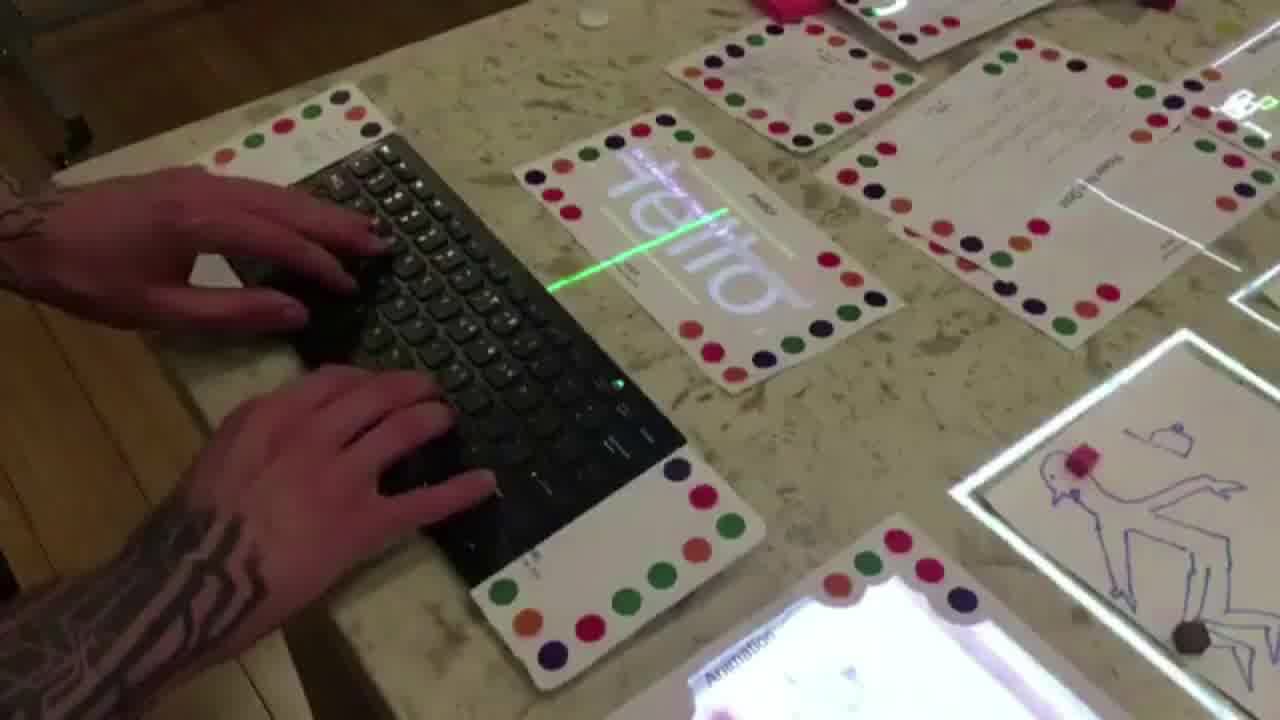
I want to take a moment and watch this happen in real time, because it feels special.
You can't really see any of the code in this video, but it's not important anyway. What's important is that you can walk up to any code, point a keyboard at it, and begin to edit.
Here, all that's happening is changing the label from "Hello" to "Hello world". But almost all the coding in the space is done exactly like this.
Anyways, those changes are still digital, but when you decide something is worth bringing into the physical world, you just press print.
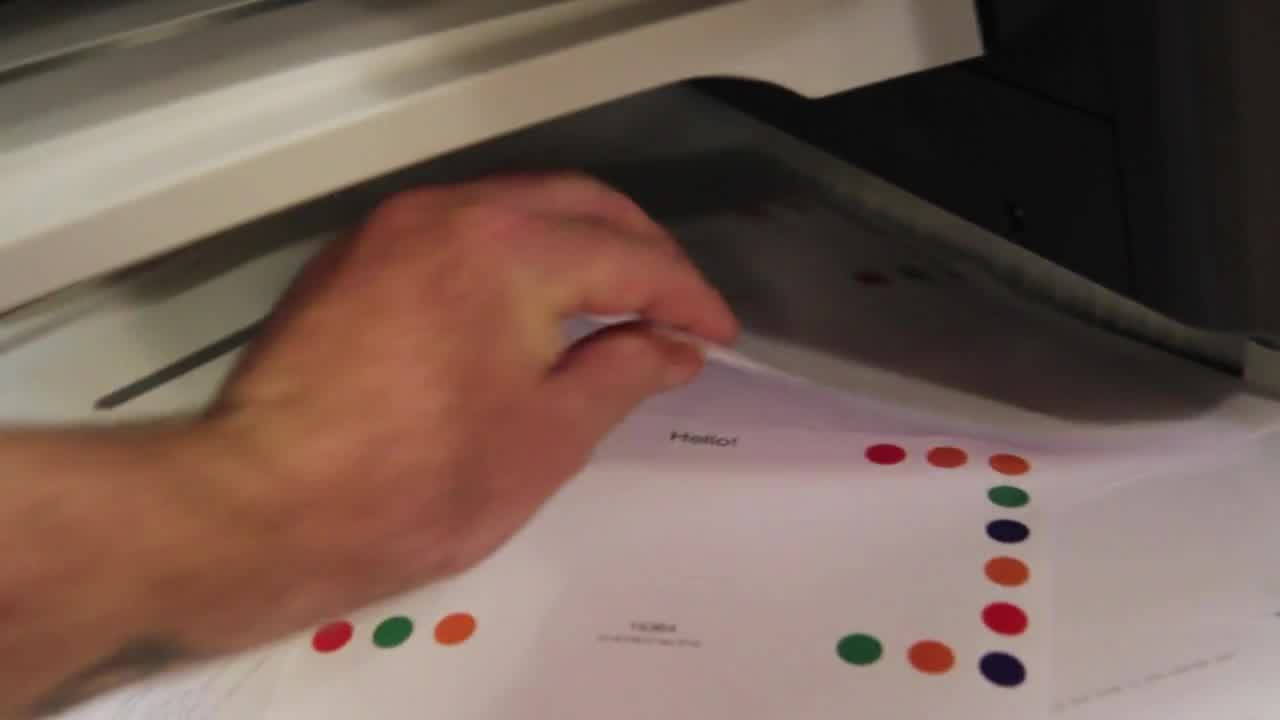
And voila, your code becomes physical. You can bring it to any activated zone, place it down, and as we'll see, your code will run.
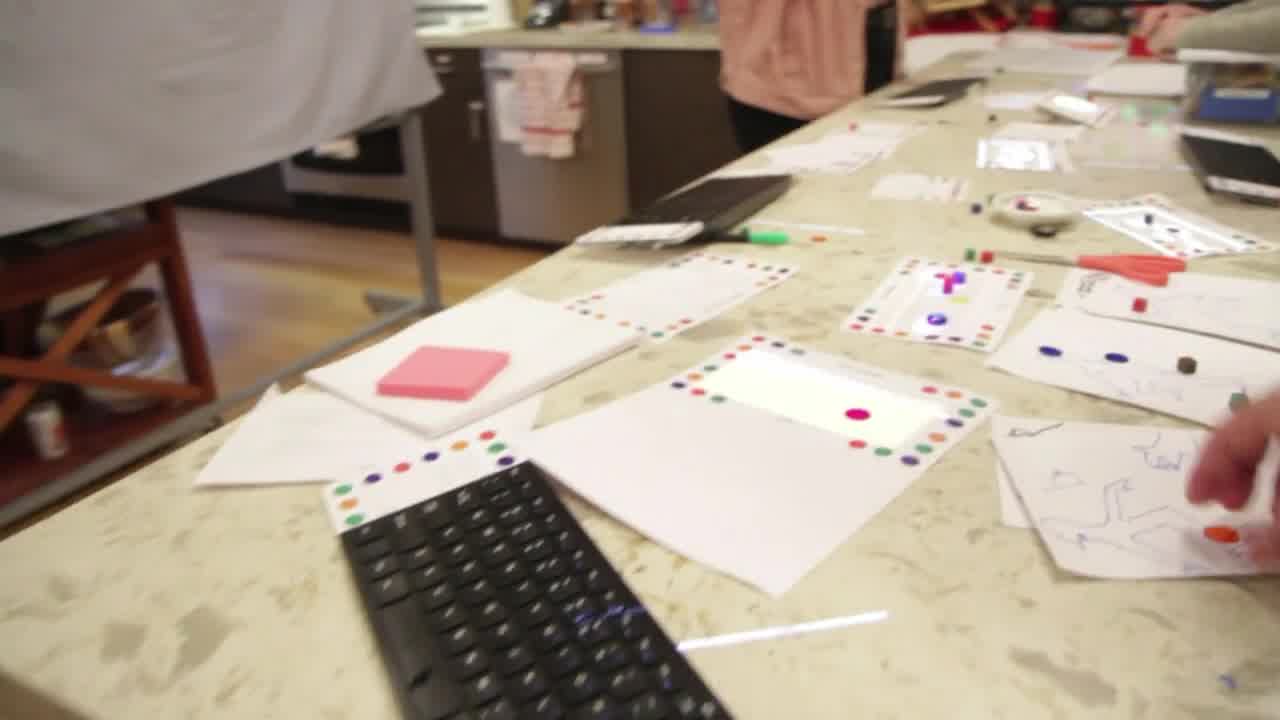
Of course, sometimes when you put it down, there are bugs, which is why it's flashing red there. The future is still going to be a bit buggy. I'm sorry about that.
But all I had to do was press that print key, and now I have my very own physical piece of paper with my very own physical code.
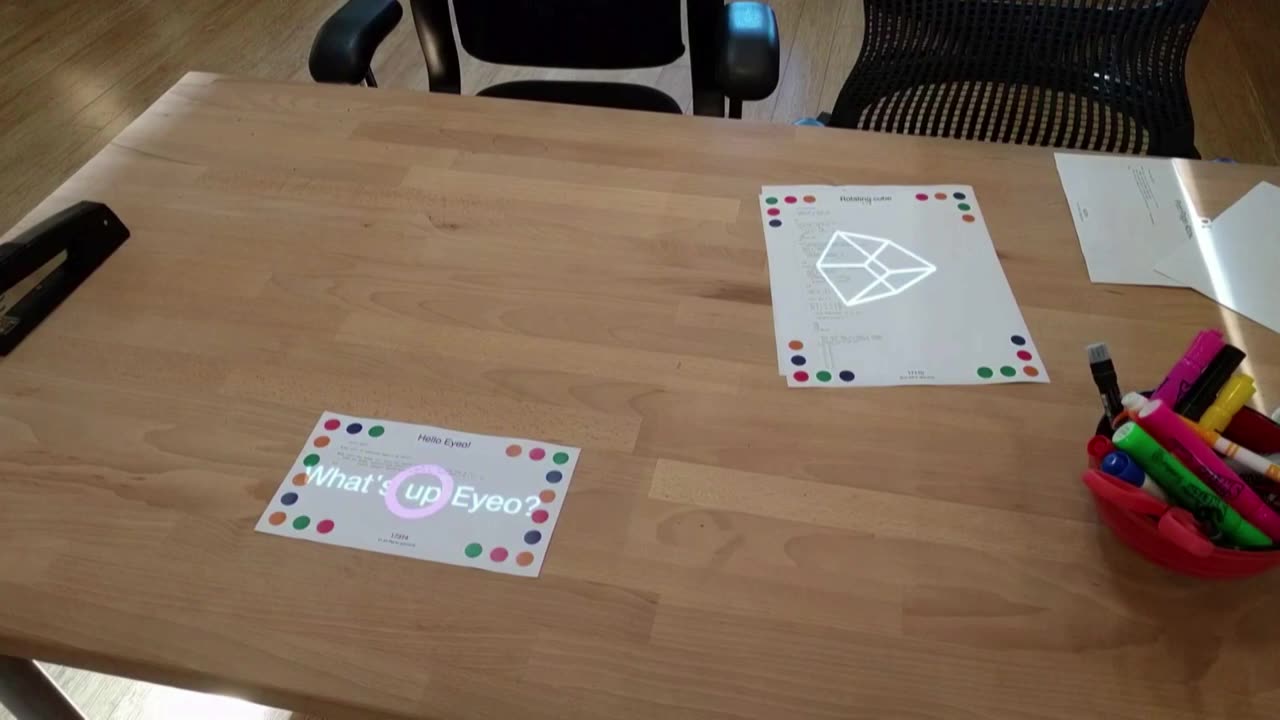
And once that code is physical, it's totally unchangeable.
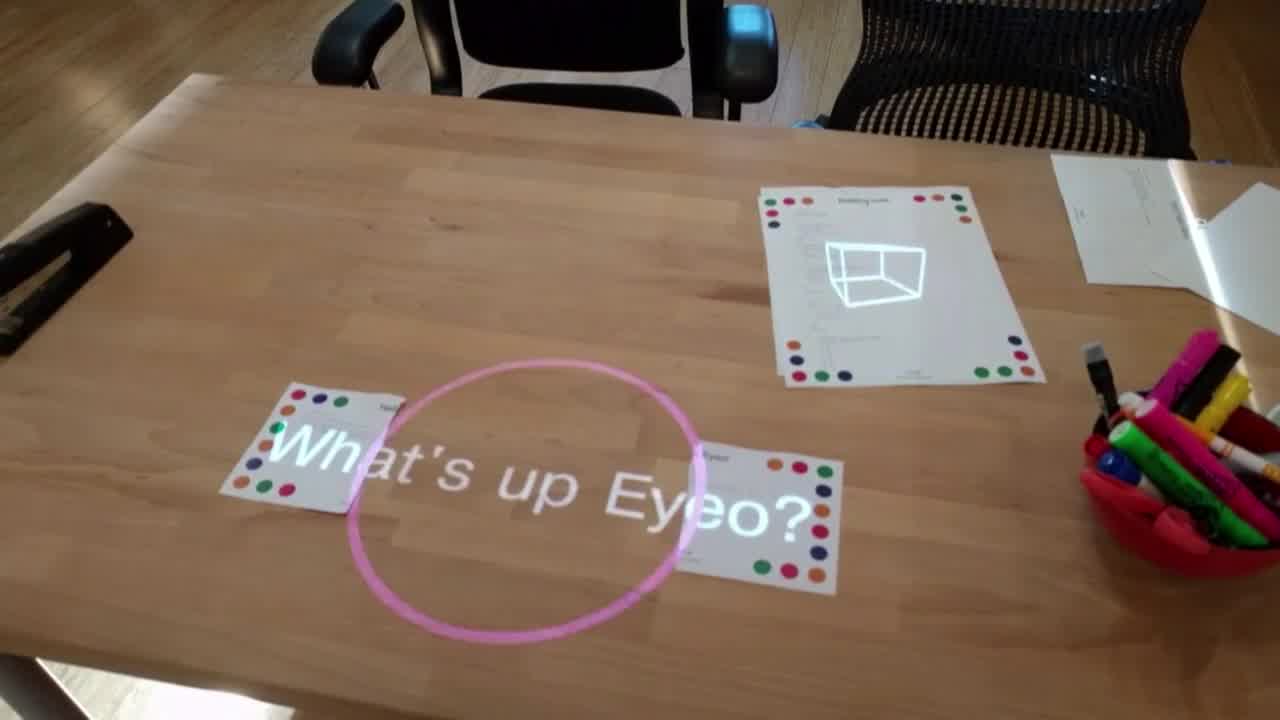
Well, it's kind of unchangeable.
What I mean by unchangeable is that when code is printed on that page, it will always be code that's printed on that page. The code printed is physically unchangeable.
You can walk up and edit the code, screw around with that code as much as you want, but you'll always be able to, by default, revert back to the code that is physically printed on the page.
And, of course, the system also lets you know when the code has been edited.
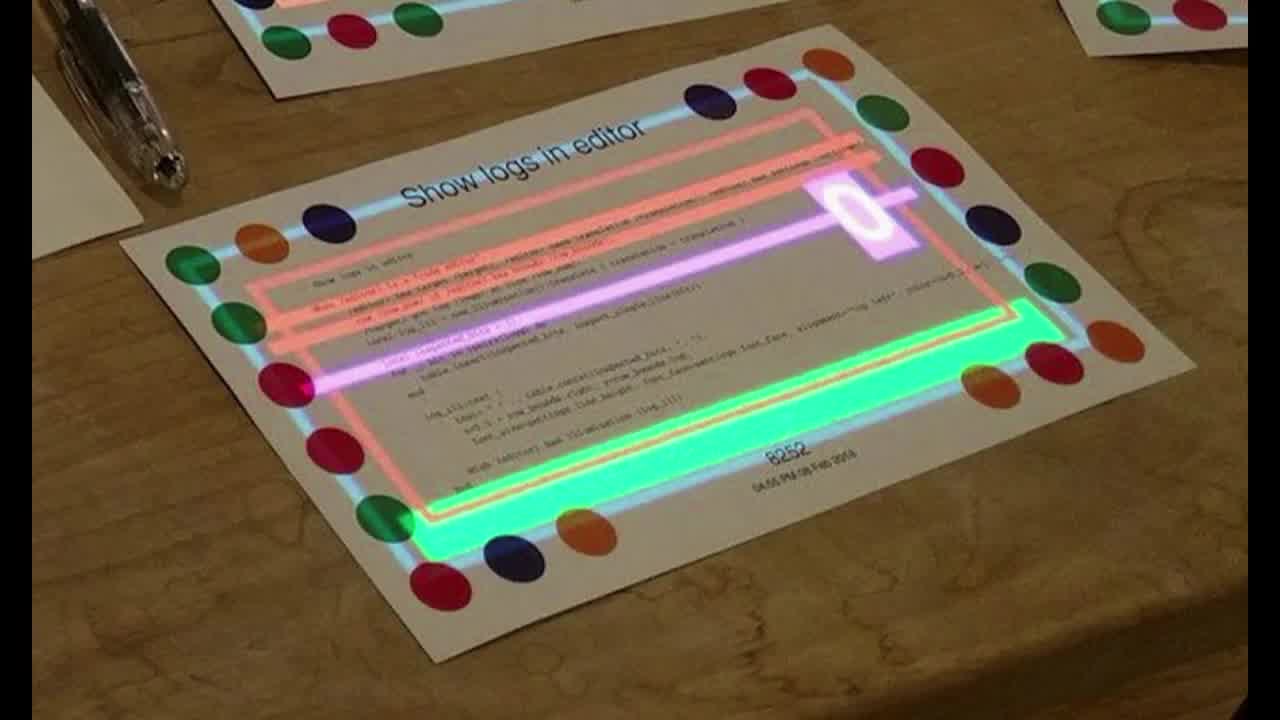
It's a bit hard to tell, but there are those red and those green lines that tell you which lines of code have been deleted and added. What lines of digital code are different than what lines of physical code. Like get diff markers IRL.
And these sorts of safety features mean that anyone can come up to any code and play with it, riff on it, create their own version of it, and the original code still stays on the page and still is safe.
It's okay to play. It's okay to try something new. It's okay to screw up.
Mistakes aren't just okay. Mistakes are actually encouraged.
But if you do make some changes and it isn't a mistake, you actually like how they feel, you press print, you go pick up your new page.
So the process repeats. You tinker with some code, you make a change that you like, and all of a sudden you have another playful toy that is open for everyone else to alter again and again and again.
And of course in the span of that game jam weekend, this happened again and again and again. For example, May-Li and pals were inspired by the dot detection code that I mentioned earlier.
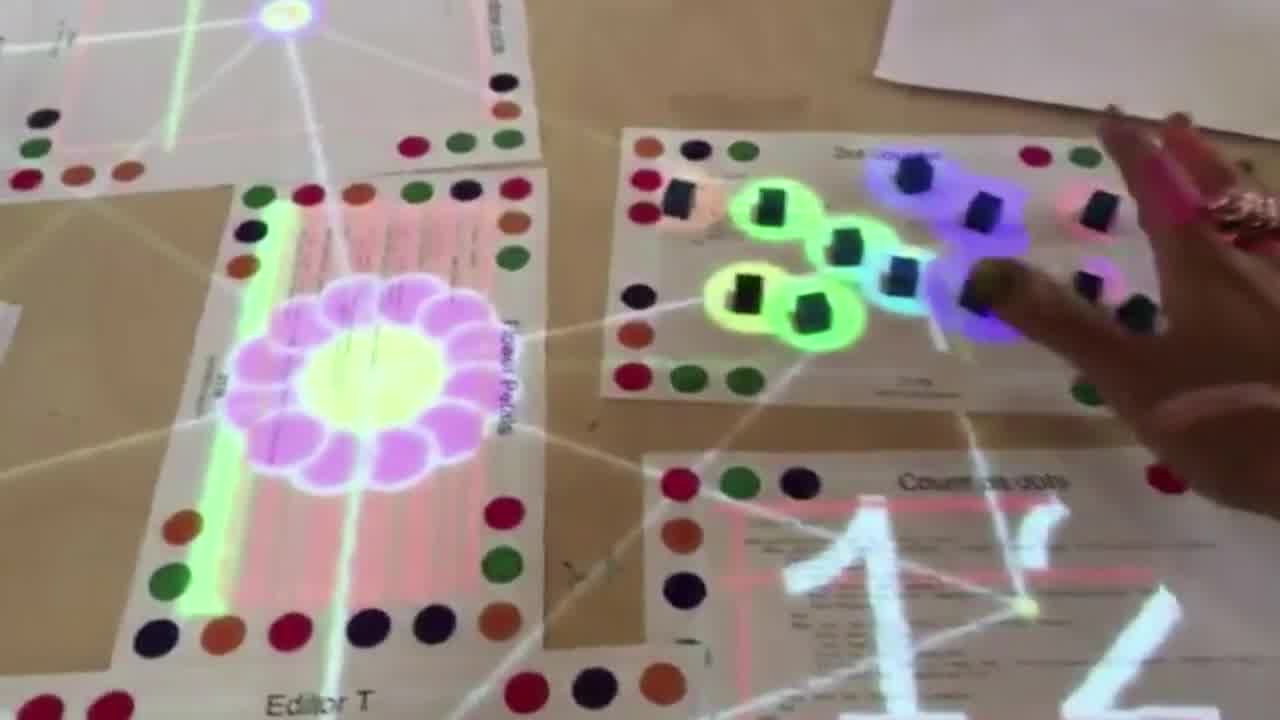
So they made a dot counter which colored dots, gave you a numerical representation, and even made a flower out of the dots. [more]

Kids always really love this one. I don't understand why. I mean, it's awesome, but they love it so much.
Look at that joy.
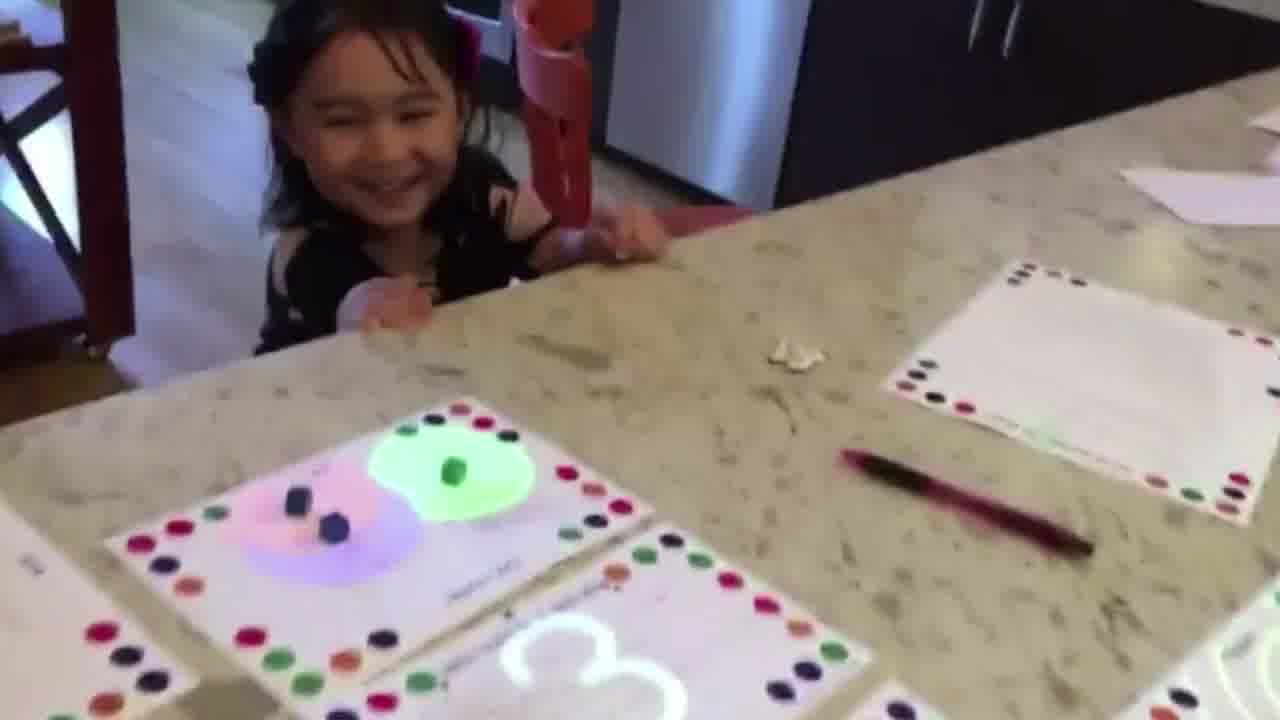
Meanwhile, Ricardo made some rulers, as well as a mini-map. [1] [2]
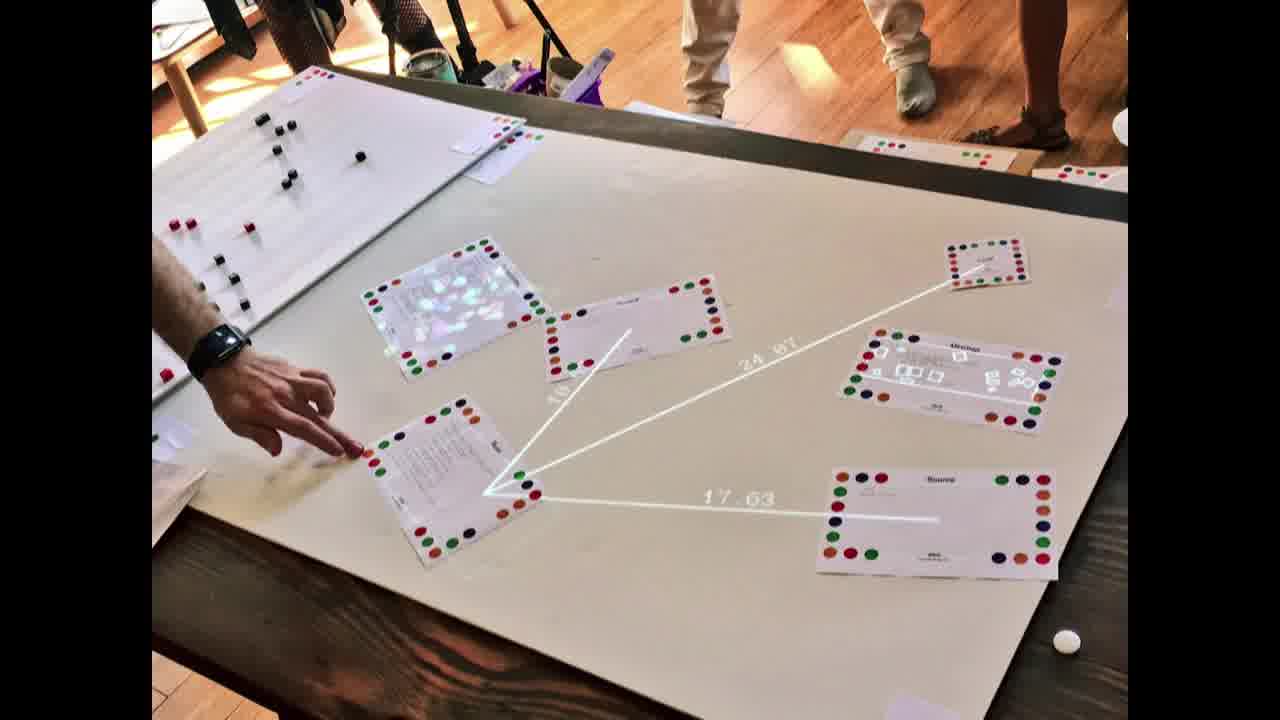
The kids don't love that as much. I'm sorry, Ricardo. But let's zoom in on that mini-map for a second.
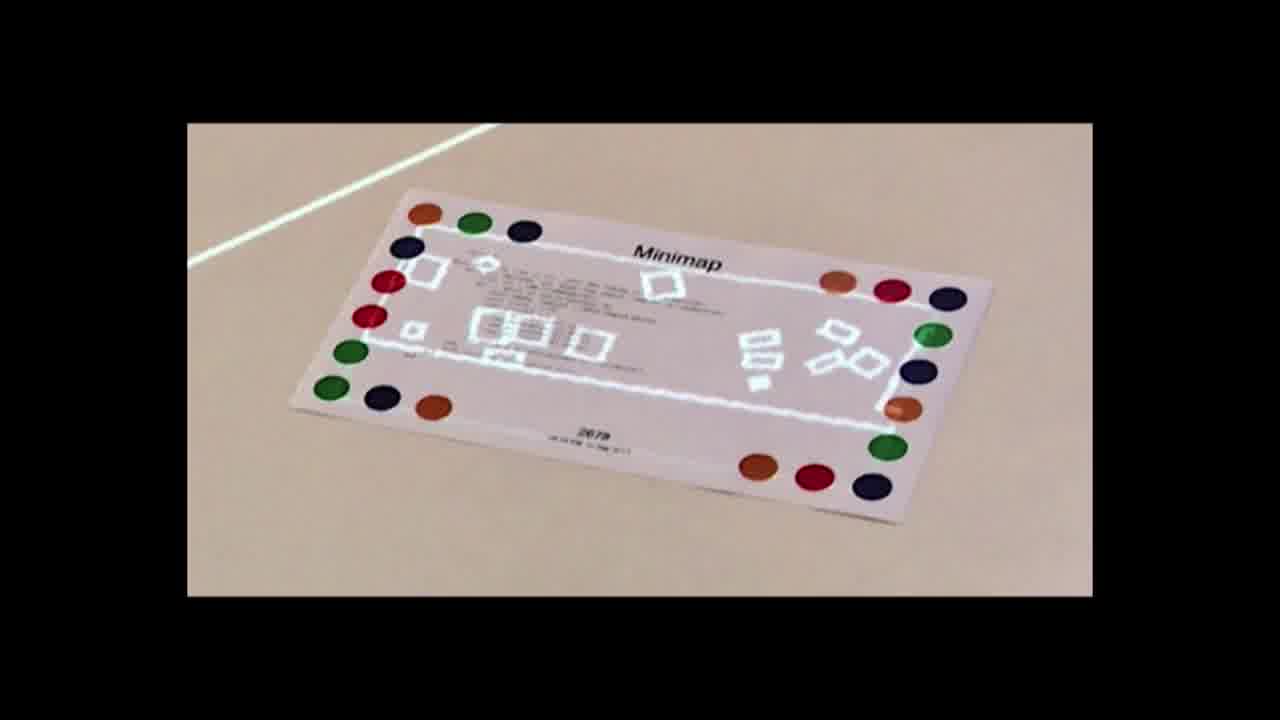
It shows you a live representation of where all the pages are that are on that table. And all of the code to do this is printed on that page. It took less than 20 lines of code to make that thing.
And also, like, these are not experts of the system. They were all people who were experiencing Realtalk for their first time, and immediately were playing, riffing, creating new experiences, and remixing old ones.
But this playing and riffing didn't just happen with keyboards and code. It also happened in the physical world.
Virginia made a Christmas tree that was adorned with dots. [more]
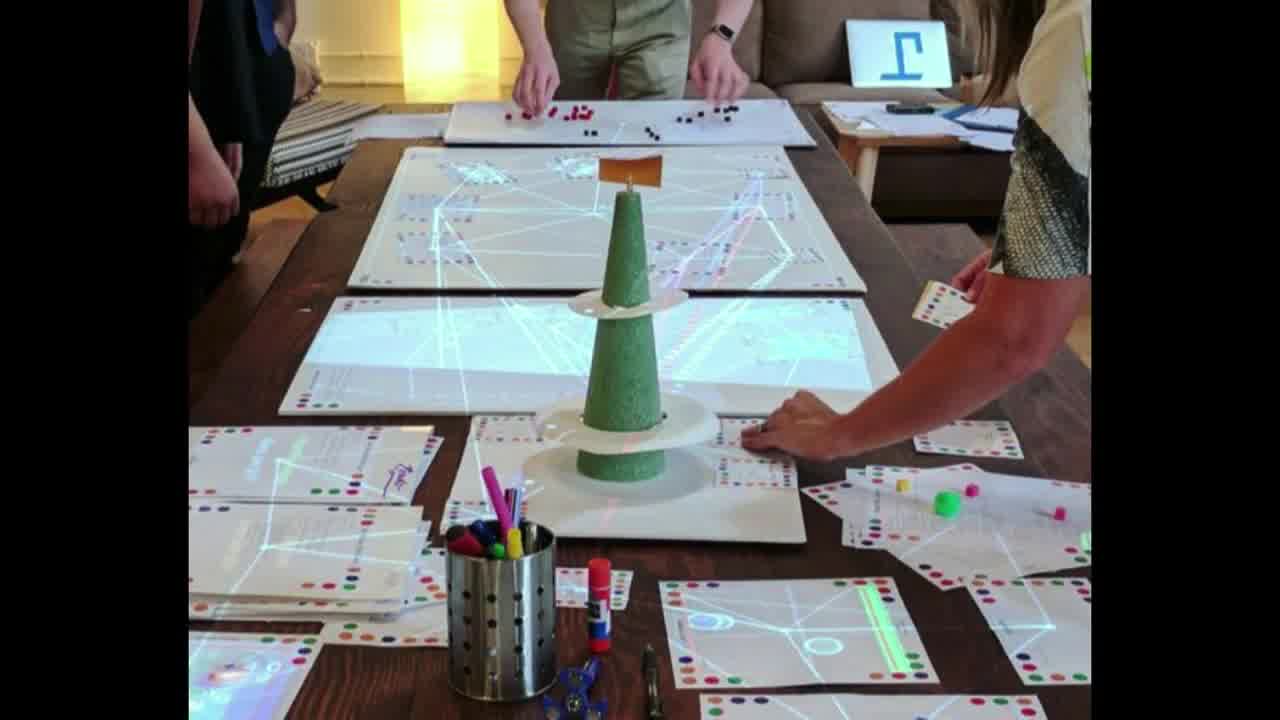
Here's a line-following robot we taped a piece of paper to so it could play different songs.
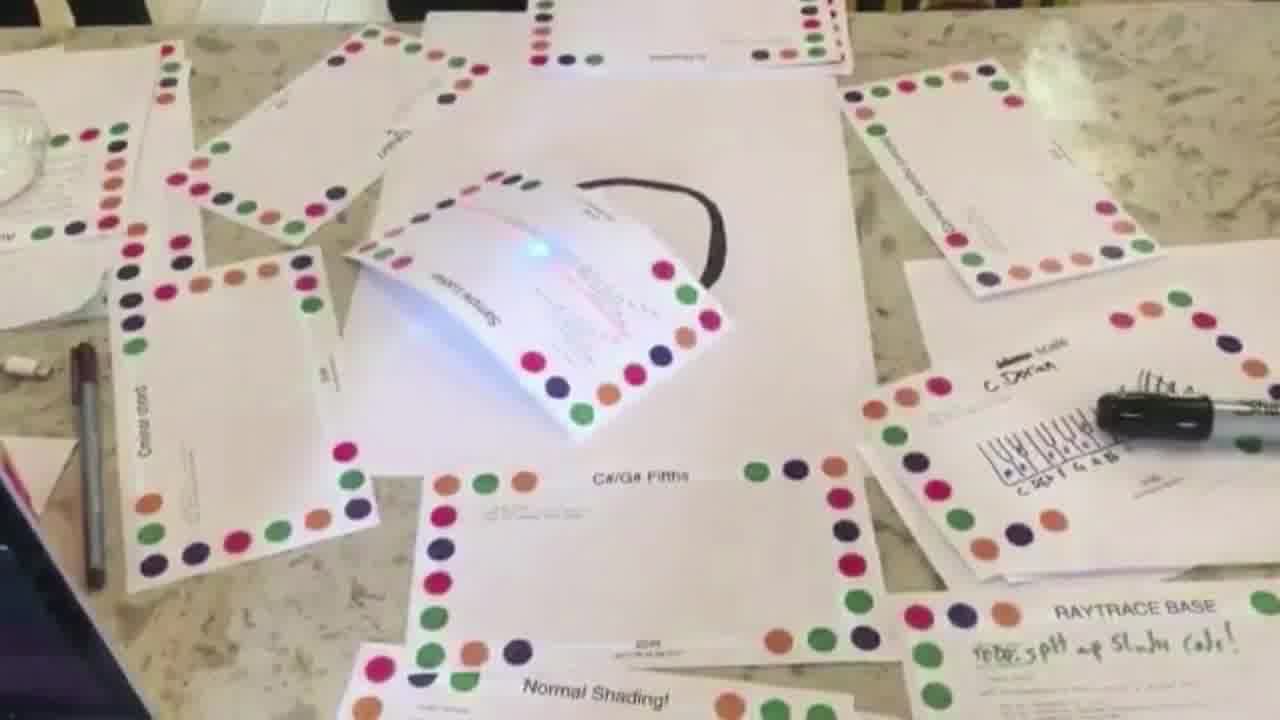
And as the night wore on, we got a little wild and decided to experiment with an RC car. [more]
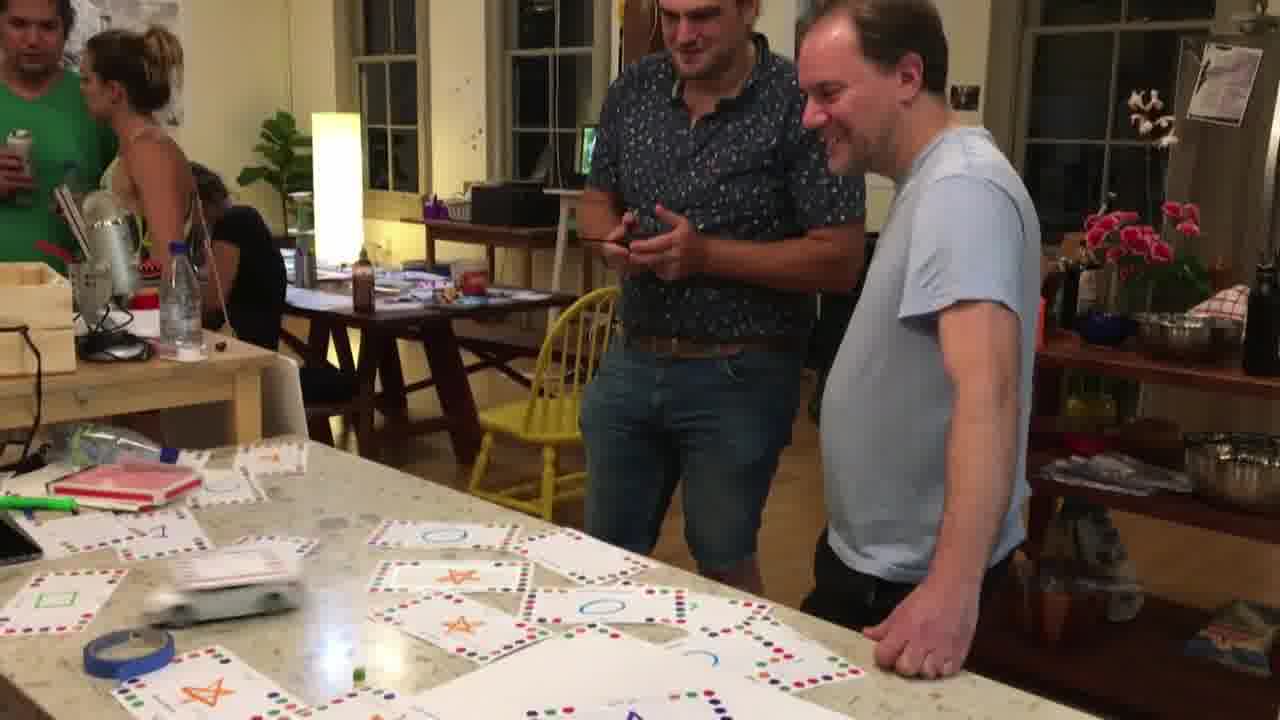
It was a crazy night.
Now both the RC car and the robot were born from the same concept, which not only evolved literally just over the course of the game jam weekend, but actually continues evolving in the space.
It's a pretty interesting evolution to follow, so we're going to take another detour, and we're going to go through the progression of the creation of "music cards". [more]
The original concept, I believe, was created by David Kanaga and Luke Iannini, though the concept of authorship and ownership get a bit murky at the DL.
Anyways, the concept was that you would place a card down on a table, and it would look around for the closest cards that represented note, pitch, tempo, and it would start playing arpeggios. Oh, and scale, sorry.
Basically that's a lot of words. Let's look at the actual thing.
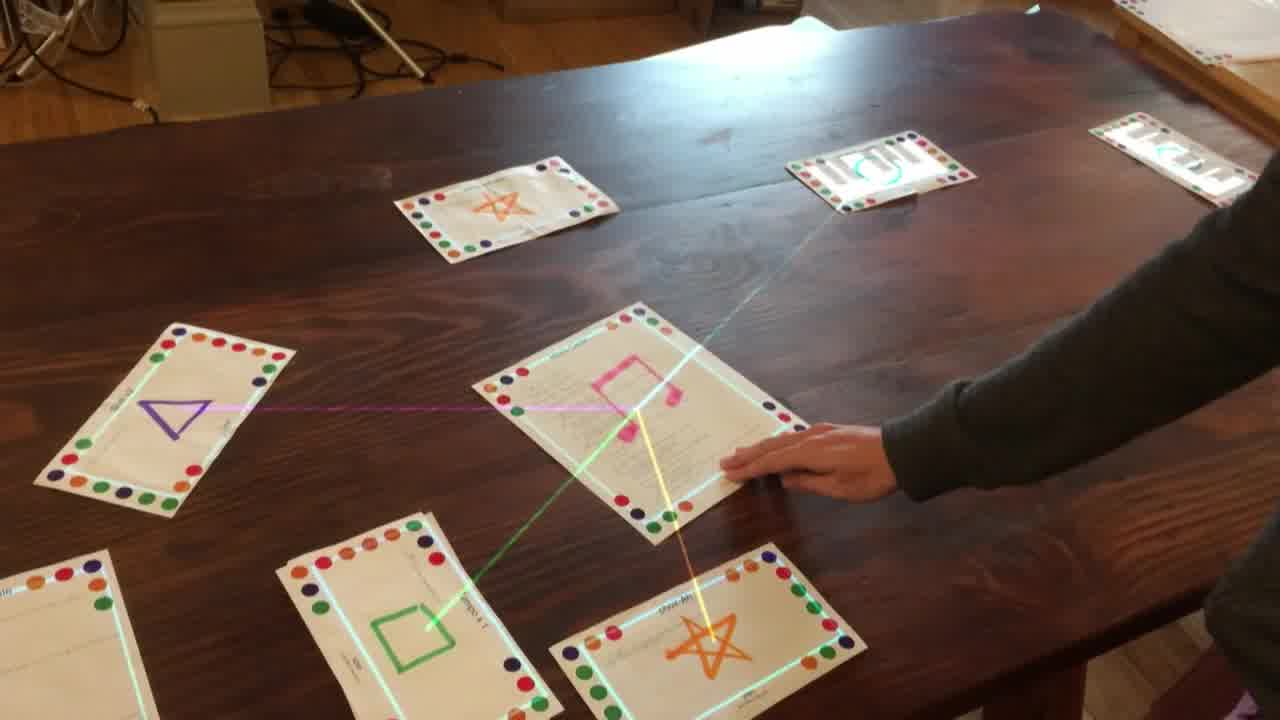
It meant that you could shuffle a bunch of cards on the table and move through song space, making music just by moving a piece of paper.
This original concept did not stop there. If it was an app on a phone, it might have stopped there.
It would be stuck behind a glass screen on a proprietary system, and nobody who was using the app would feel like they could change it.
Agency, not apps, is one of the things that gets said a lot at the lab.
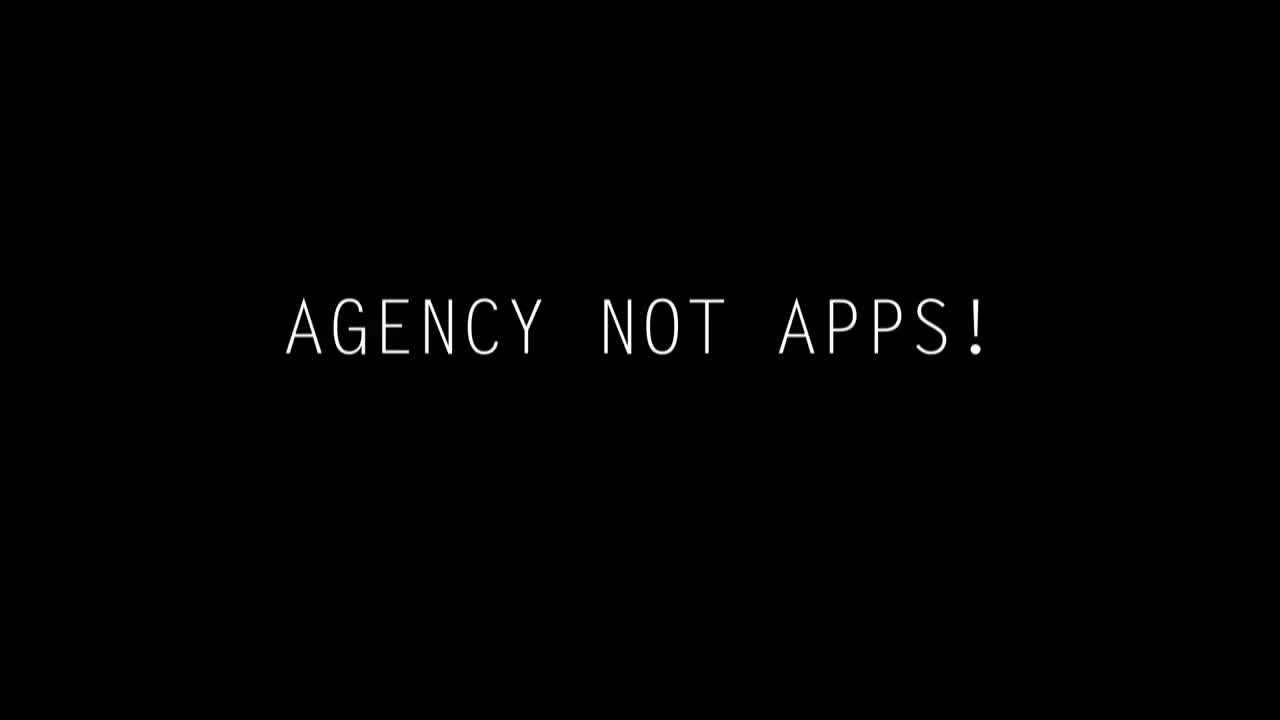
It's so important that Josh and Paula said it earlier. You rarely look at your favorite apps and go, oh, I could make that, and never do you think I could modify that app to fit my needs.
But luckily, this is not app land. This is Dynamicland.

And so that original concept of music cards was now part of the world and could be edited, altered, remixed. And of course that happened again and again.
But what if?
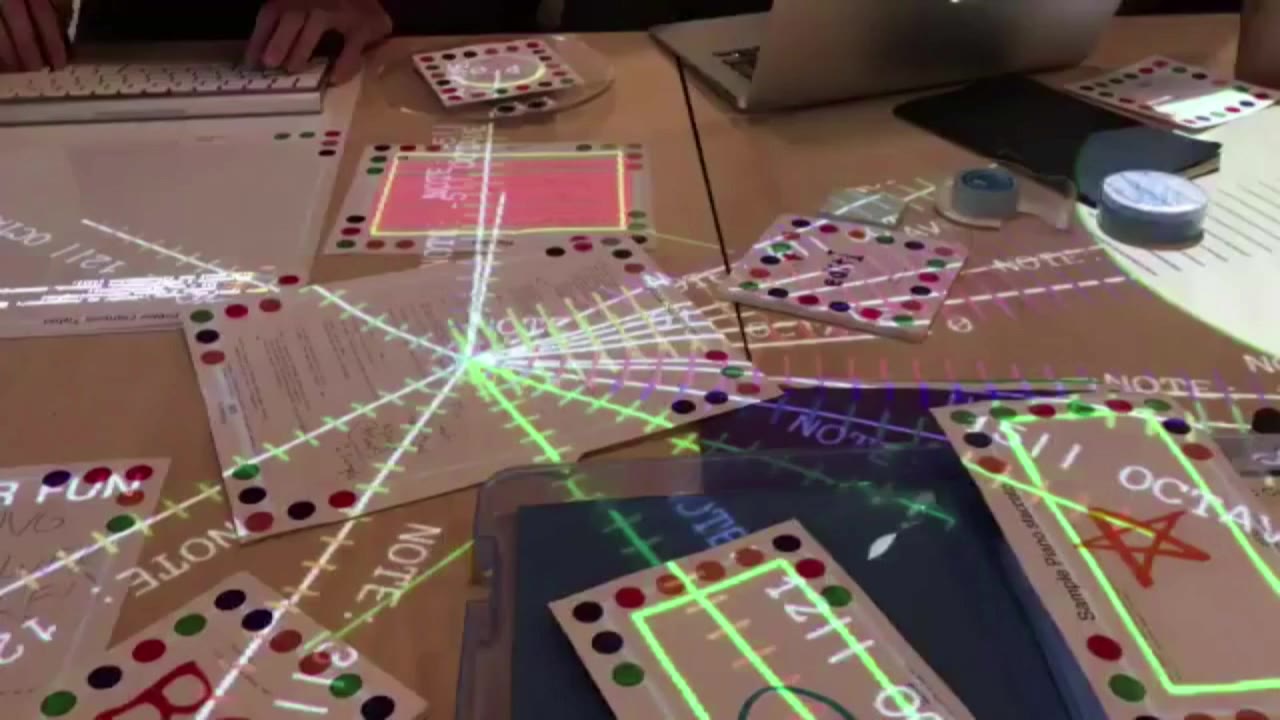
When I made this radial sequencer, which played a note for every page on the table, I made it so you could use music cards to change the scale of the song. [more]
So that little one with the blue circle, that one, is a different scale.
And these are the same physical cards. They've all got those same blue circles.
They work not only on their disconnected island, like in app land, but can be recombined, riffed on, remixed.
At Dynamicland, you get to ask, but what if?
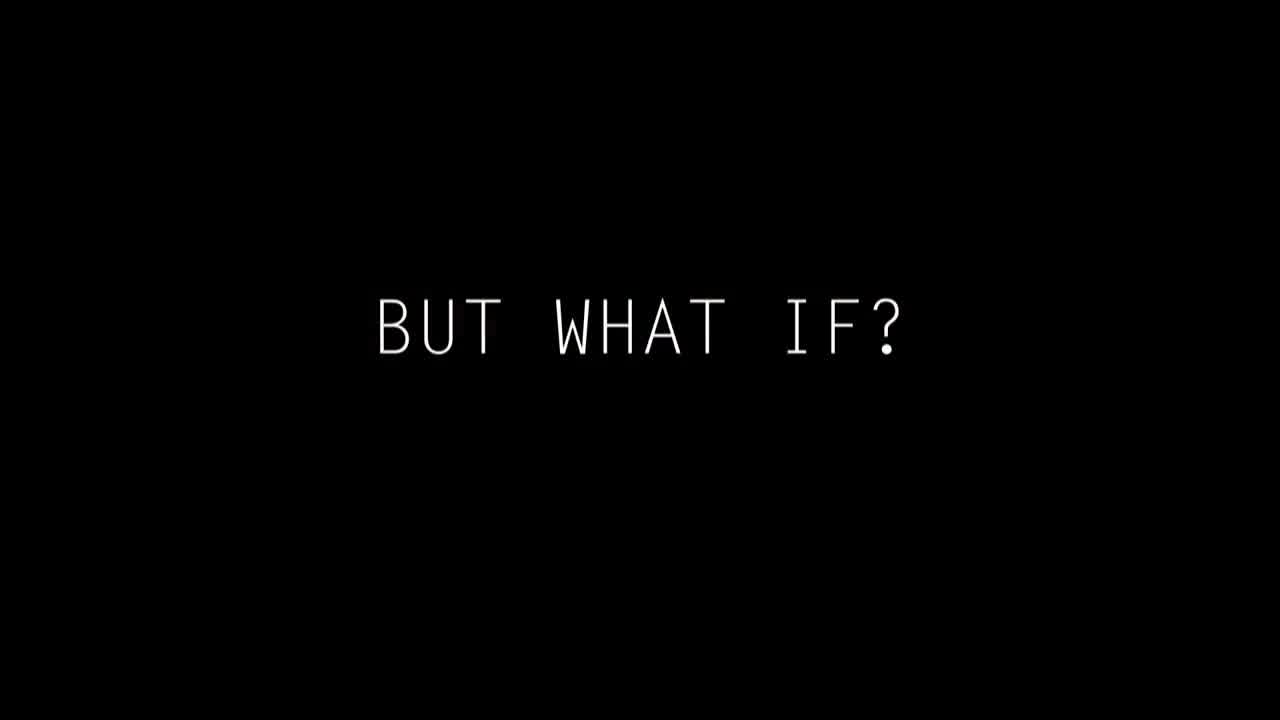
And actually follow through on that question.
My favorite change to music cards came from a piece of Dynamicland lore that I heard just a few weeks ago.
The story is that somebody came in, tried out the music cards, was pretty into it, but said, what in god's name is an Ionian chord?
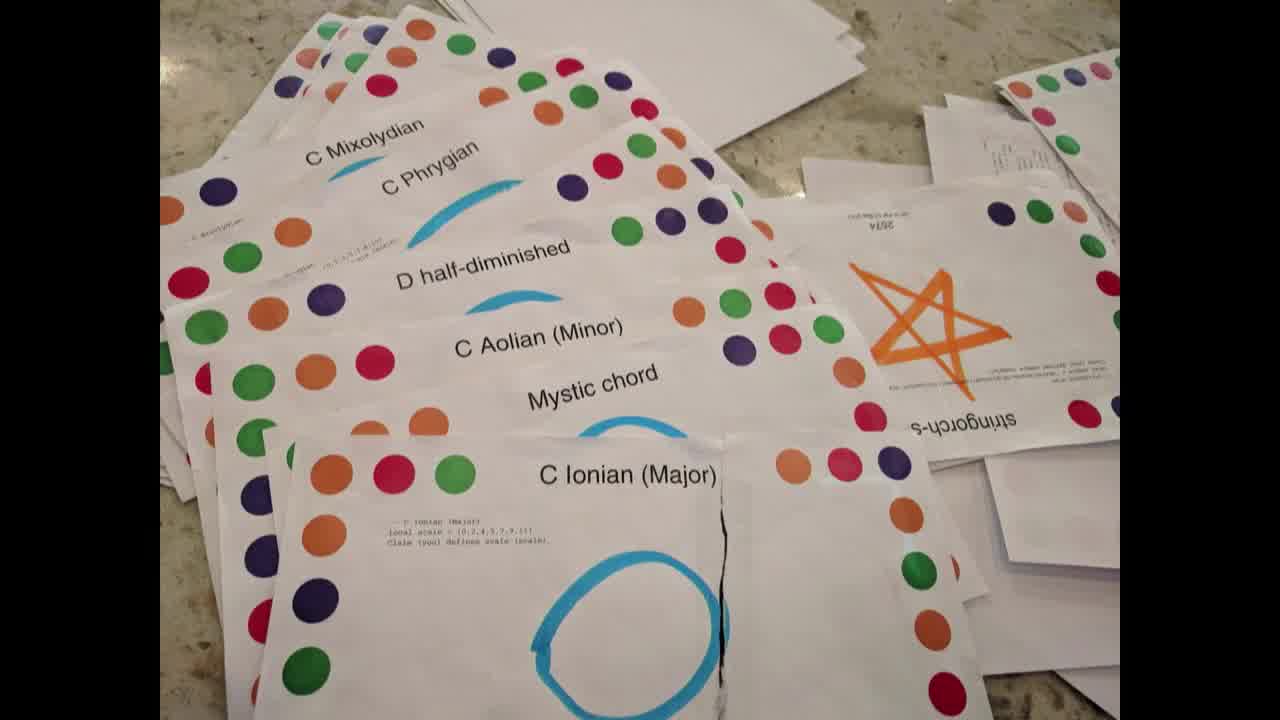
Aeolian? Phrygian? Mystic? Is that even a chord name? They knew how to play the piano. They knew the different notes. But they didn't know the theory.
Luckily, they were there with their friend who did happen to know those archaic terms. And so they sat and created a new card. When you put this new card on the table, it projected new information onto the scale cards.
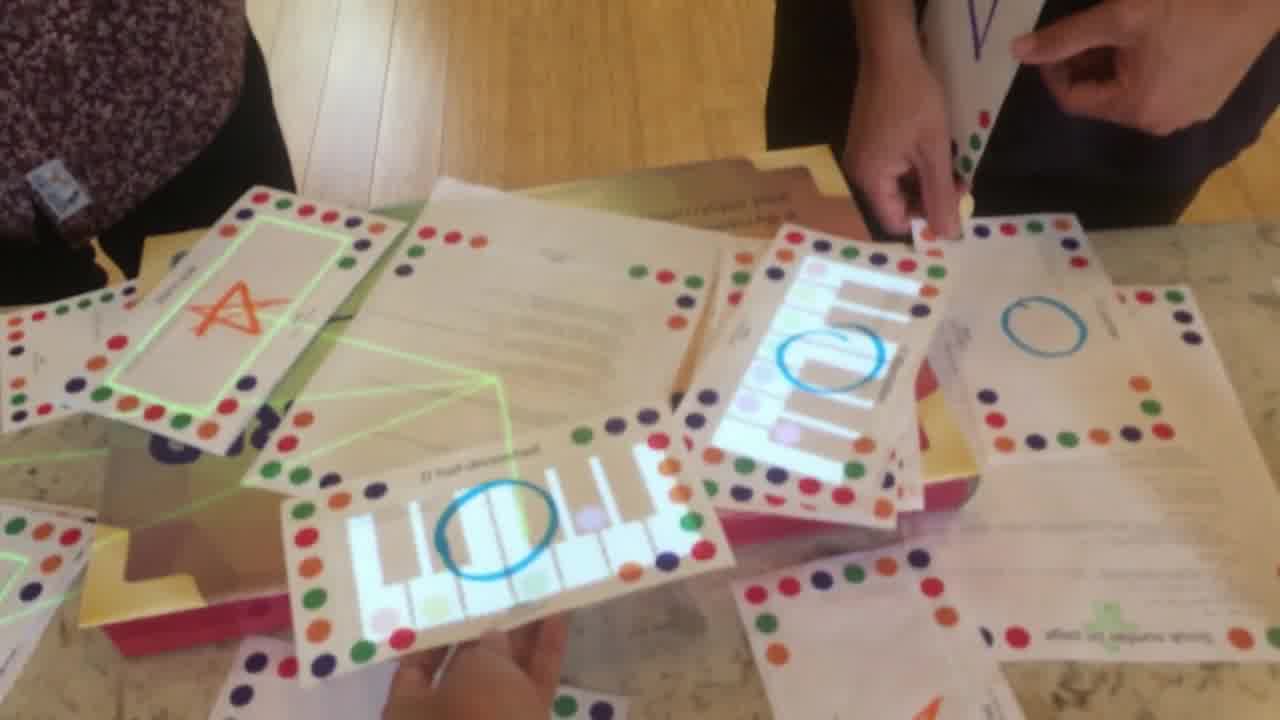
It's a tiny bit hard to see in this video, but those same blue scale cards now have piano keys projected on them. And then on top of those piano keys, a second set of dots is projected to tell you which keys are part of which chords.
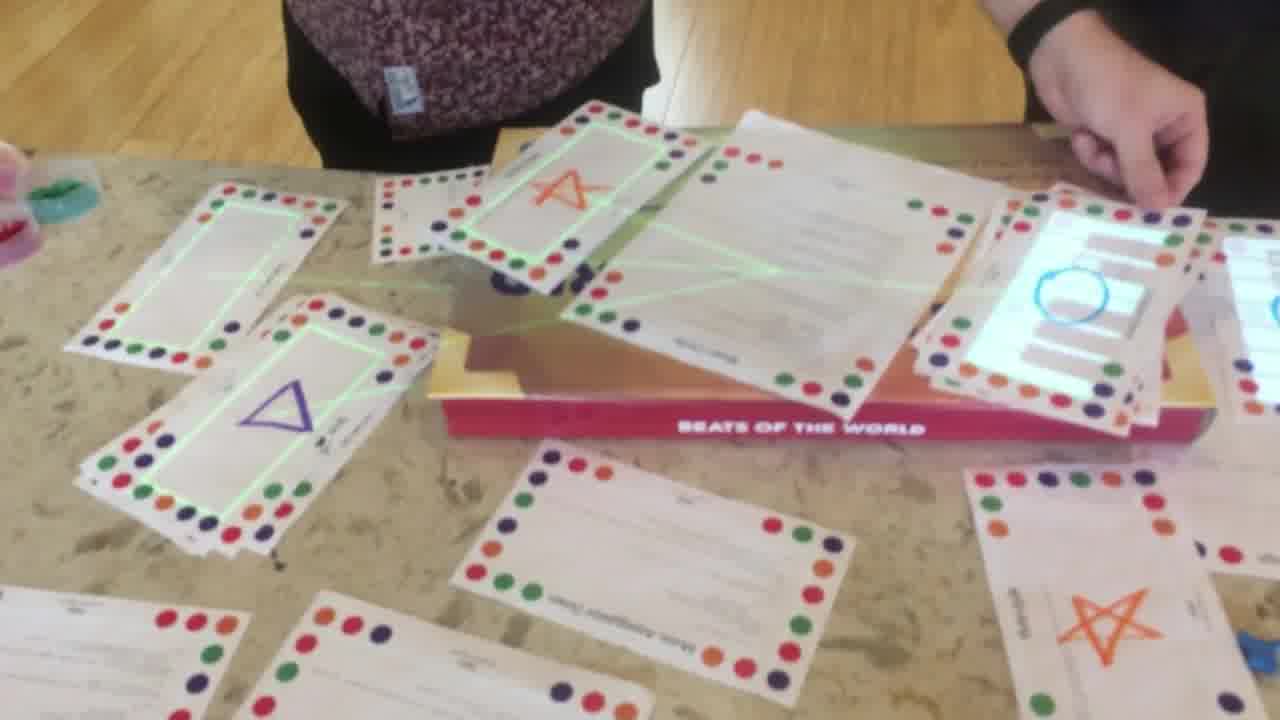
All of a sudden, that person got a deeper understanding of what those chords meant. They got to understand them in a more humane way.
They were two people who were in a space made to hang out with some pals and try to learn about the world a little bit more.
But the riffing didn't stop there.
Somebody else totally separate from music cards, I think this was Ricardo again, actually, made a dial. [more]
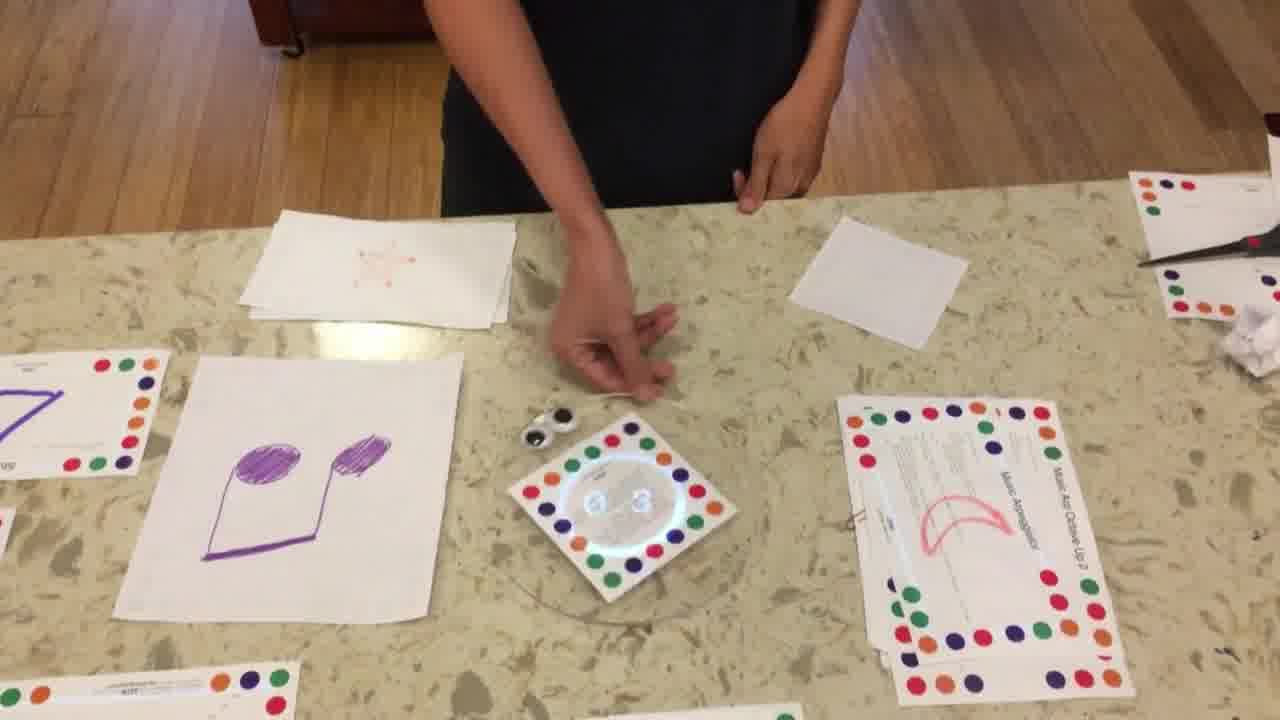
Oh my god, I love Ricardo's creations, even though kids hate them.
And so basically, somebody else took and made that card there, and made it so that you could use the dial to select a pitch for the music card. [more]
So listen to the pitch in this one.
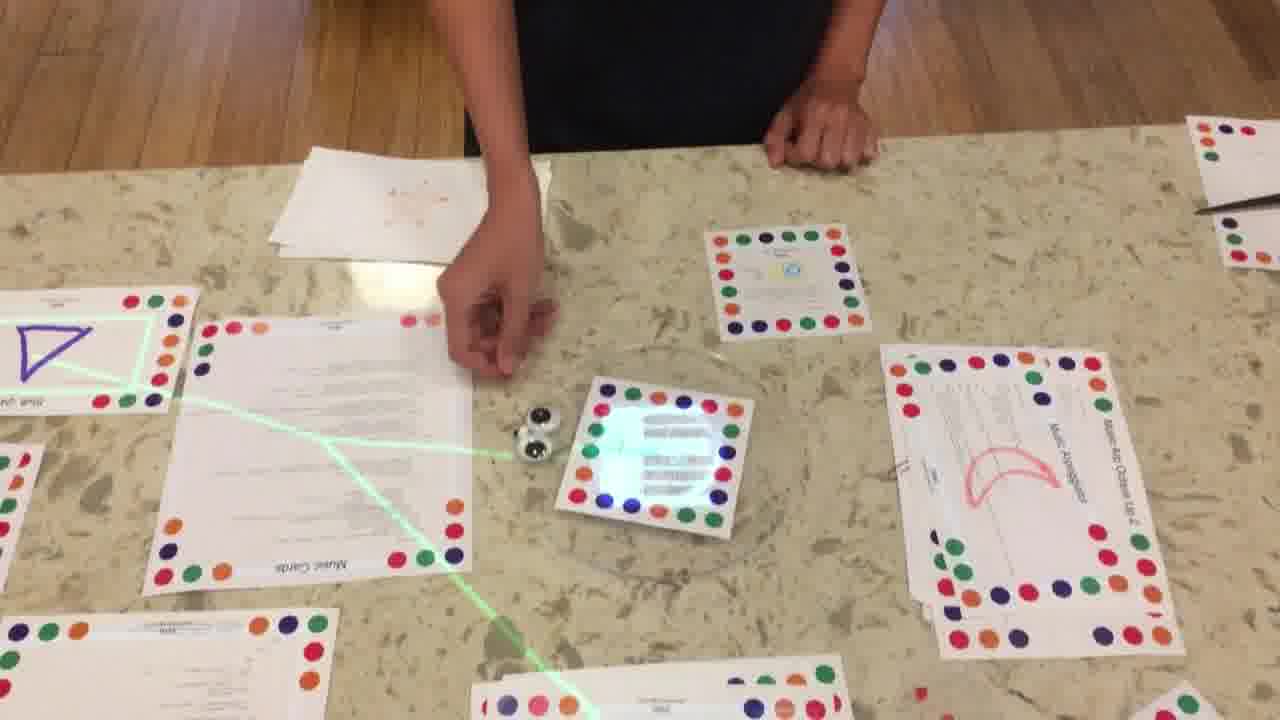
And of course, this little doodle was also explored physically with the help from one of the biggest fans in Dynamicland. [more]
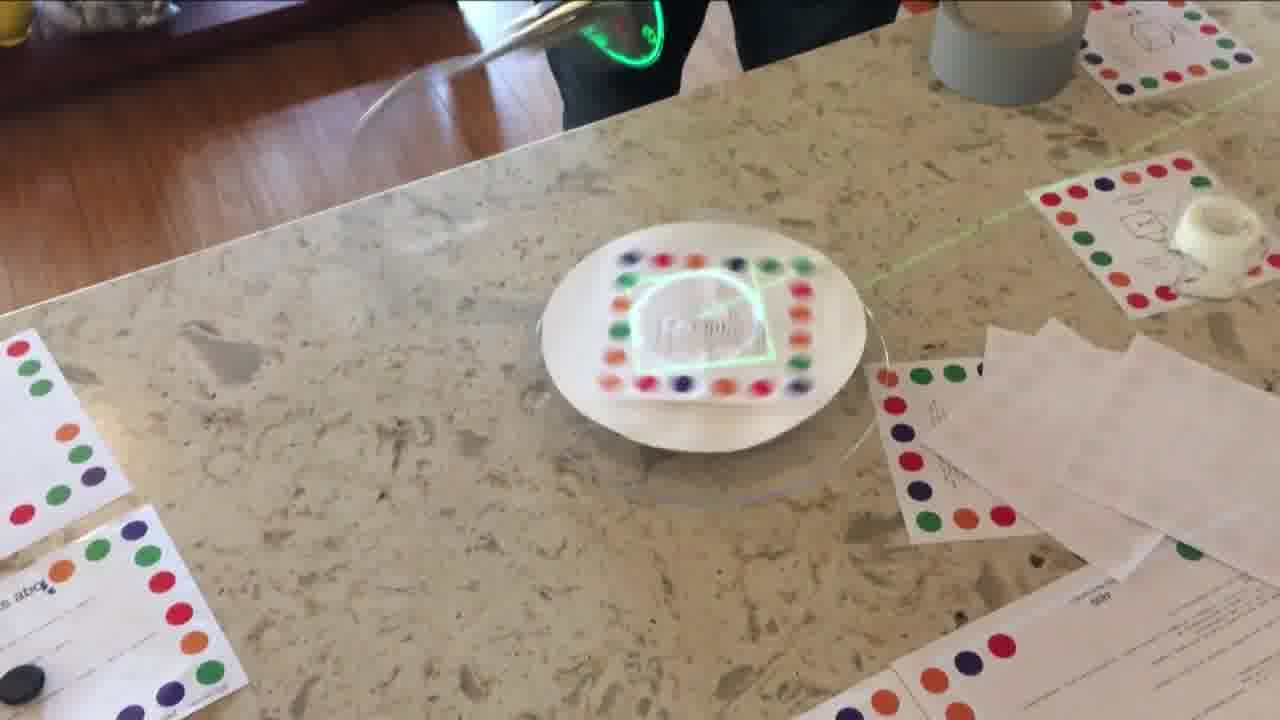
Dynamicland becomes this fluid of ideas, tools, and toys, and people, bubbling and percolating until the oversaturated solution suddenly crystallizes into an instance of an idea, forming, reaching up to answer a human's curious what if, and then just as quickly falling back into its roiling rainbow and sometimes messy mass of concepts, language, and humanity.
I could keep going with music cards, but we're pretty far in, and I haven't even finished the first game jam. So back to the story.
While other people were riffing and sketching, I was trying to show off. I had been so wowed by the space, but it hadn't fully sunken in.
So I was sitting in the corner, mostly by myself, coding shaders on my laptop.
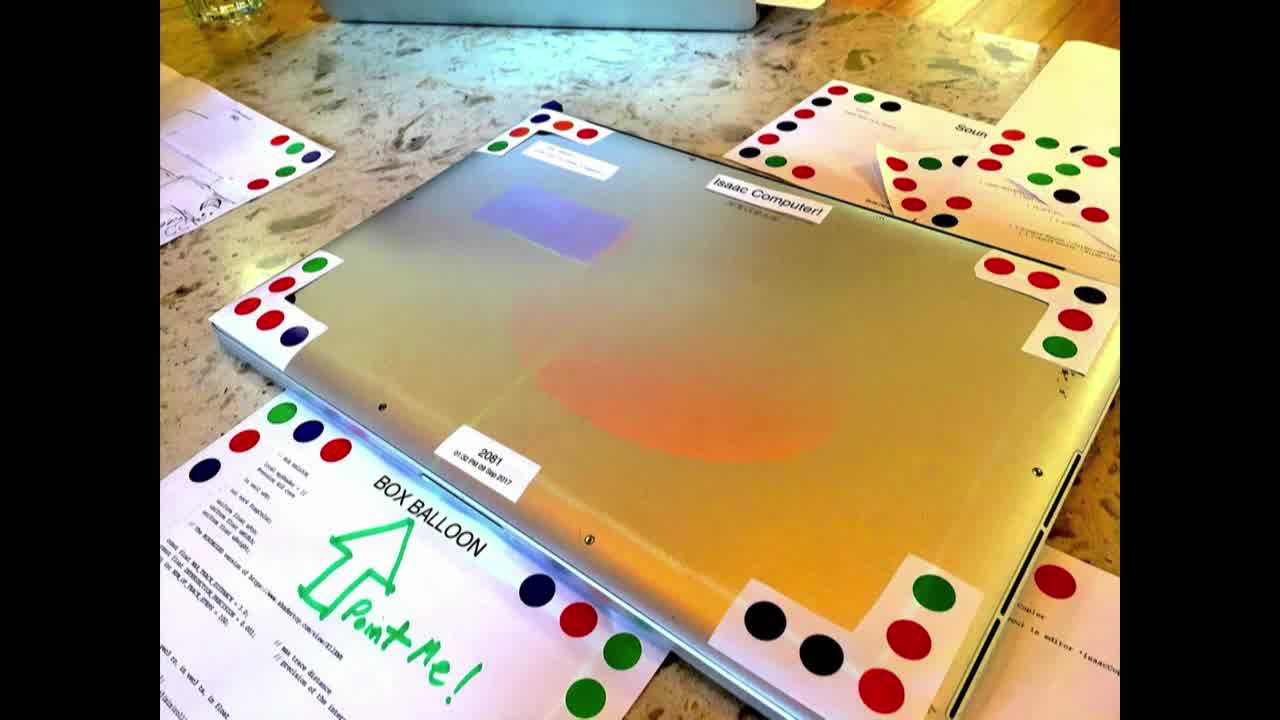
Literally. While other people played and laughed, I tried to make a system for ray tracing that would let you put down different functions for shapes and different functions for colors. [more]
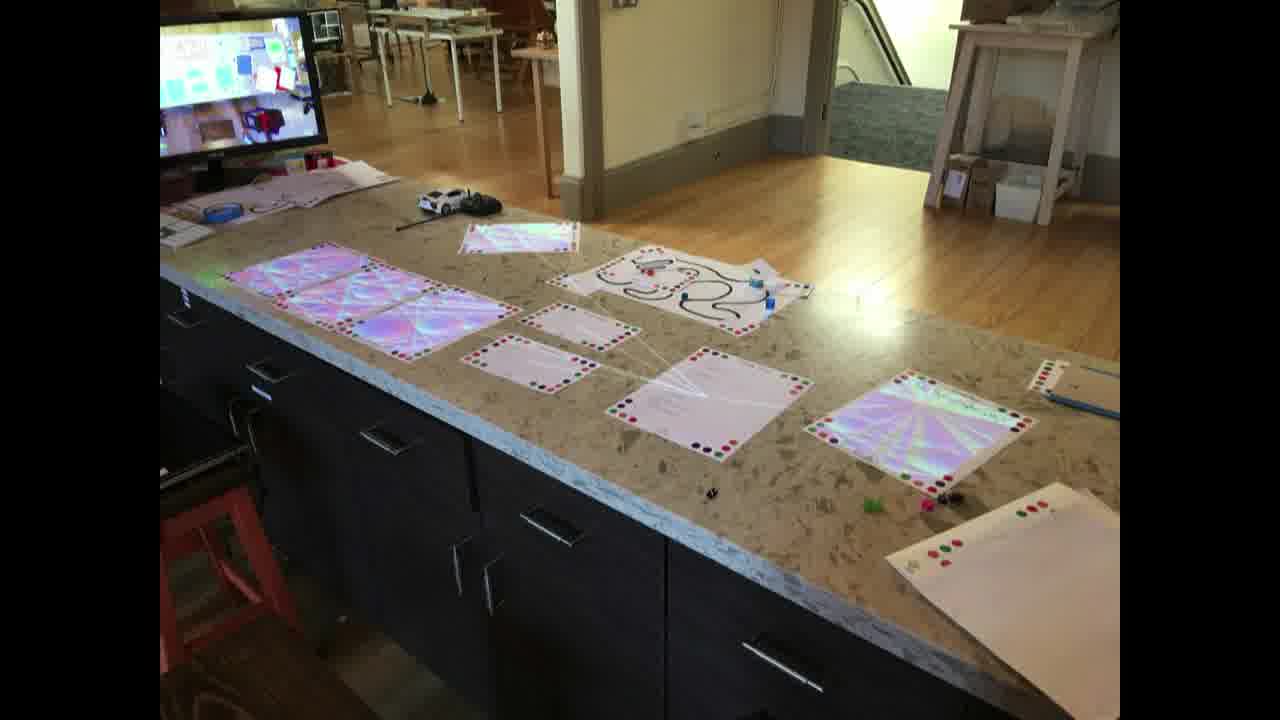
I was so excited to prove that I knew so much about graphics, so much about computers. I was a real programmer, and I knew it.
And after I finished, I had a pretty snazzy image, but it felt so static compared to what other folks were doing.
While everybody was putting eyes on their exquisite corpse creation, [1] [2]
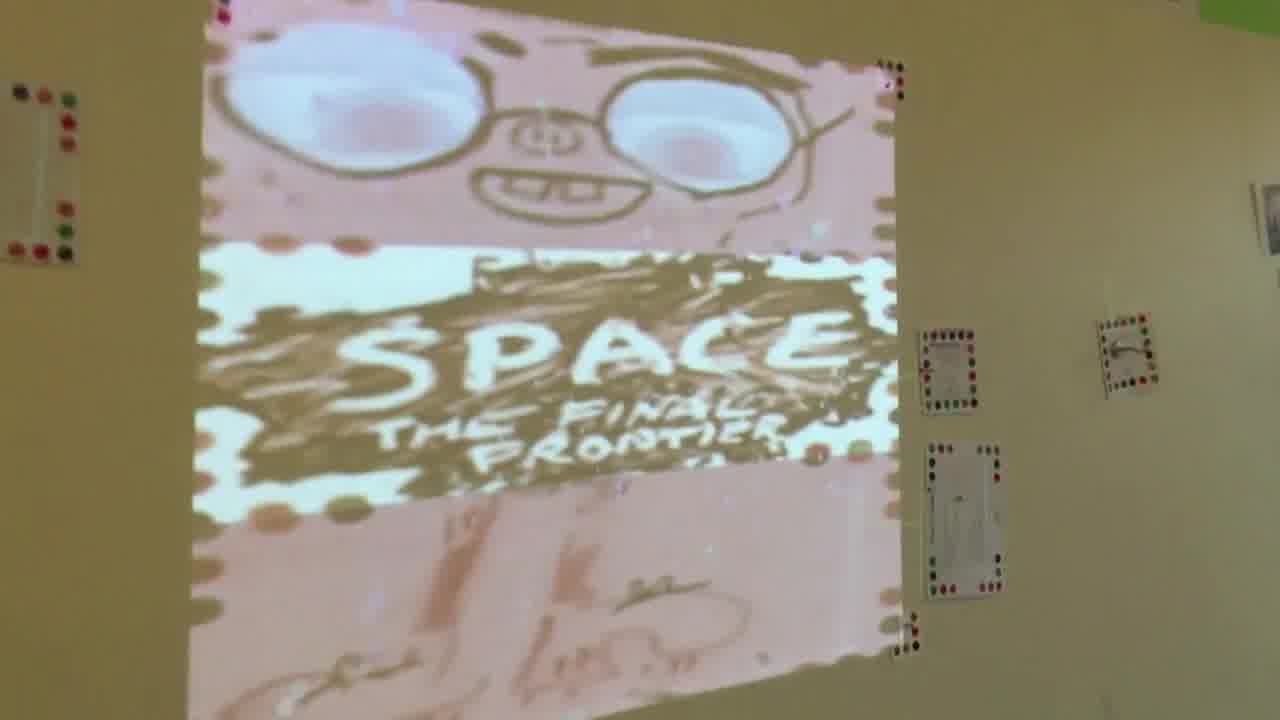
hanging out on the rug, playing with Paula's Beats of the World, [more]
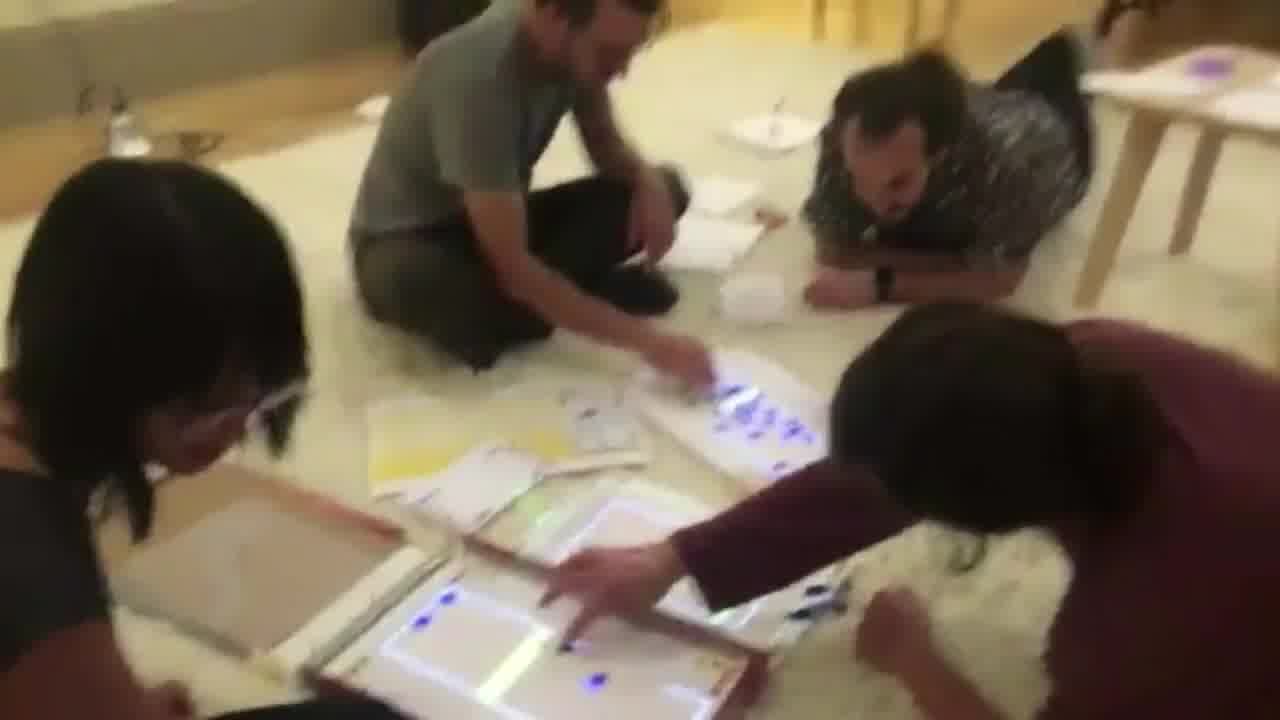
or doing whatever the heck was happening in this video, [more]
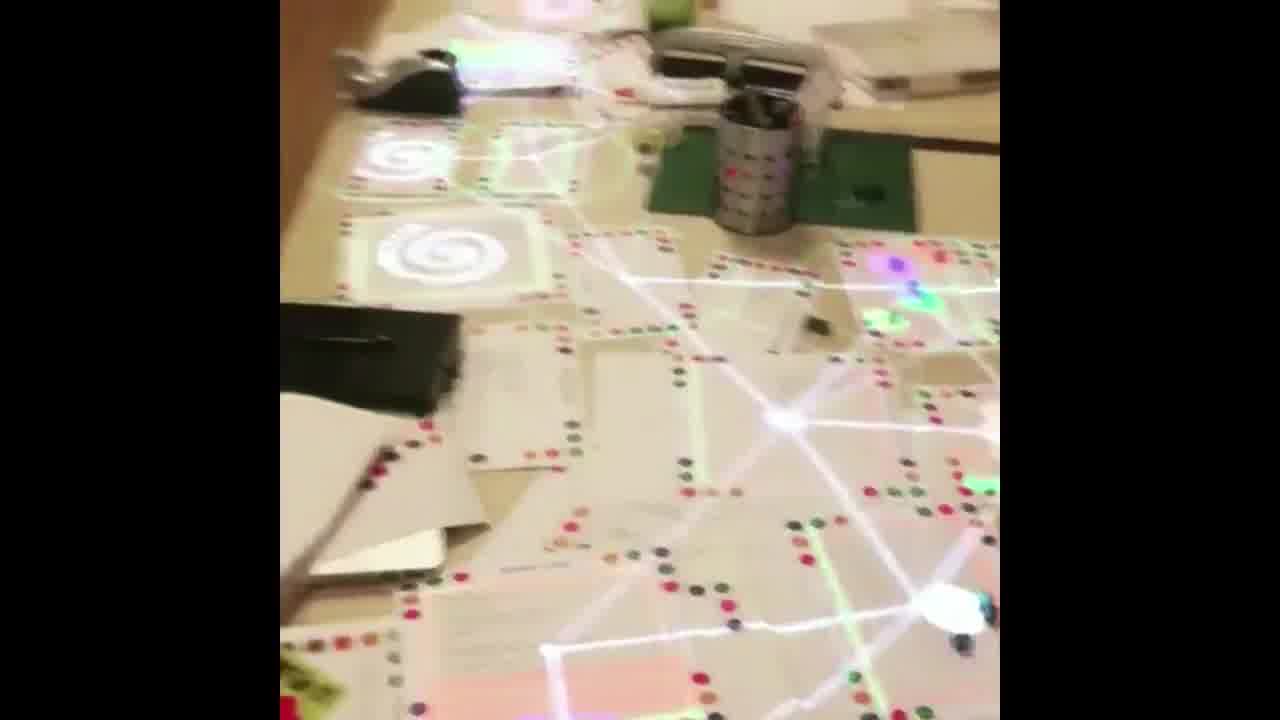
I was just sitting there with a picture on a page.
I thought I was going to make the most impressive piece for the game jam, but instead I made something sterile, not even flopping around. It was like a dead fish. [more]
The fractal was cool. It was realtime, but it was trapped inside a rectangle, still siphoned off into its own little universe.
My brain was broken. From years of programming and staring at a screen, I learned that this is what computation was. I thought that this was the best it could ever be. Images stuck in a screen.
When I hear the word games now, I don't think about running around playing tag.
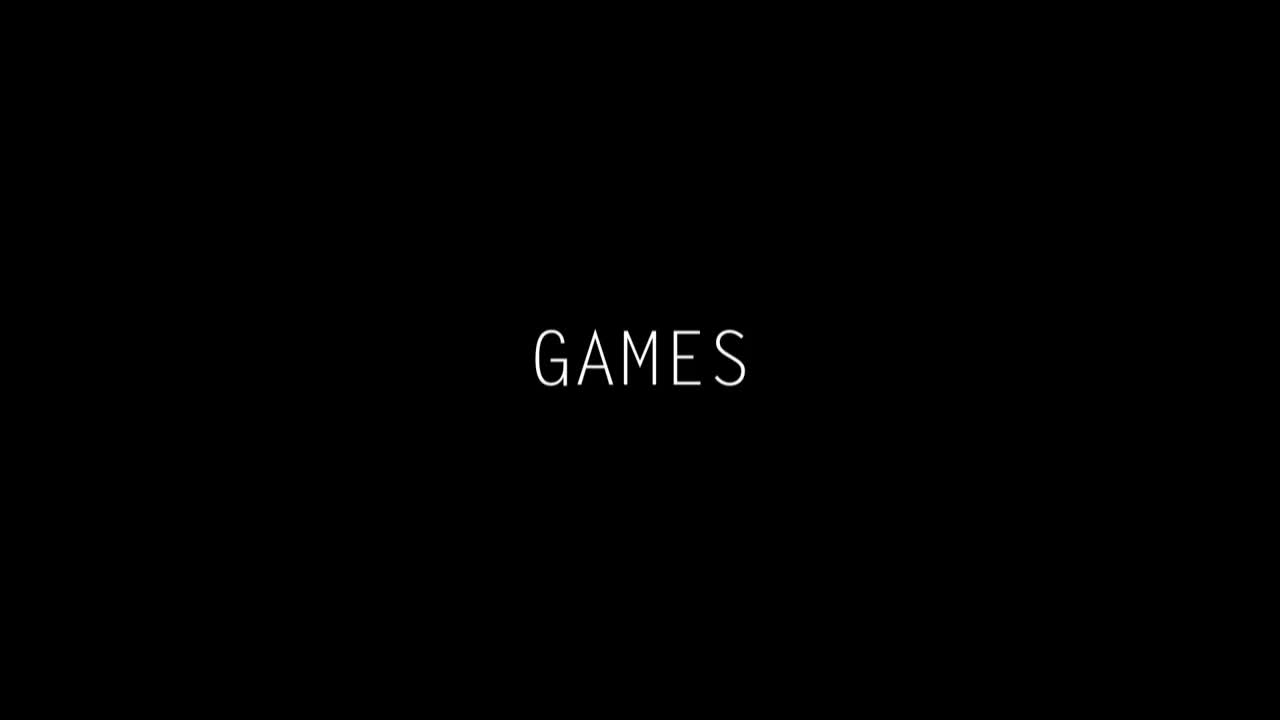
I don't think about stuffing marshmallows in my mouth and trying to say...
I think about Battlefield, Floppy Bird, and Candy Crush. This is not to say that these games can't be amazing, except Candy Crush, but rather to say that computers are so young. [1] [2] [3]
Computers are so young
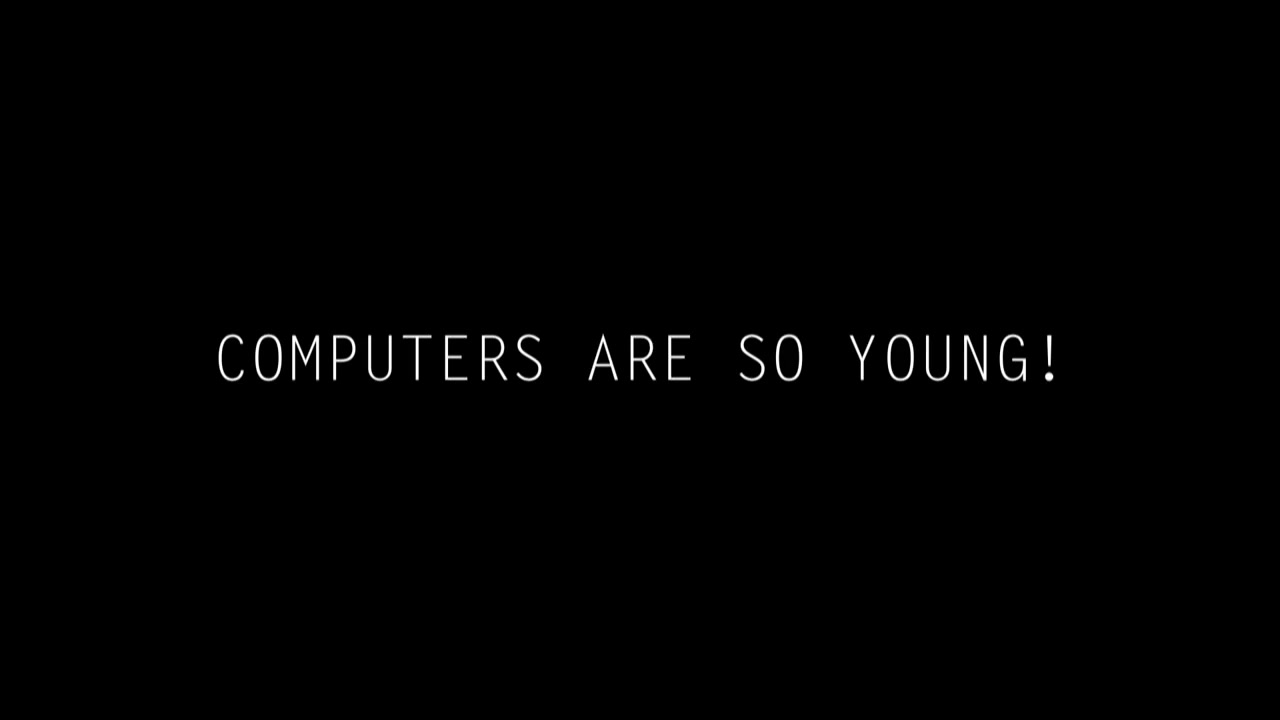
Computation has only been around for a few decades. Compare that to written language and how much it has evolved over the course of thousands of years.
Computers are so young, and it is so terribly sad that we've already decided what they're supposed to be used for.
How isolating they can be. How addicting they can be. How destructive they can be.
When I'm giving tours at Dynamicland, I usually begin by showing some pictures. I say, it's pretty hard to describe what Dynamicland is, but I can certainly show you what it isn't.
I show these pictures, which are posted near the entrance.
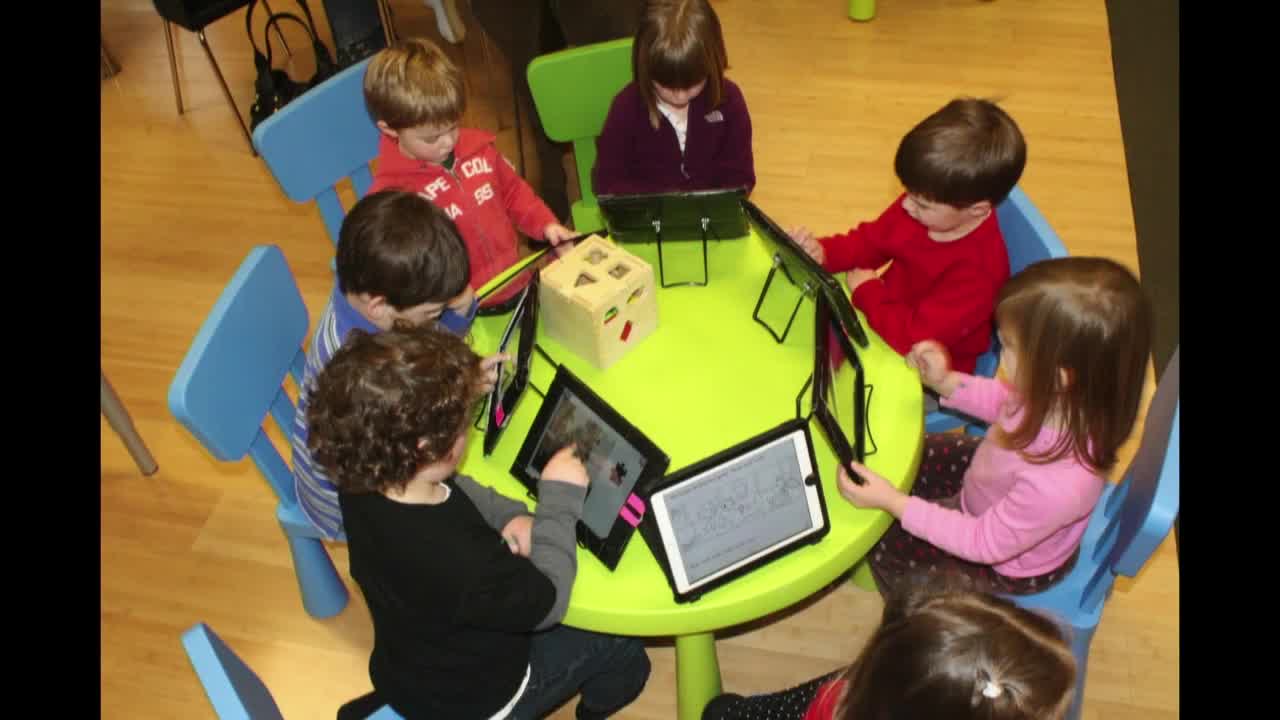
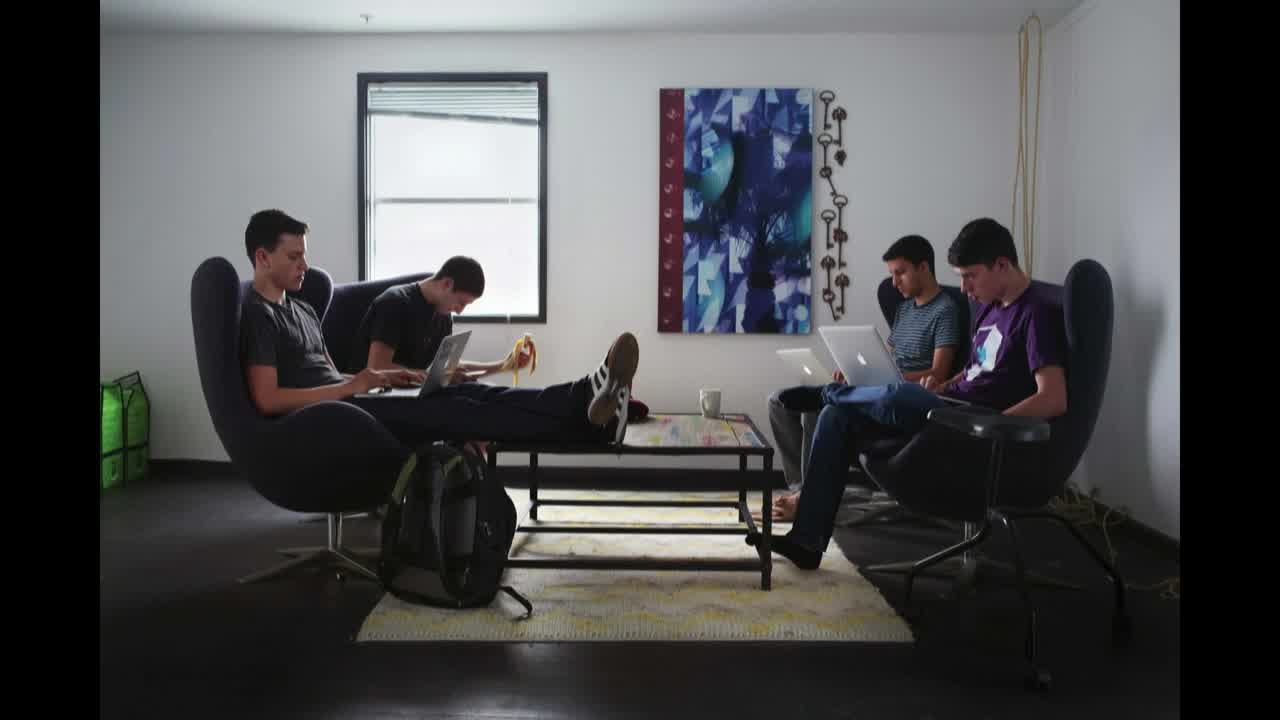
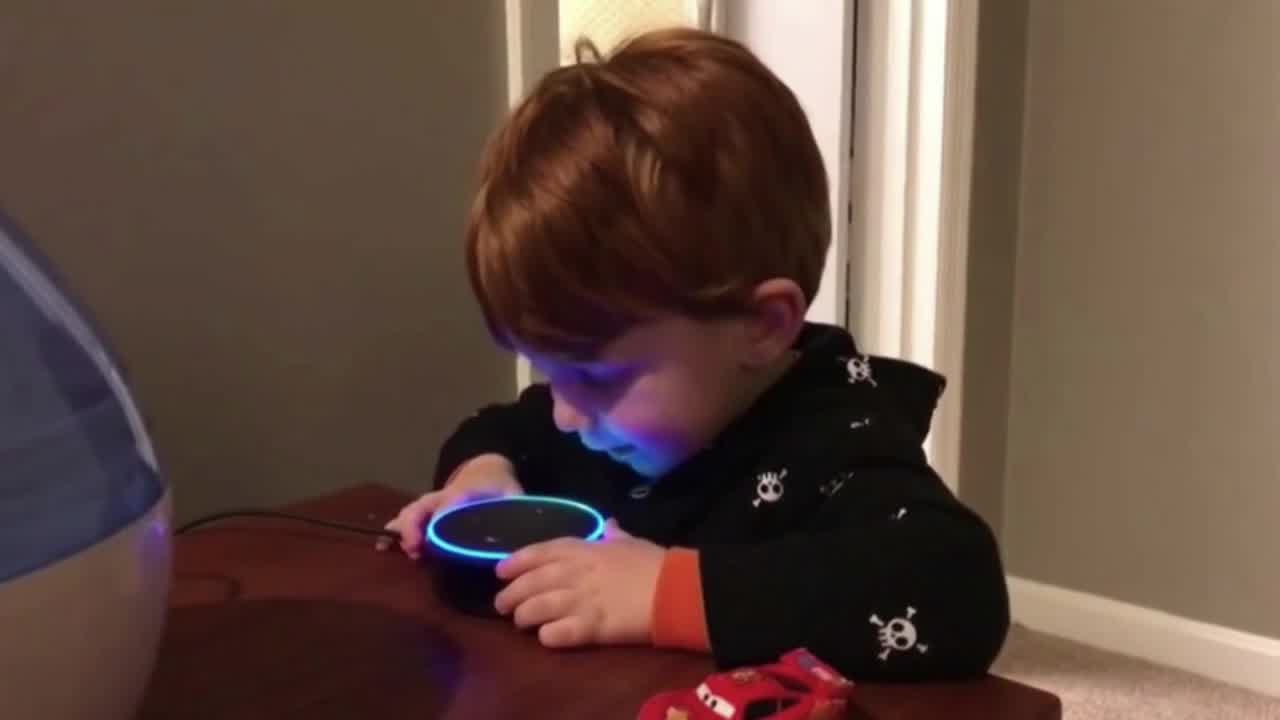
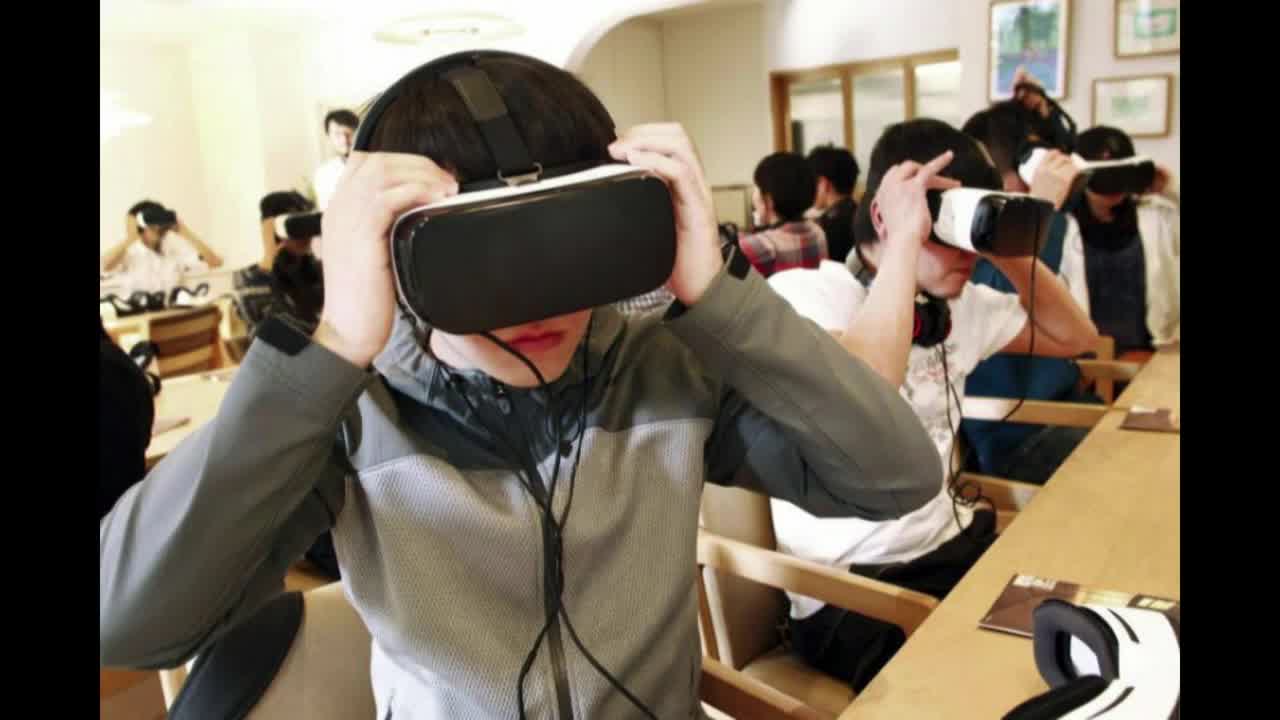
And everyone gets it. A dystopian future where we are enslaved by technology isn't hard to imagine.
And it's really frustrating how deeply ingrained these concepts actually are. Even though I worked so hard, had all these concepts that I drew before the jam, my brain, when it was faced with computation, reverted back to: computers draw images inside screens.
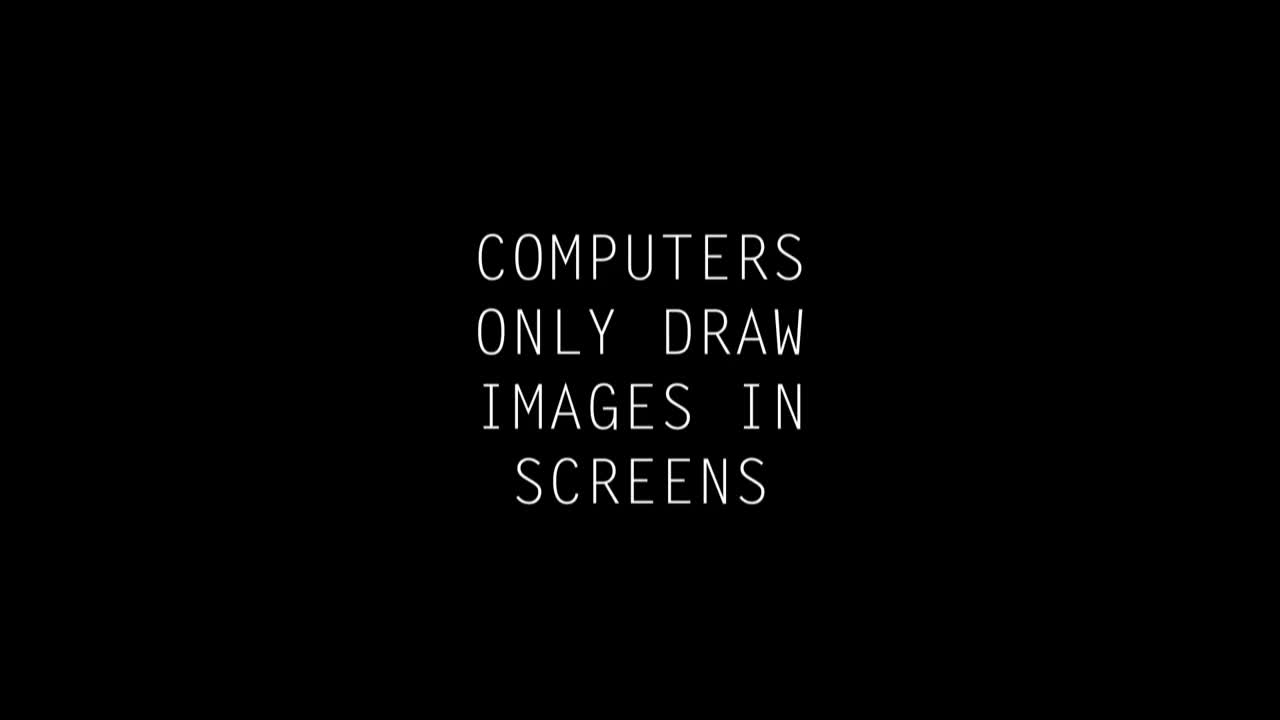
However, even though my brain was broken, I didn't realize it until during that game jam, I saw a piece of code that Bret made.
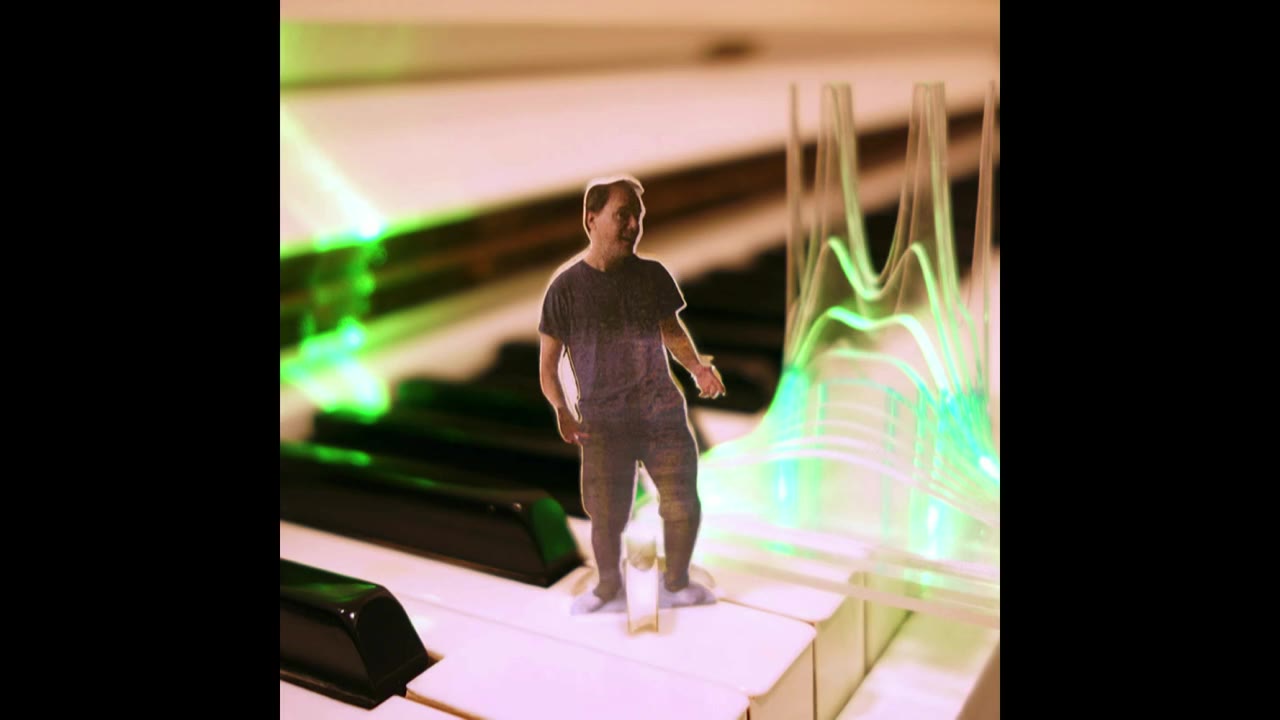
This is Bret. He's another Dynamicland team member. He's another new friend who exists in my life specifically because of Dynamicland.
And even though we haven't yet, I think that he knows that I'm gonna absolutely demolish him when we play Samurai Gunn. [more]
The page that Bret made was called "scrub this number". [more]
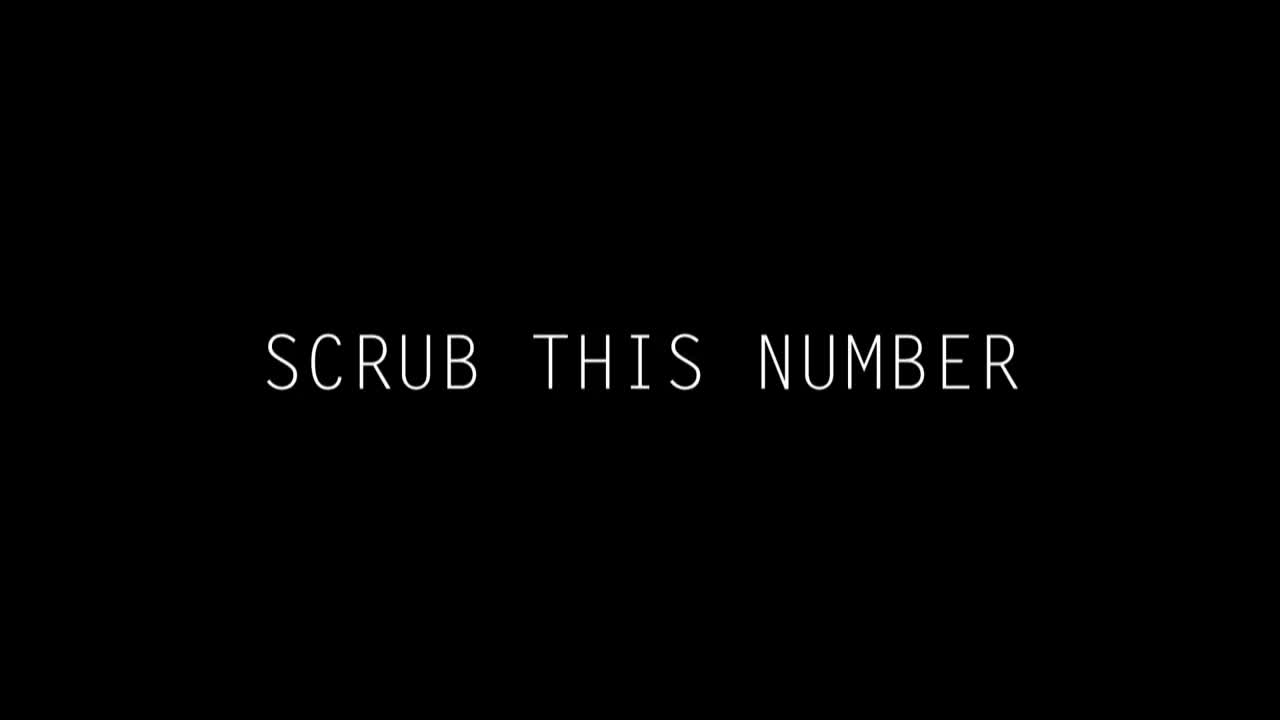
It uses two dots, one which selects a number to edit, and another which scrubs the selected number, changing it in the source code.
Here we're going to have another Dynamicland pal, Andrés, demonstrate this code. And in this, he's using his painted nails as dots. So let's listen to Andrés.
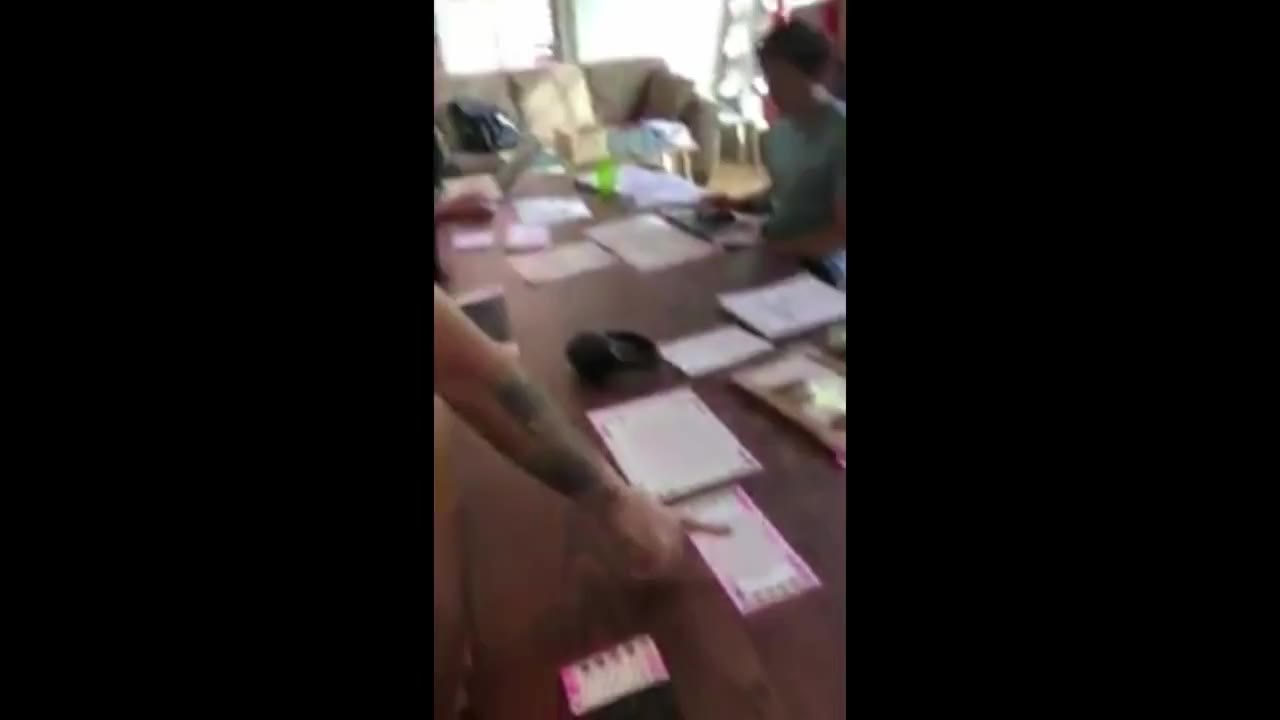
"I put my finger here. And whatever I'm closest to is getting edited, and you can see that here."
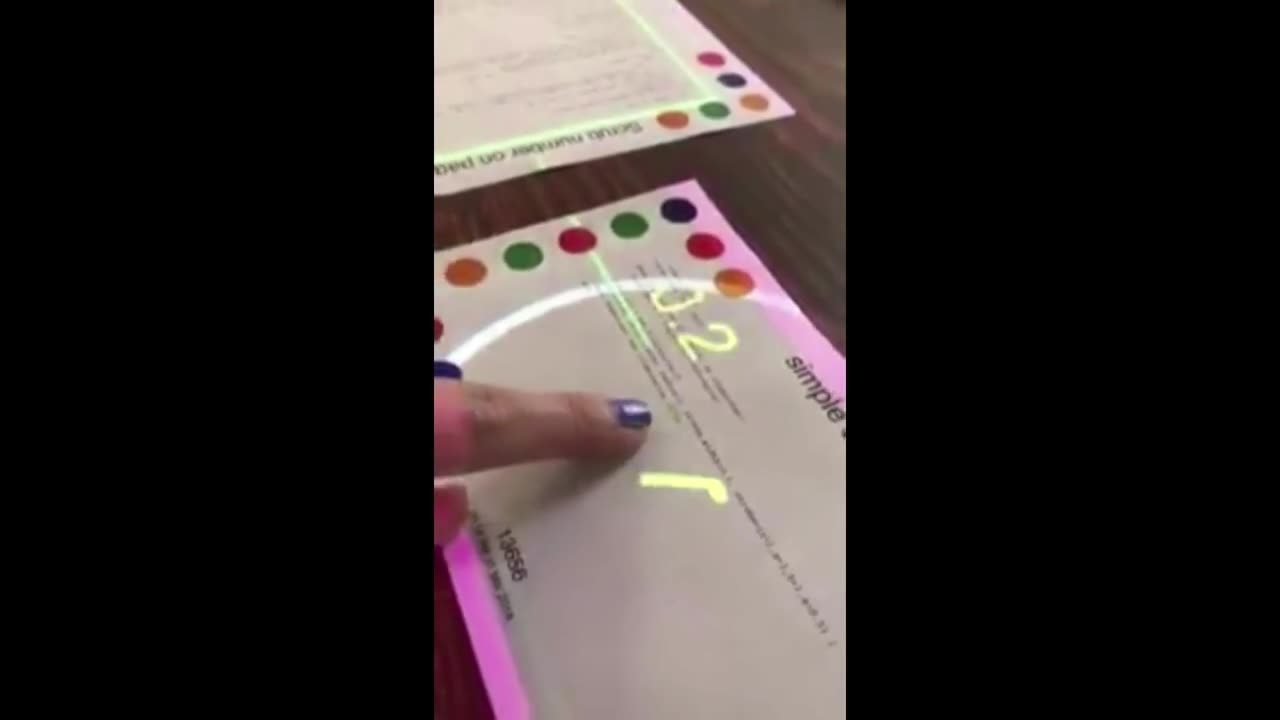
"So I'm gonna change the radius by putting my finger here, and putting my other finger on this page. Now, whenever I scrub, I change that."
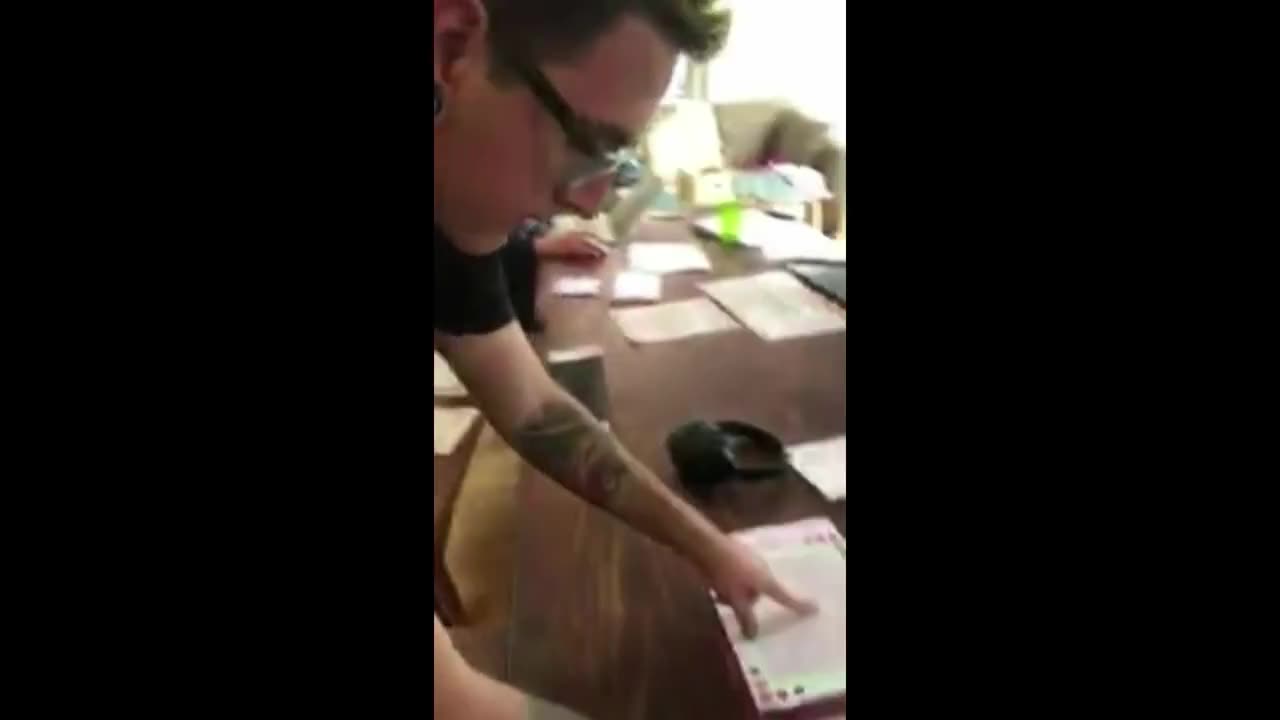
"But I can also change the colors or the stroke width."
You literally put your finger on top of the number you want to change in the printed source code. It's a piece of code whose power is not in itself, but in its relation, in its connection to other pieces of code.
What's special about Dynamicland isn't just that you can make a piece of code that is run on a piece of paper. It's also that you can make a piece of code that has a relationship to all the other pieces of code in the space.
Everything knows about everything. Everything can build off of everything. One of the design principles hung up on the wall says "waves, not pipes".
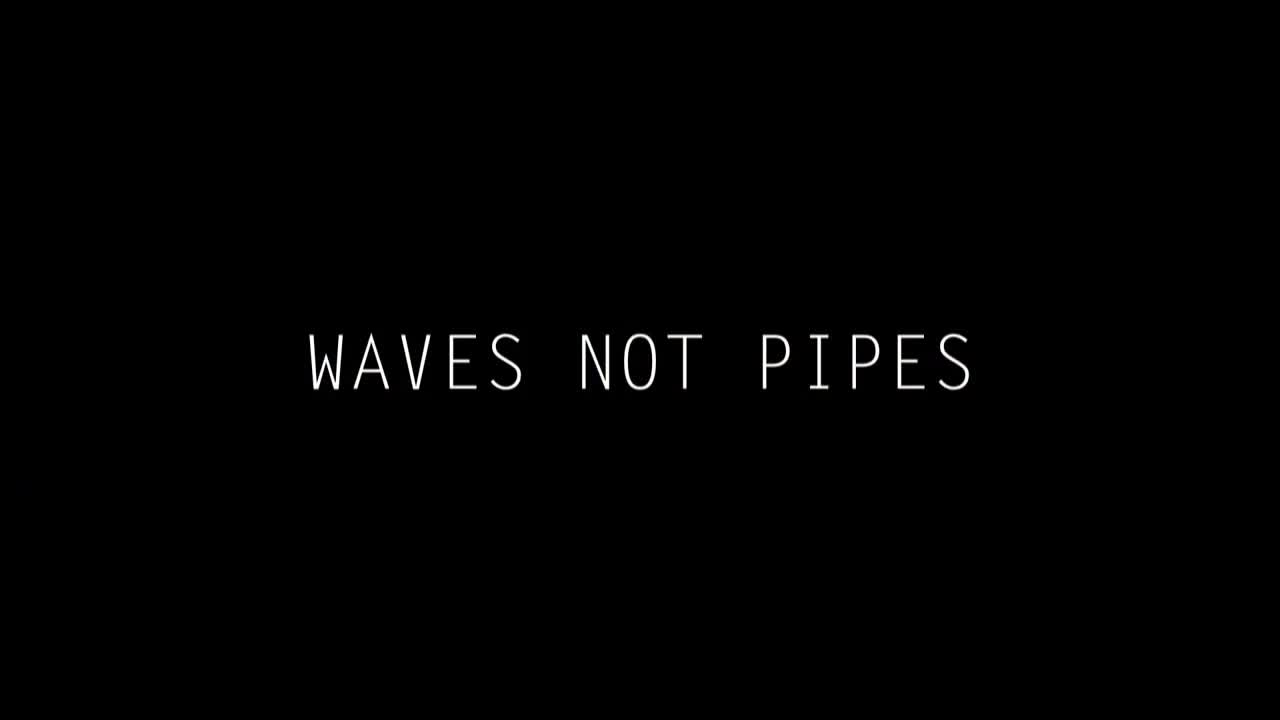
Information should flow outwards, should be free to use by any page that wants it. You should be able to easily listen to another page's waves of information, instead of having to architect brittle pipes that connect a single page to another single page.
I certainly didn't get this during that first weekend. And I was actually pretty sad about that. What I felt was a failure at the game jam.
I thought I was going to be so impressive, but instead my brittle robot brain had made me think in this way that was distinctly undynamic, uncommunal, inhumane. It wasn't all bad, though.
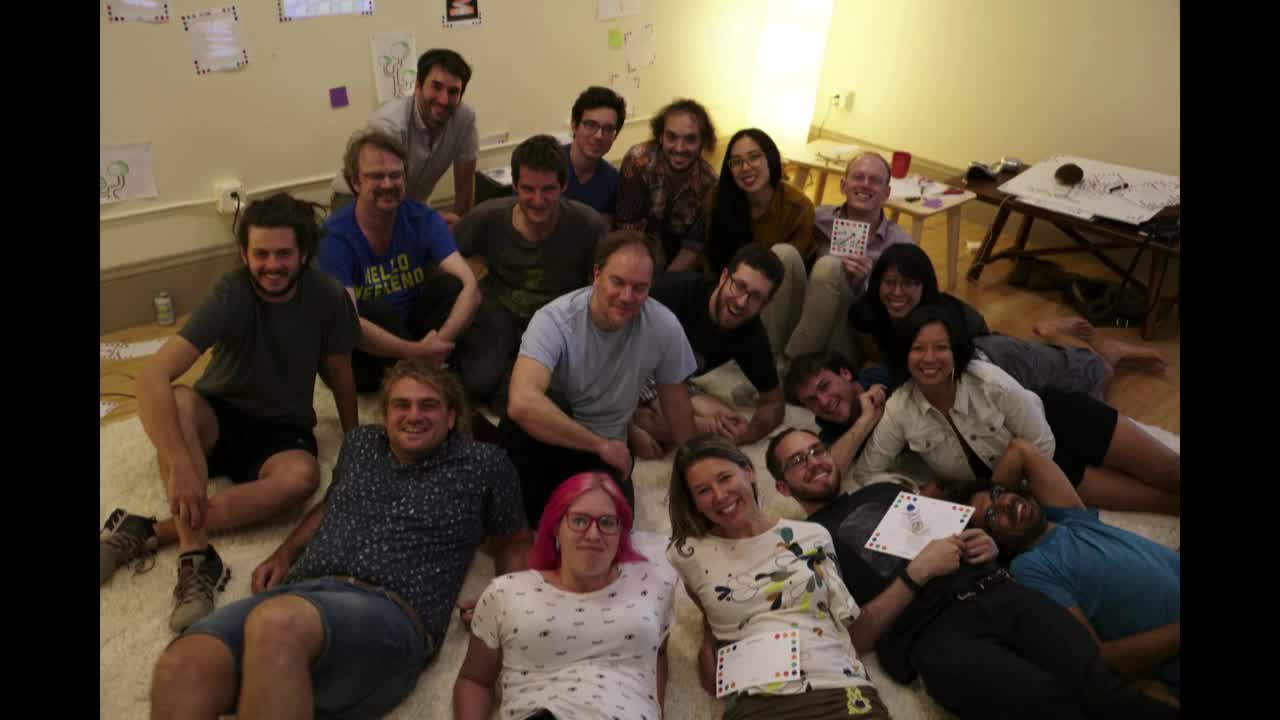
I made a bunch of friends, and beneath the failure was a really exciting proposition.
Begin again
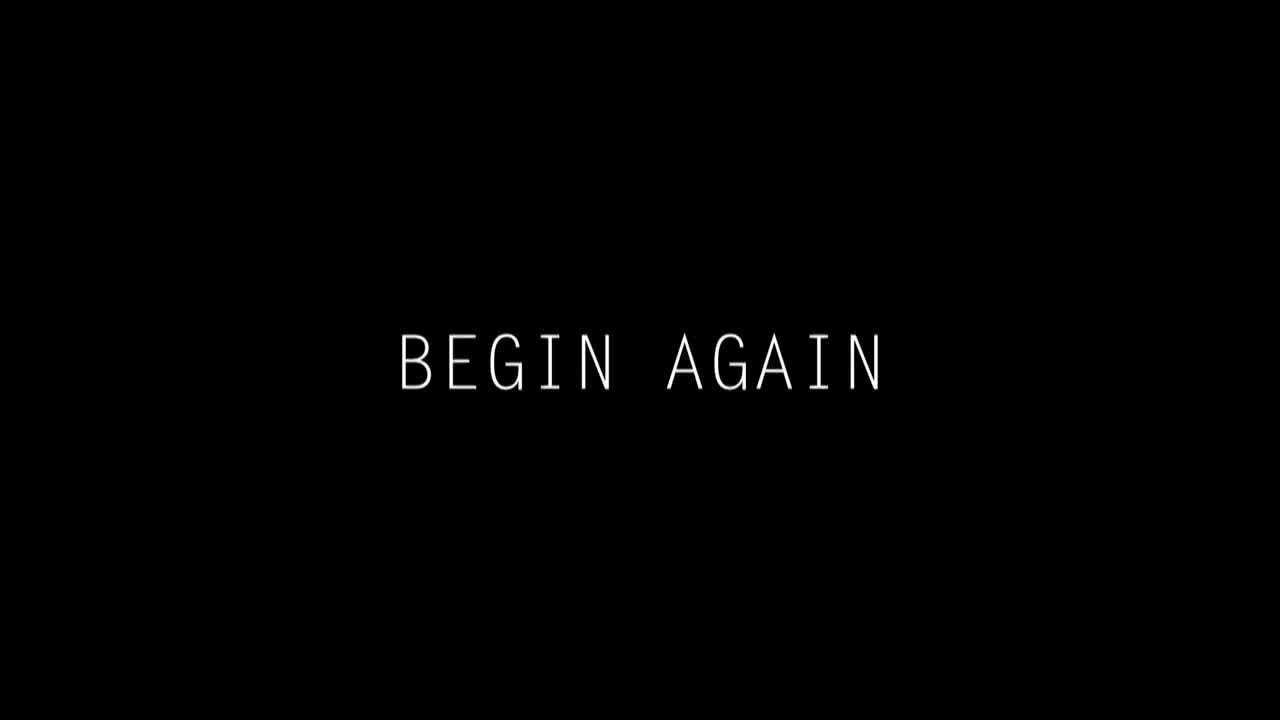
I got to begin again. For some reason in this one therapy session, I went from "my brain is broken" to "oh my god, my brain is broken!"
That is to say, I began thinking of Dynamicland as an opportunity to challenge the preconceived notion of what computation means and begin to actively exercise the muscle of thinking outside the box.
And by thinking outside the box, I mean thinking outside the screen, thinking outside what programming is currently, the constraints of app land, the normativity of efficiency, the understanding of computation as capitalist enterprise that is created solely for the benefit of a rich boys club that cares more about avoiding discomfort than it does the lives of others.
And it's pretty cool that this thinking outside the box actually is a muscle that you can exercise.
At one point in time, I wasn't good at this. I grew. I exercised. Dynamicland becomes a type of gym for your mind.
And just like the Y, the growth that you do there extends far beyond the walls of the space.
I found myself having more difficult conversations with friends, challenging the aesthetics and the purpose of my own work, examining my own preconceptions and understanding the extent of my privilege.
I, just like everyone around me, have a long way to go. Dynamicland itself has a long way to go. But it feels like it's a place where the discomfort of growth is a welcome companion.
In the first few weeks after the game jam, I did a lot of growing, specifically related to the physical and the combinatorial possibilities of the space. I was trying to create in this new way that allowed for the types of emergence that Bret's "scrub this number" did.
I failed at it, but I was trying, and I was growing. Take jellyfish, for example. [more]
So jellyfish connects itself to every other page with a rainbow tentacle.
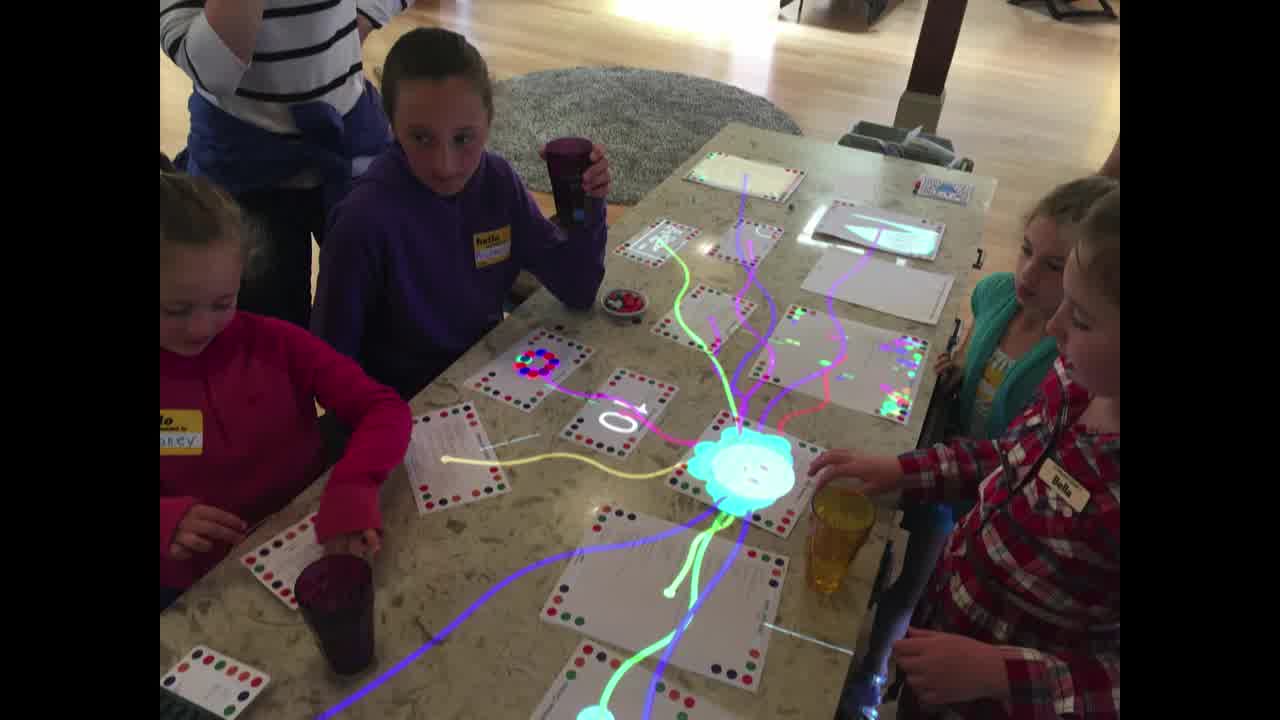
Even though it was just a simple projection, it allowed itself to be more combinatorial. The generative nature of its creation meant that it was dependent on how many people were at the table.
It meant that people could play together with the same object.
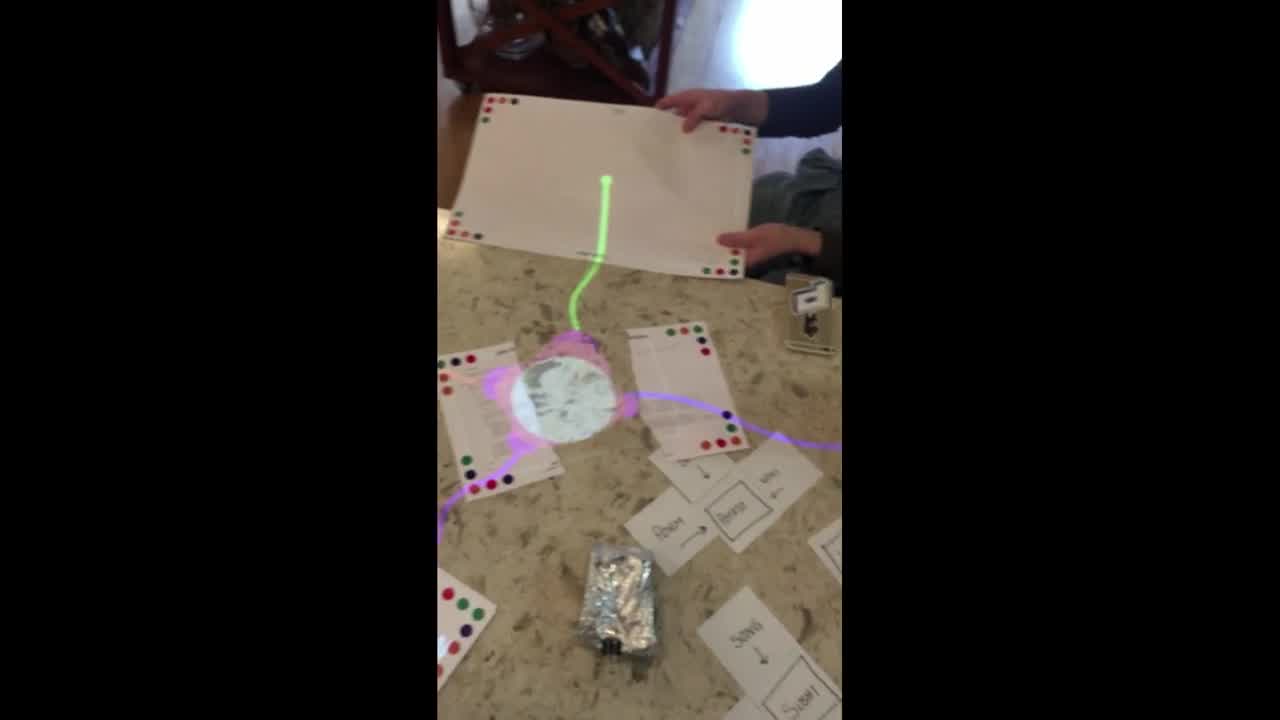
It was a step forward, but still, parts of my brain were stuck in app land. See, I really wanted to give the jellyfish a face.
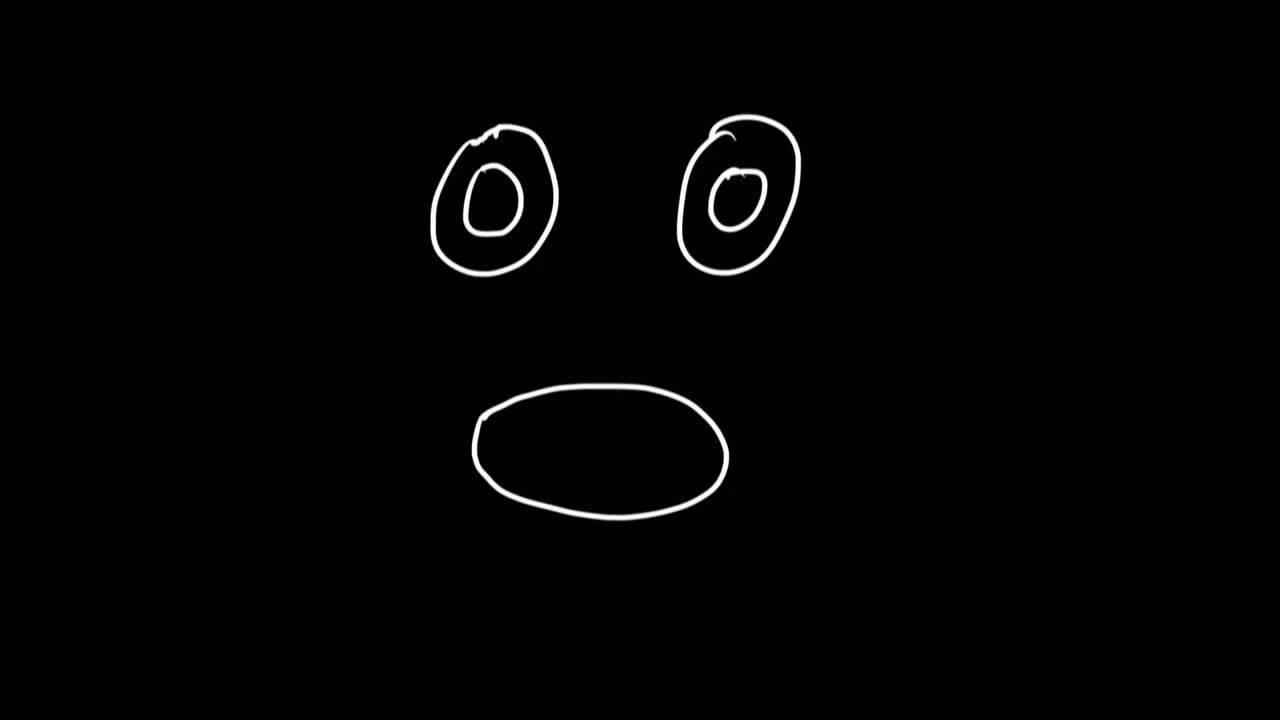
I imagined it would be nice to make it so that people could rotate the page and make it face in whatever direction they desired. There's a problem, though, because this meant that the tentacles were in table space, and the eyes were going to be in page space.
I went to work trying to remember all those horrific matrix transformation rules, and I was flipping signs and inverting matrices left and right.
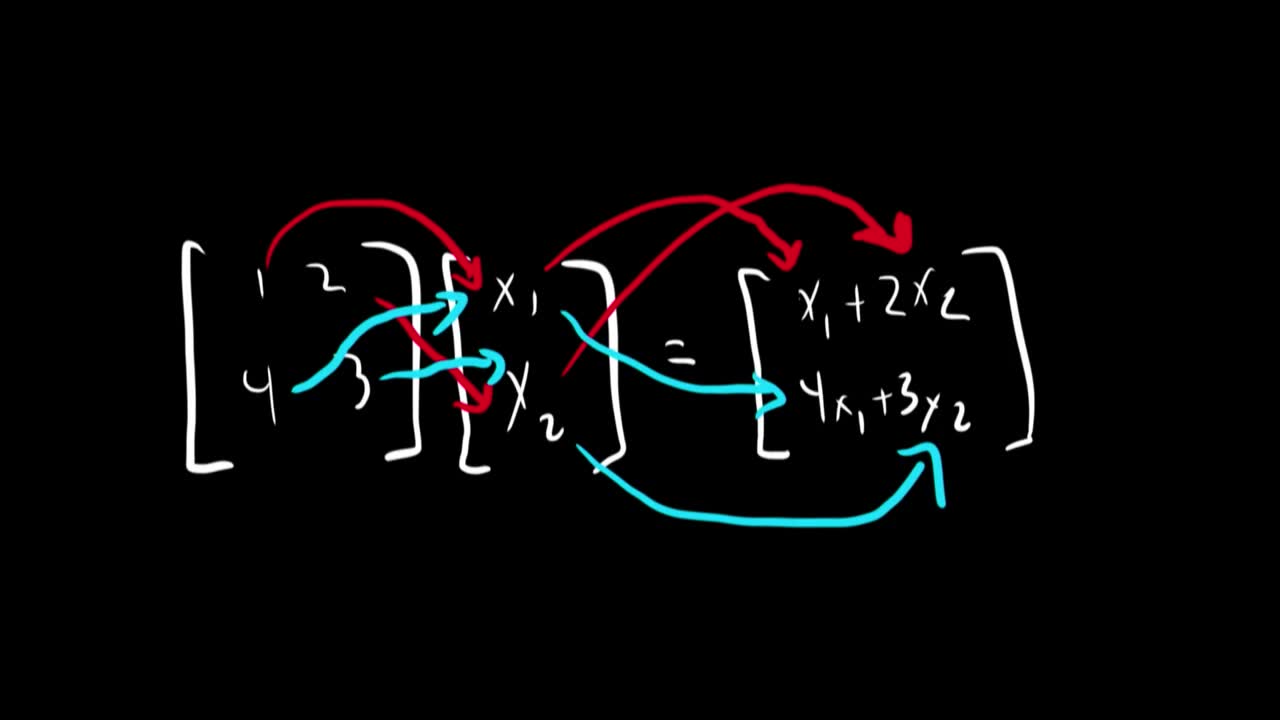
But then suddenly I realized I could just make the face on the jelly.

I could physically craft the face instead of trying to make the computer do it. I could draw it in markers or adorn it with googly eyes, and reality would do all the matrix transforms that I needed for free.
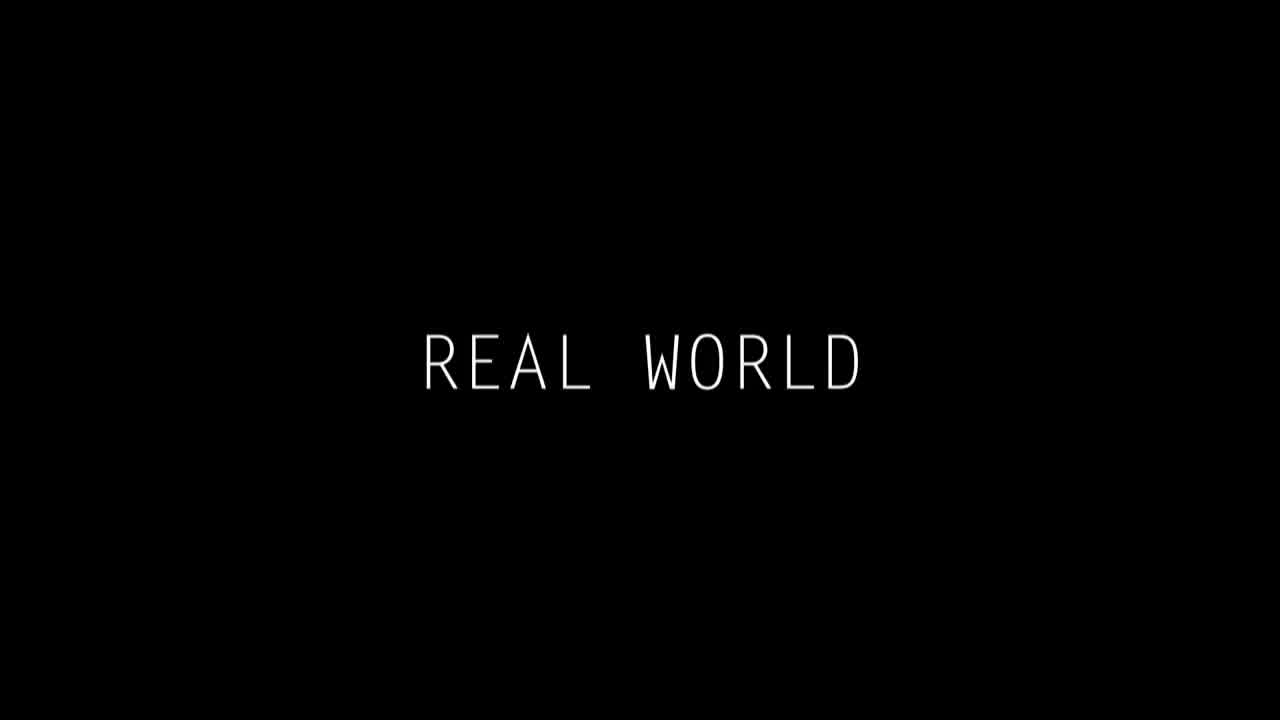
And so much comes for free when you're working in the real world. The ray tracing is amazing. Multiplayer. Everything's multiplayer by default. It's awesome.
But that was another moment of me thinking like a computer, trying to graft those understandings onto our magnificent reality, instead of stopping and thinking about what reality gave us for free, and what we don't need computers to do for us.
But like many people who have been trapped in the computer for so long, reality is a pretty scary place. Before Dynamicland, I'd never soldered, laser cut, 3D print. I'm sure I paid way too much to have Shapeways print me a mug I sculpted in ZBrush.
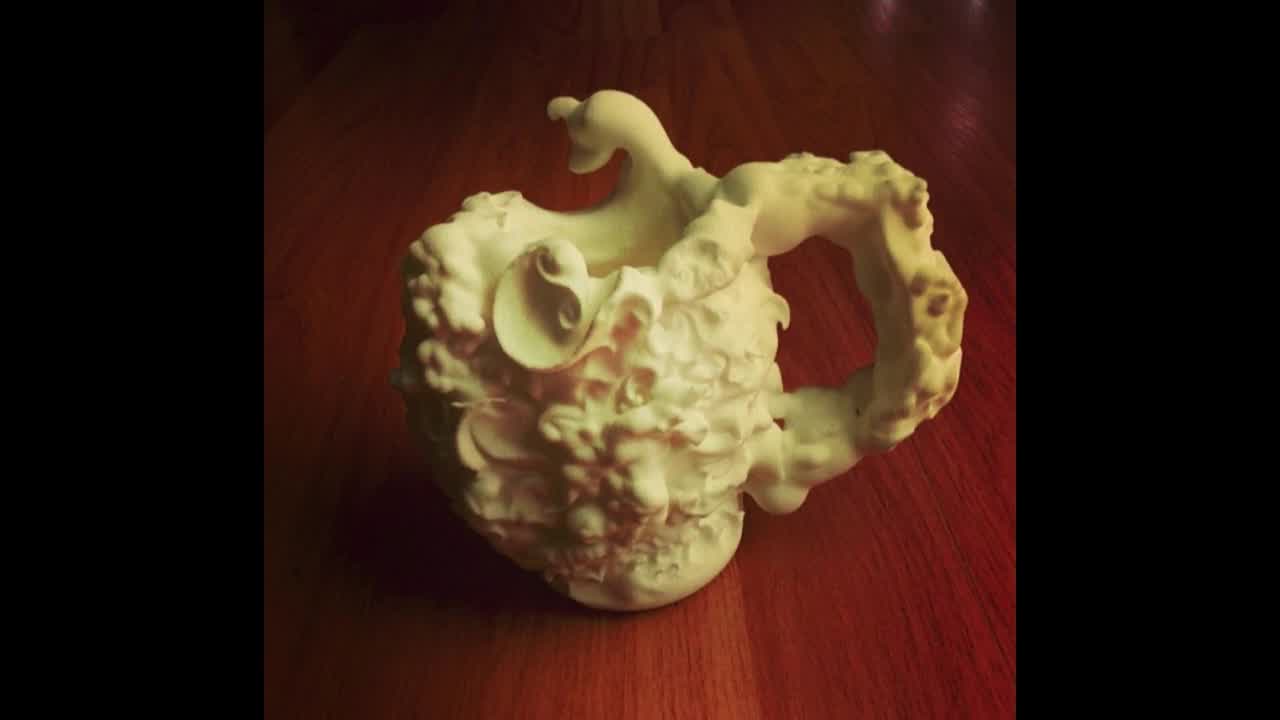
But to me, creating physical things felt like pure magic, felt like a thing that only wizards could do. Luckily, one of the other design principles at Dynamicland is "no wizards". [more]
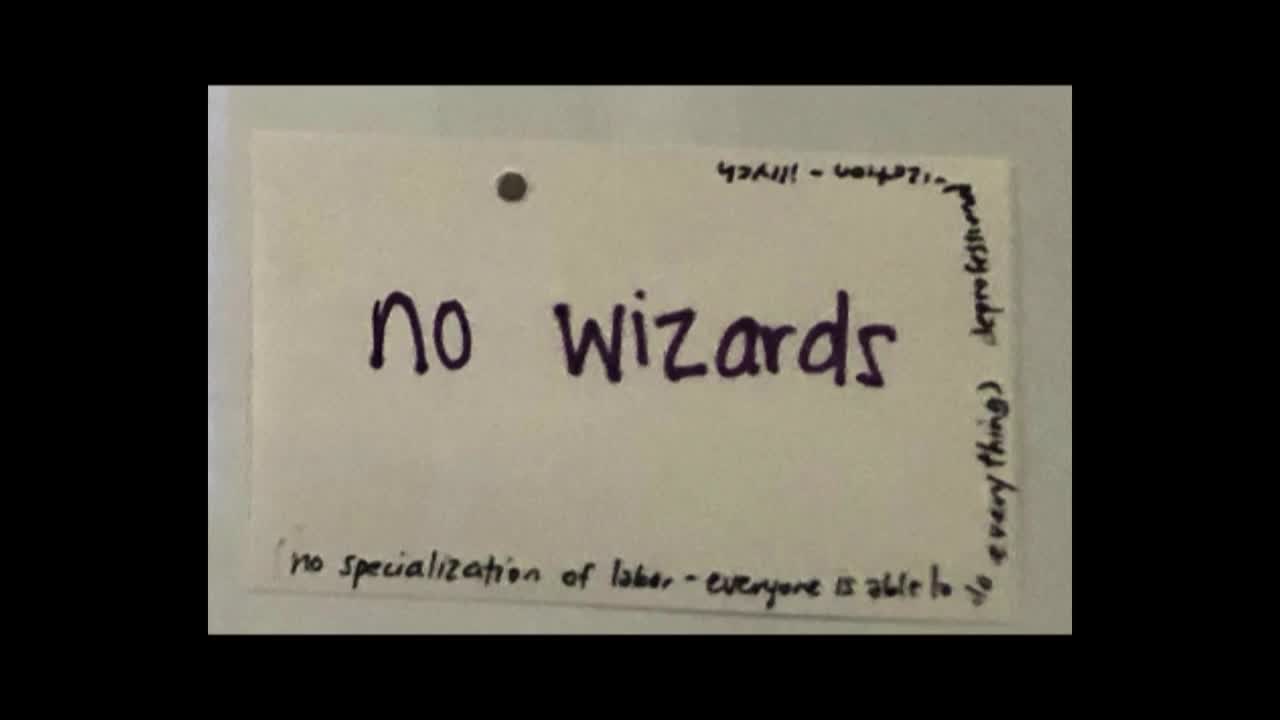
That is to say, nothing should feel like it's only something that a wizard could do. Something that feels mysterious or something that feels unlearnable. Even something as crazy as me soldering, NeoPixels, or laser cutting.
And sure enough, Paula taught me to laser cut, Toby taught me to solder, Ryan Alexander showed me how NeoPixels worked. I started to feel like I was allowed to create in the physical world and decided that I wanted to prototype a physical kids' book.
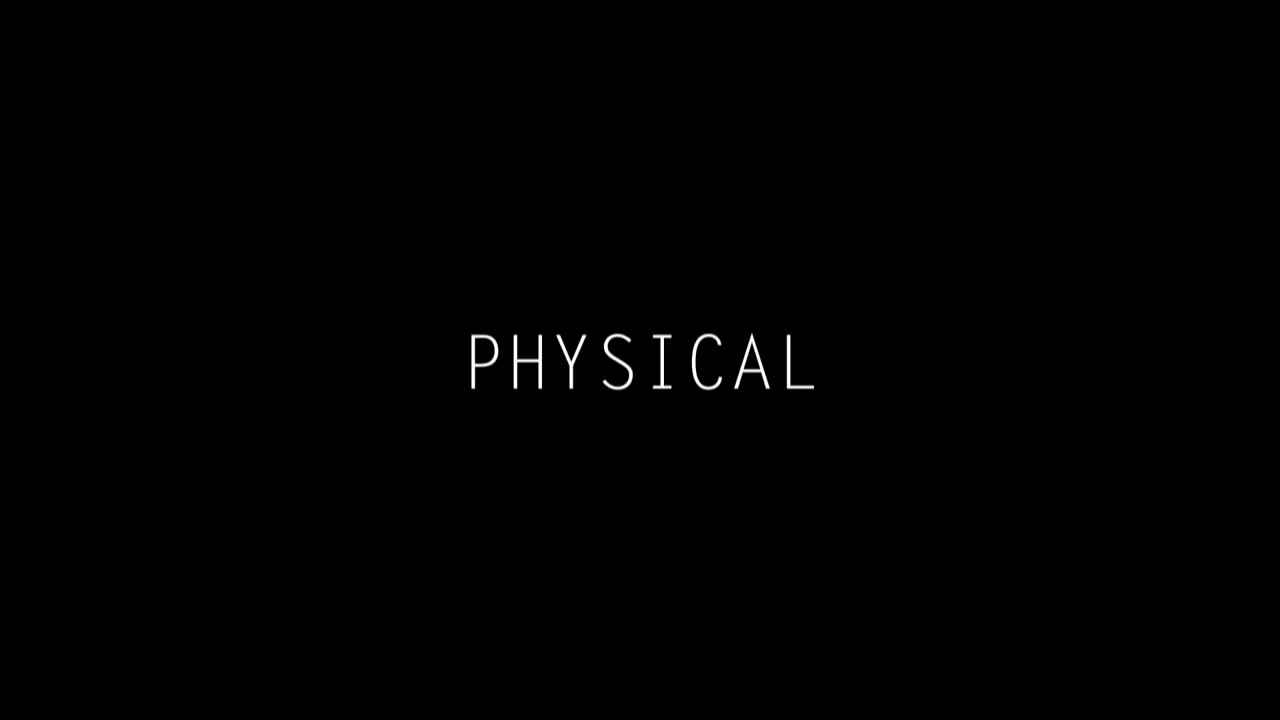
It's called "The Owl's Surprise", and I'd like to read it to you all right now. [more]
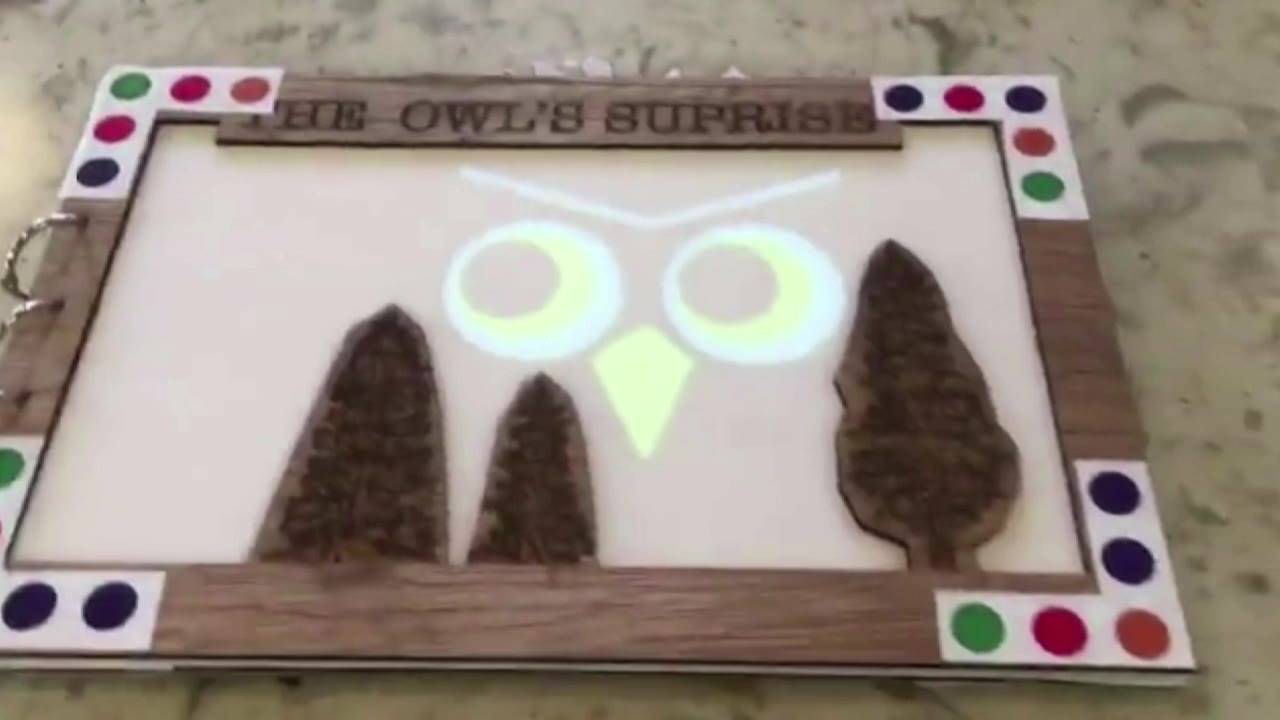
"The owl's surprise."
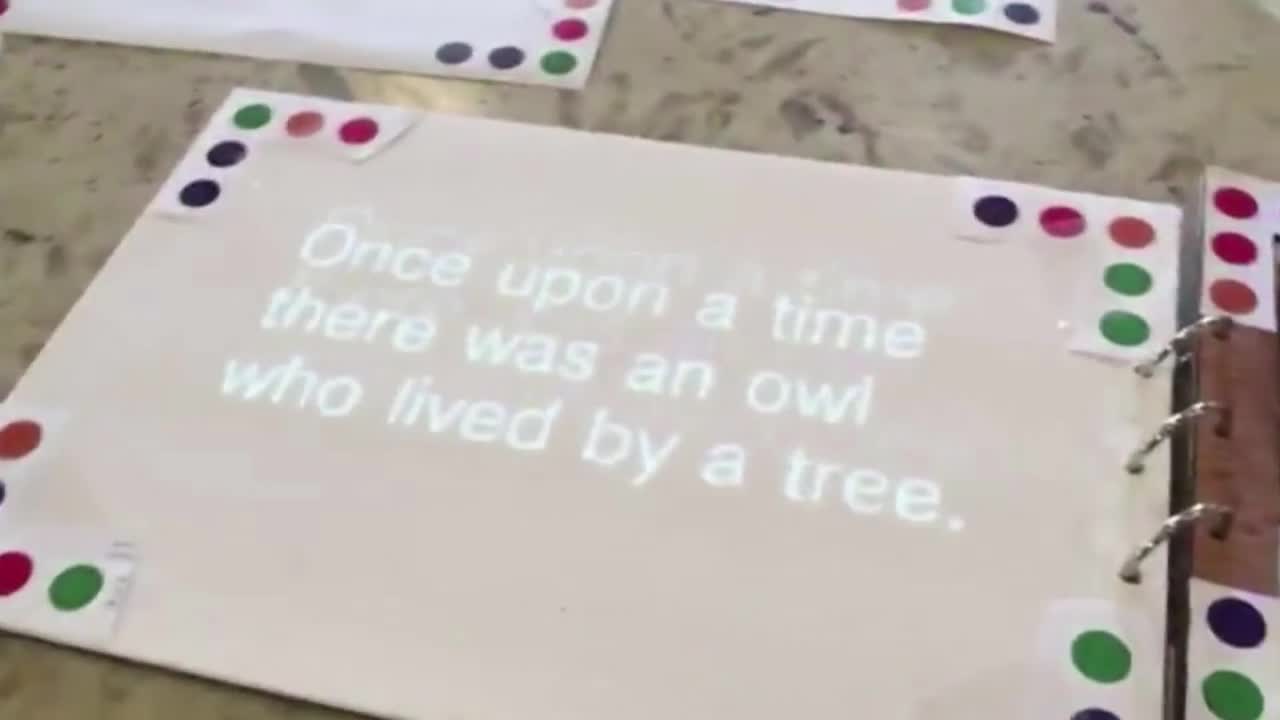
"Once upon a time, there was an owl who lived by a tree."
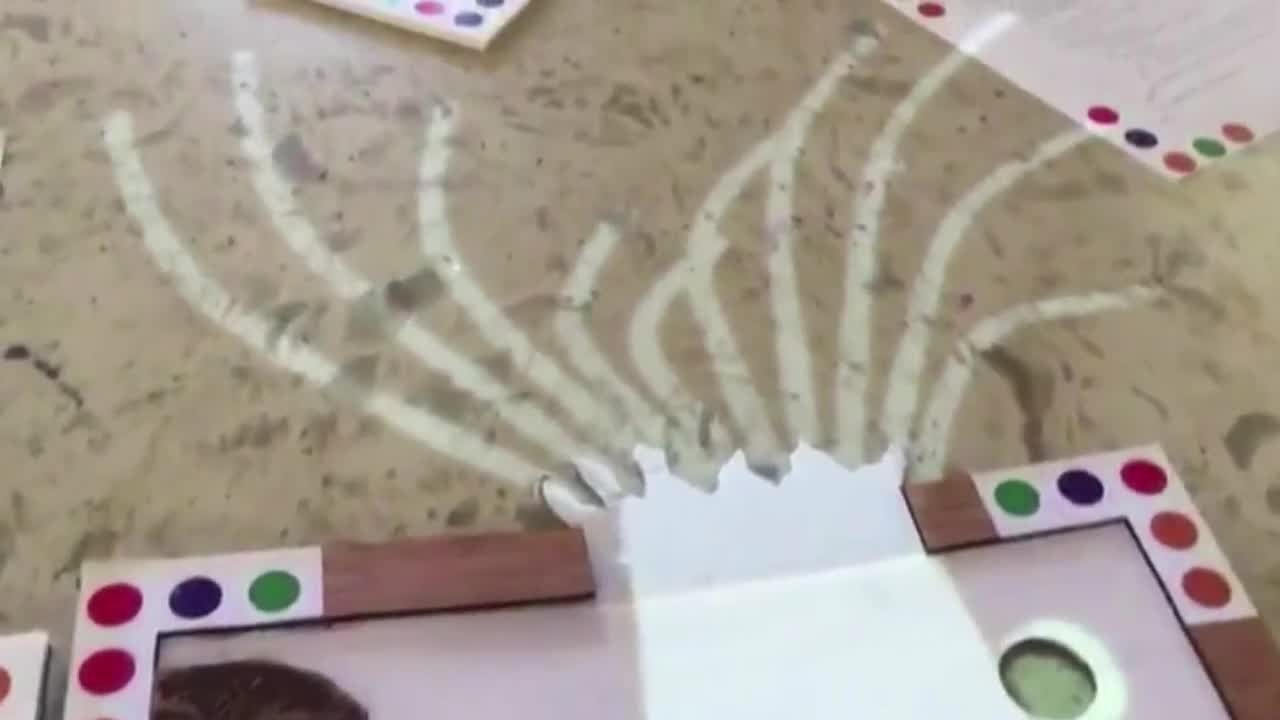
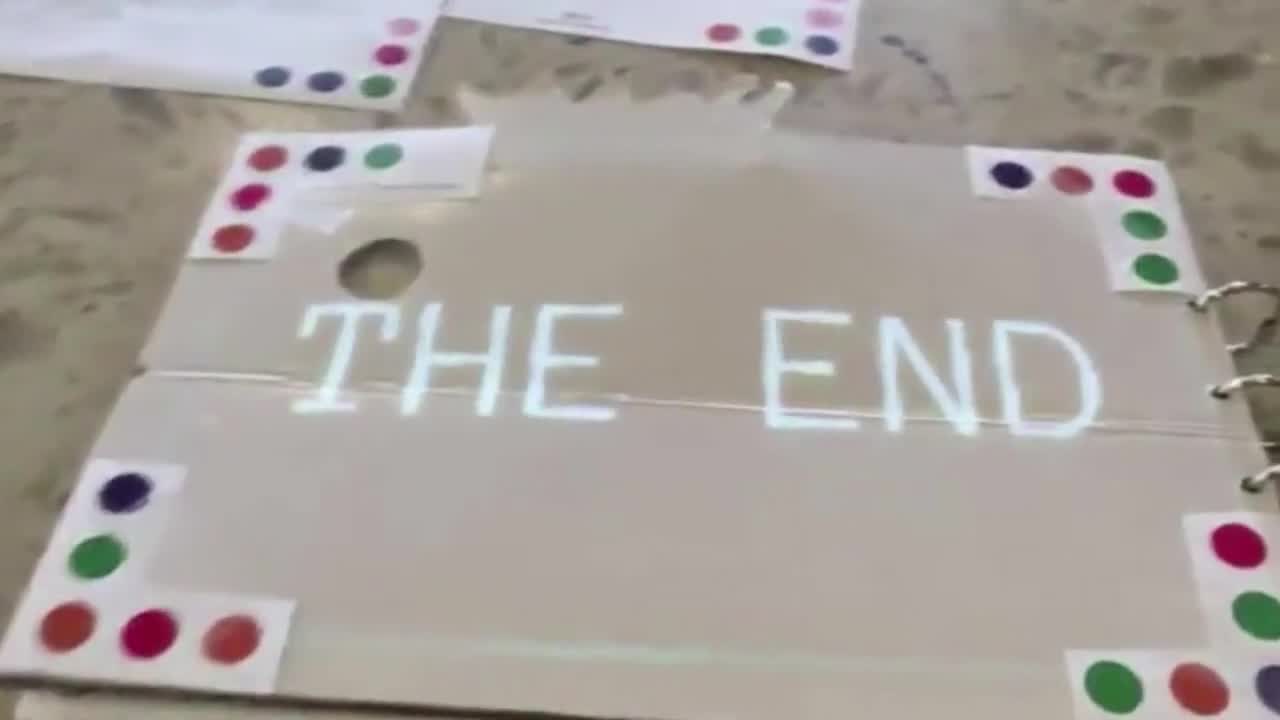
"The end."
It has a long way to go, but it's still one of the things that I'm actually most proud to have made.
As far as combinatorial possibilities, it's lacking pretty hard, and aside from those branches that protrude off the page, it still is kind of an image trapped in a screen. But I got to make something physical.
I still had a lot of growing to do, a lot of learning and unlearning to do. But laser cutting was something that was in our world that I did not understand. And at Dynamicland, I got to hang out with a pal and learn about the world a bit more.
It's great because as you learn, you recognize your agency in creation, and it makes you want to teach.
Make the ball
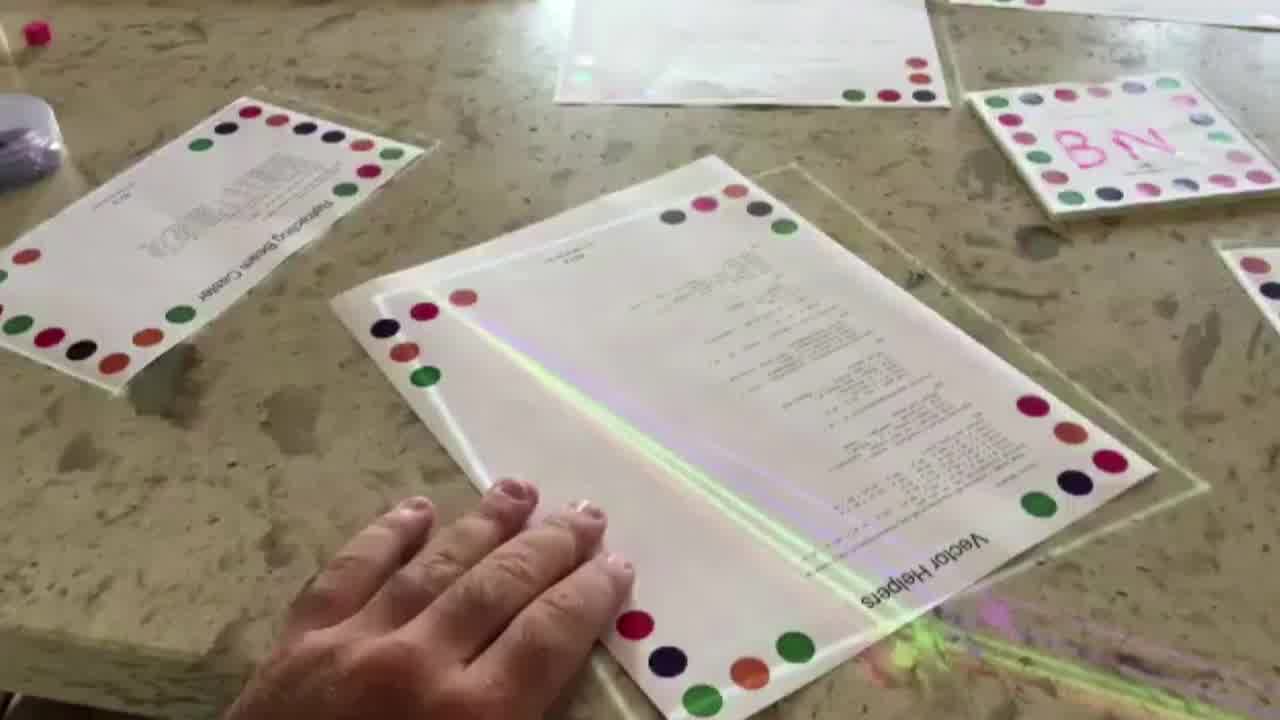
I personally love thinking about light, so I made these pieces of code that allow you to play with reflection and refraction. [more]
Basically you put down this light source, and then you move the different pages around on the table to refract the light and put them in different places.
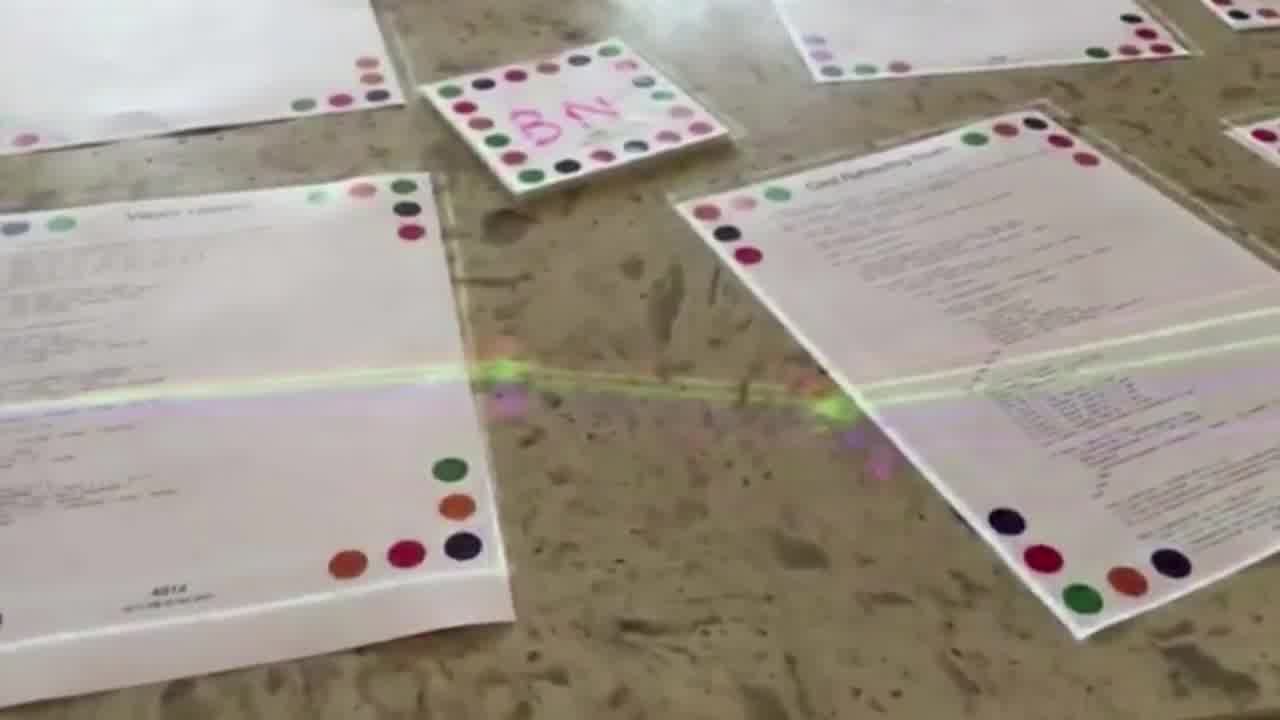
And it's really cool to see, and this has been true of everything you've seen up to this point, that the code which runs the project are pieces that are actually used in the project.
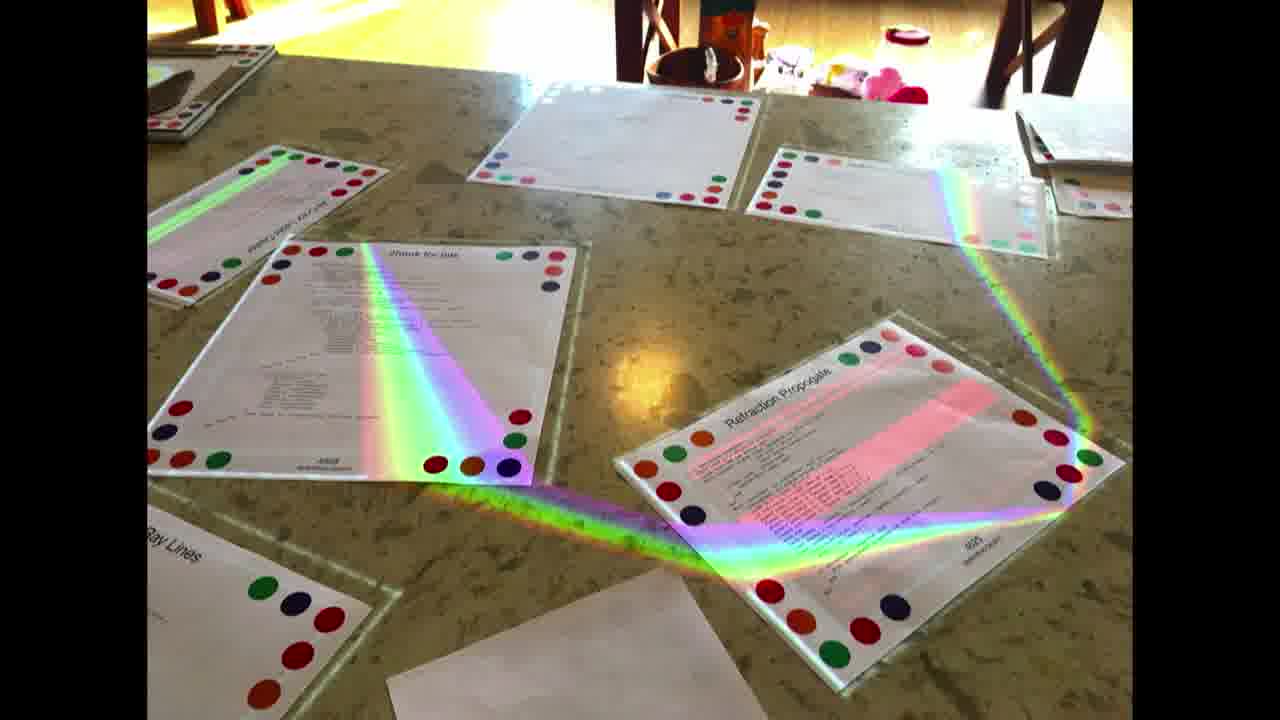
I was pretty happy with it, and so I decided I wanted to make a complete game. This led to Light Game, which was a fully crystallized set of rules, progression, and win-lose mechanics.
These rules became so specific, so complex, that I actually couldn't find a way to describe them without you all being physically present.
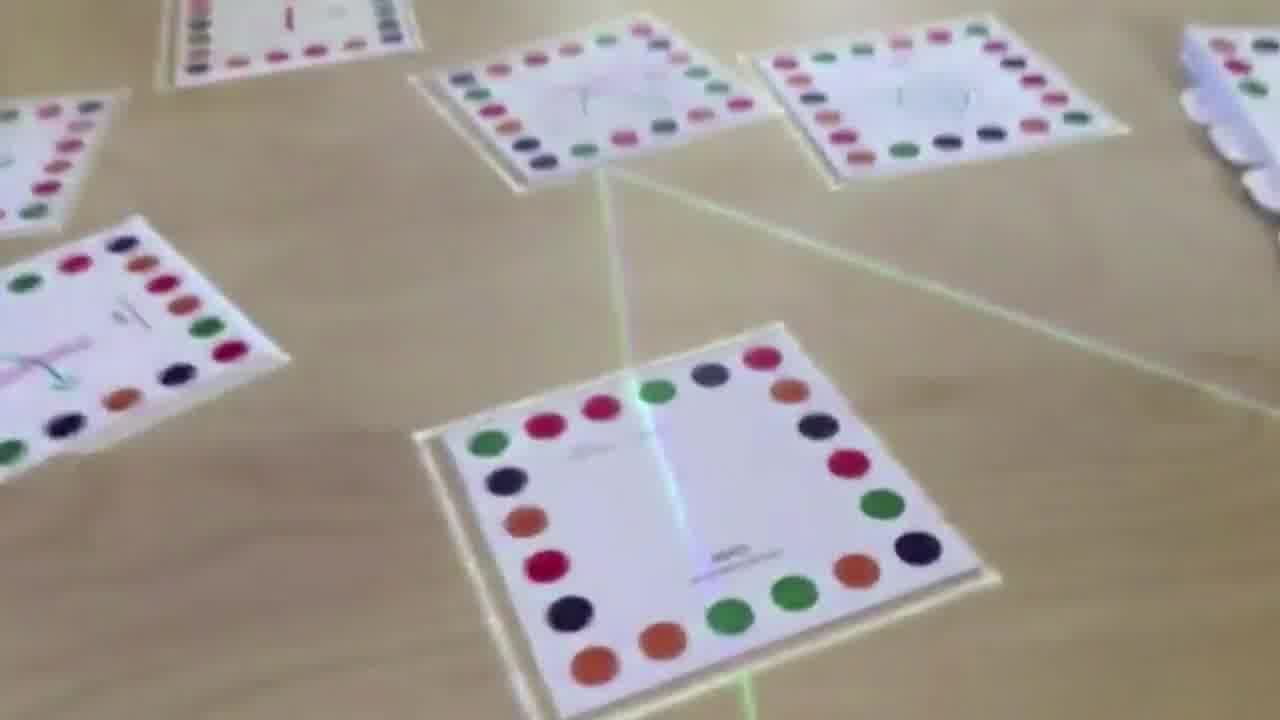
That being said, my pal Aki and I were having a pretty fun time until Bret had to come over and ruin it by saying something that was actually quite brilliant.
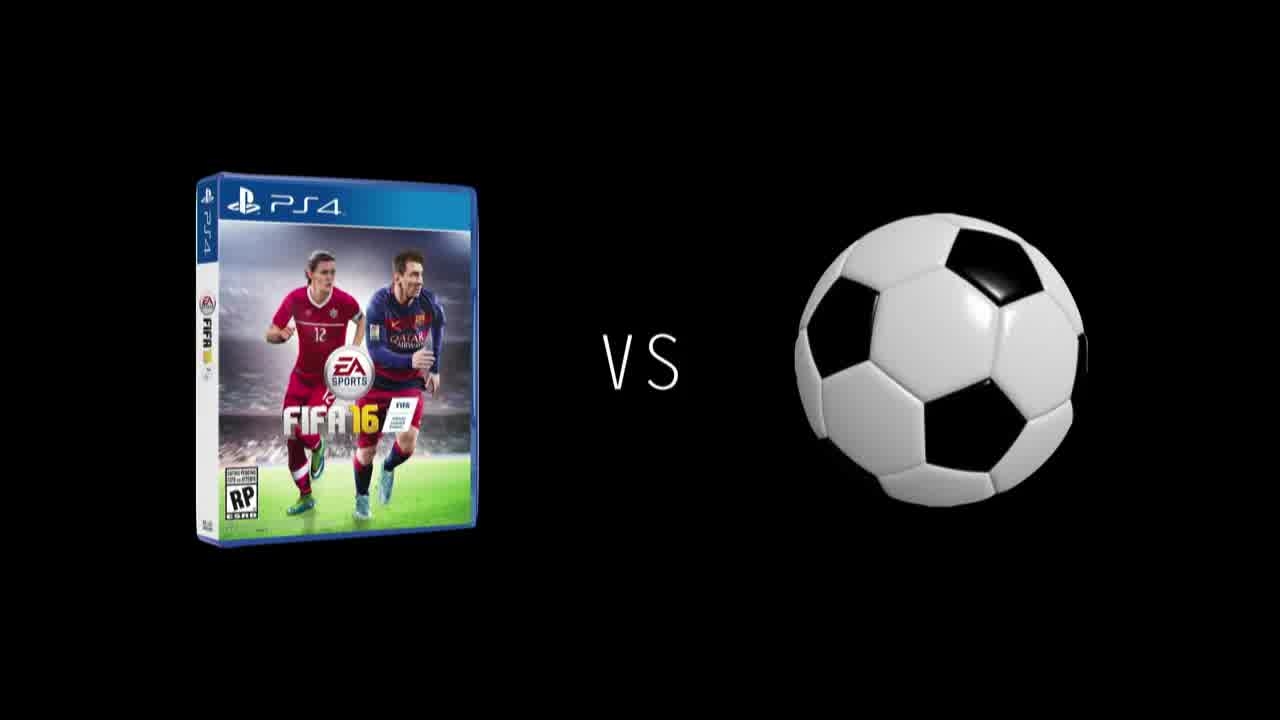
He started talking about FIFA, the computer game, versus soccer. I think he may have been quoting someone else, but one reference back is already a lot for me to remember. [more]
In soccer, he said, we don't pick up the ball because we as a group have connected and decided on a set of rules. Picking up a ball is against those rules, but the rules are enforced and considered by humans. They're as flexible or as strict as we want them to be.
In FIFA, however, you can't pick up the ball because it isn't programmed. There is no flexibility in the game. You buy it, consume it, but you can't change anything about it.
I didn't really get how that applied, but then he said, what if instead of spending all that time trying to do all the calculations of how many targets were hit, you let the humans figure it out?
Let the humans make the rules instead of trying to build them all yourself or asking the computer to do it. If they are calculating the rules, they can also be changing and adapting them.
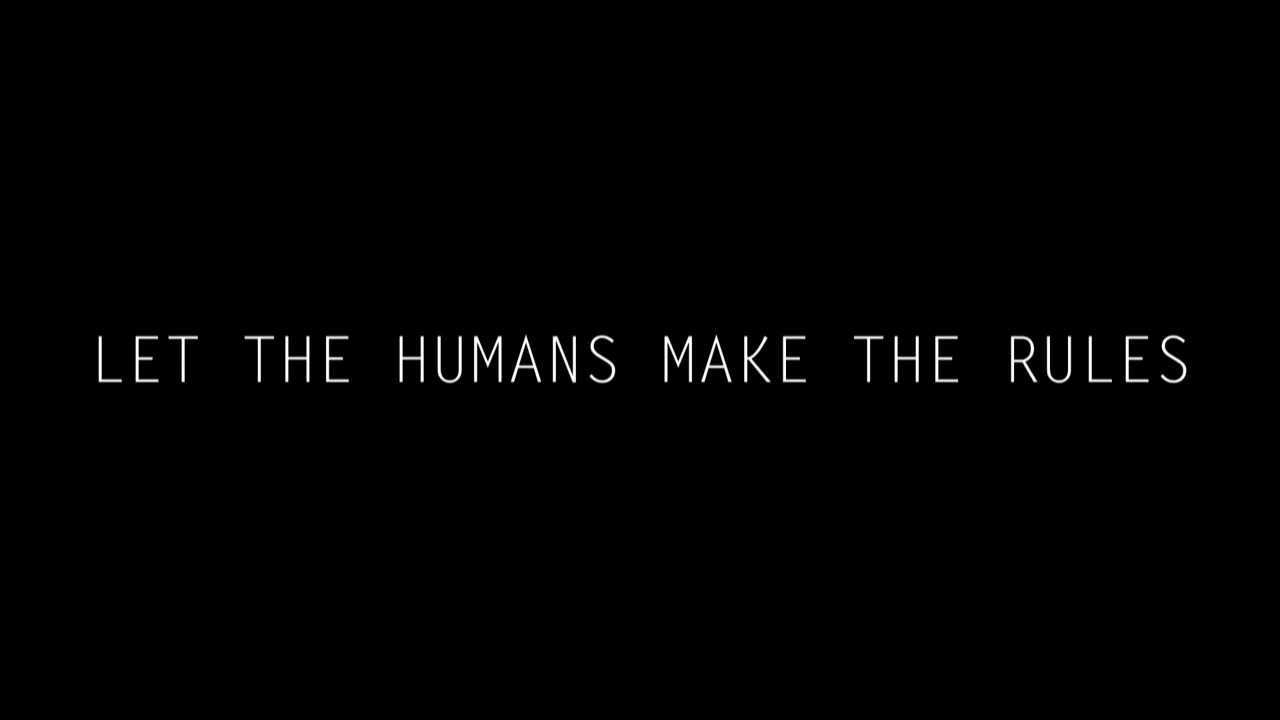
They can be more playful, more flexible.
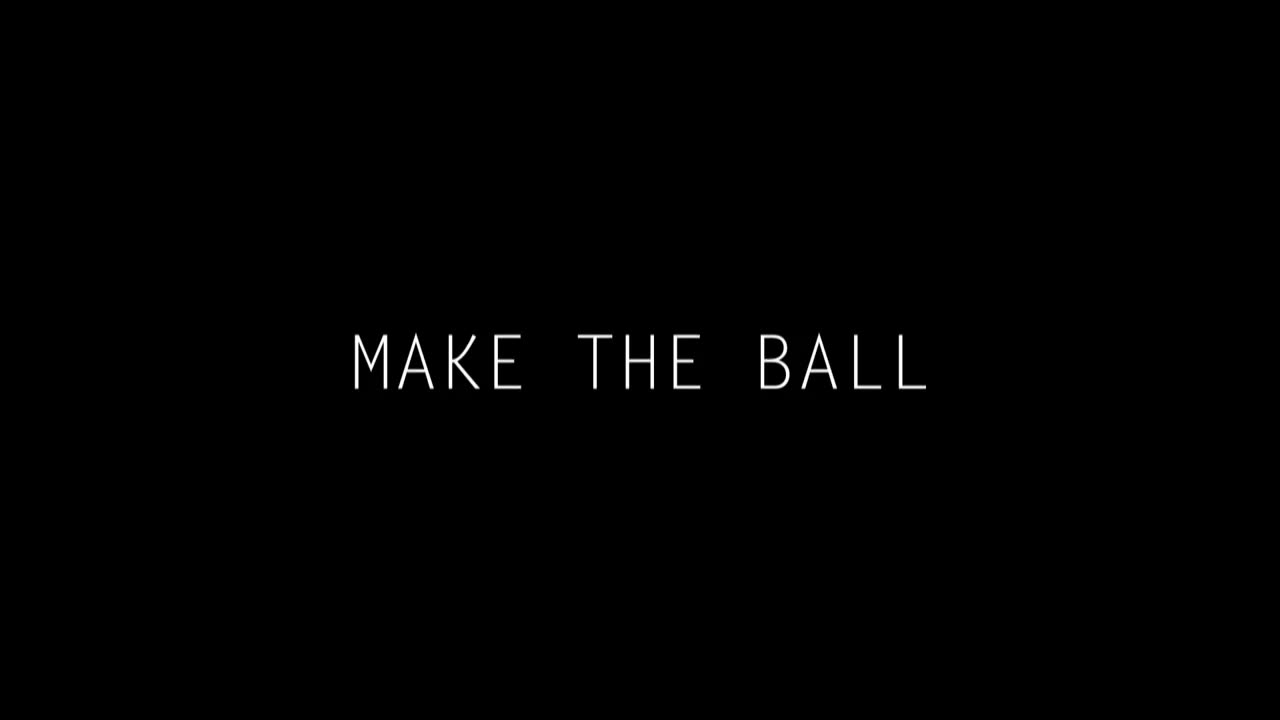
Make the ball, don't make FIFA.
This obviously wouldn't work in app land, as once you made the ball, nobody could modify it.
But sure enough, as soon as I removed that rule card that I had spent so much time making, that counted and added values for us, told us who was winning and losing, told us how we were progressing, Light Game became so much more.
For about five hours straight, Aki and I created rule set after rule set, using the card to move in multiple dimensions instead of one static FIFA.
We made a version of battleships where you're trying to guess each other's cards,
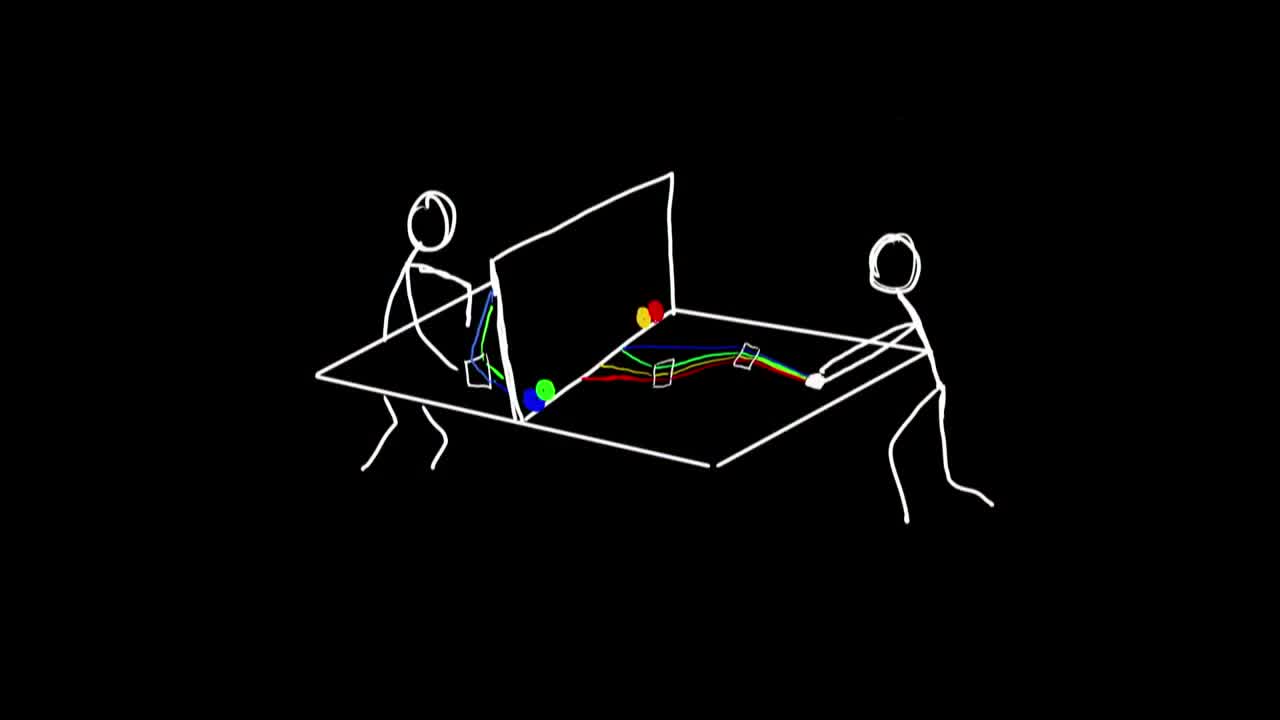
this laser tag thing where you place pieces to block an attack using light rays,
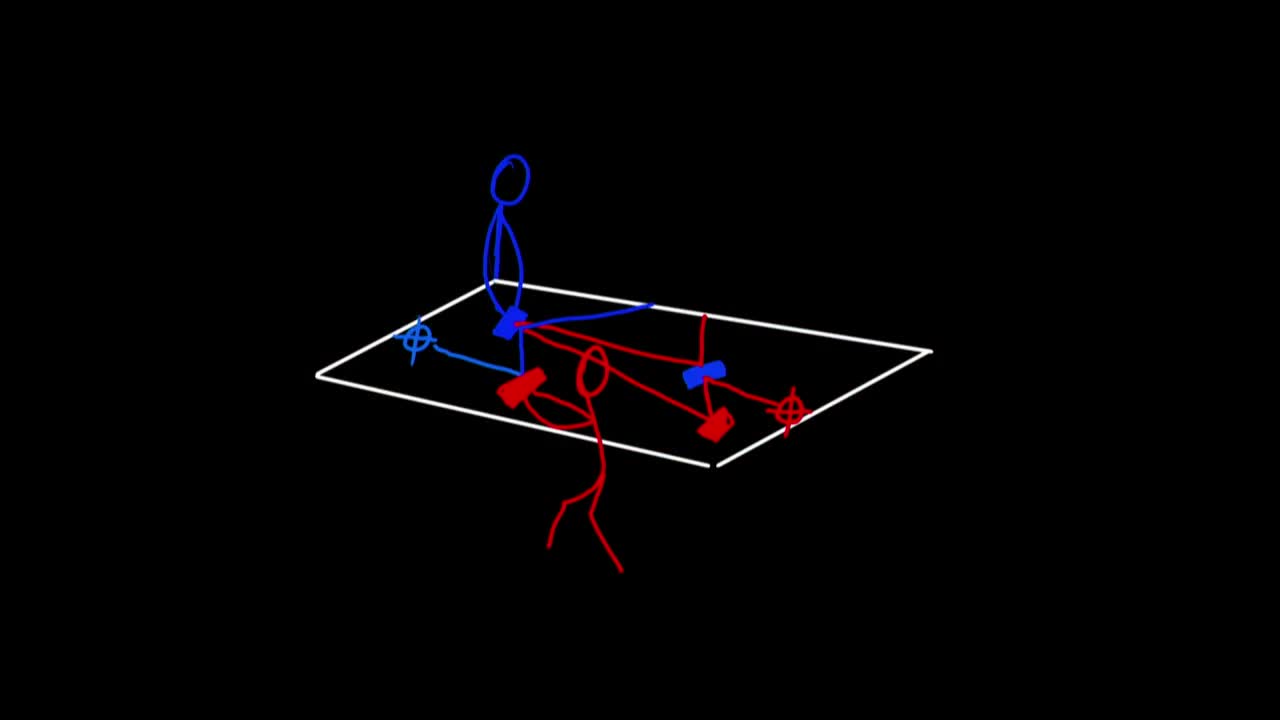
and even collaborative games where we were trying to solve puzzles that we laid out on the table together.
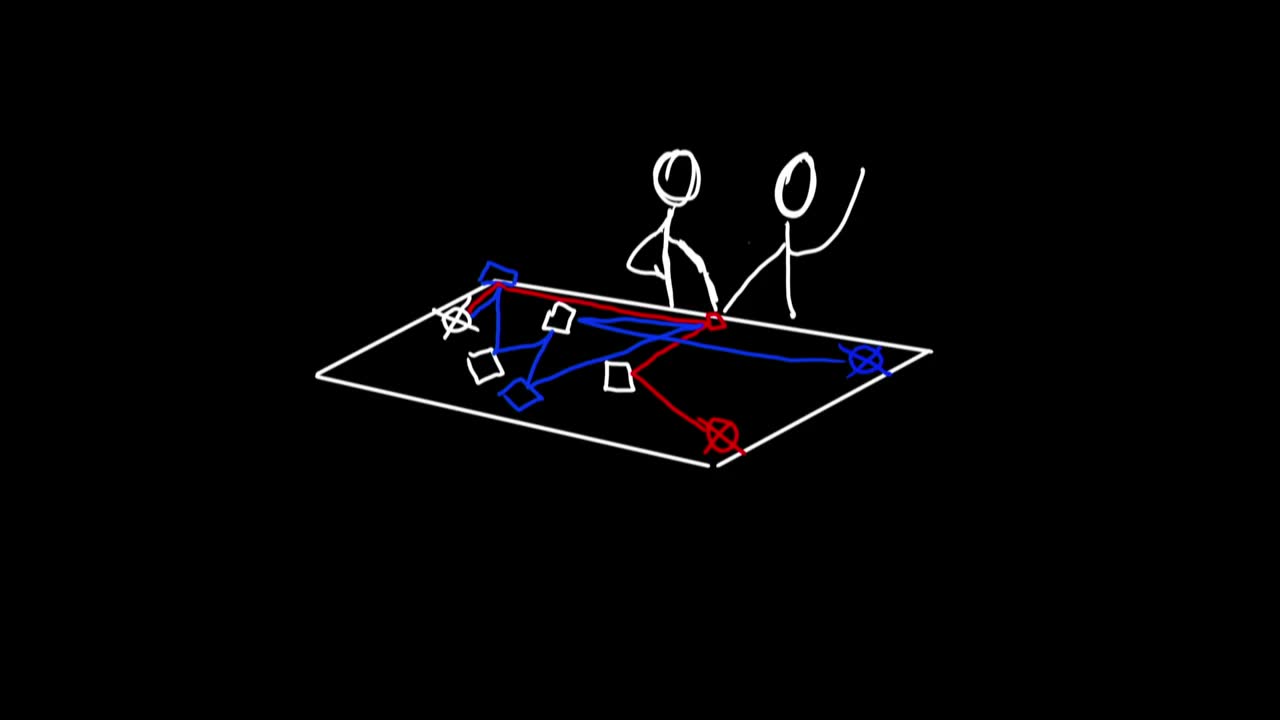
It became like playing with LEGOs instead of playing FIFA, rethinking and remapping, really getting to use our imaginations, and it was so much fun that we forgot to document it, meaning that you all are stuck with these silly drawings.
Superfluid
This is, of course, not to say that there isn't a place for FIFA in Dynamicland. The crystallized instances are allowed and encouraged to exist.
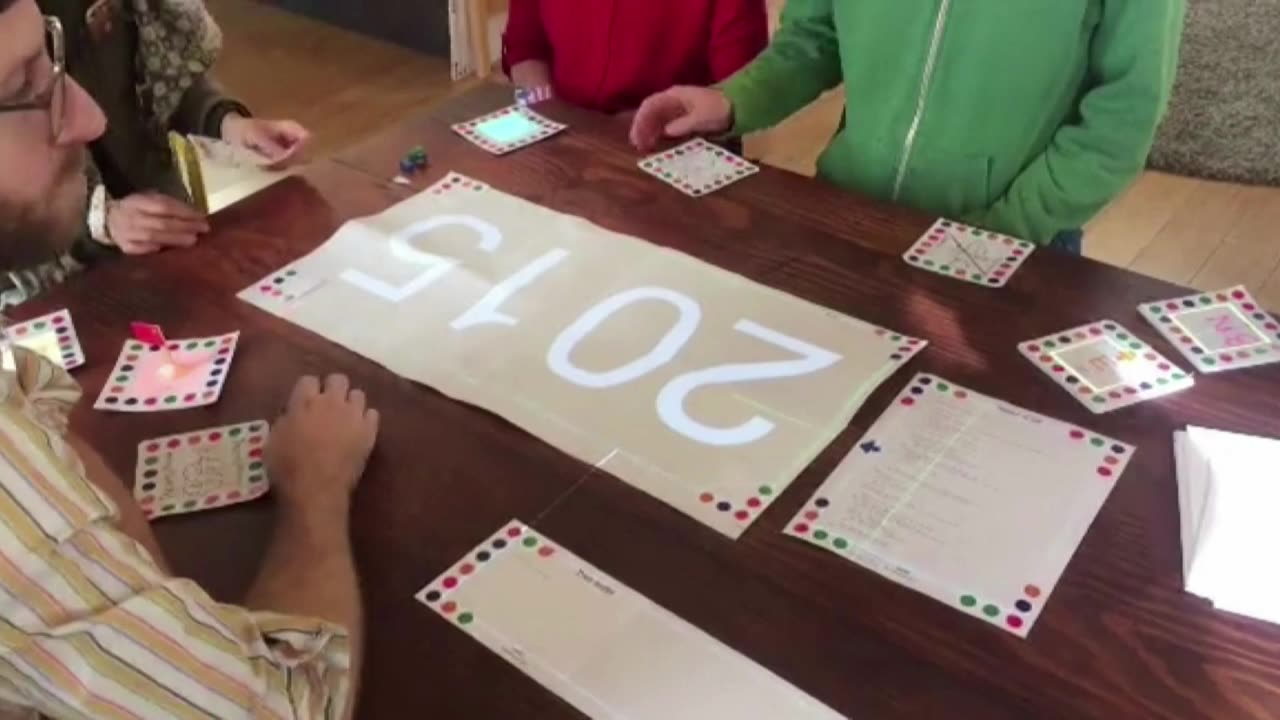
Josh's Gapminder kit, for example, is extremely polished. It's a dynamic graph in the spirit of Hans Rosling, where you can take these different types of data and plot them against each other. [more]
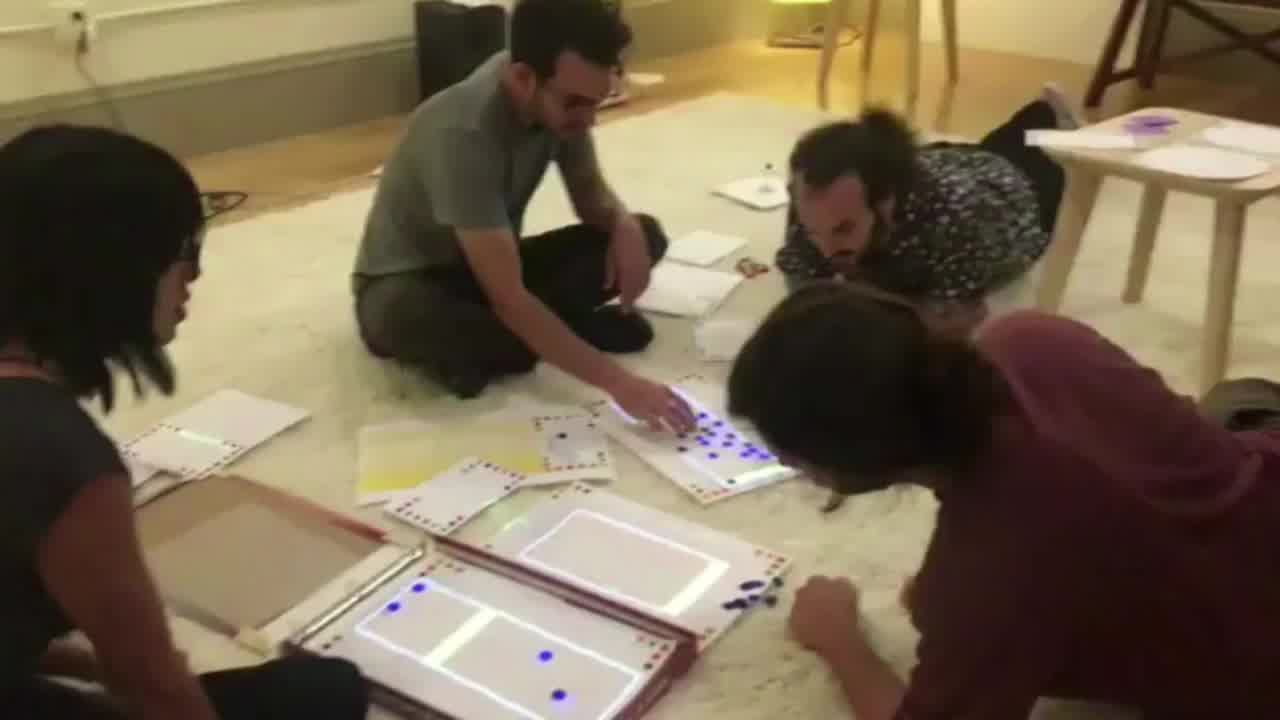
Paula and Co.'s Beats of the World even has its own box and pieces that it comes with. [more]
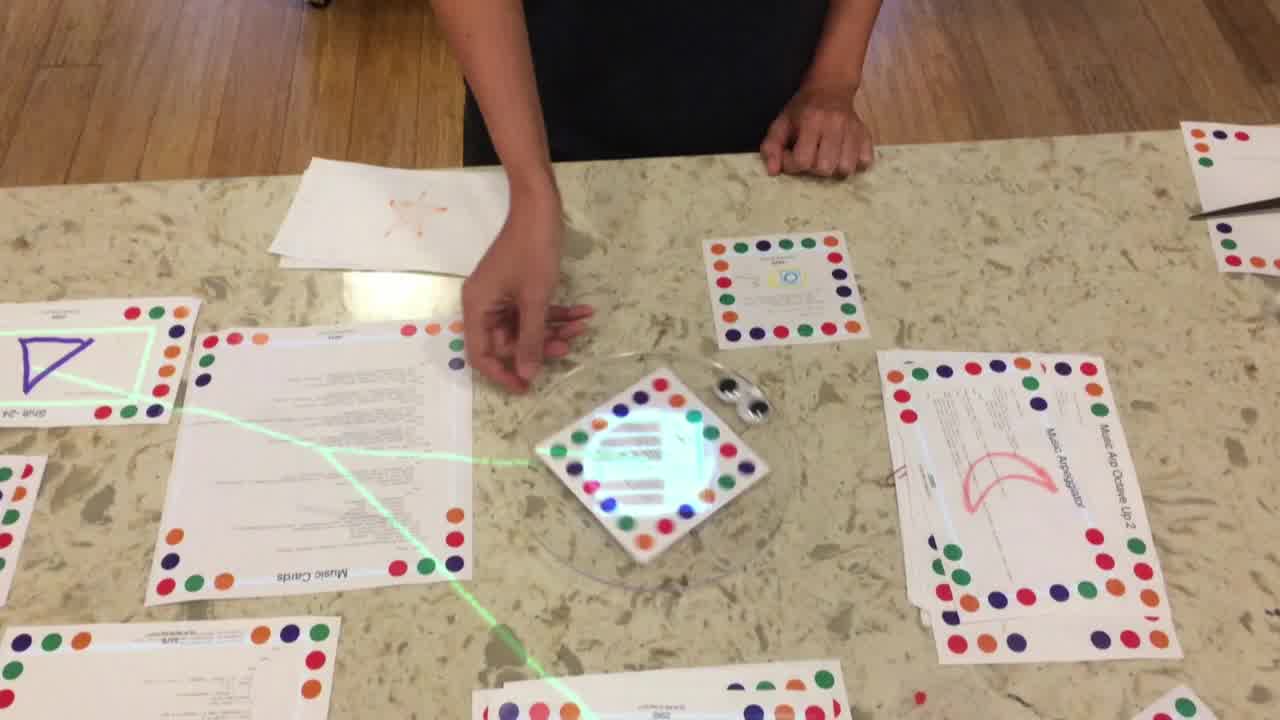
But even Beats of the World and Gapminder still don't exist as singular objects, but are part of a larger system, used to create new objects, recrystallizing into new orientations and forms.
Beats of the World, for example, has a metronome. And just as somebody wrote on that card that said, "get pitch from dial" to change the tone of the music cards, somebody else wrote a card that said, "use tempo from Beats of the World". [more]
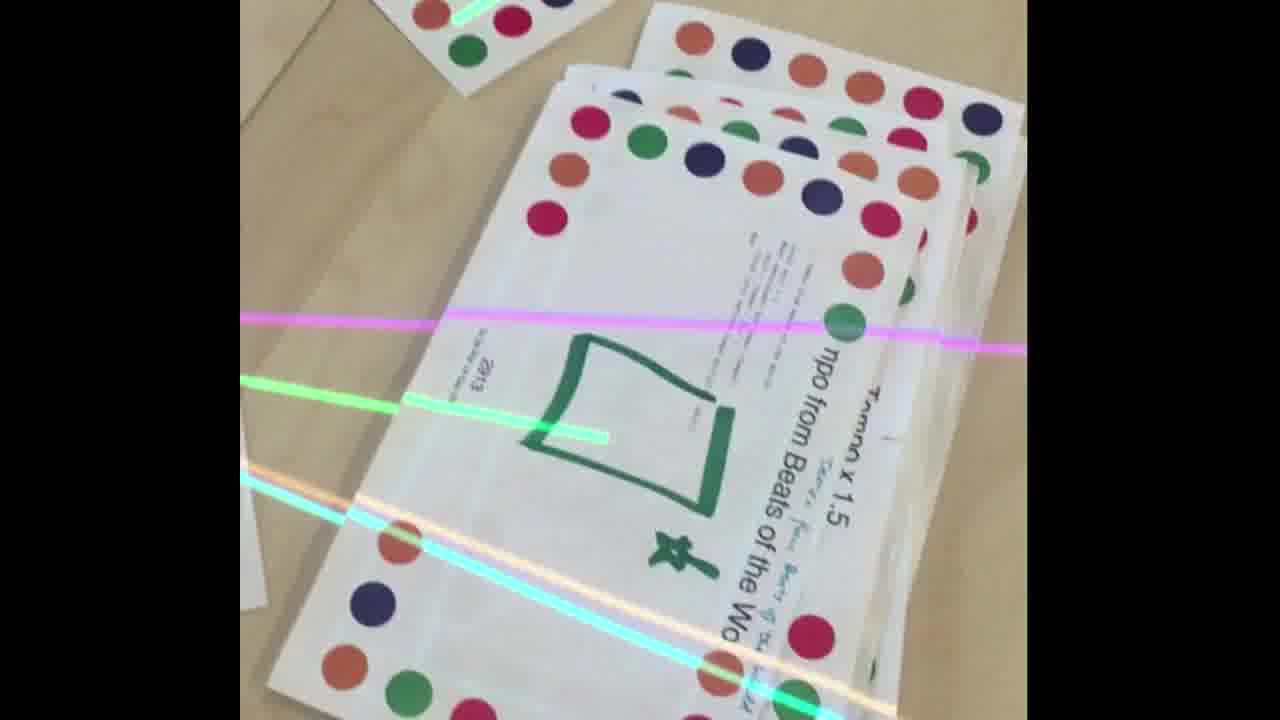
I know that says, "mpo from Beats of the Wo", but the little blue handwriting actually does say, "Tempo from Beats of the World", I promise.
And sure enough, the tools made for Beats of the World became part of this larger system.
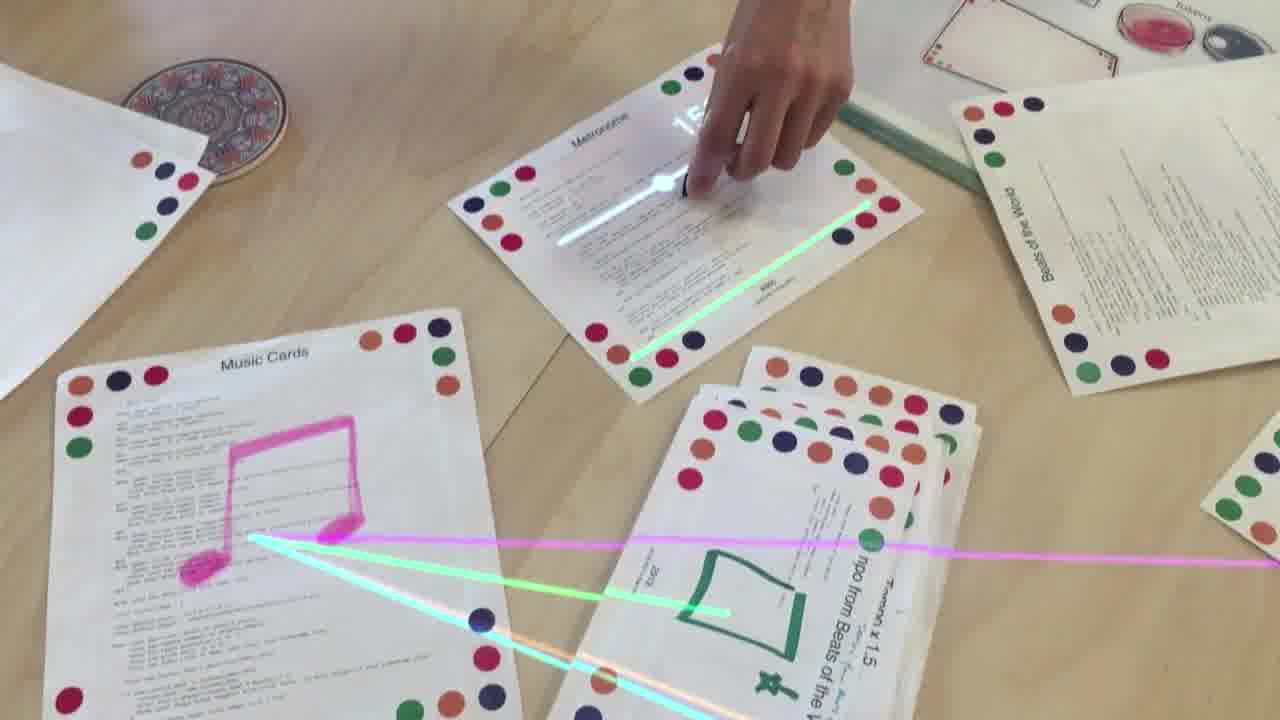
So that metronome up there, originally was for Beats of the World. Now, it's also for music cards. [more]
This sort of riffing, this creation of a ball instead of the rules of soccer, mean that other people can build off of your work.
Someone can make a bat, someone else totally separately can make a ball, and someone else, also totally separately, can make baseball. They can take the super-saturated fluid of tools, creations, and information, and crystallize them into specific instances.
It's a percolating place that allows for ideas to freely live and freely die, where code can be a hobby instead of a vocation, something that brings meaning instead of money. It's a place where happy accidents can exist.
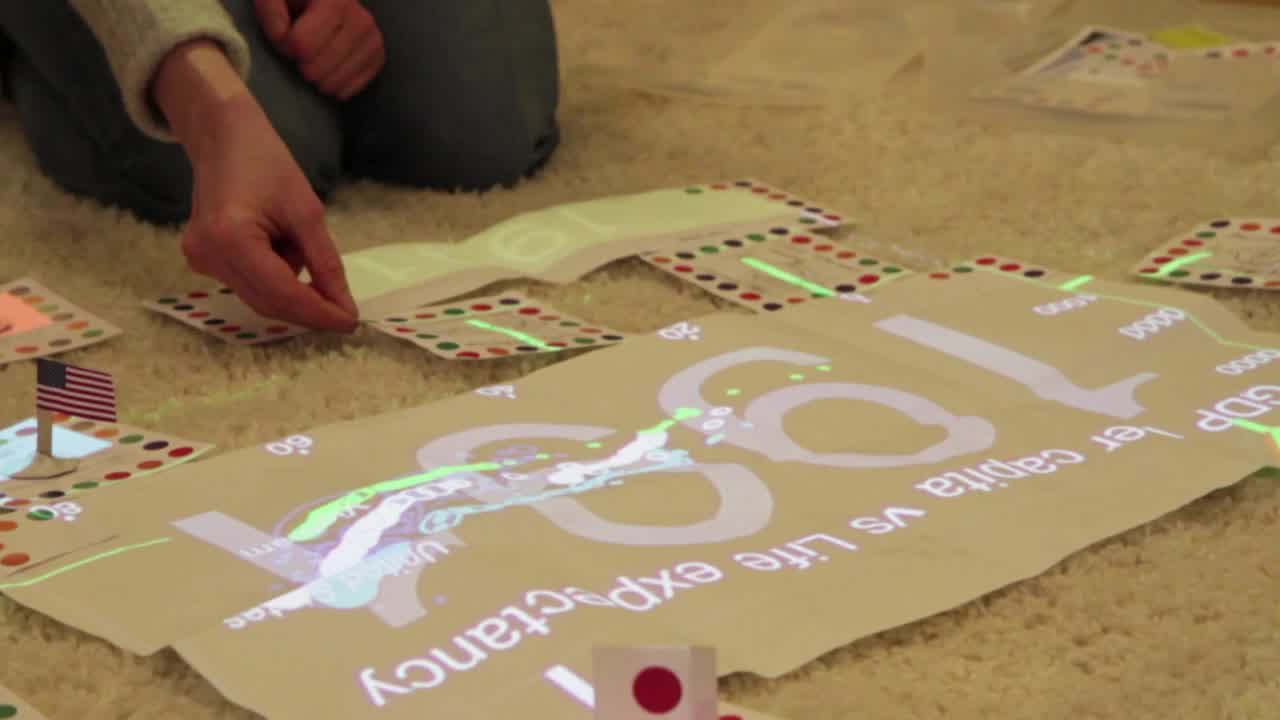
It's this place where you can contribute to that computational, physical, and societal superfluid,
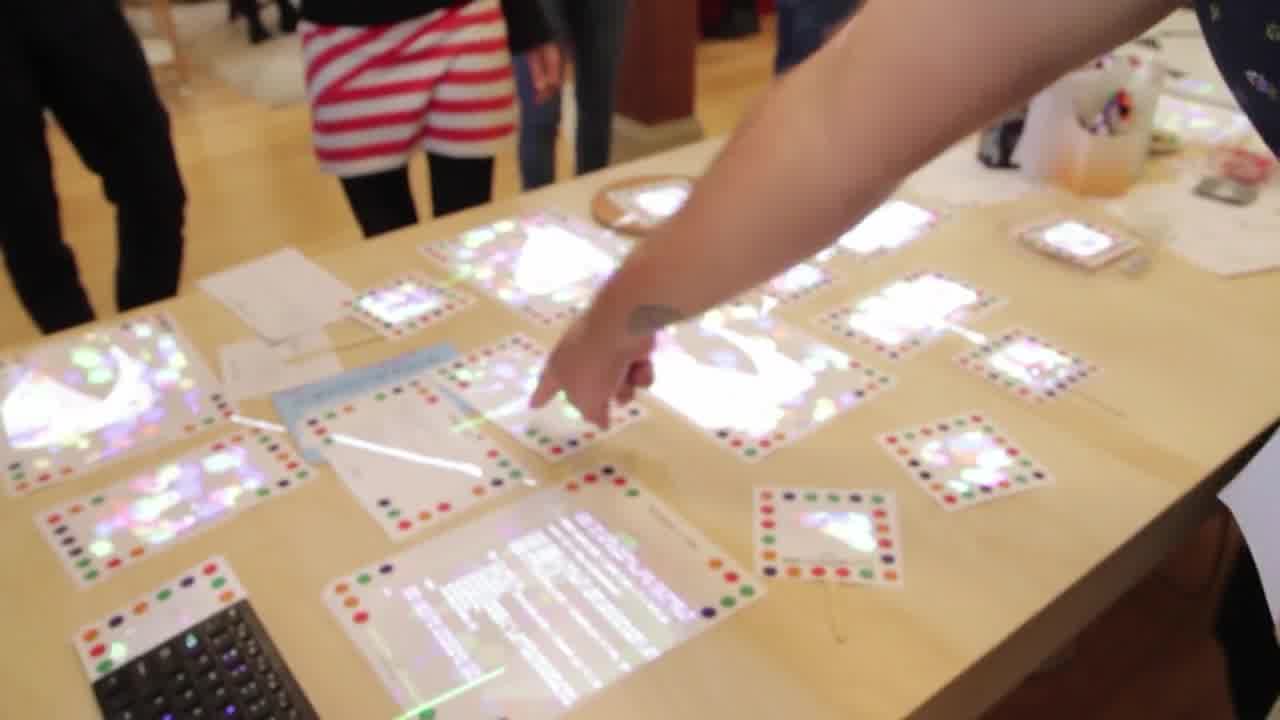
where every table you sit at has so much information,

so many different tools and toys,
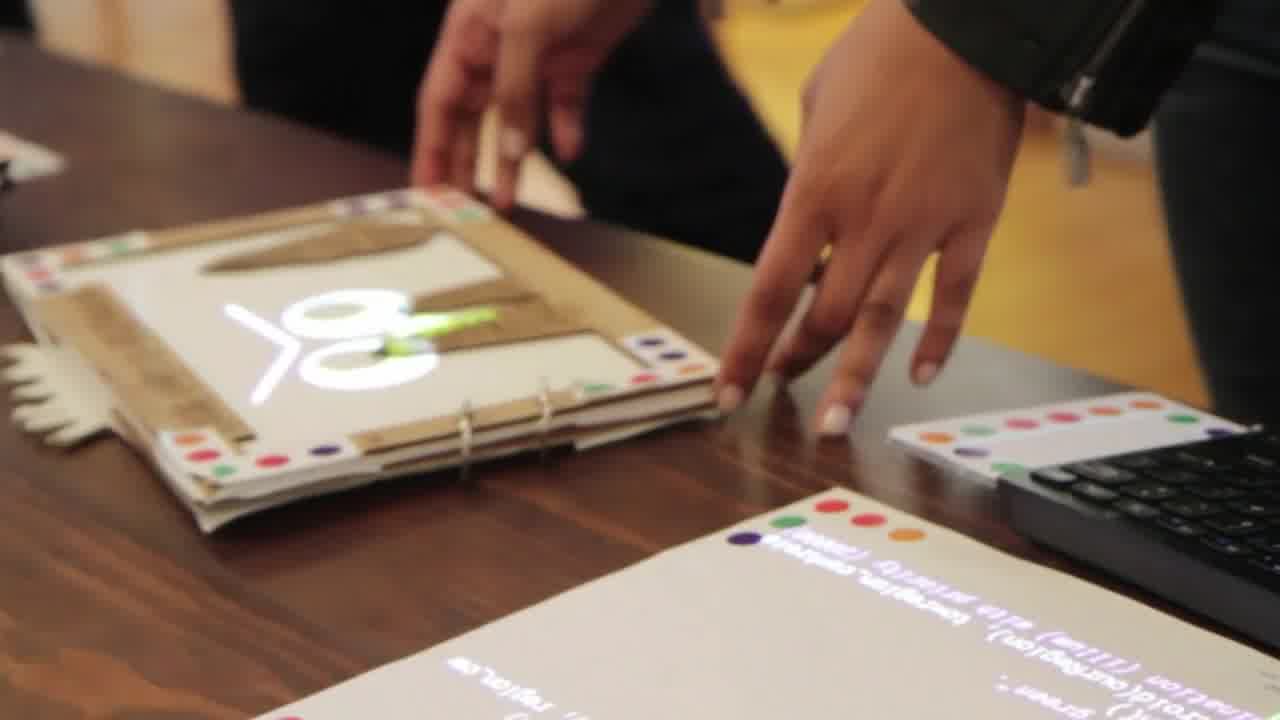
that you can't help but play, that you can't help but ask "what if",
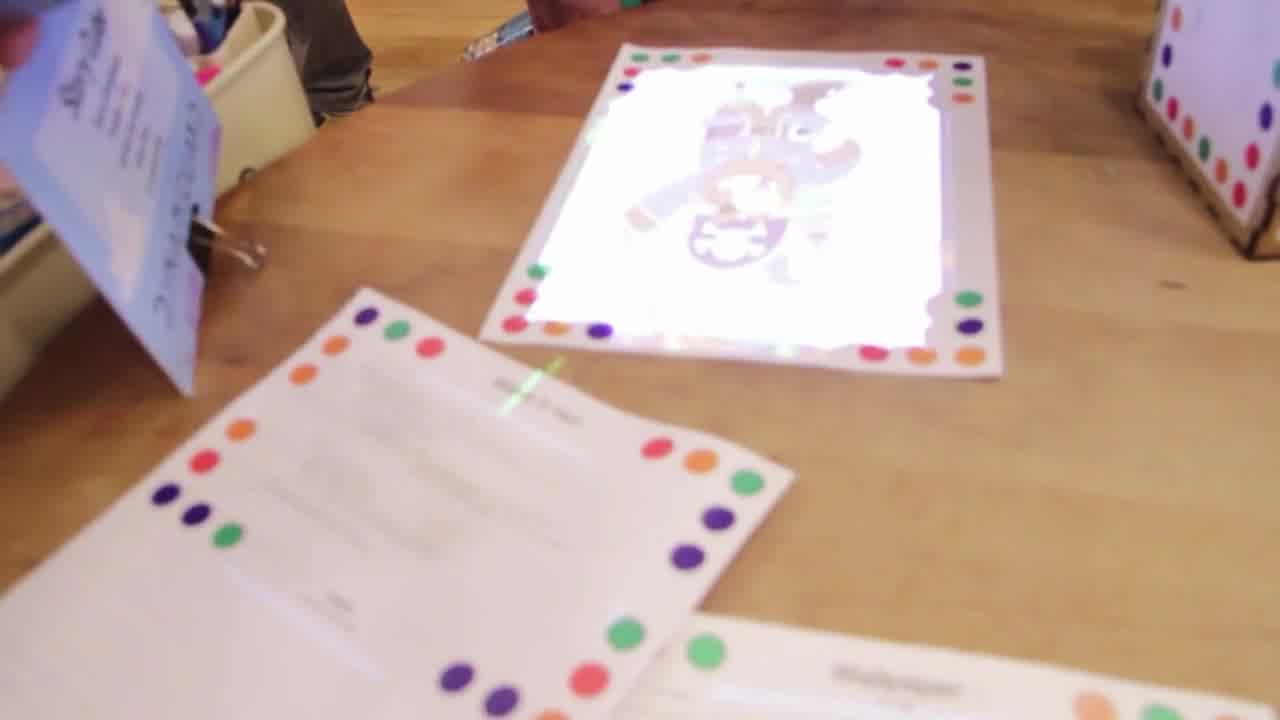
and exercise your imagination.
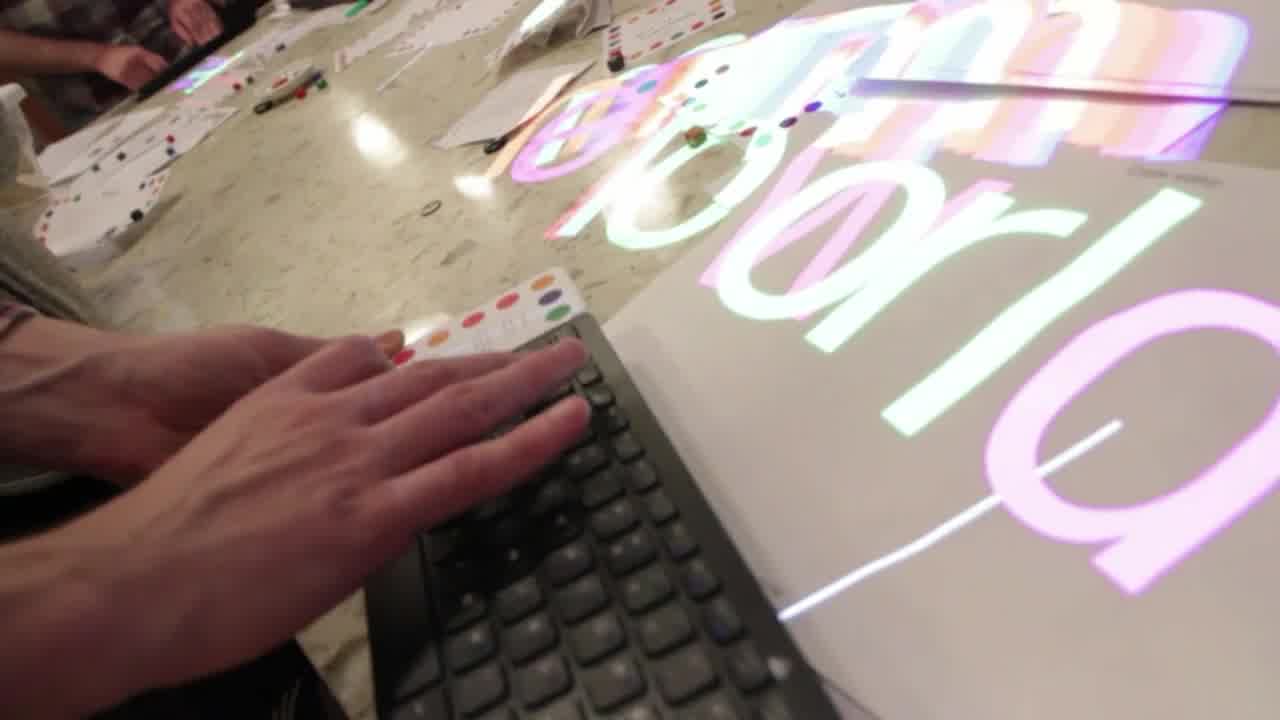
And this isn't something that you have to plan in advance, it's a property of the system itself.
That "rain this color" that I showed you all at the very beginning, Bret wrote a follow-up tweet about it, which said, [more]
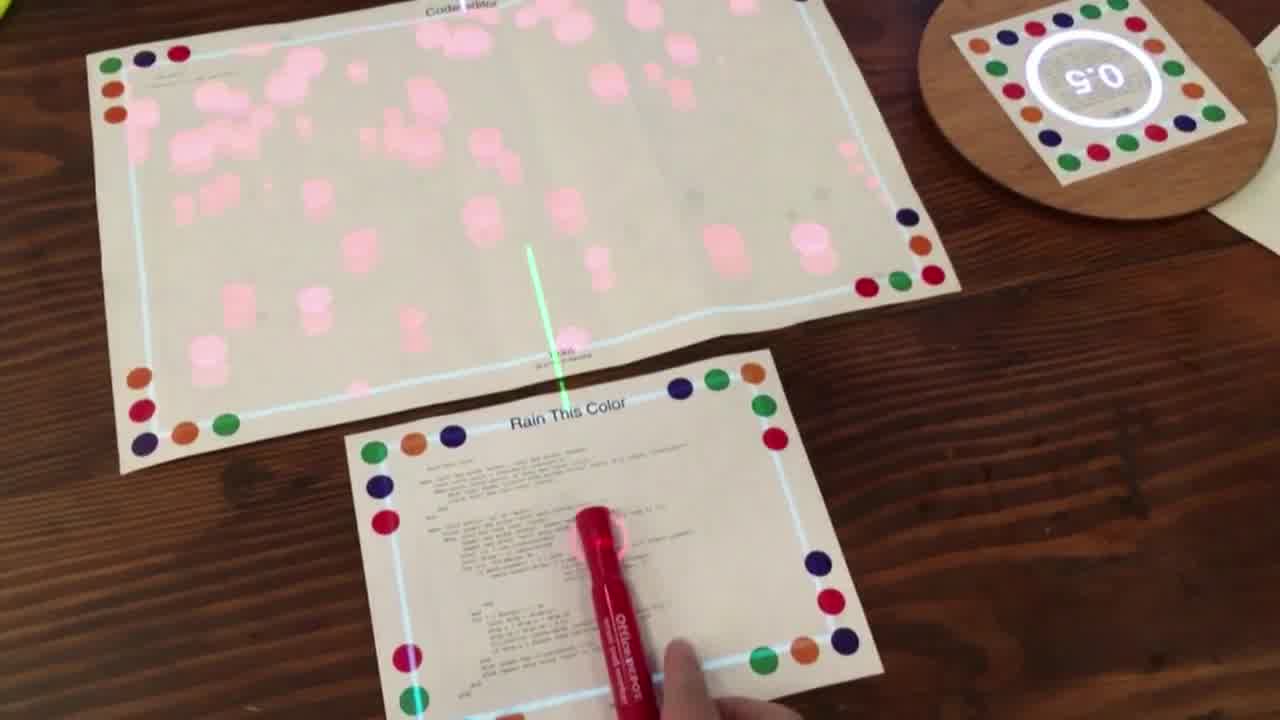
"harder to capture in a tweet -- this came out of @itshunkydory (that's Paula) and me casually taking turns messing around with "make it rain" while chatting with Margaret and Cynthia around the lunch table. it's a doodle."
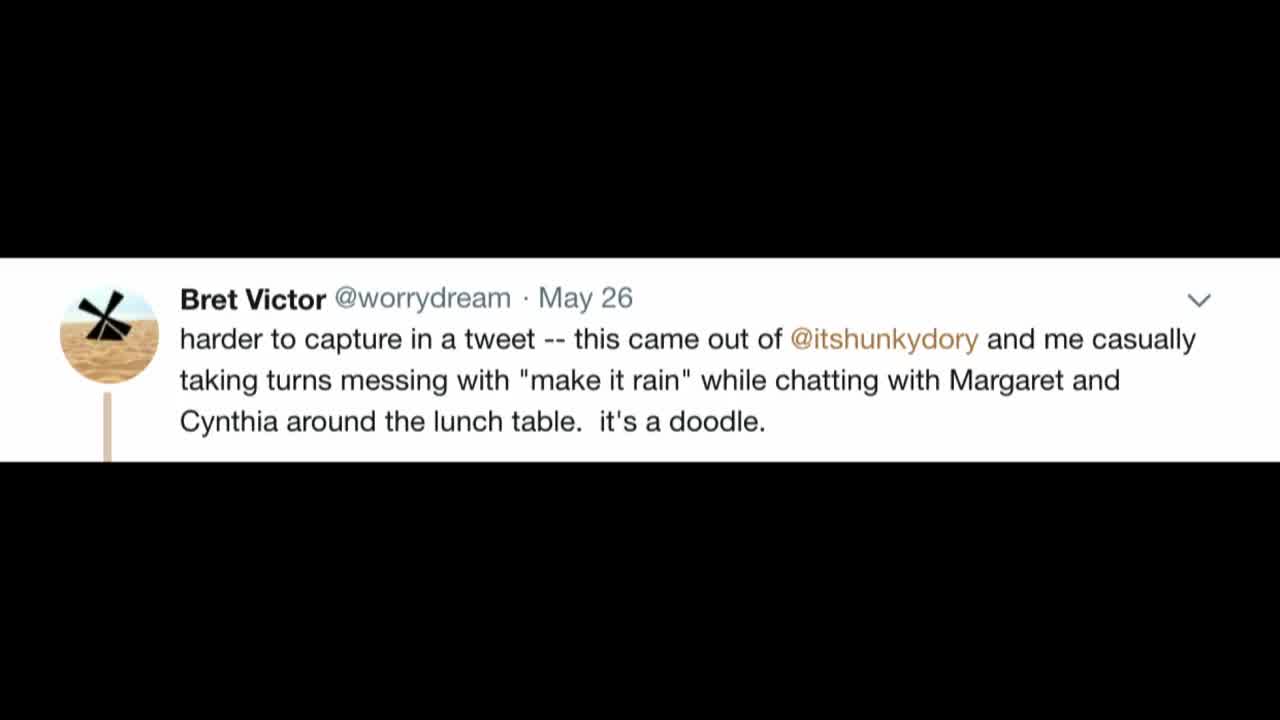
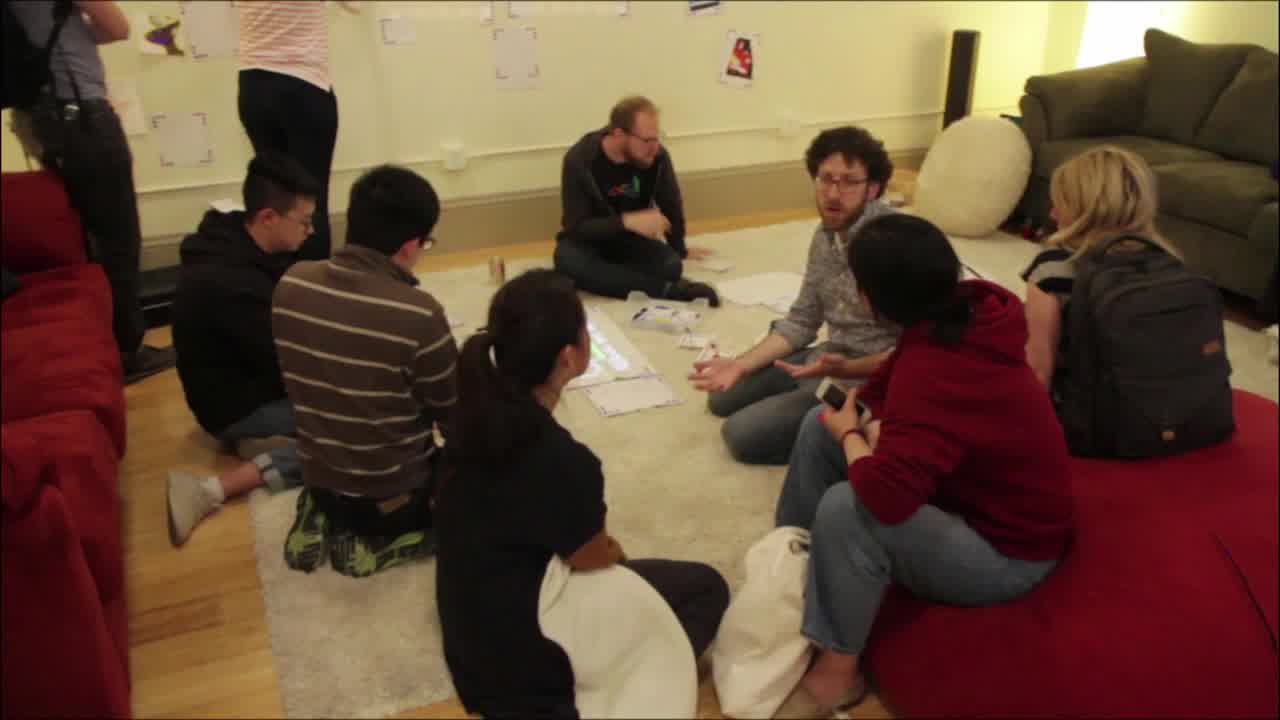
This doodling, riffing, playing, feels like it's in direct contradiction with the "I only want to make crystallized masterpieces" of most computation. This place is about the smorgasbord of thought and ideas. It's messy, it's strange, but it feels humane and playful.
It's hard to express this. Somehow our world of code has become so cynical that making a space which explicitly allows you to be a human, to make friends, to feel like we belong, doesn't feel like it should exist within our hyper-capitalist, hyper-efficient clusterfuck of a society.
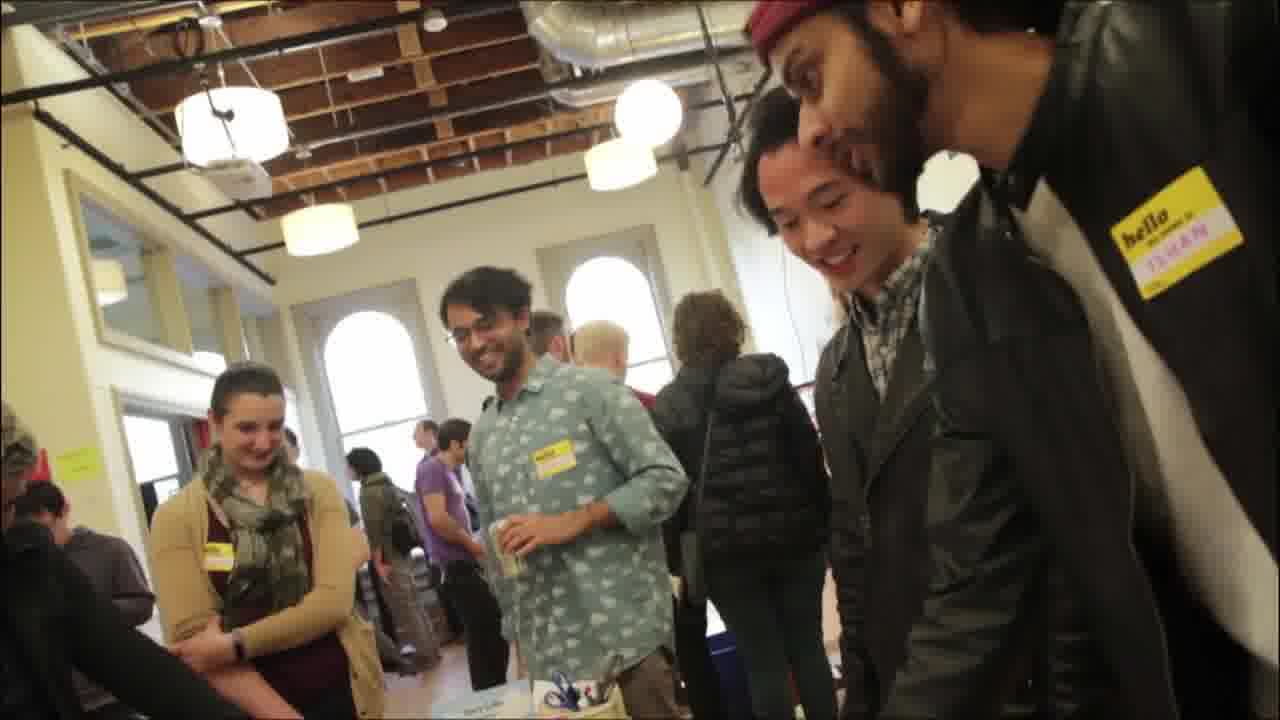
But at Dynamicland, I found a place where I feel like I matter.
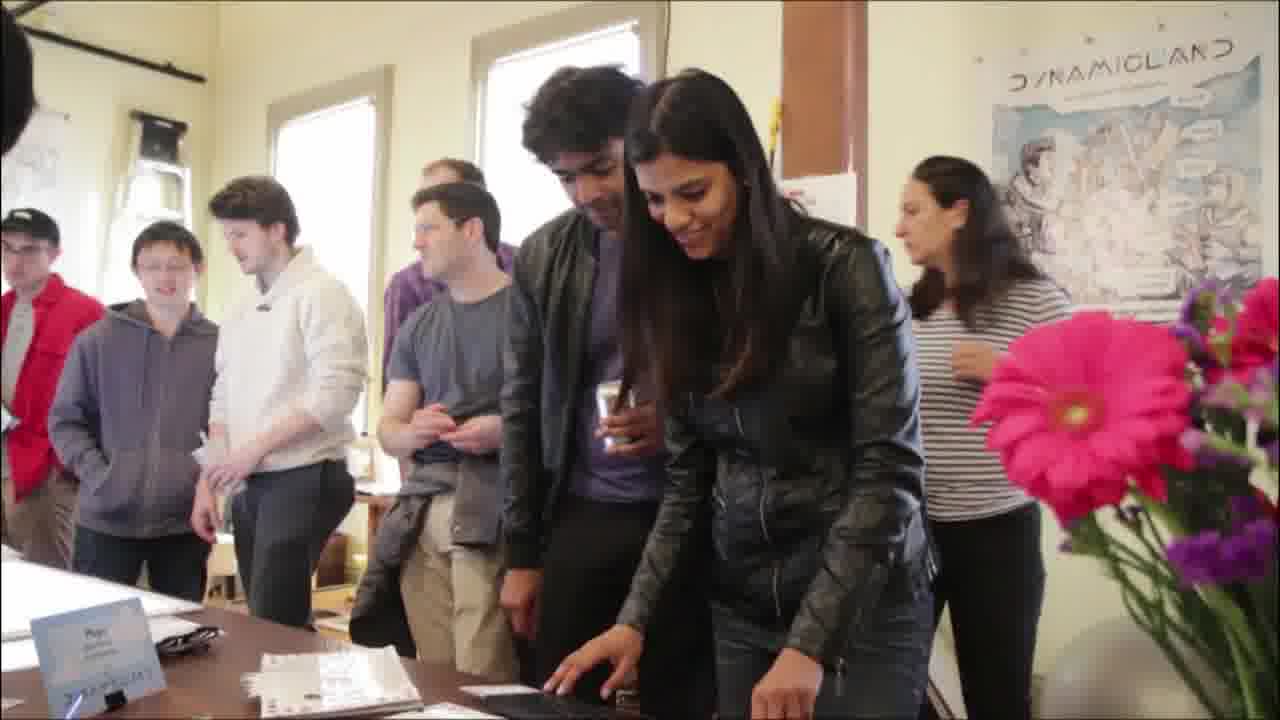
Not a place where my work matters, but a place where I, Isaac Cohen, matter.
Part of me wants to tell you about all the ways in which Dynamicland is the future of computing, about how it will be the new PC, how eventually there will be Dynamicland in every city, how people will have careers in this dynamic medium, how it will revolutionize what we think computation can be, what computers can do.
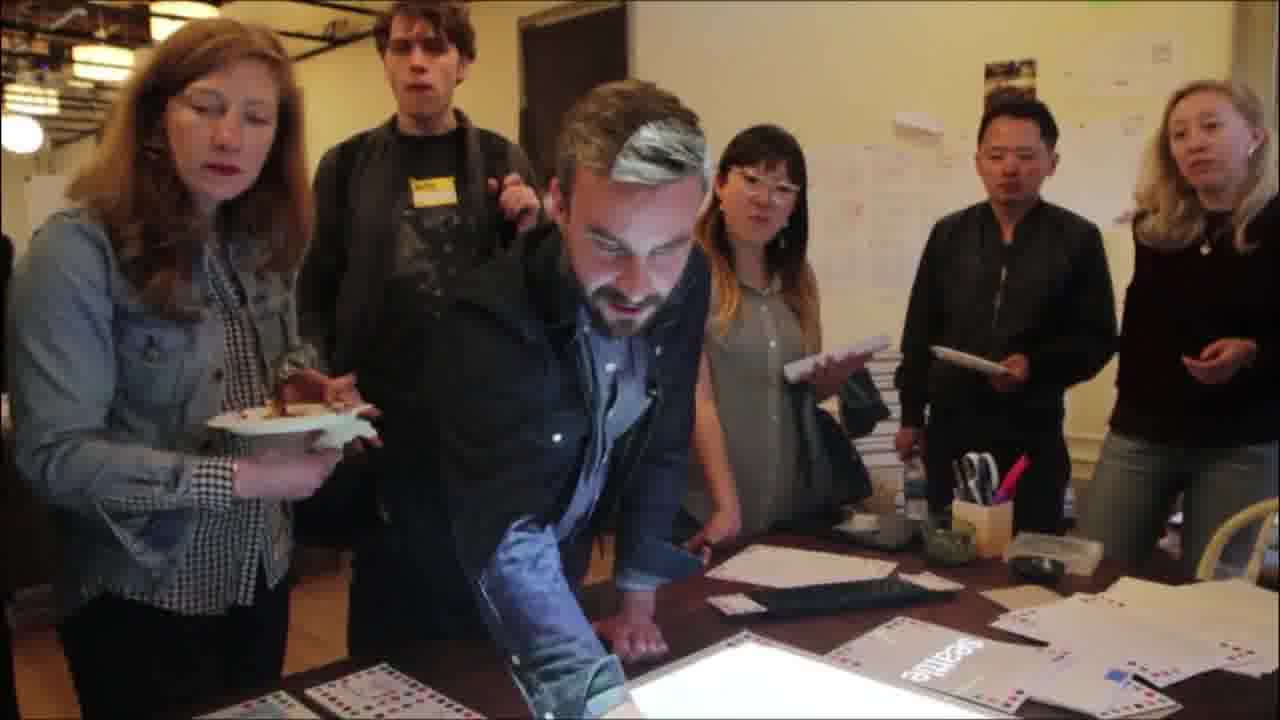
And I believe this will happen. But for me, that's not what's important for right now.
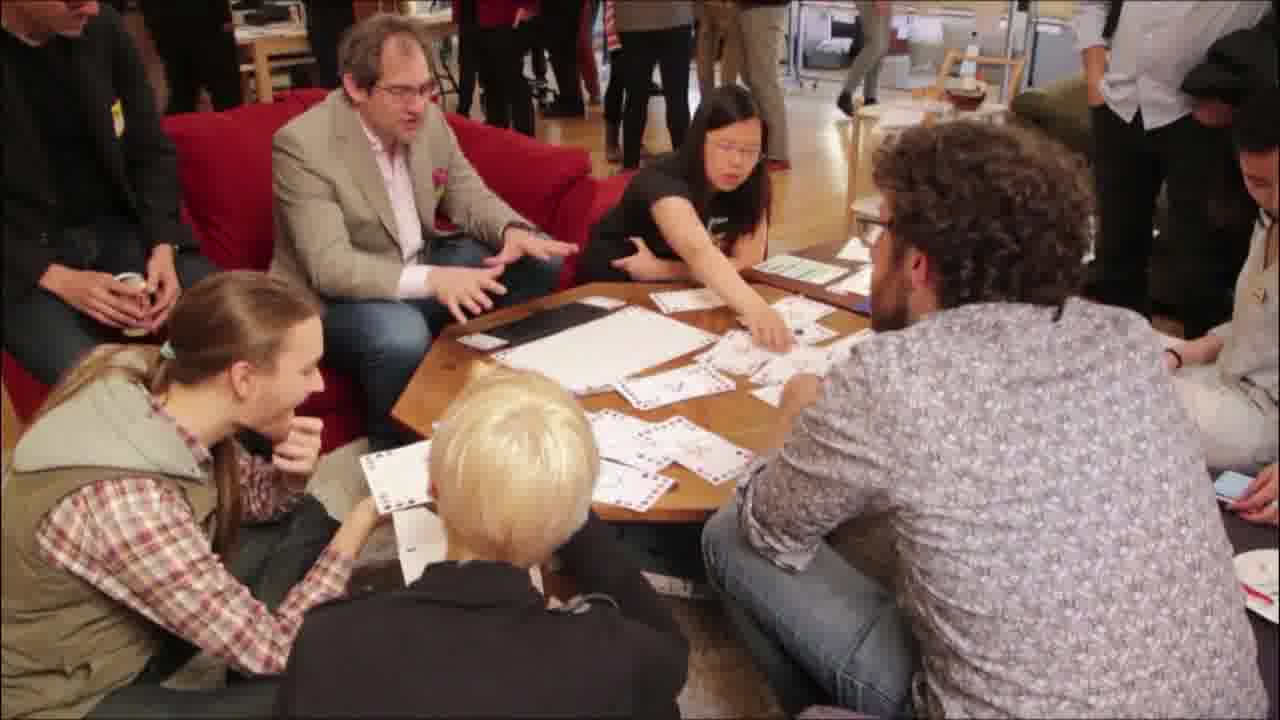
Dynamicland isn't a place for me to pursue a career, the frontier of technology.
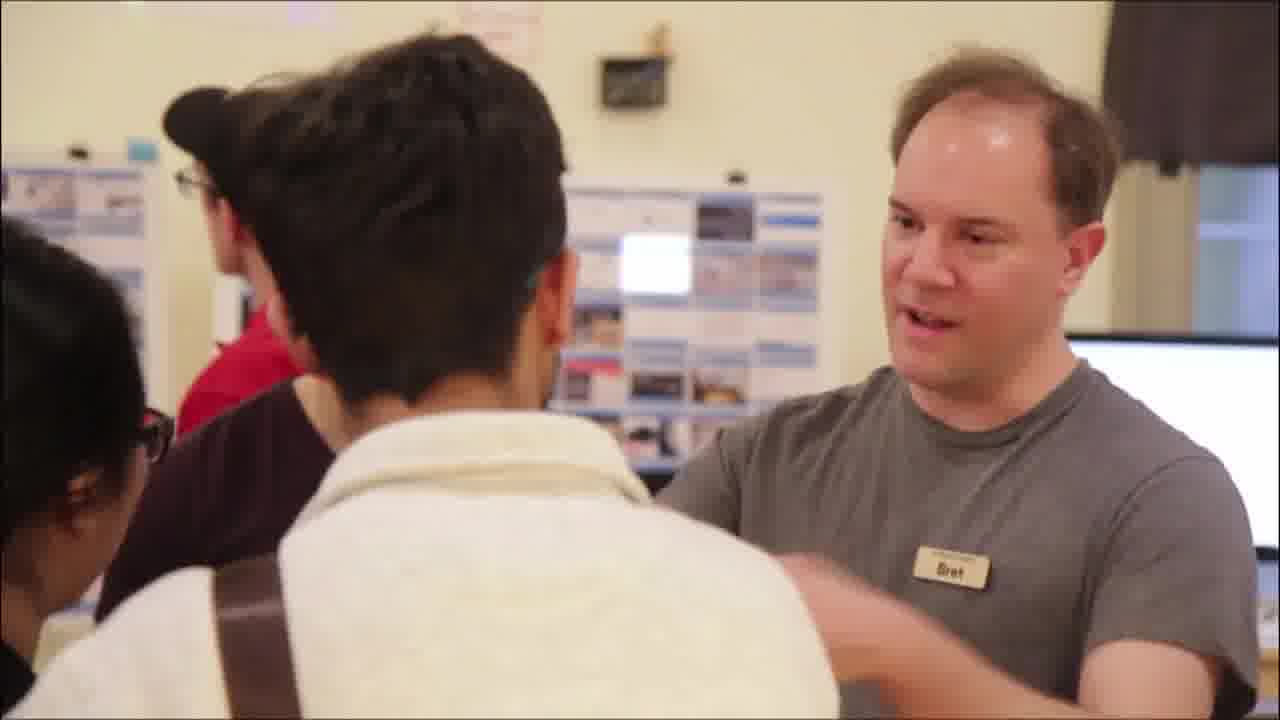
It isn't a place where I'm developing next-gen graphics.
It's a place where I drop marbles on tables, draw faces on jellyfish, learn to solder, grow, play, and explore.
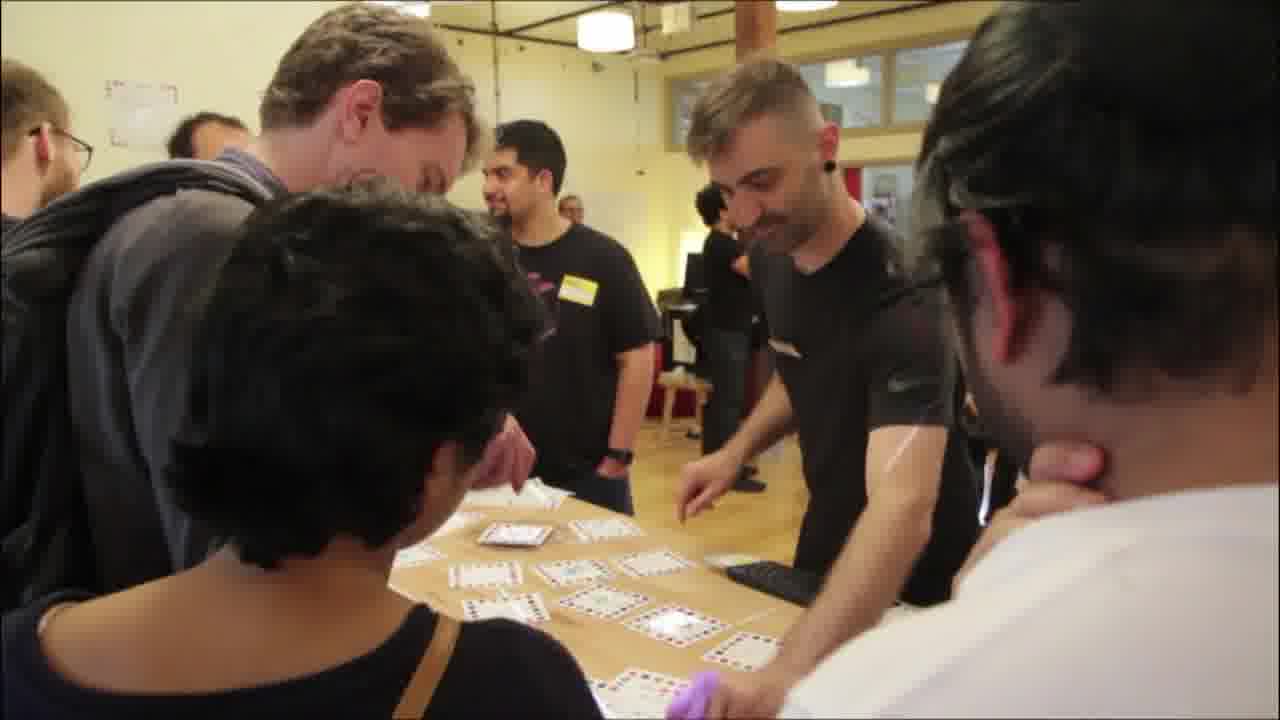
And maybe that actually helps make the pals. It connects you to the people that you're exploring with.
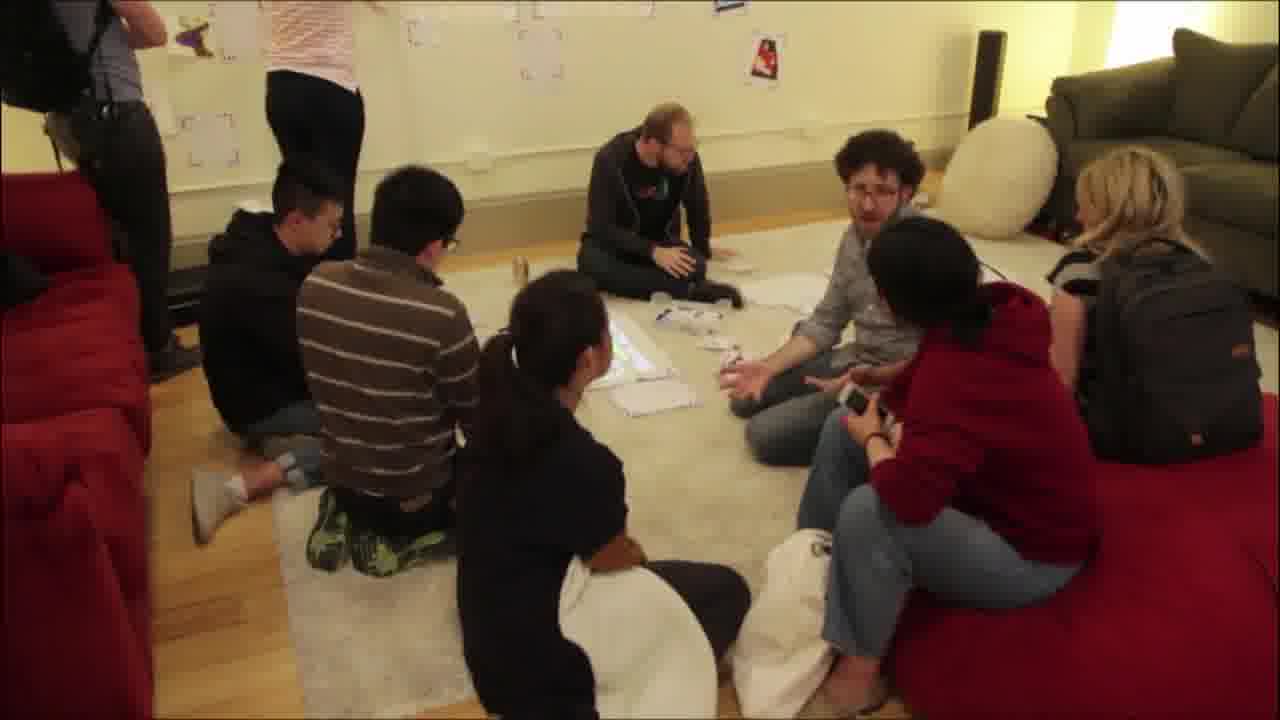
Because in that moment, you both know that you are both witnessing the same dynamic reality. You are watching your imaginations come to life.
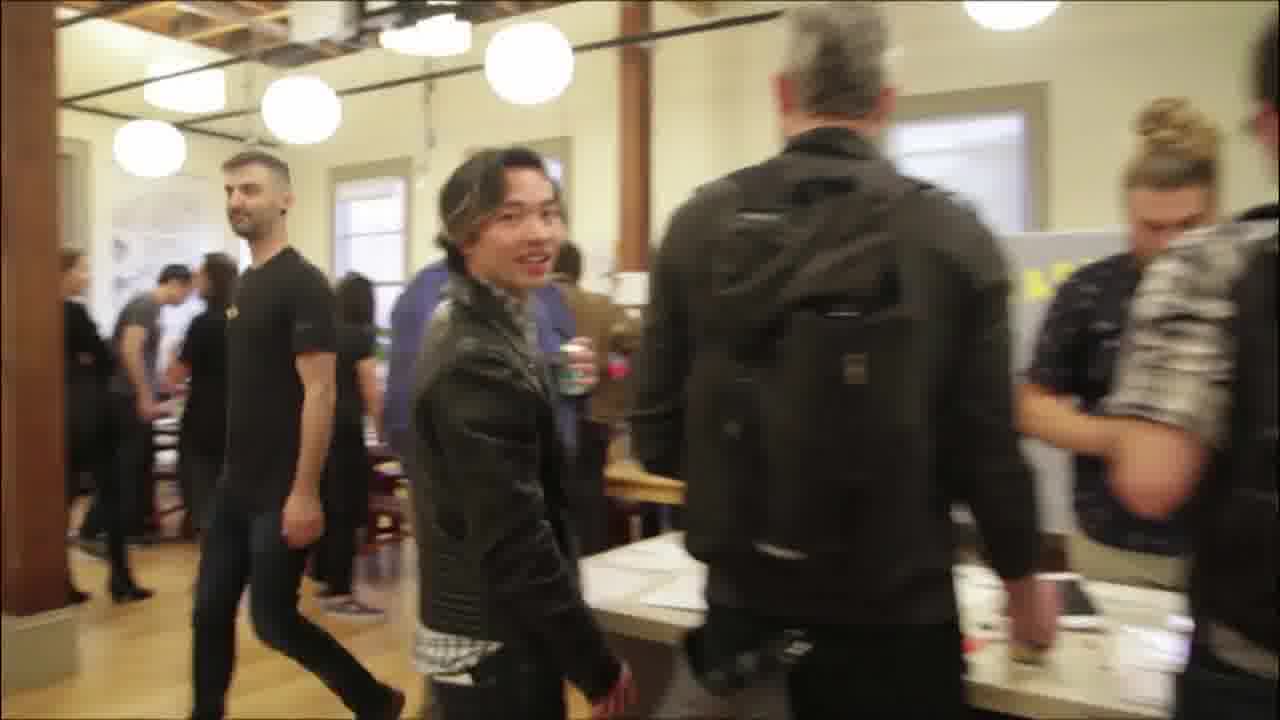
Computation is no longer a focal point, but it becomes a subtle helper, making sure that your wishes are fulfilled.
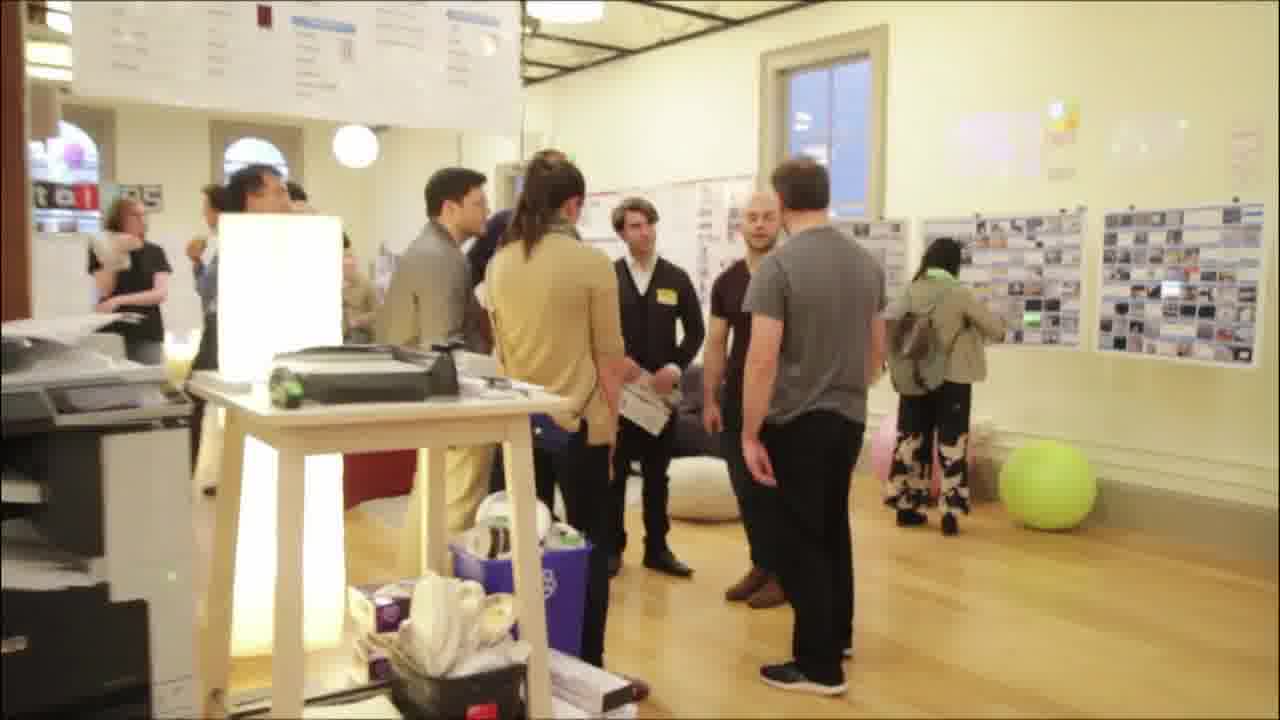
It for sure is a place that is incubating a humane dynamic medium whose full power is accessible to all people. But for me,
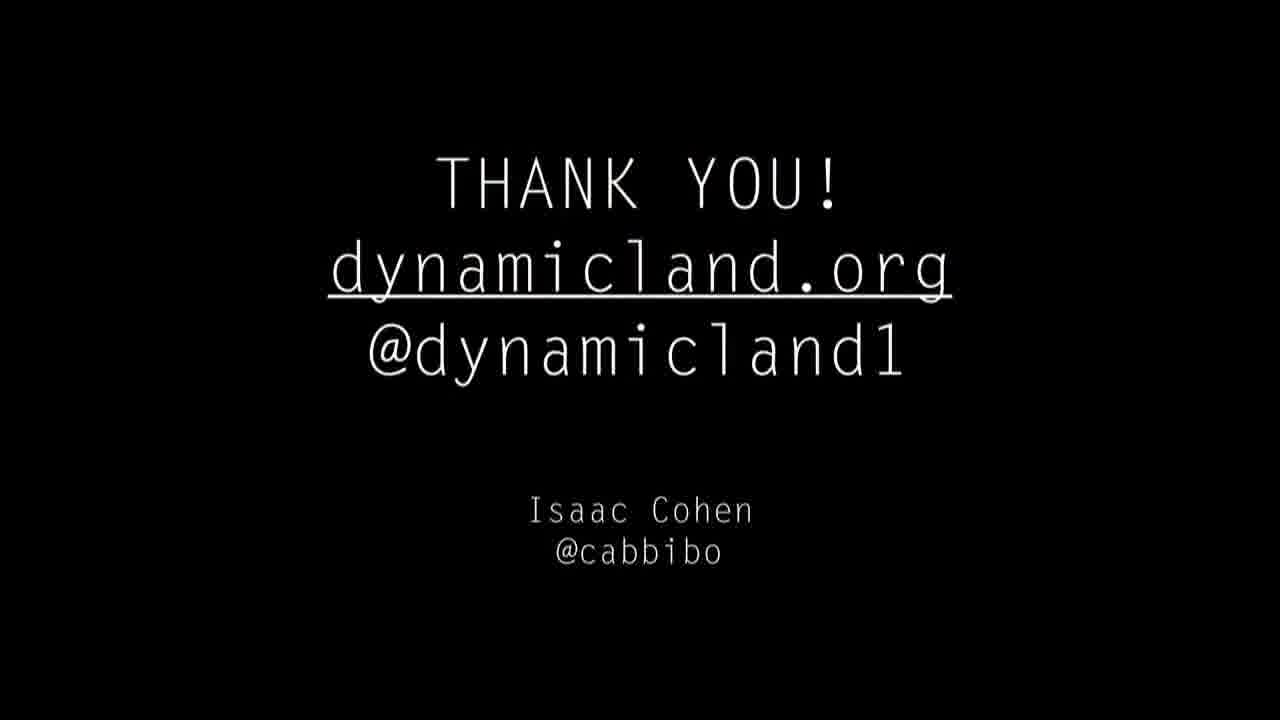
Dynamicland is just a space to hang out with some pals and try to learn about the world a little bit more.
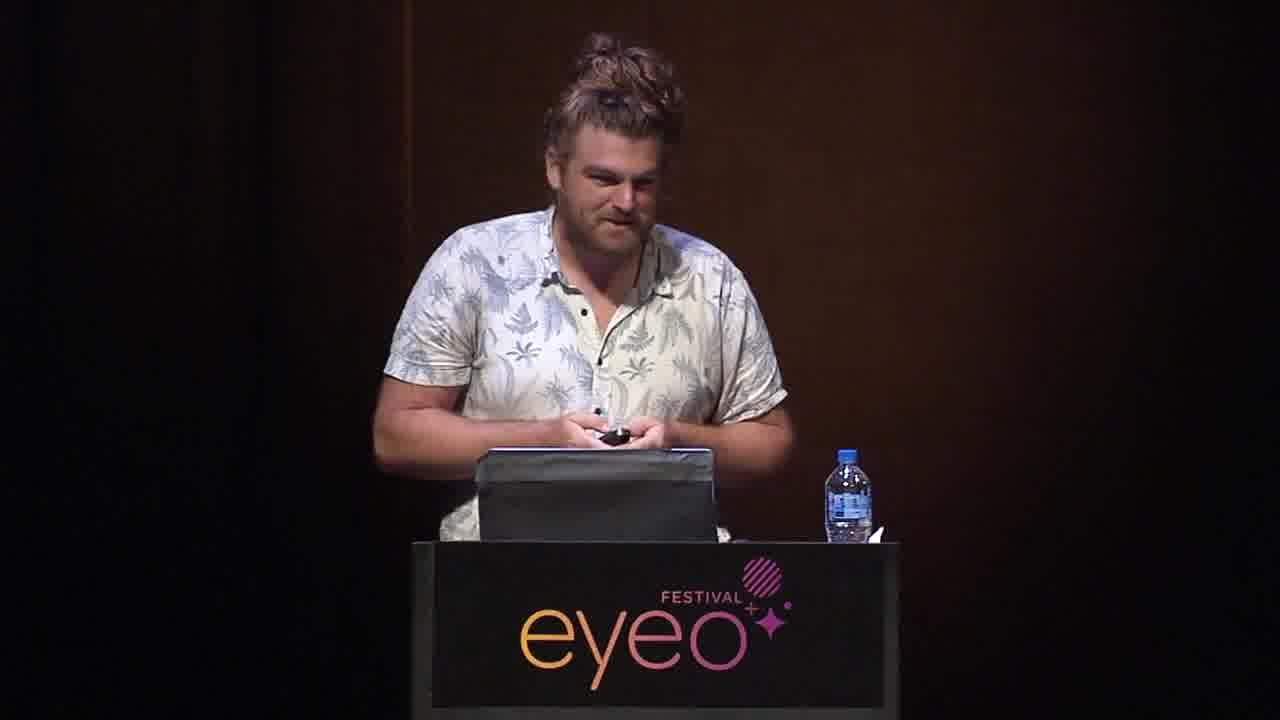
Thank you.